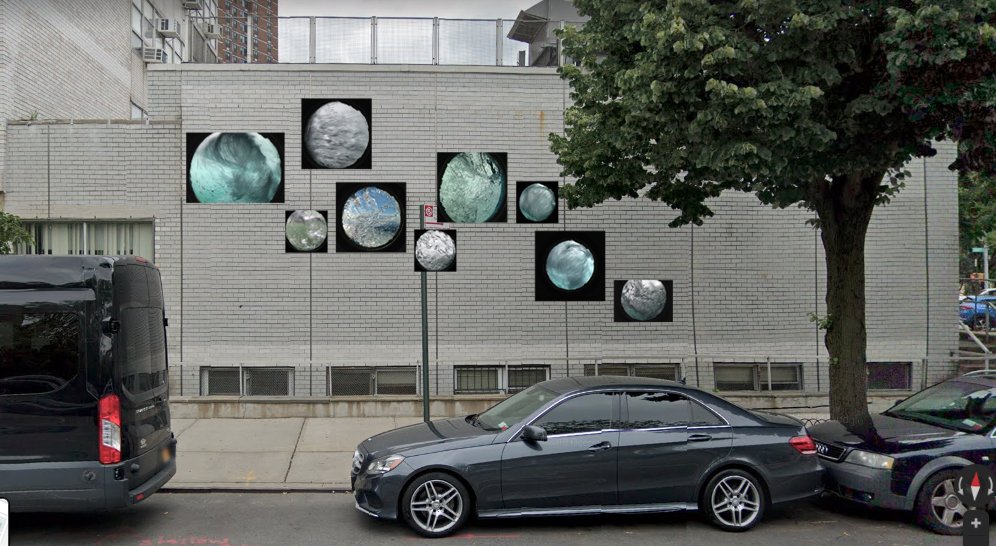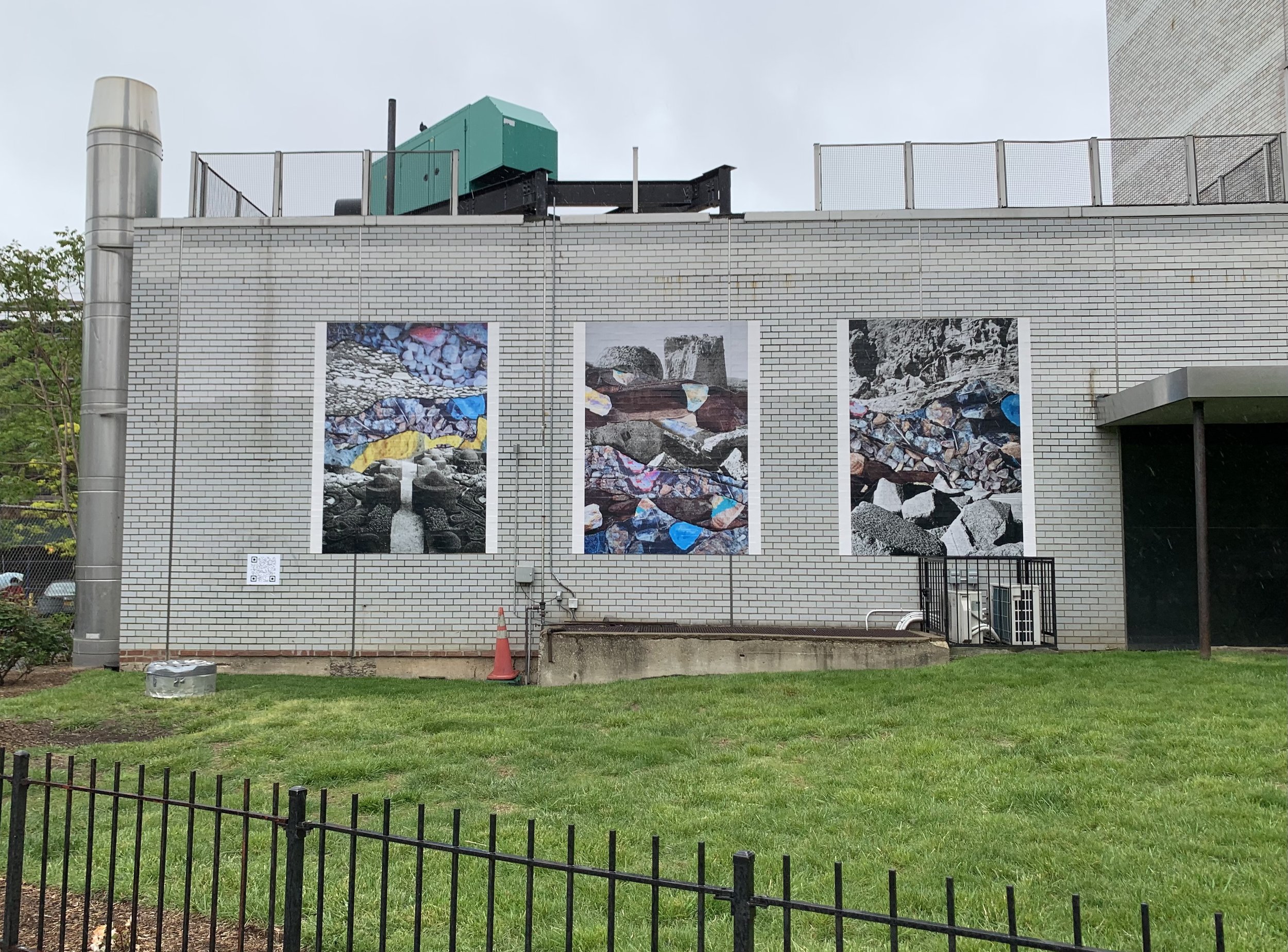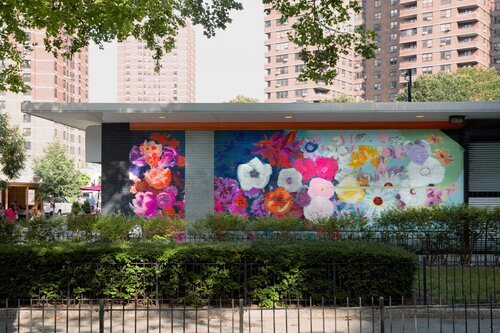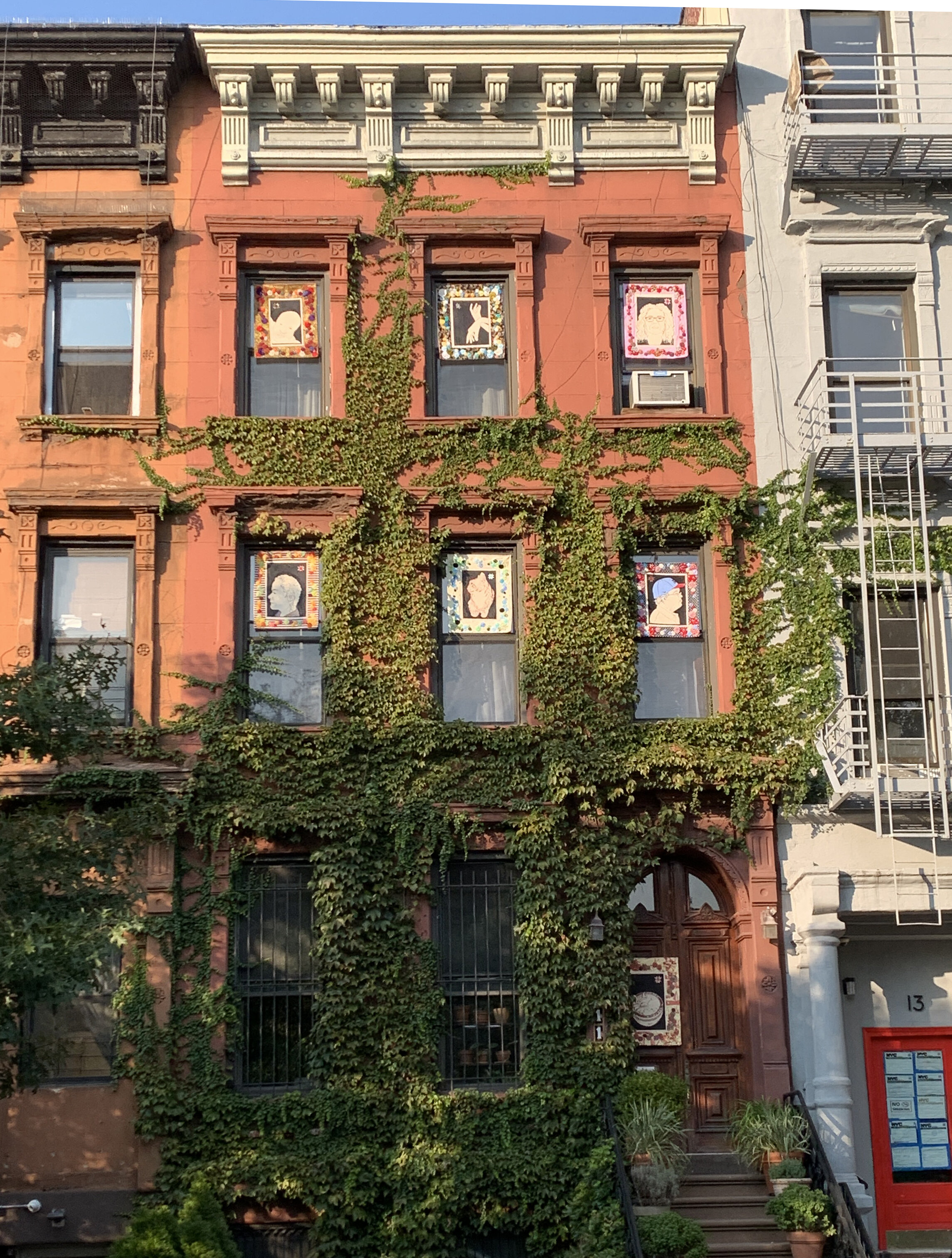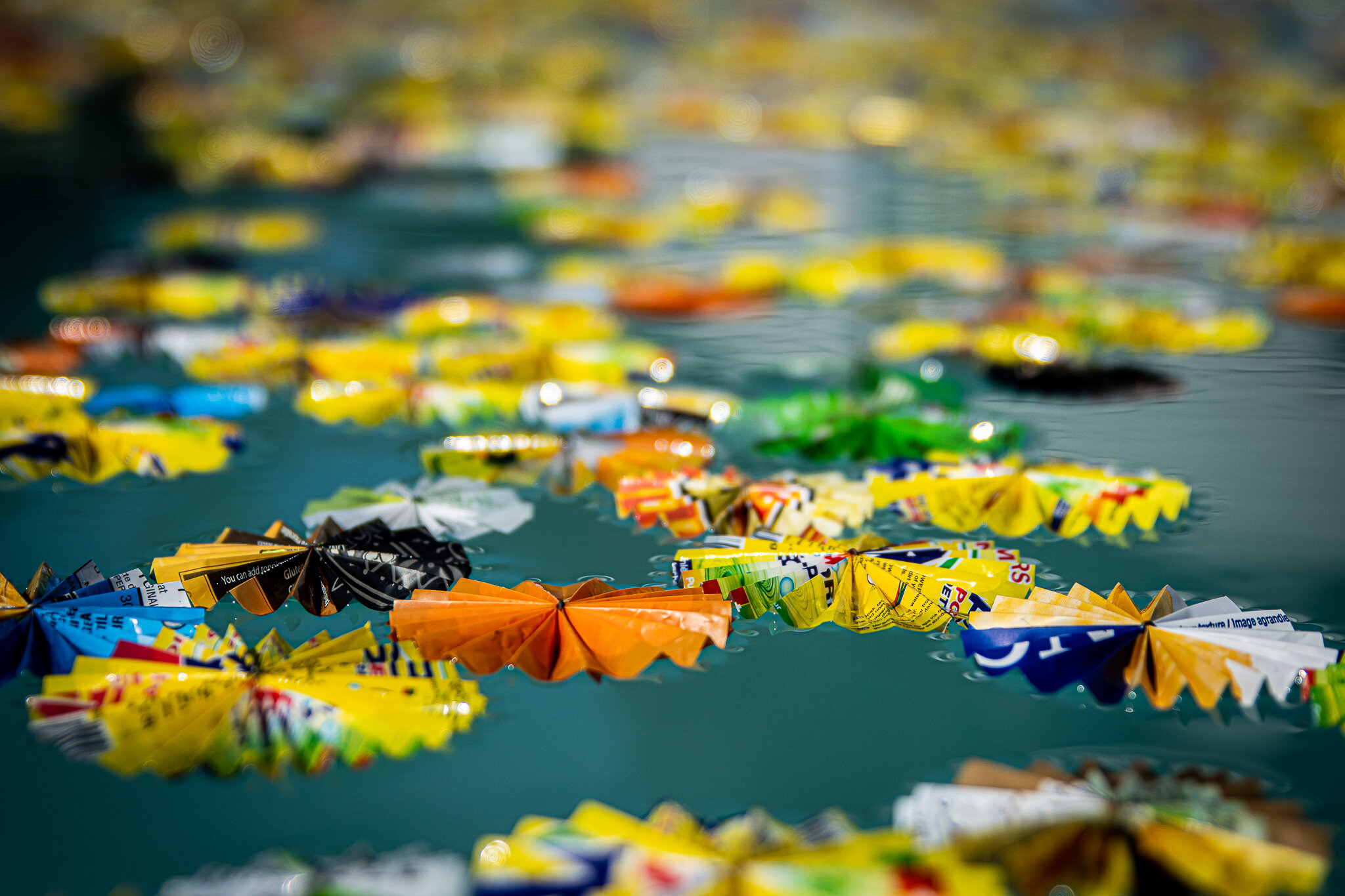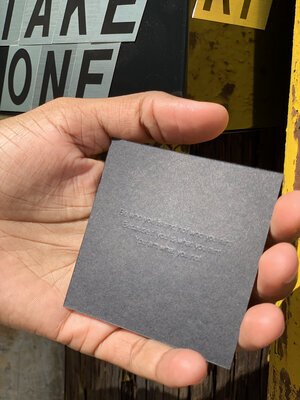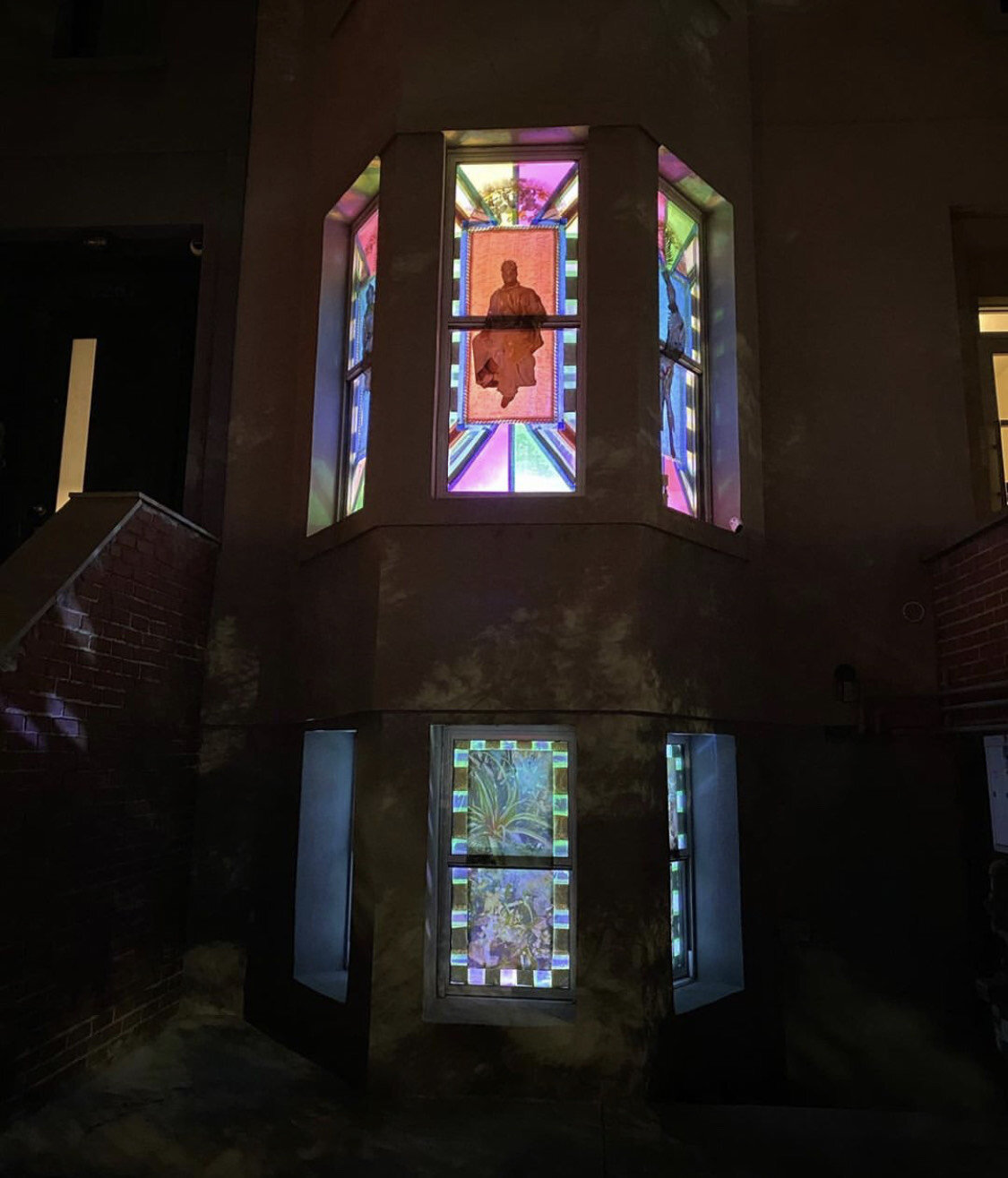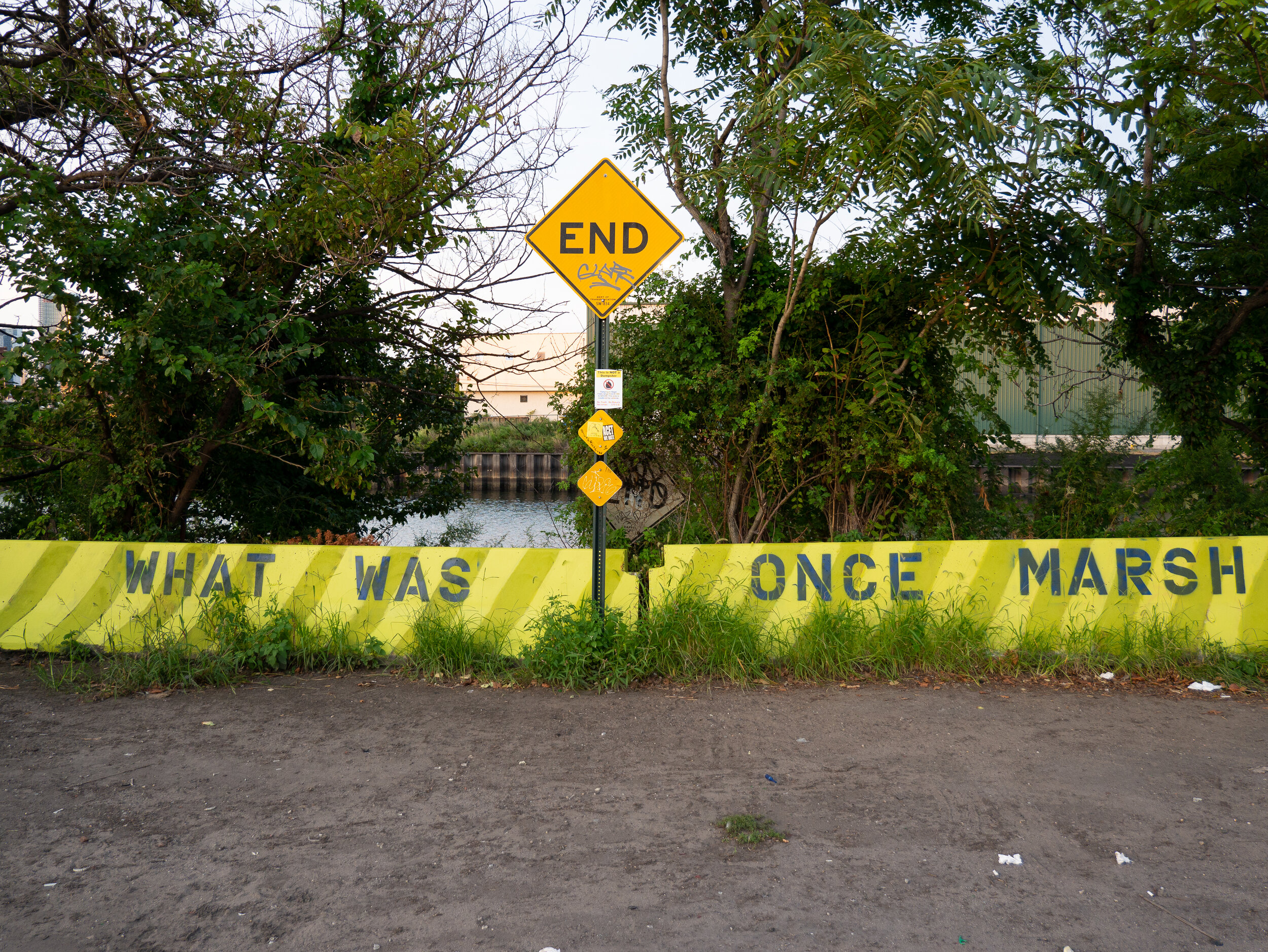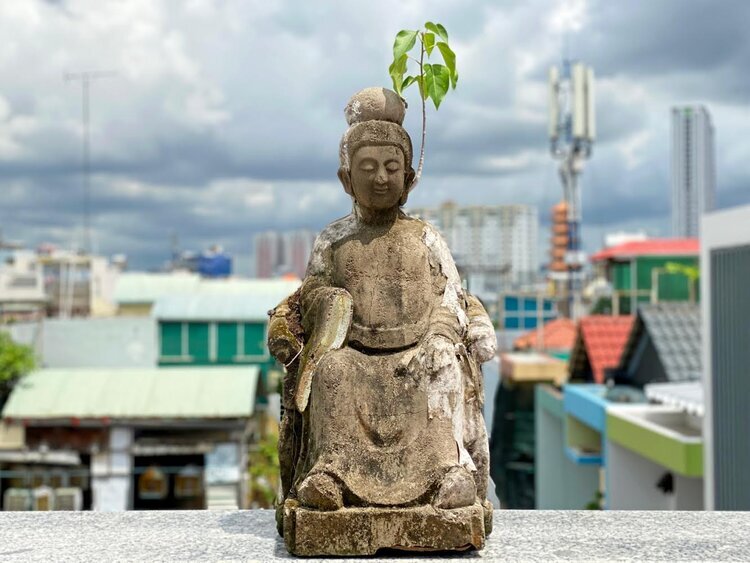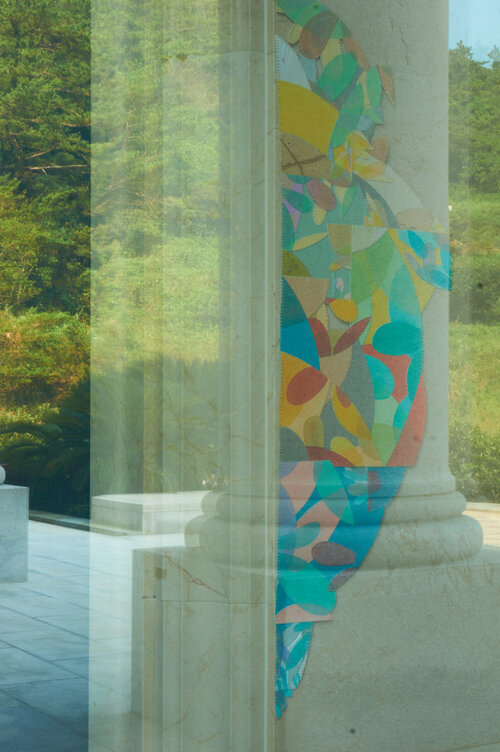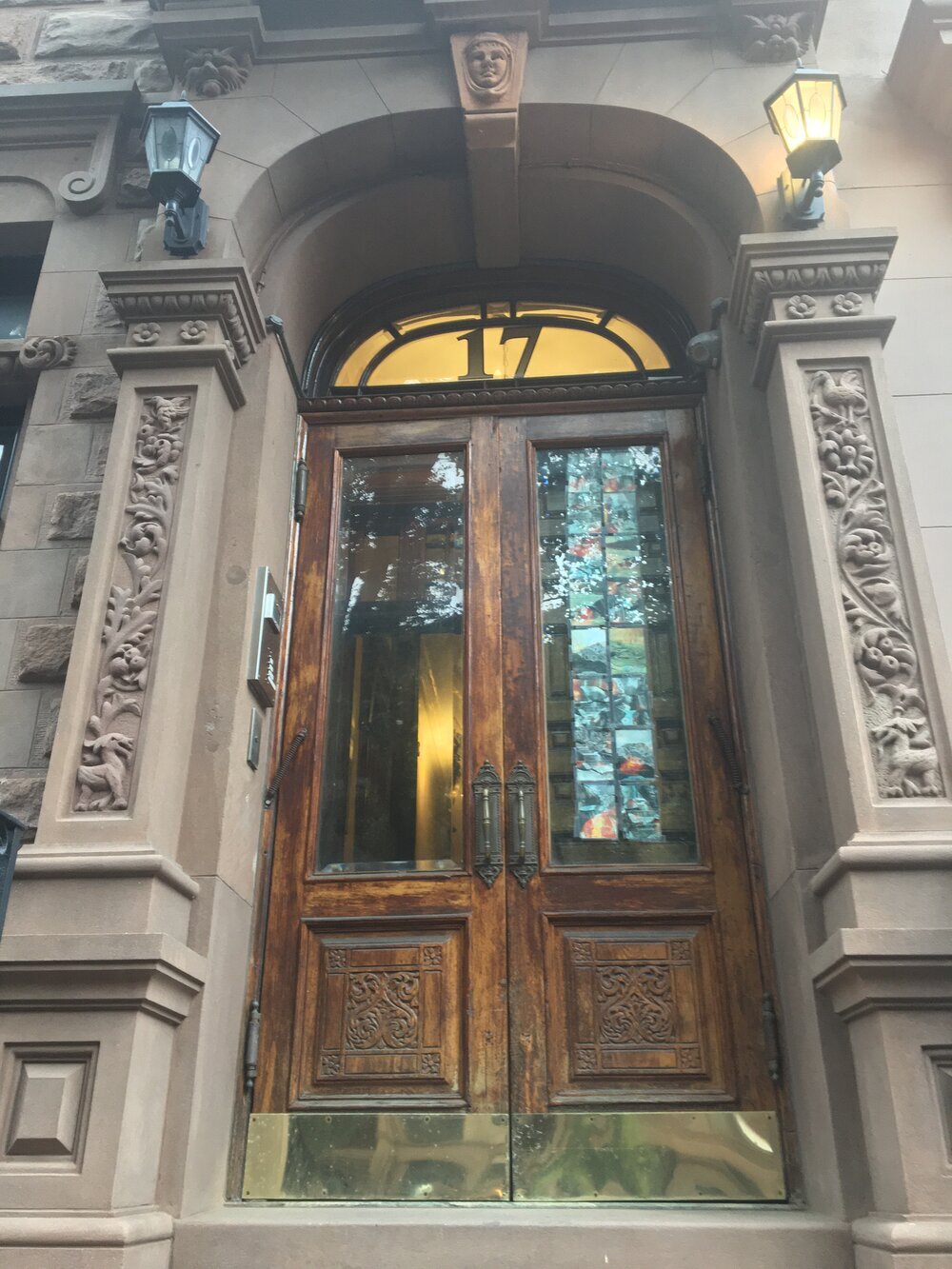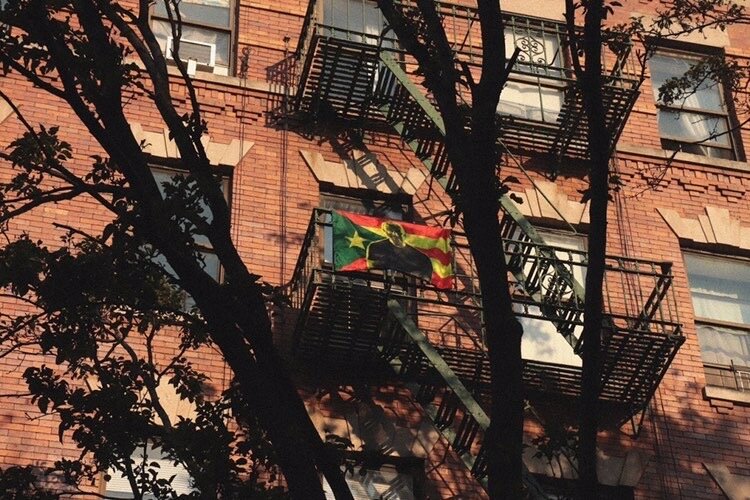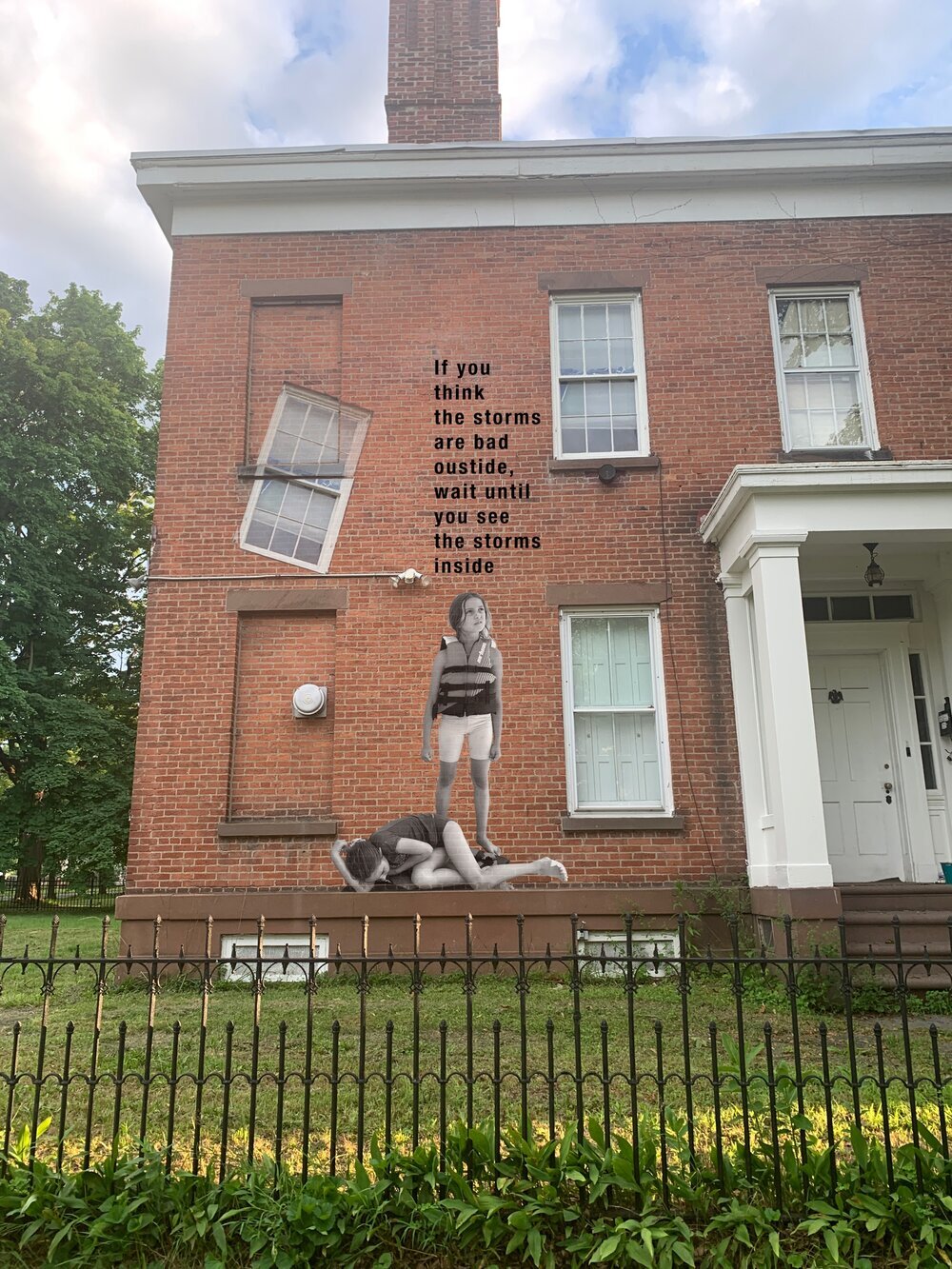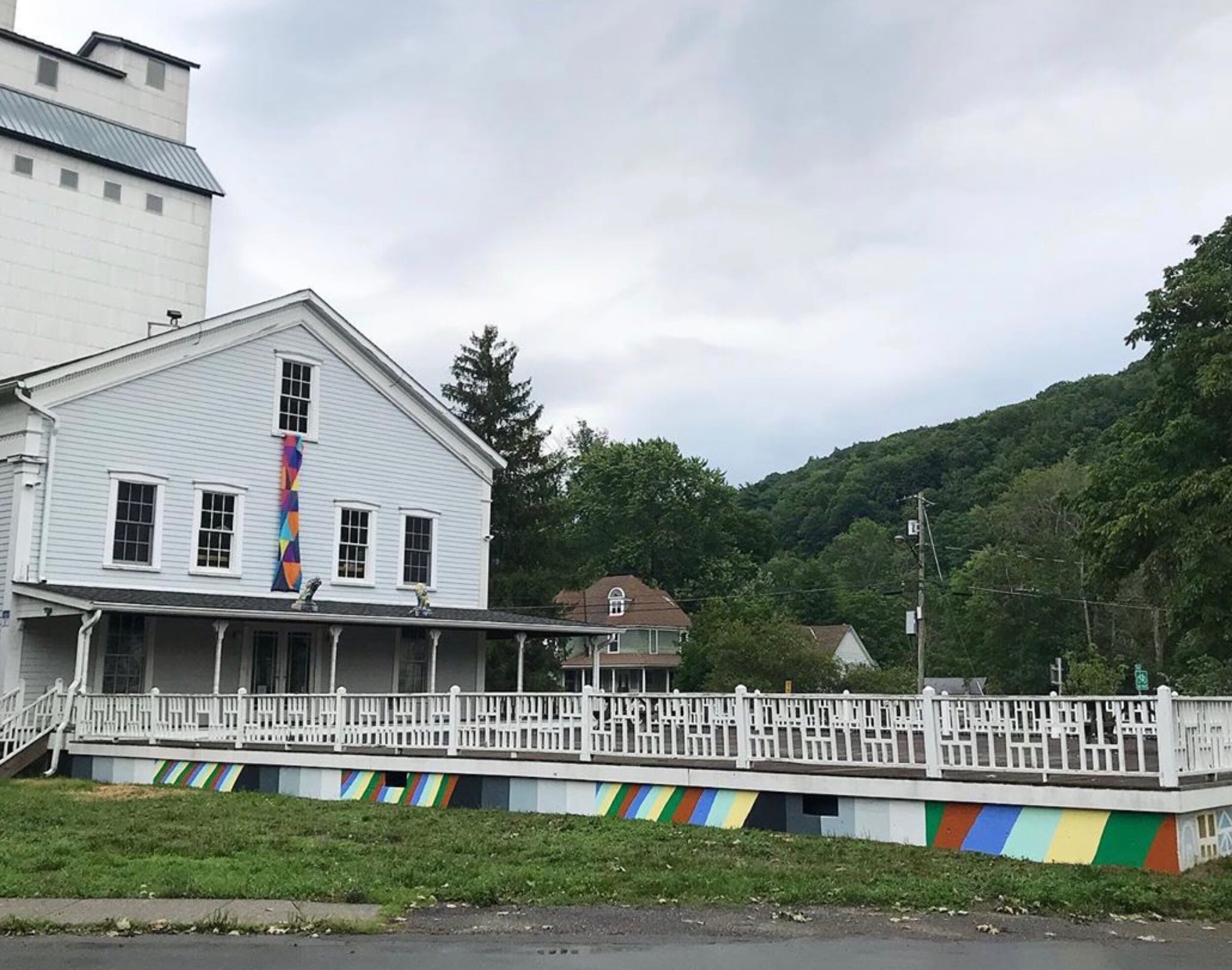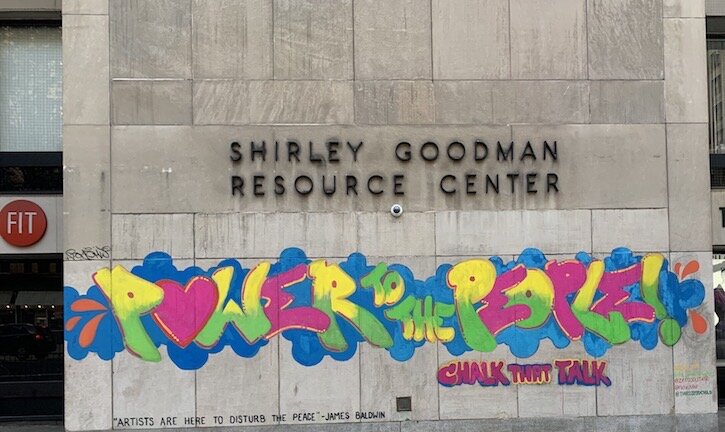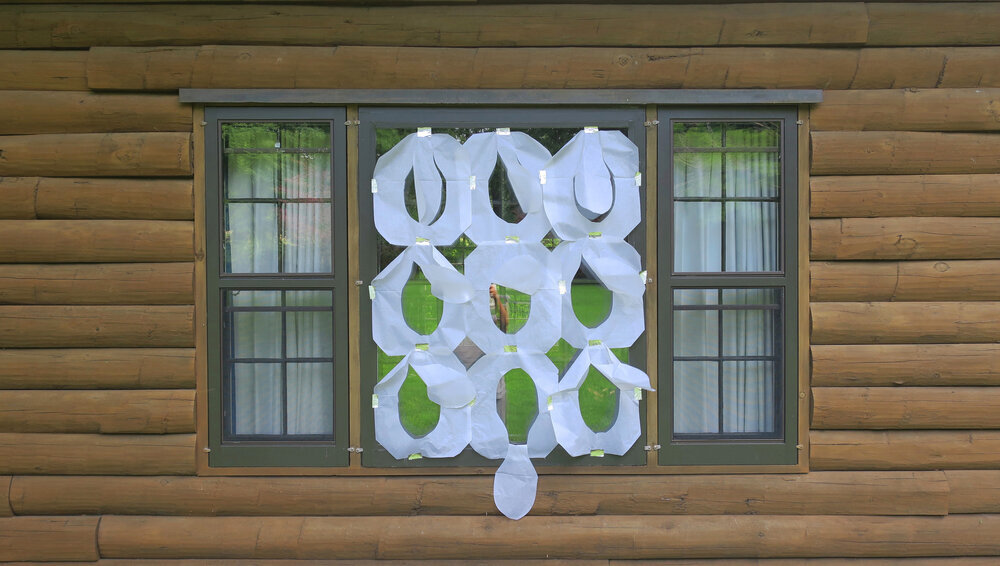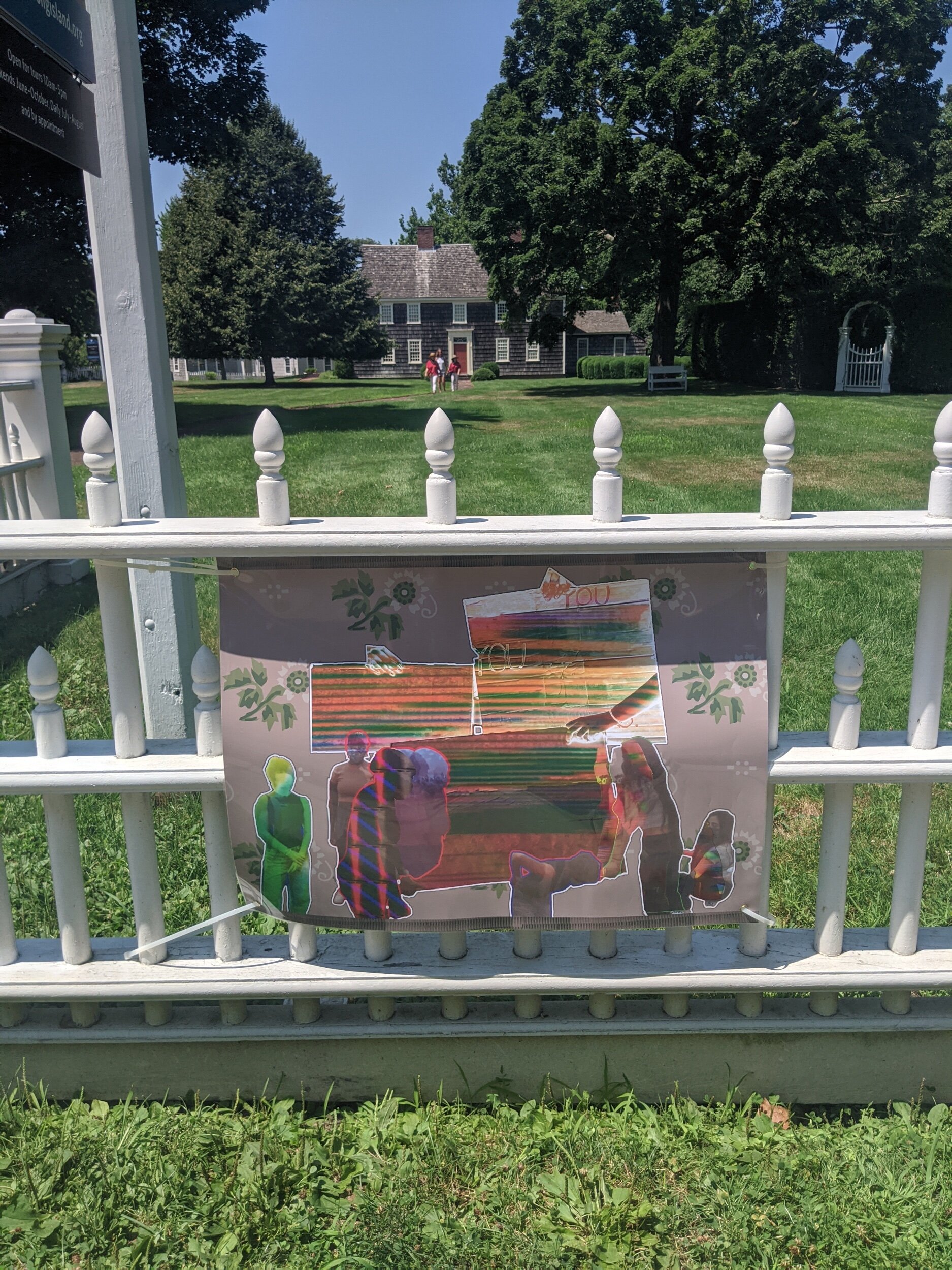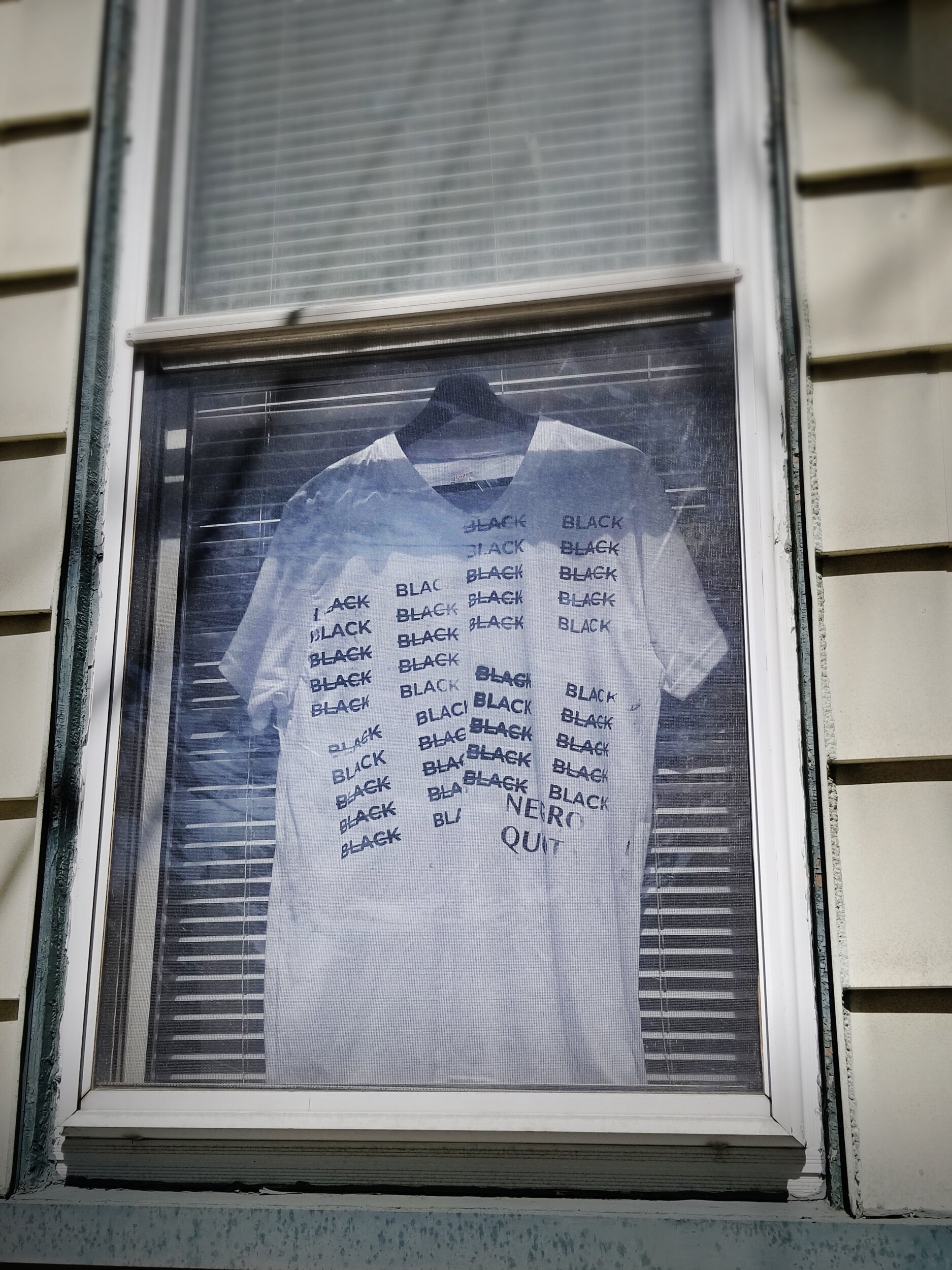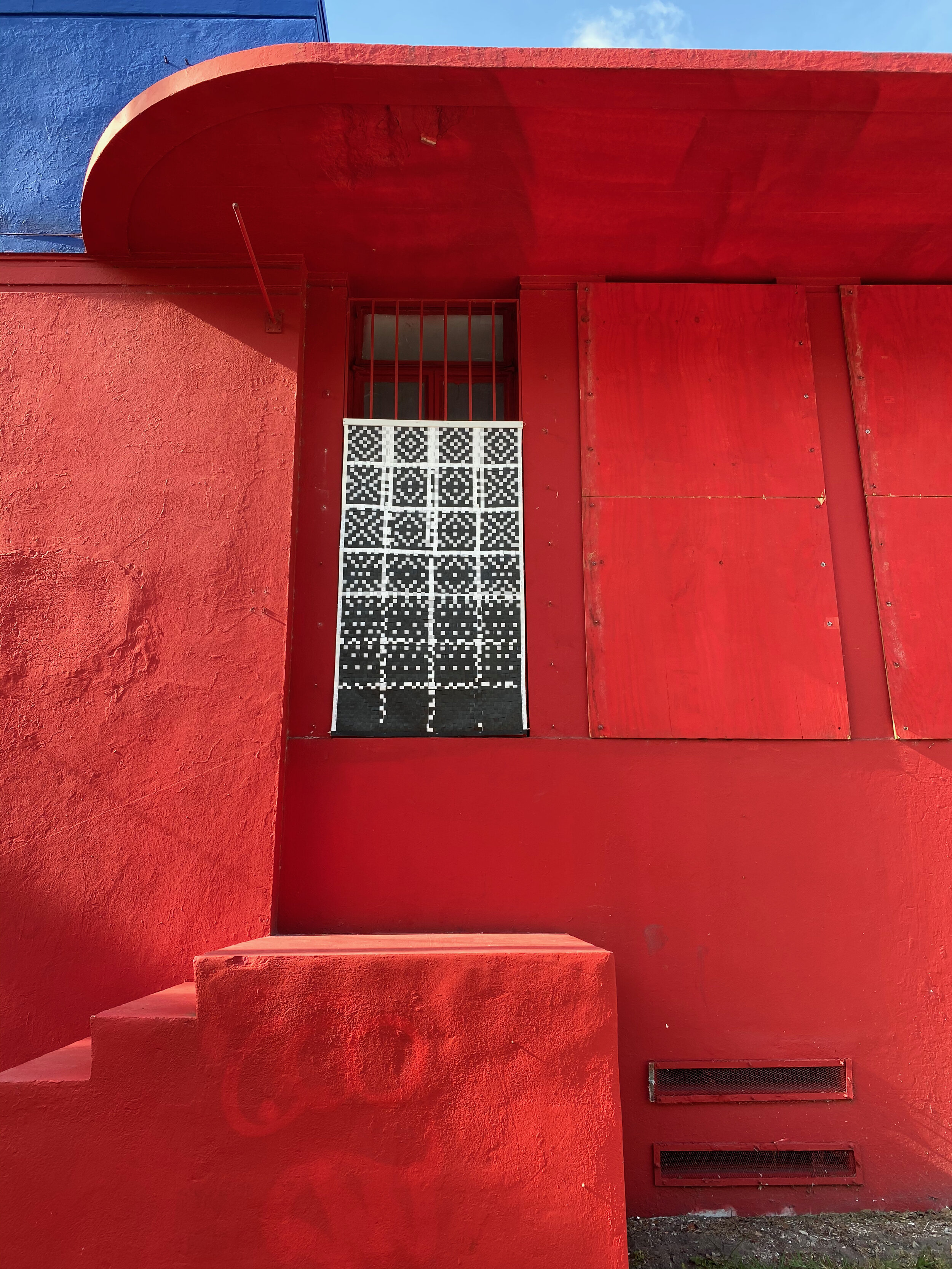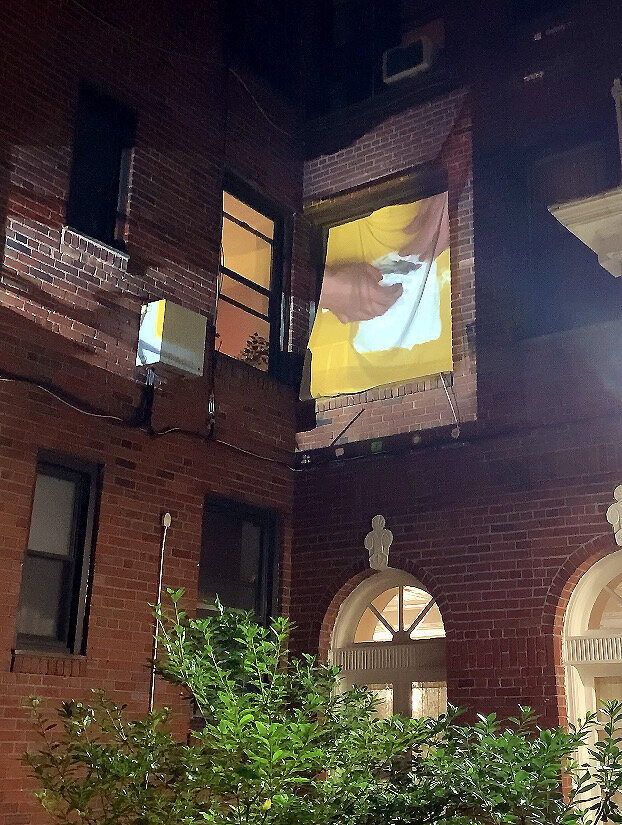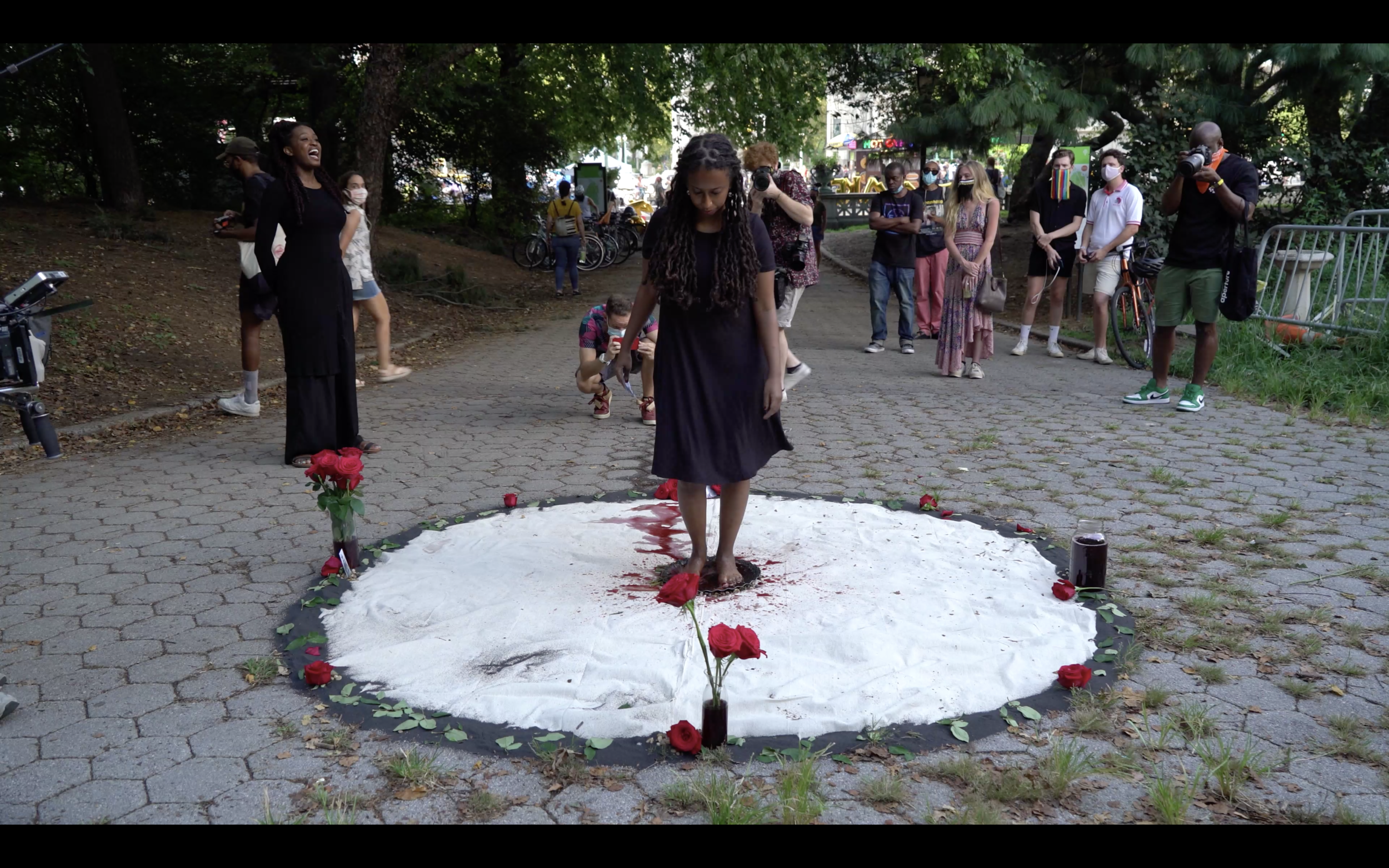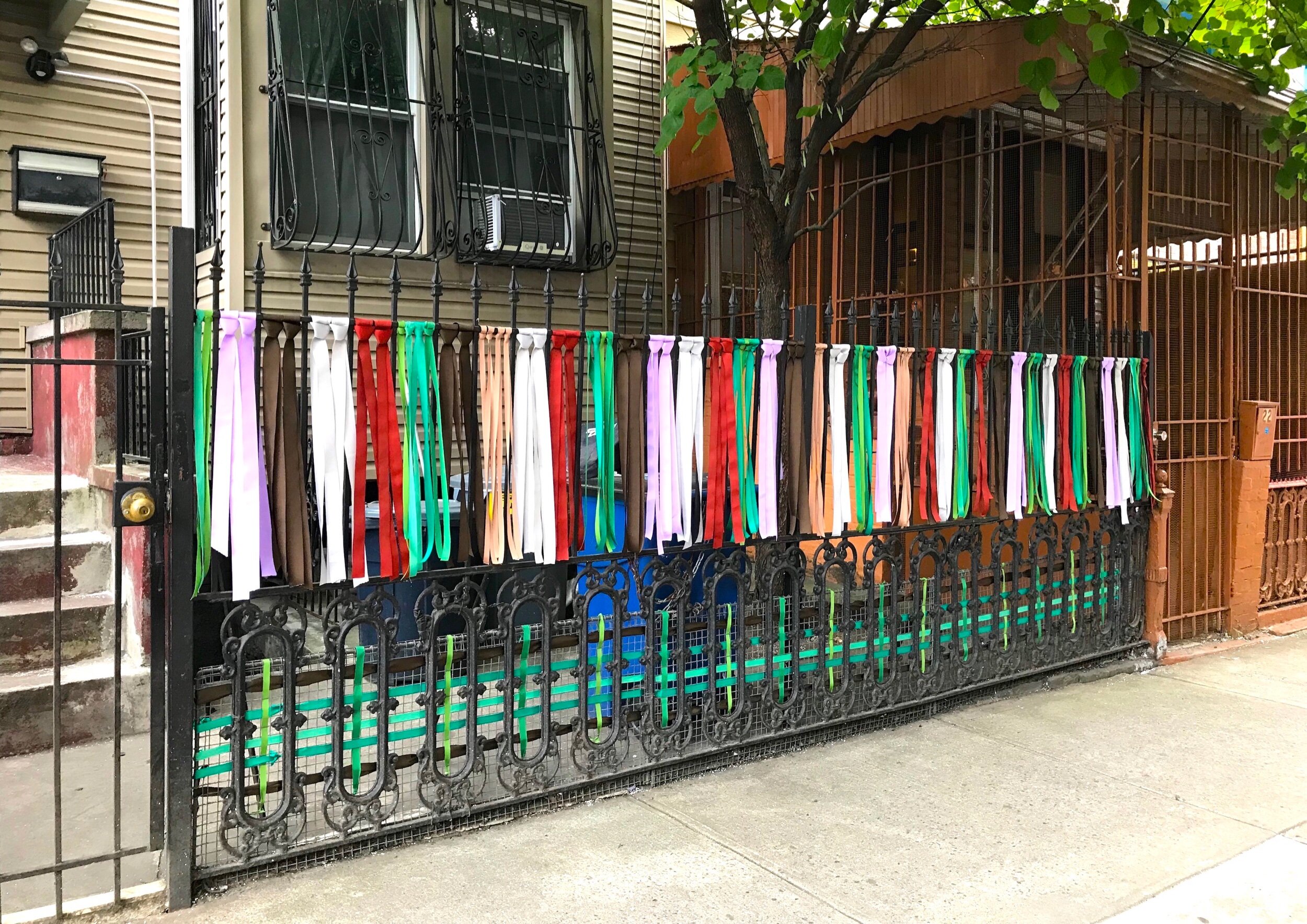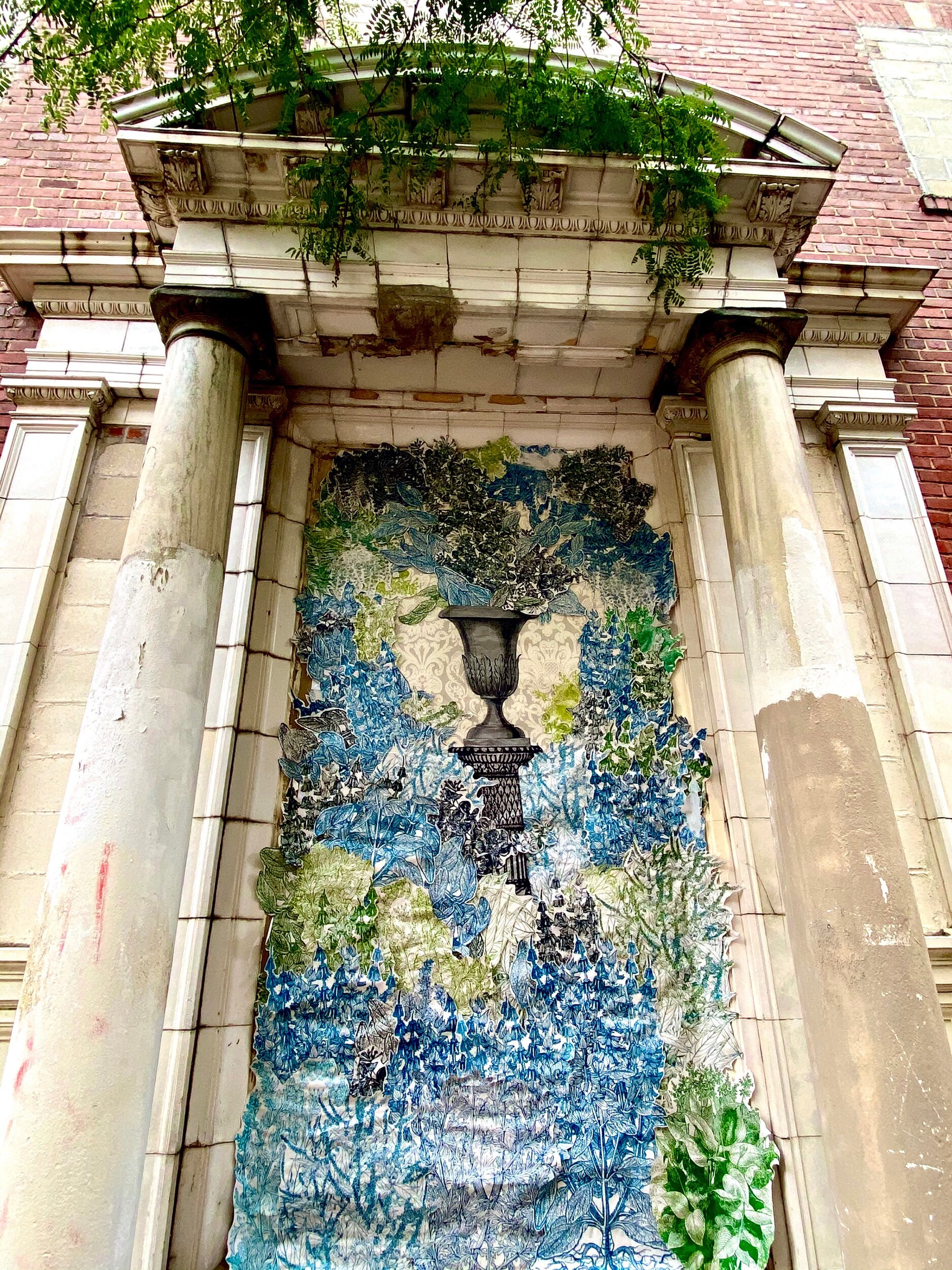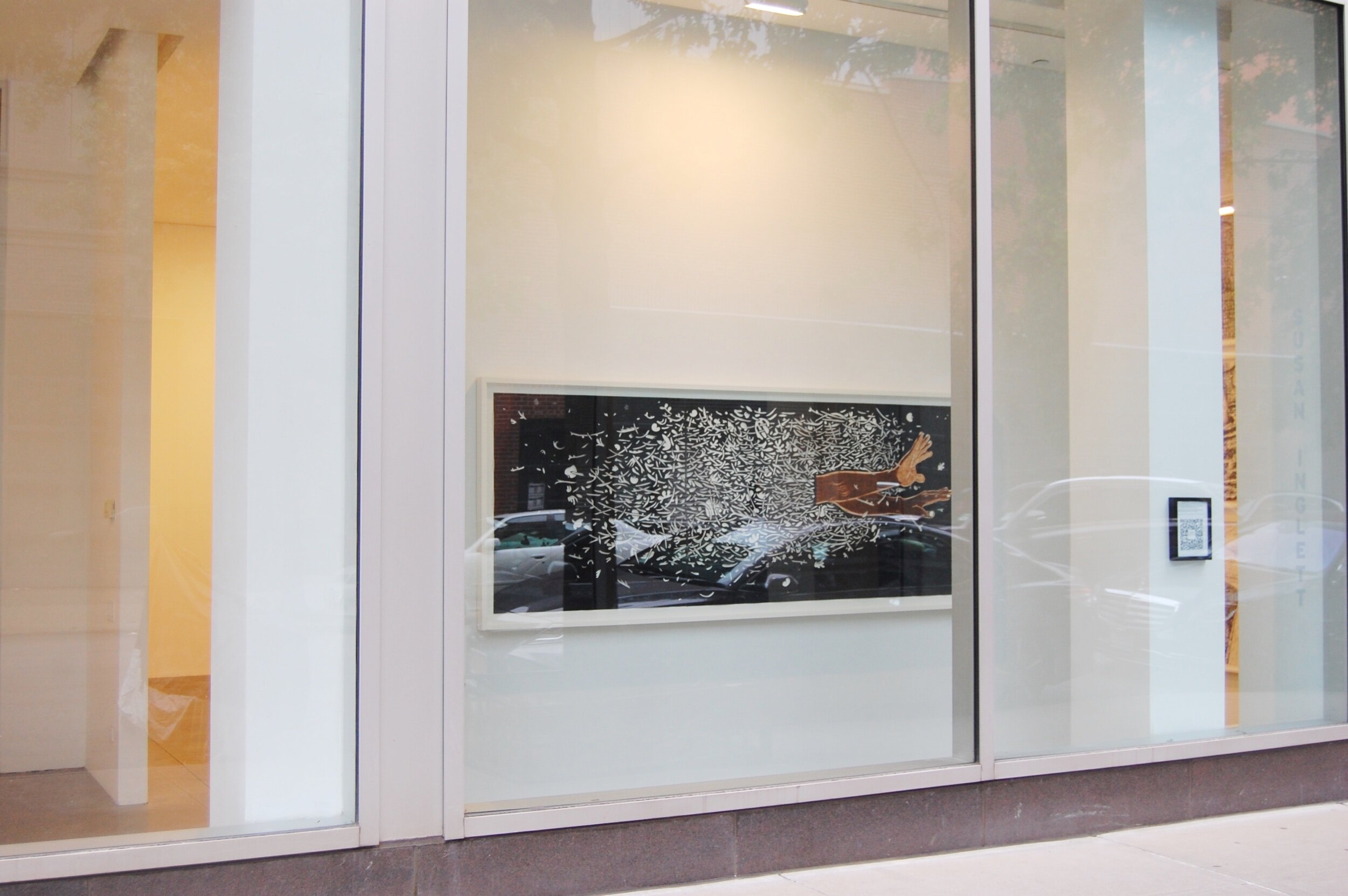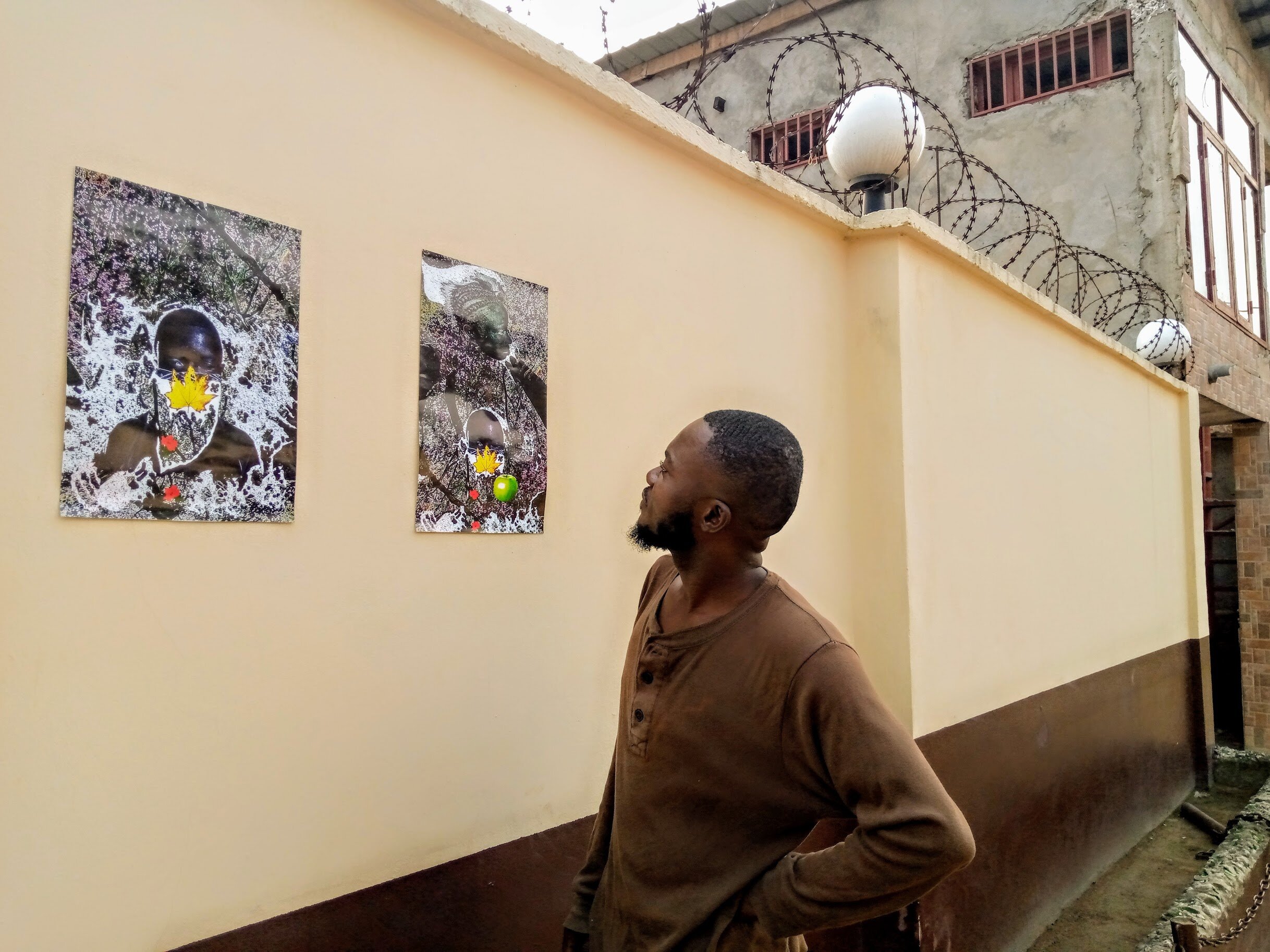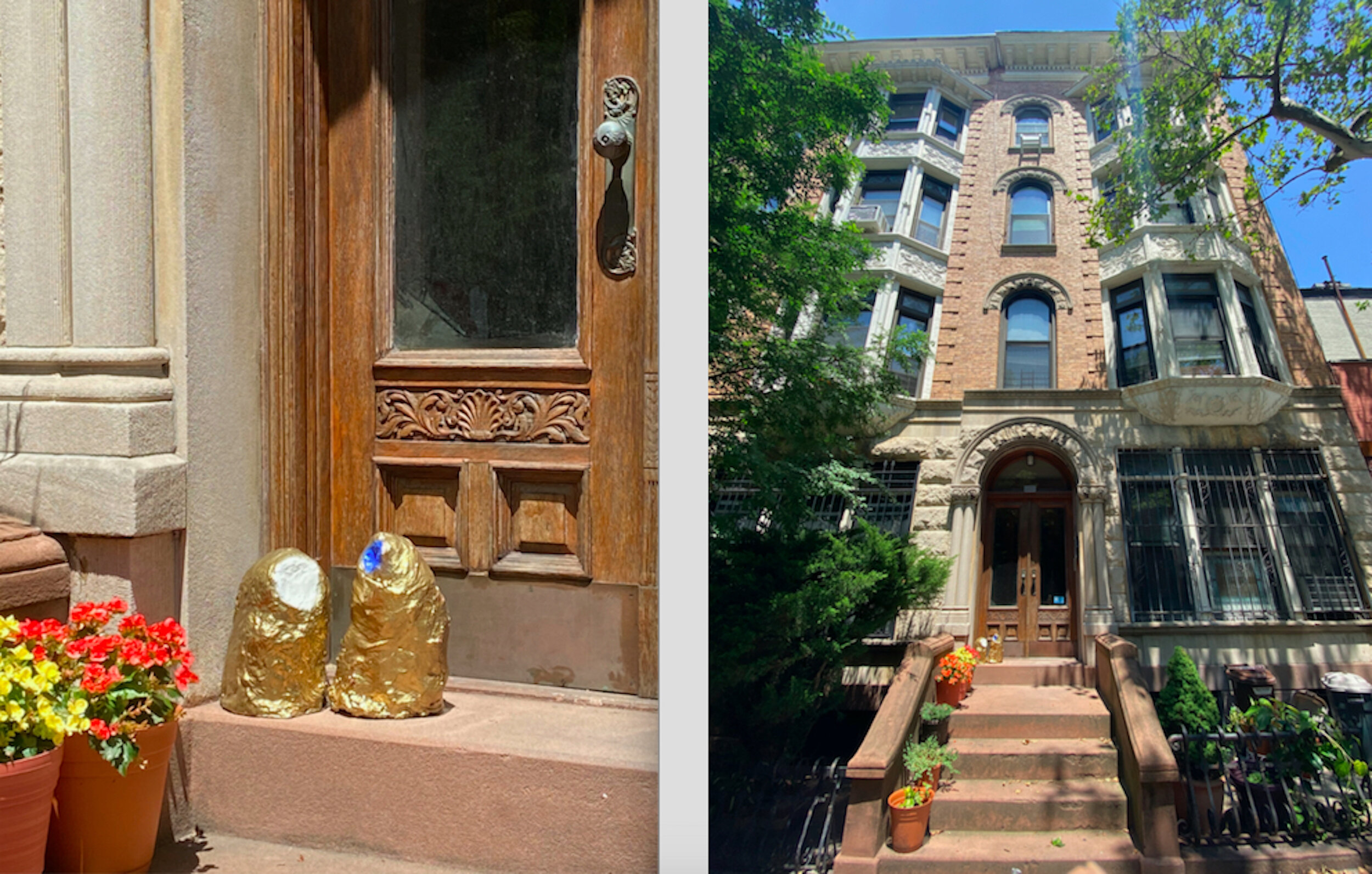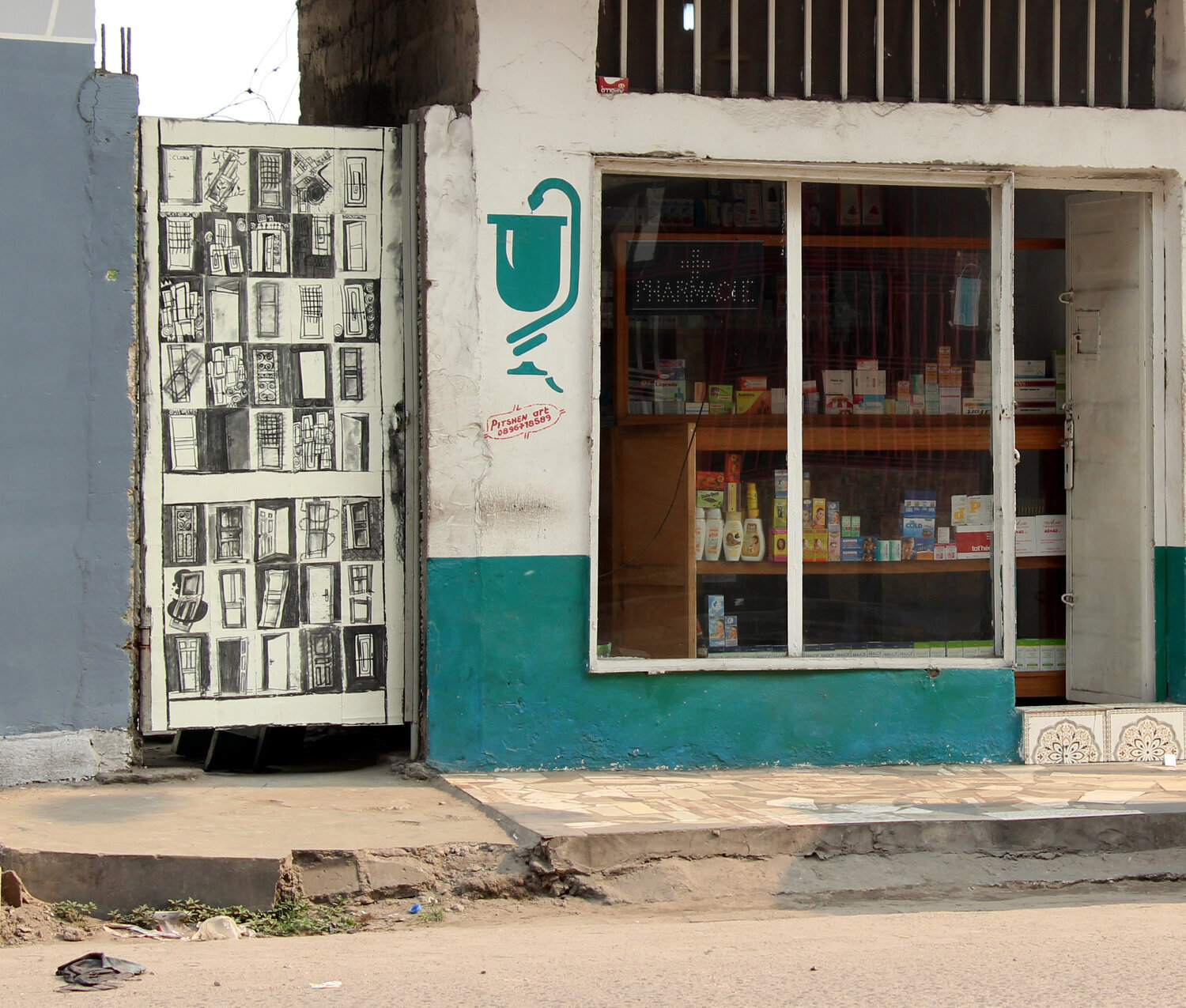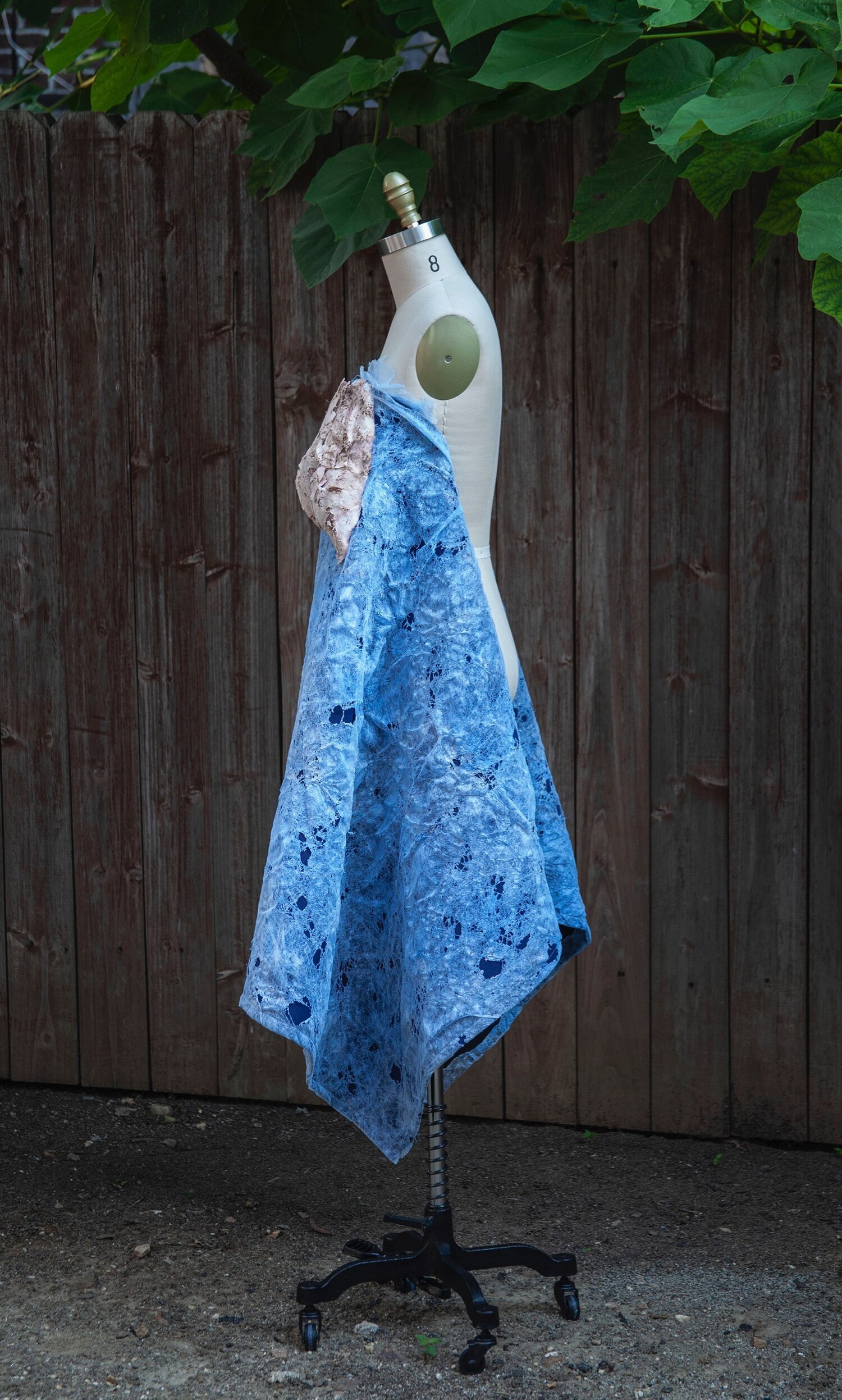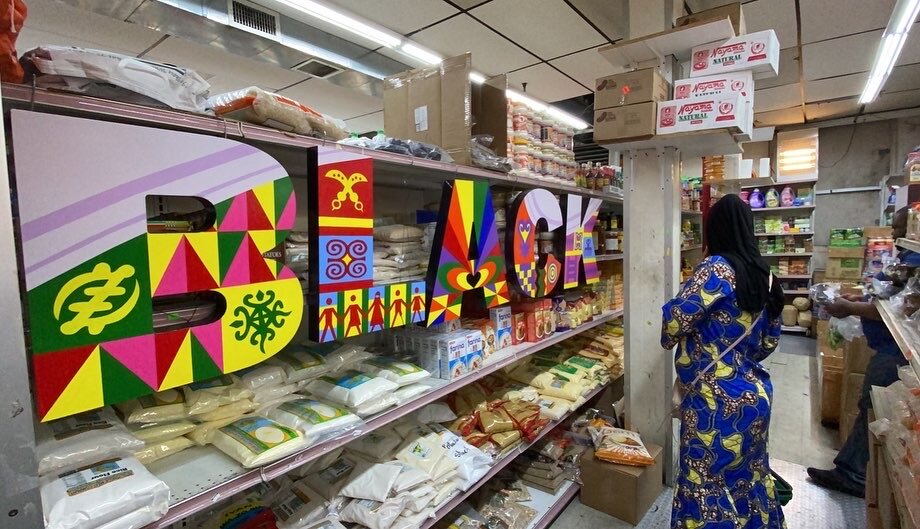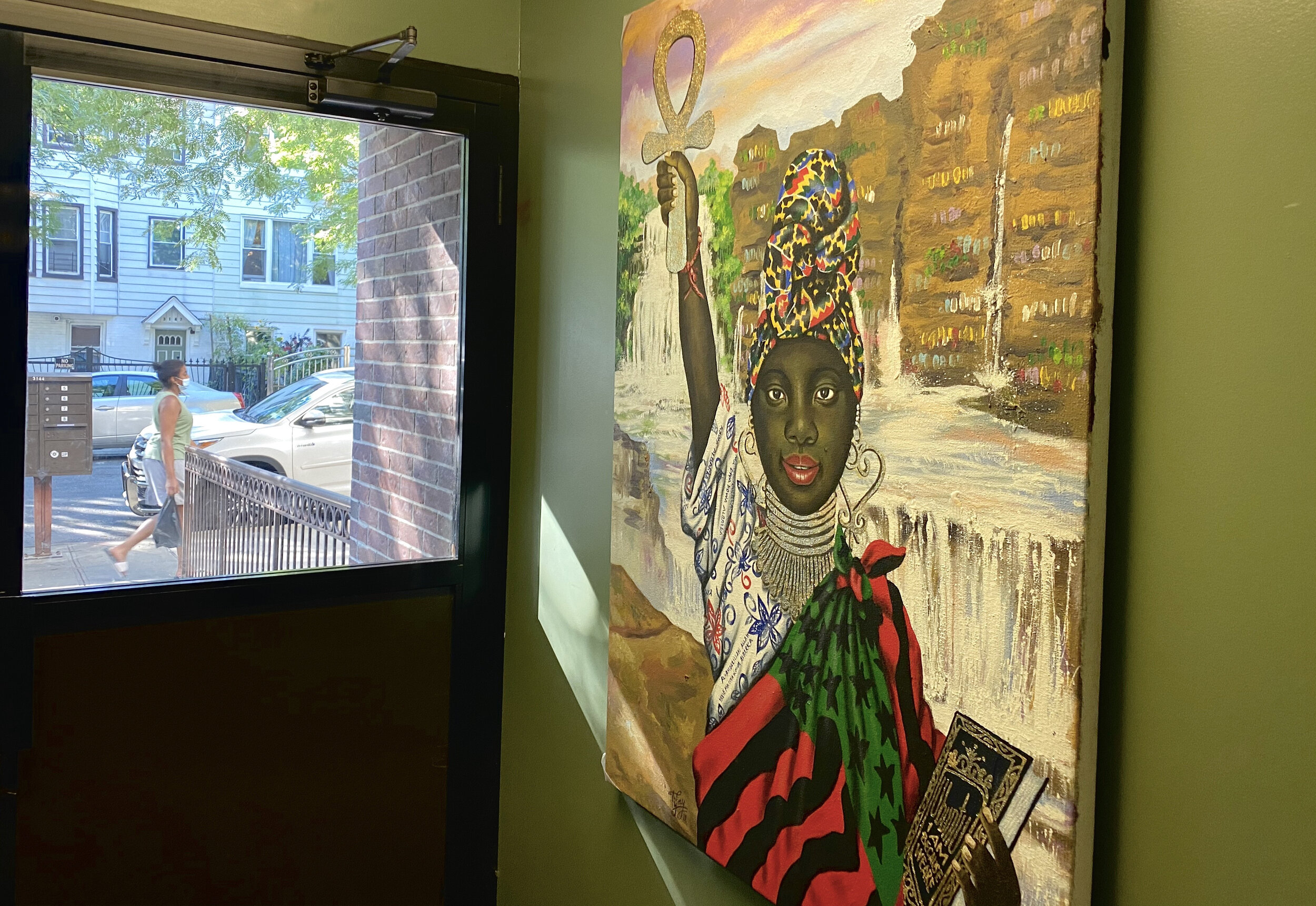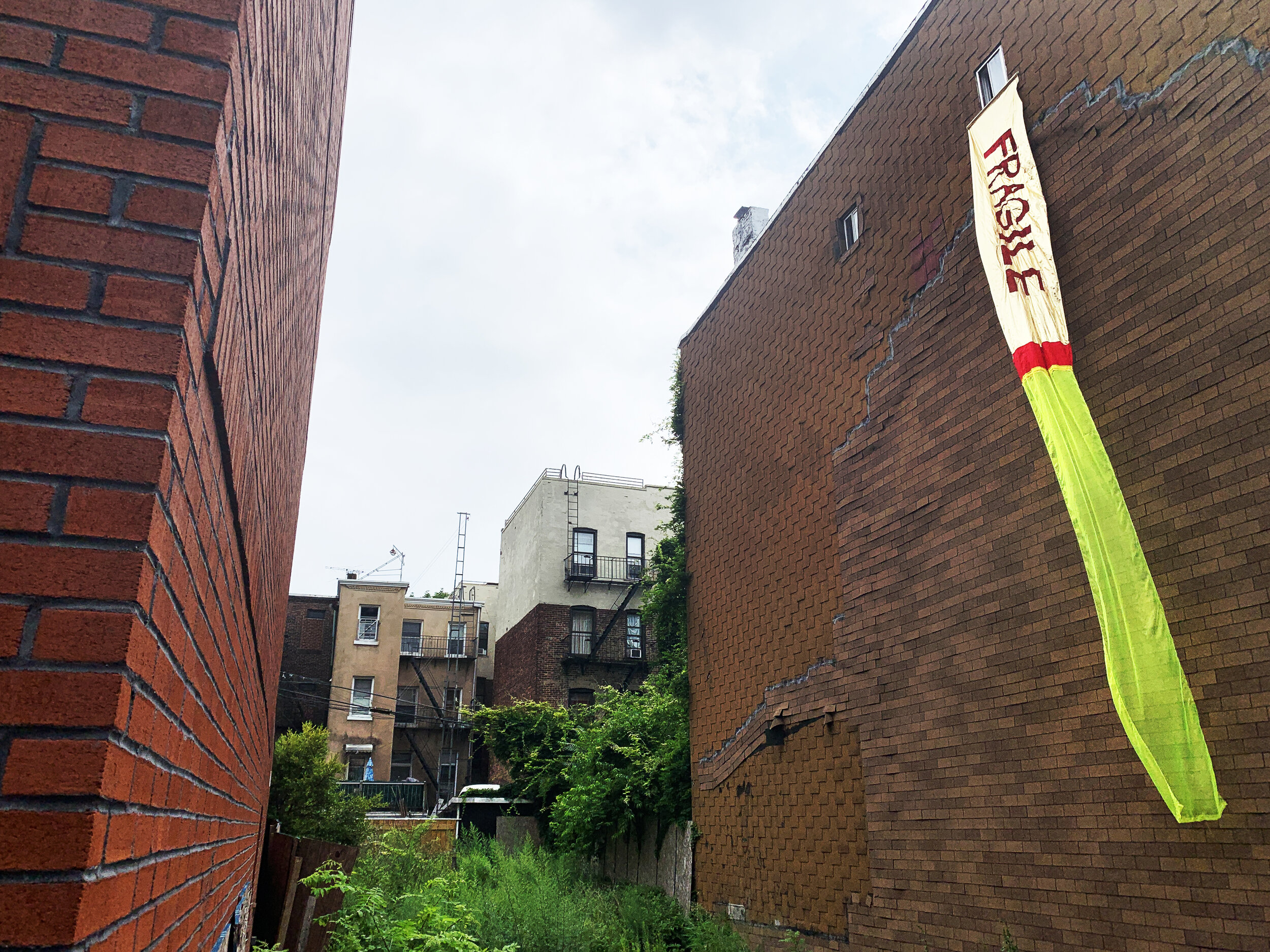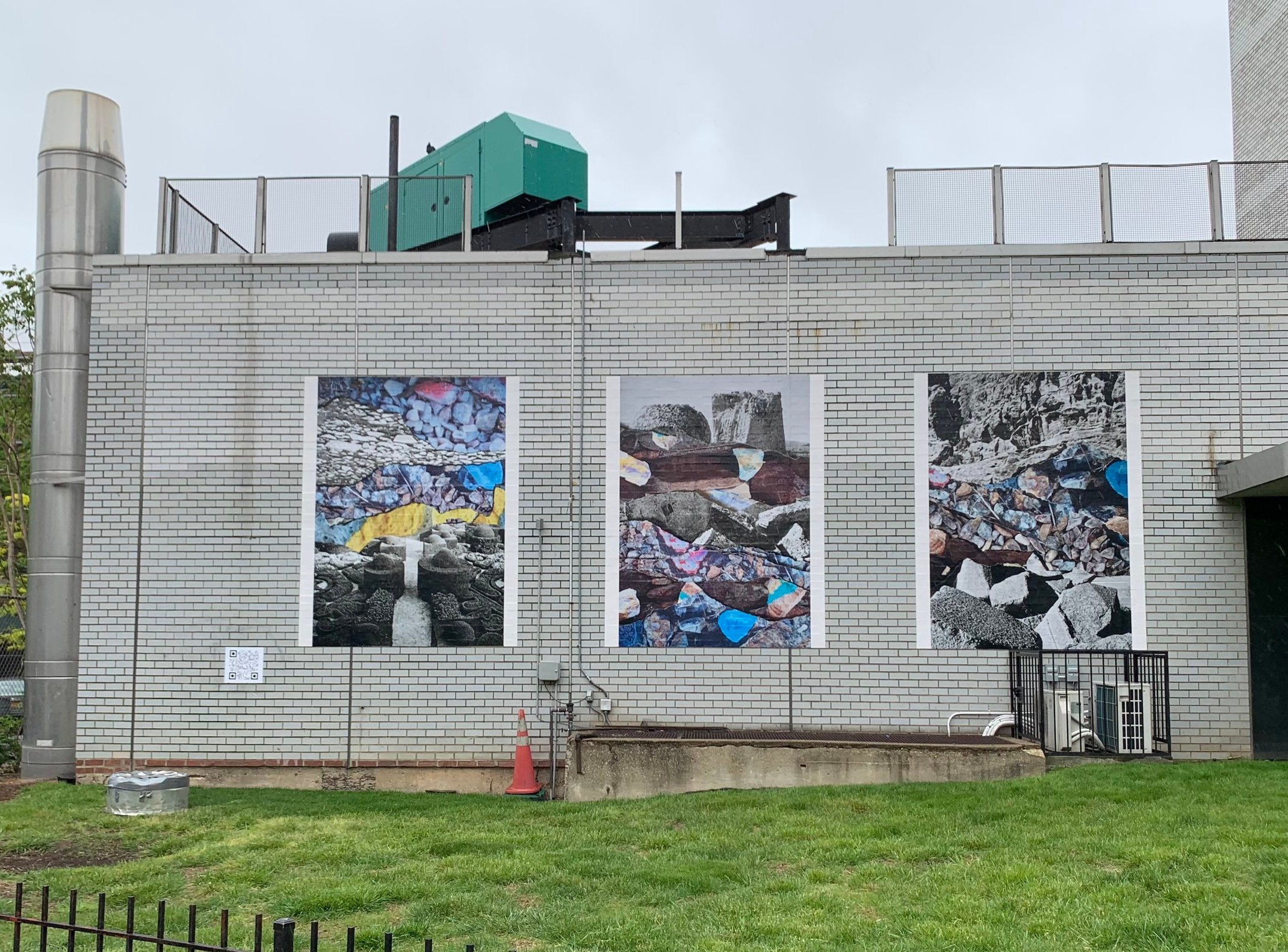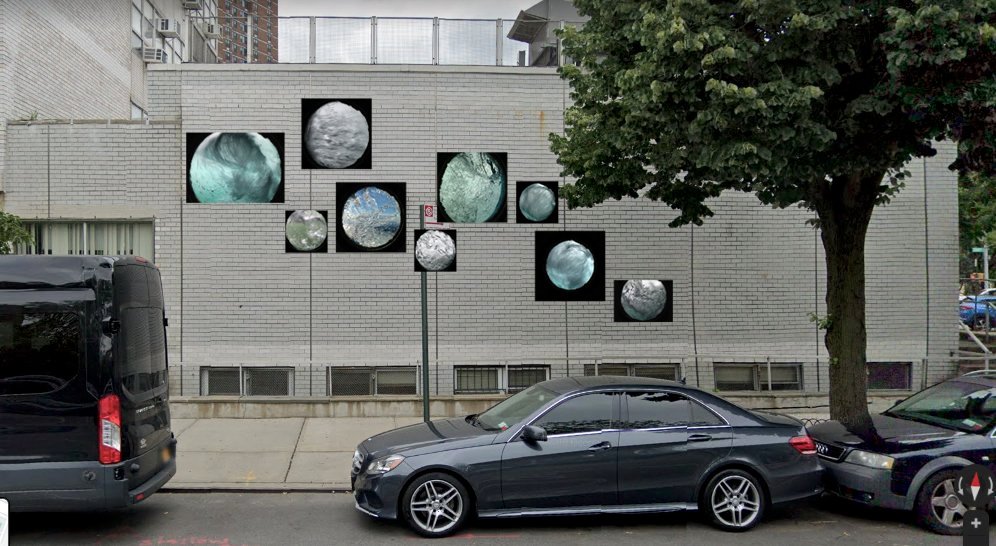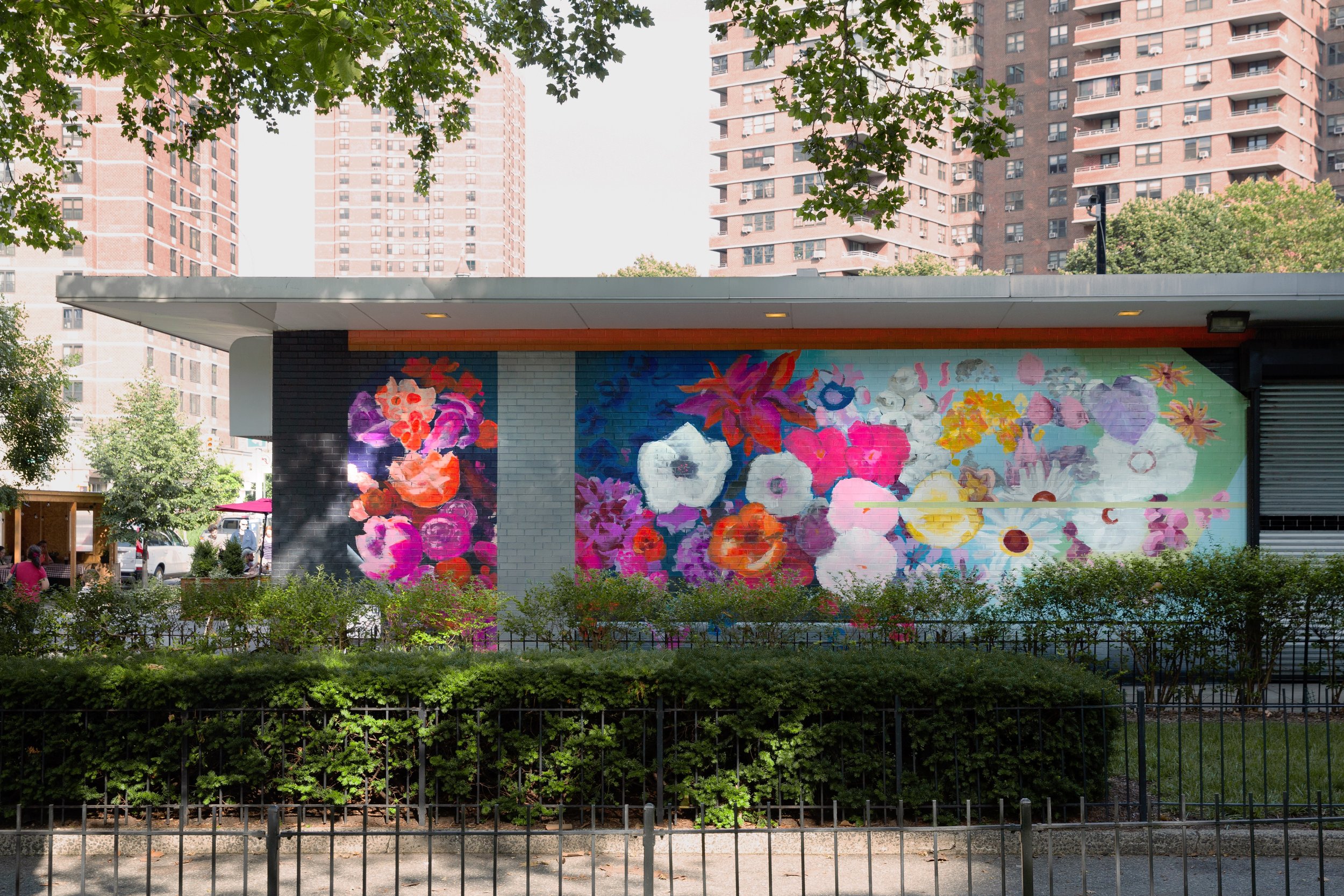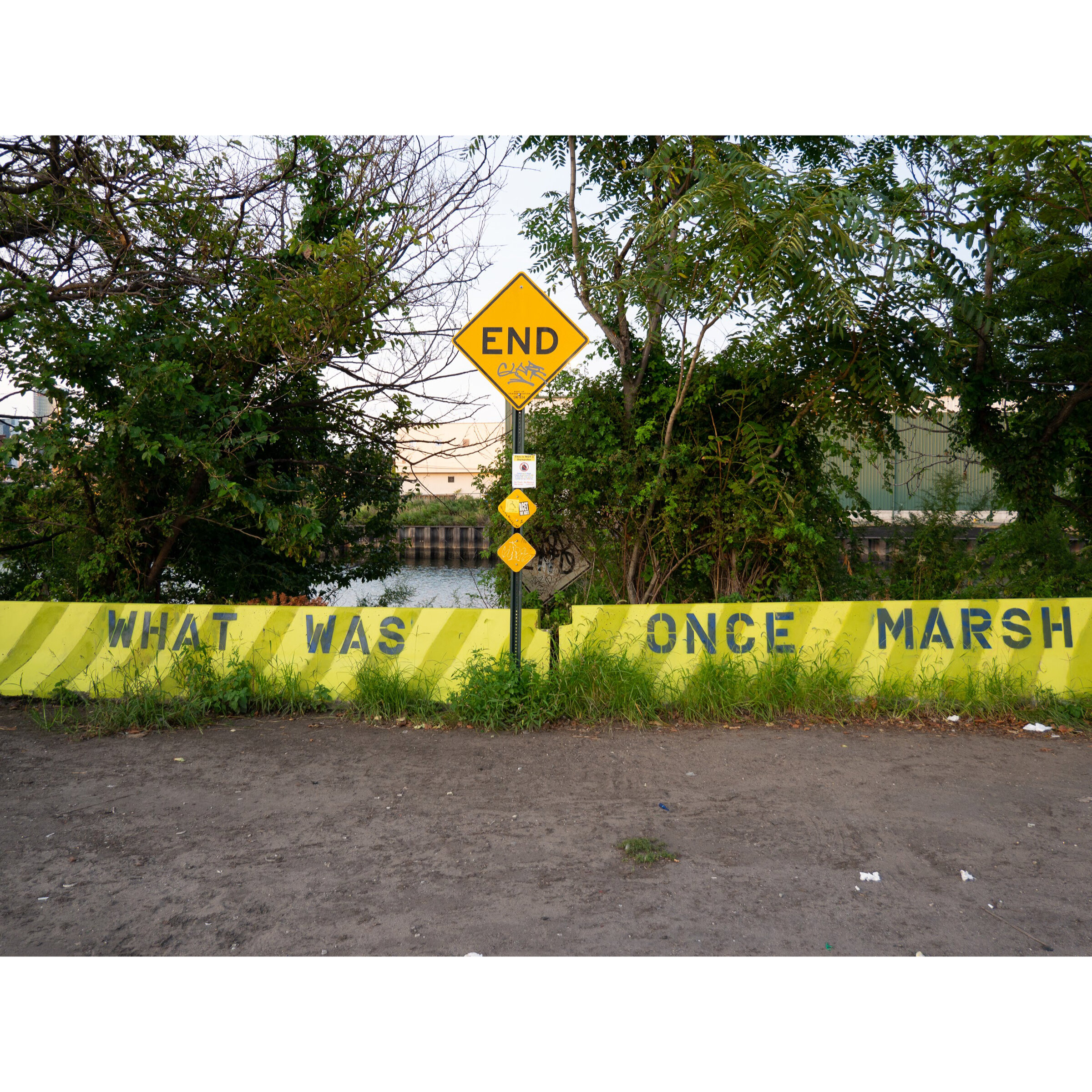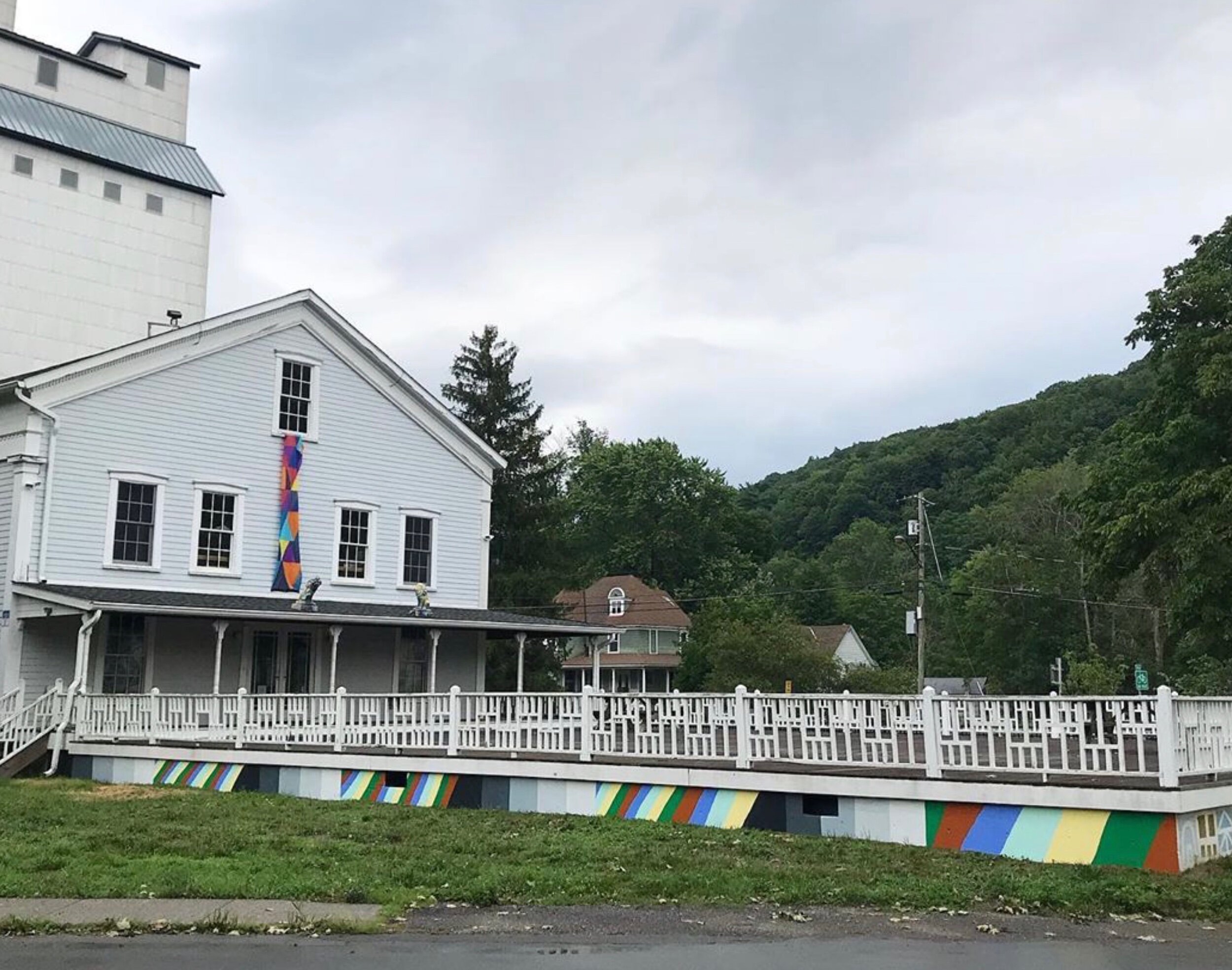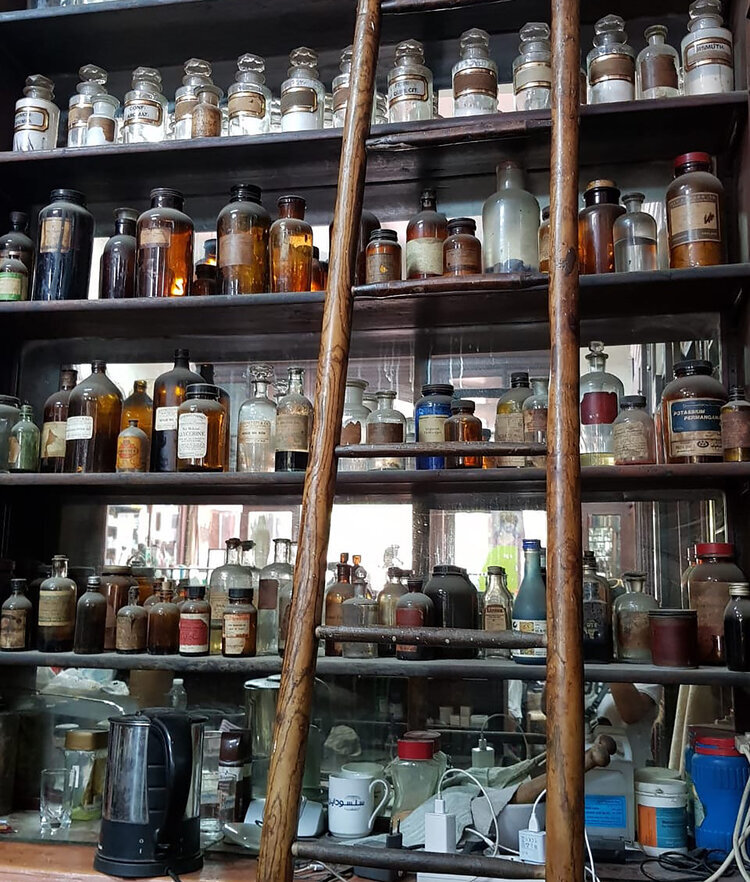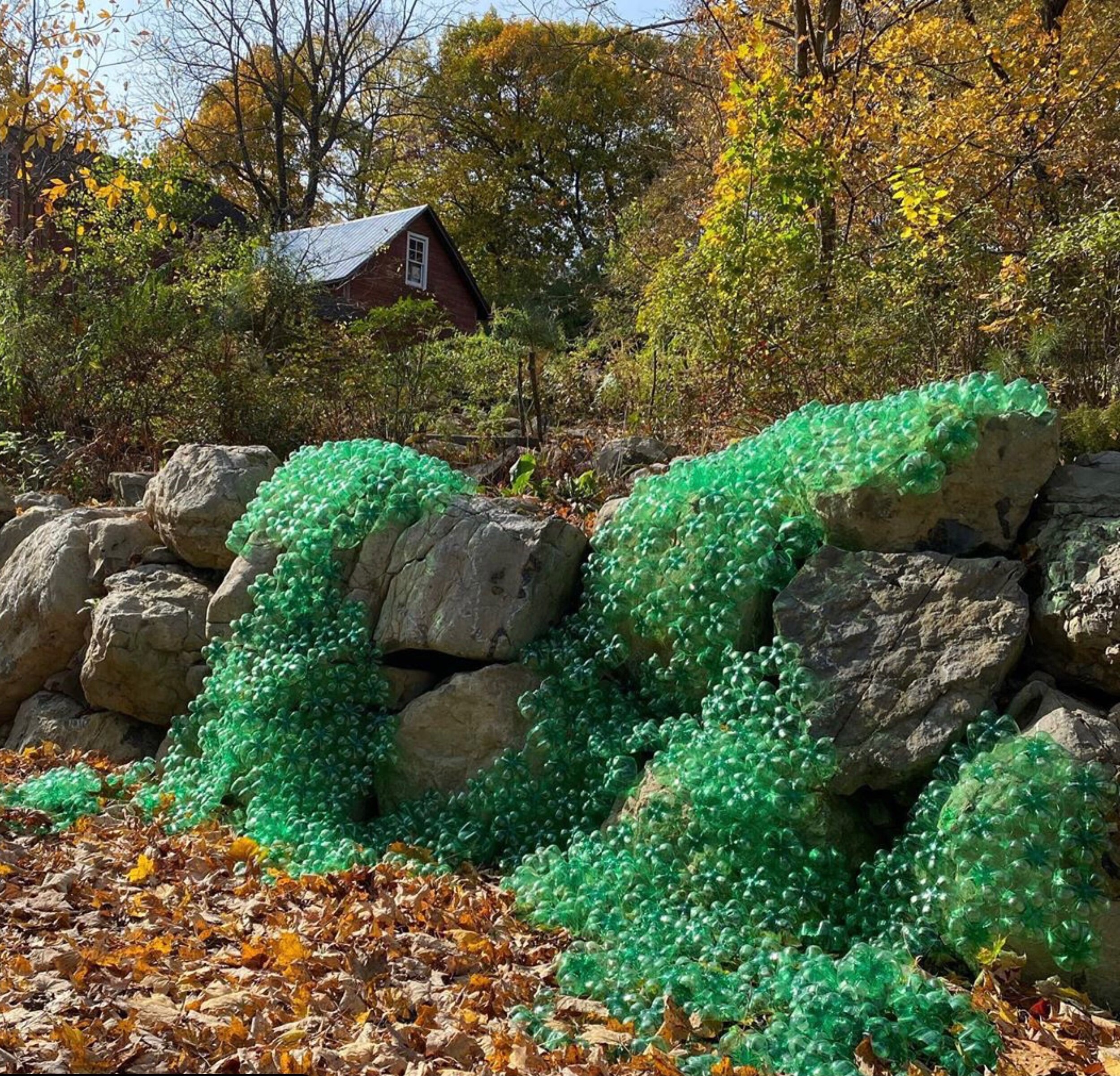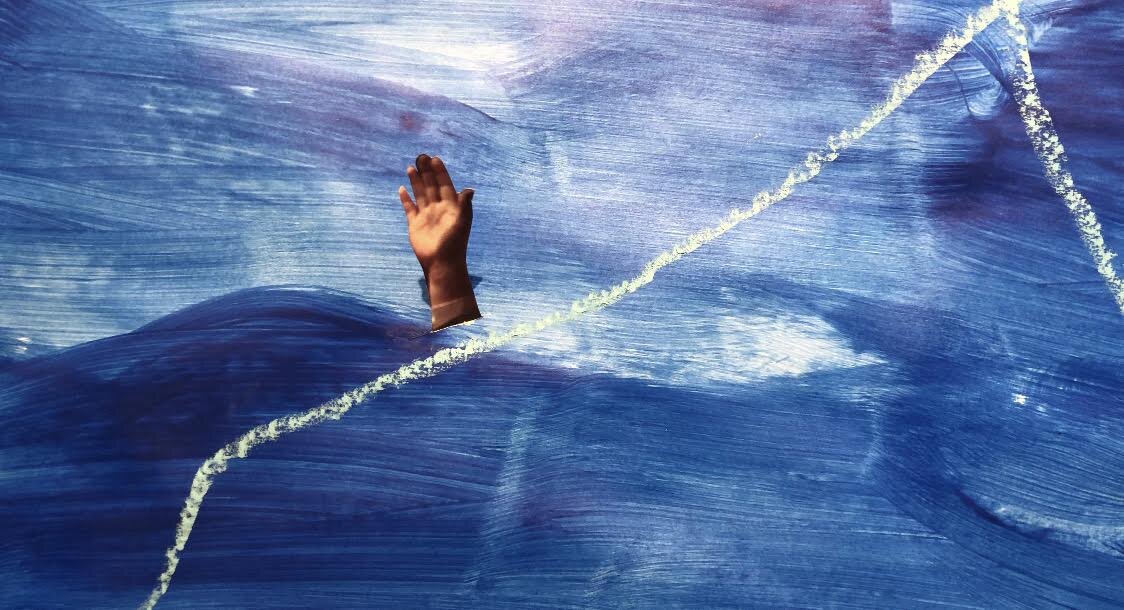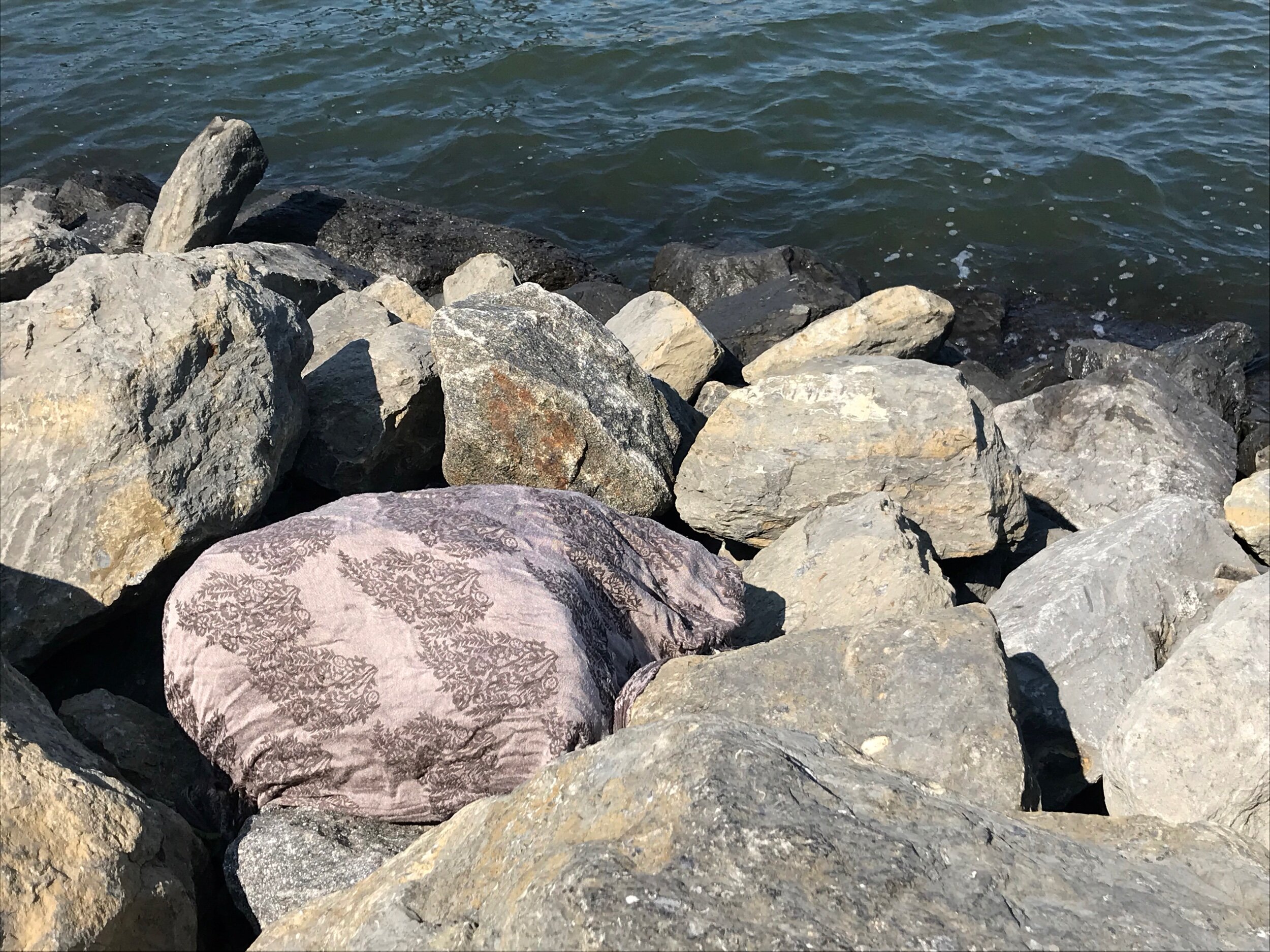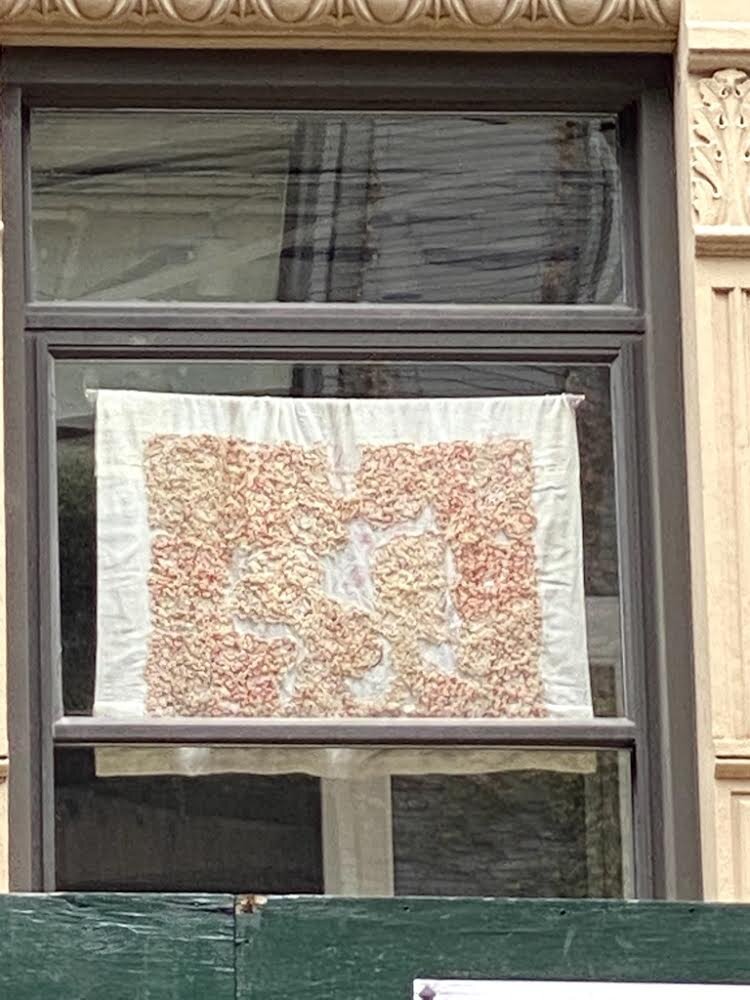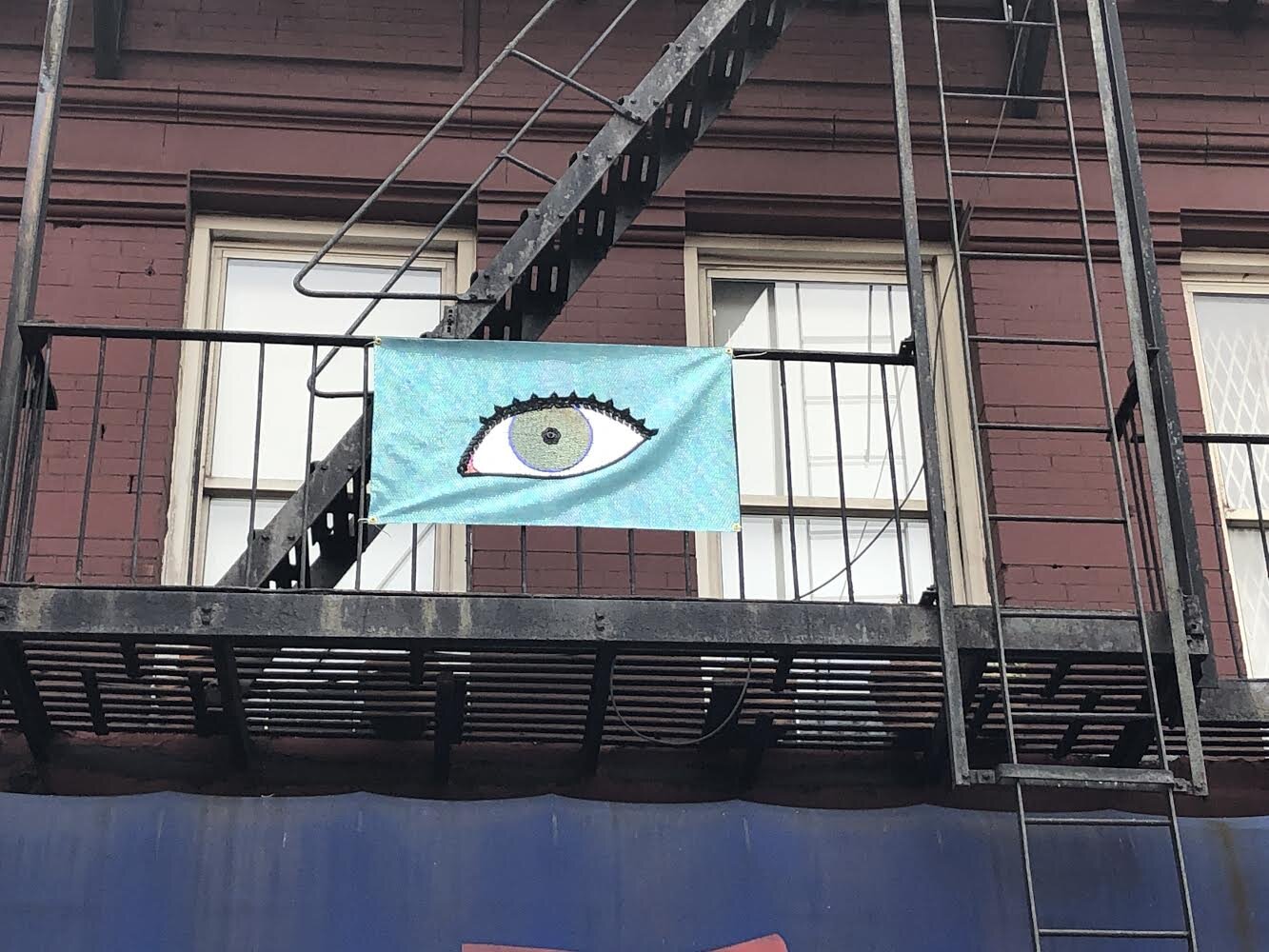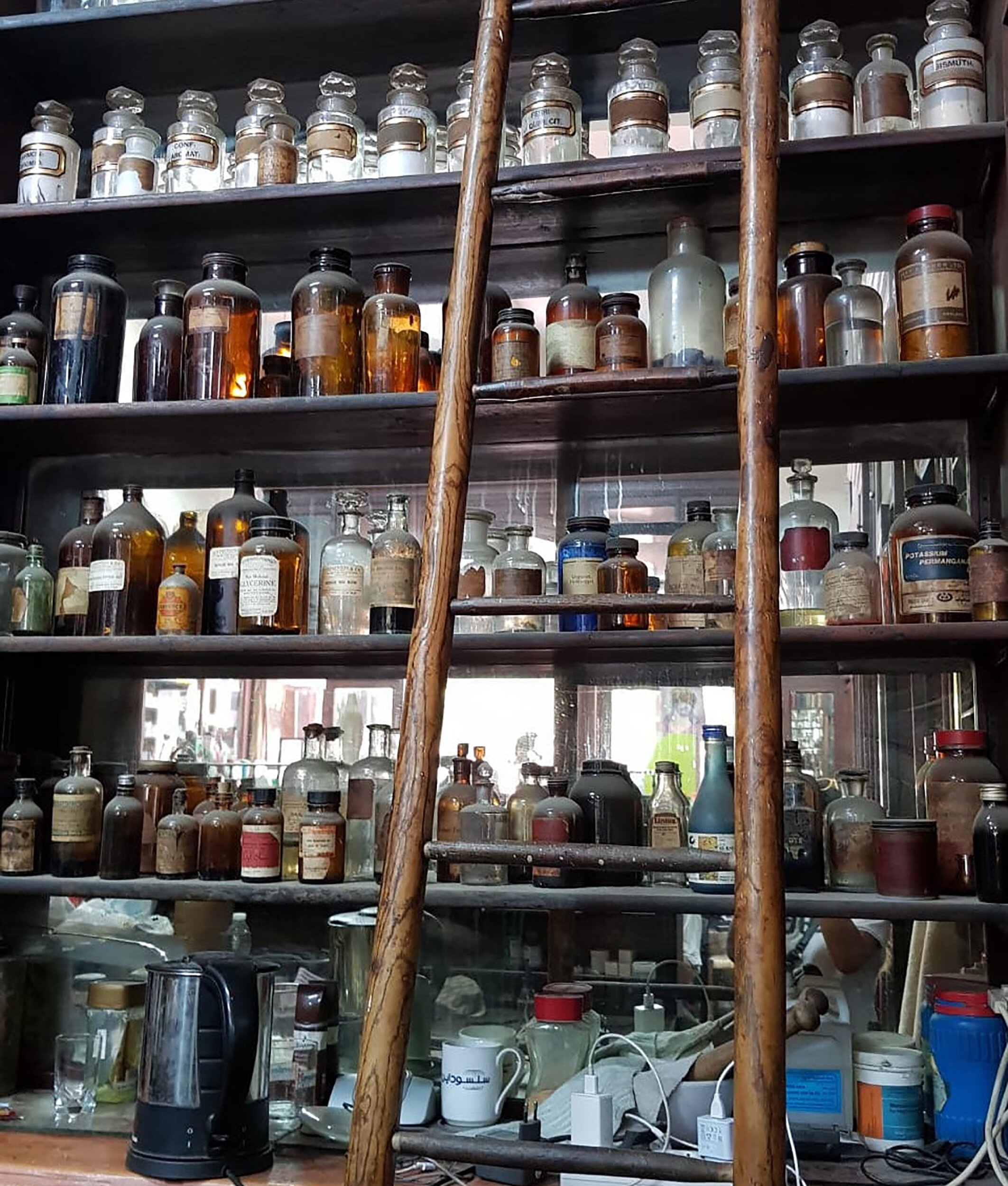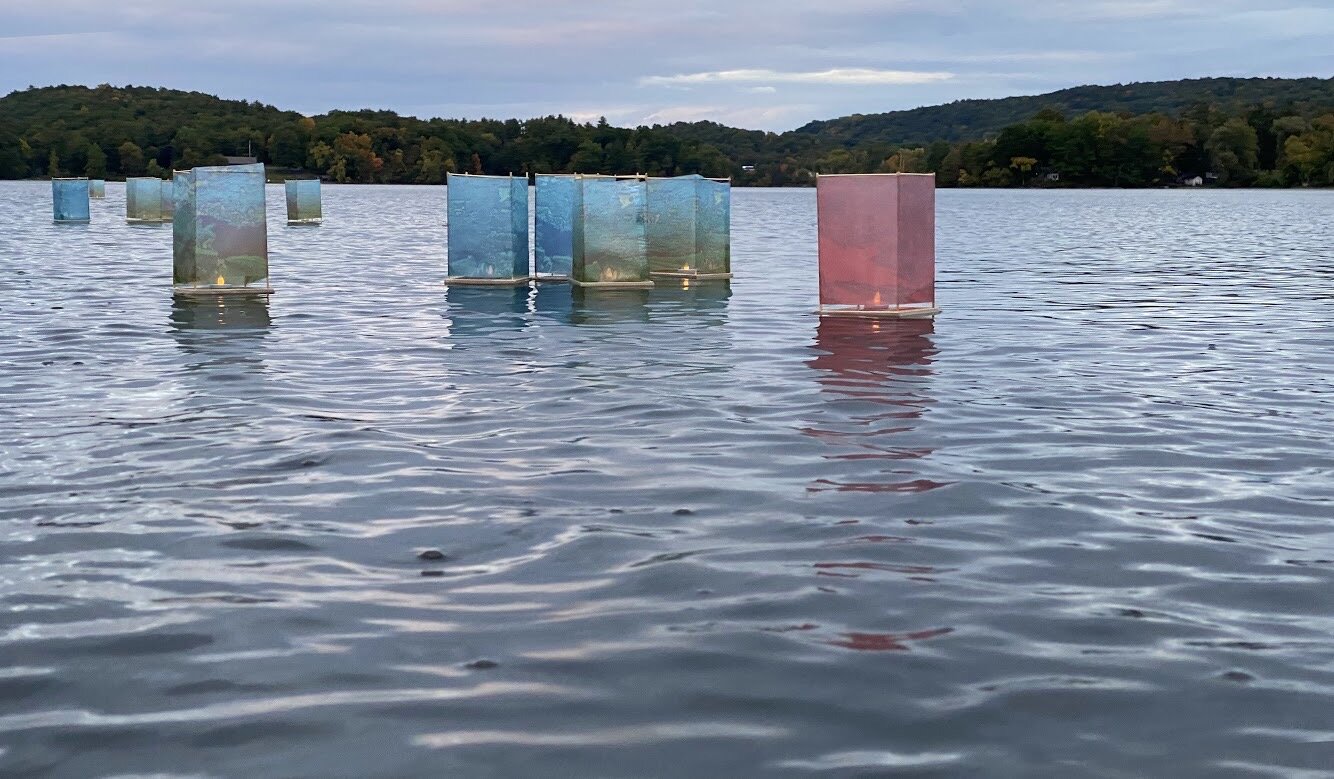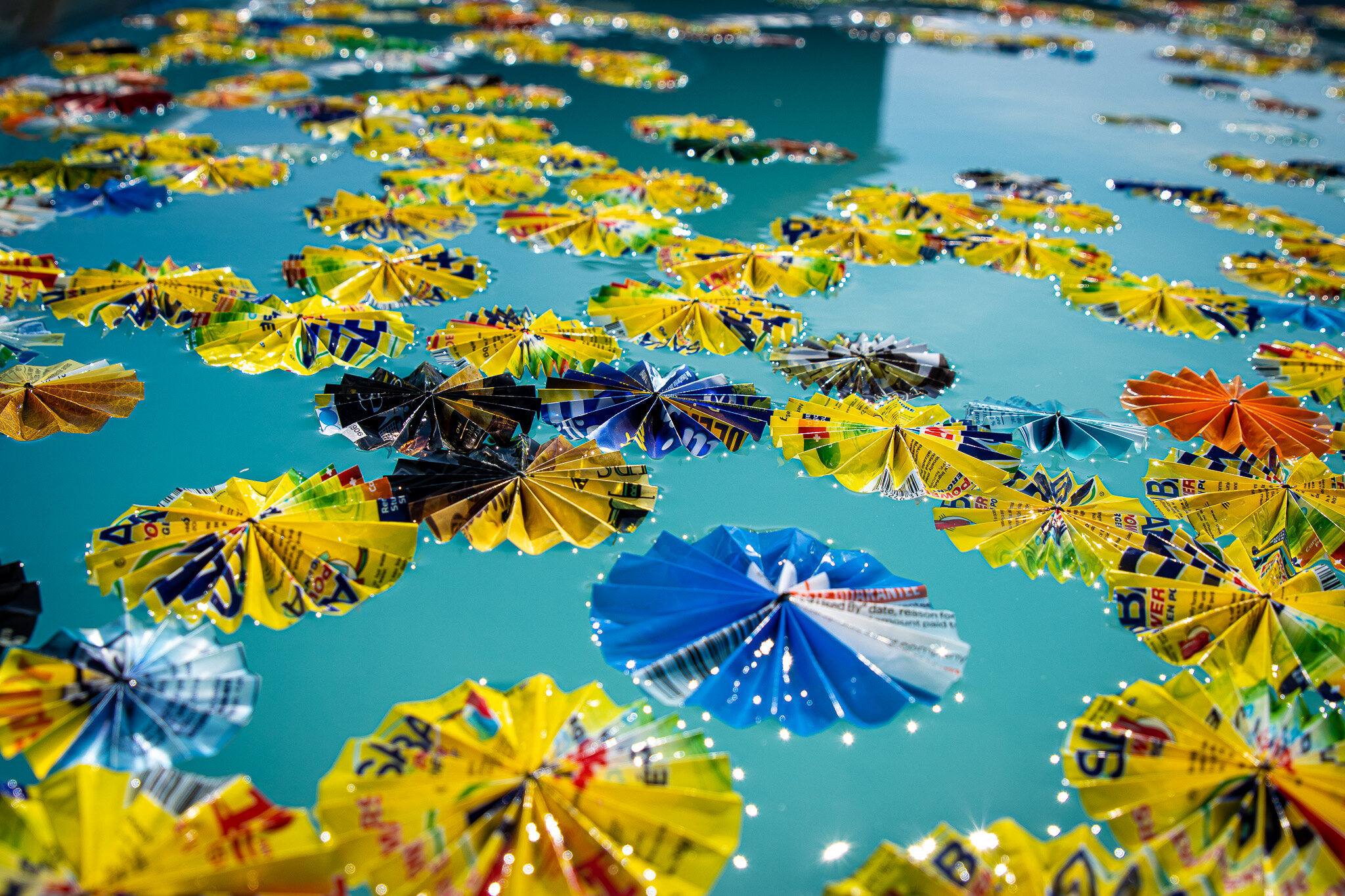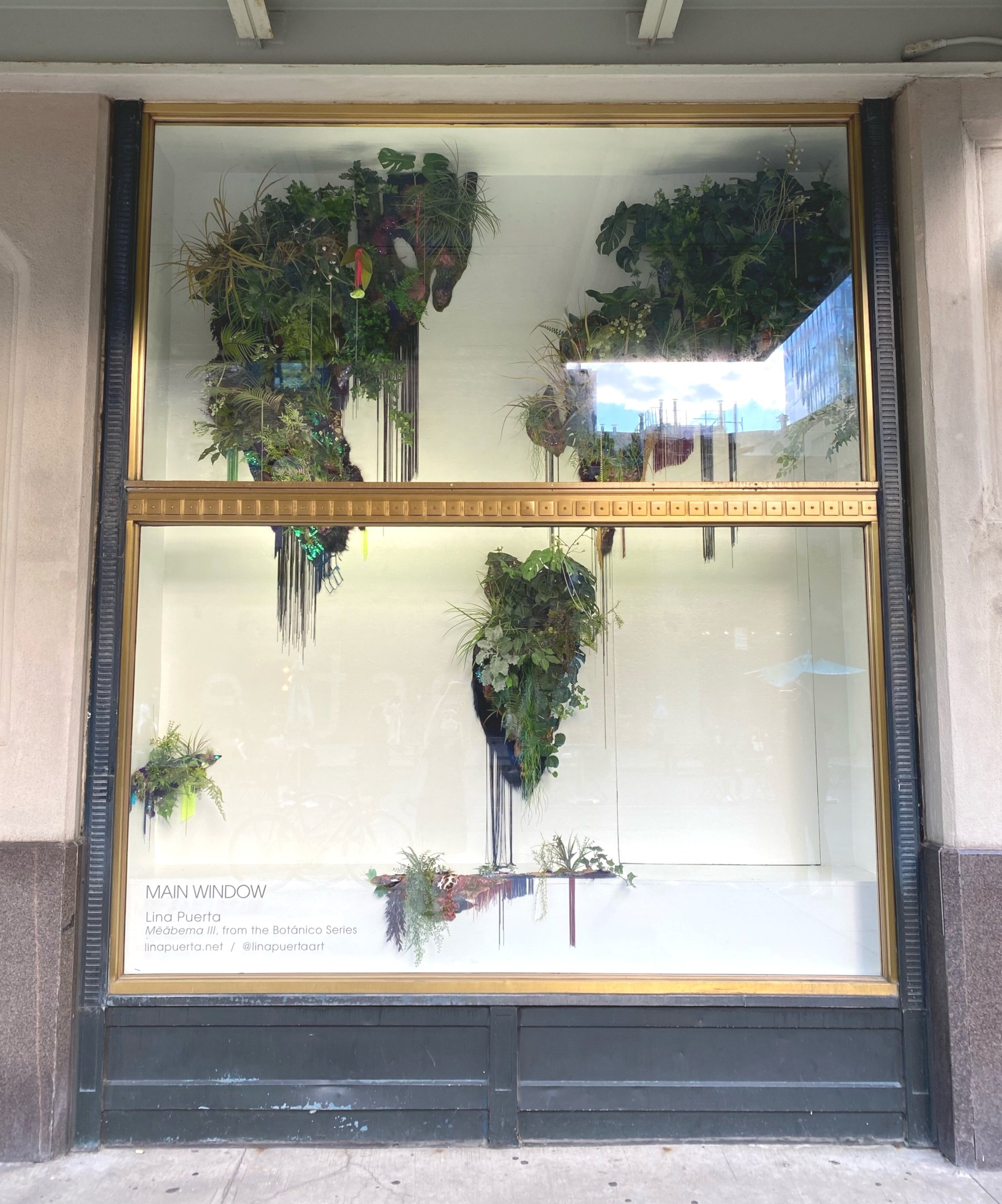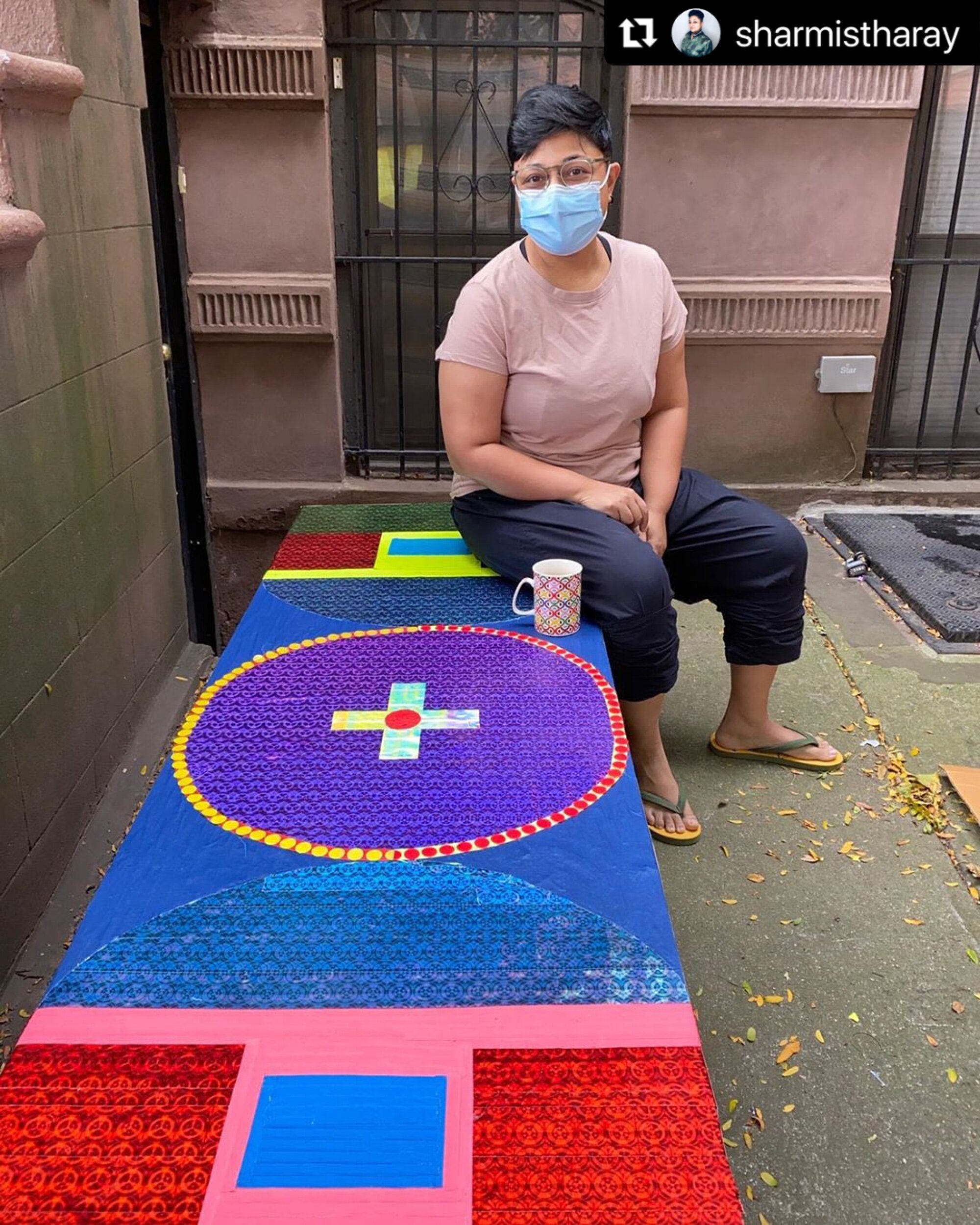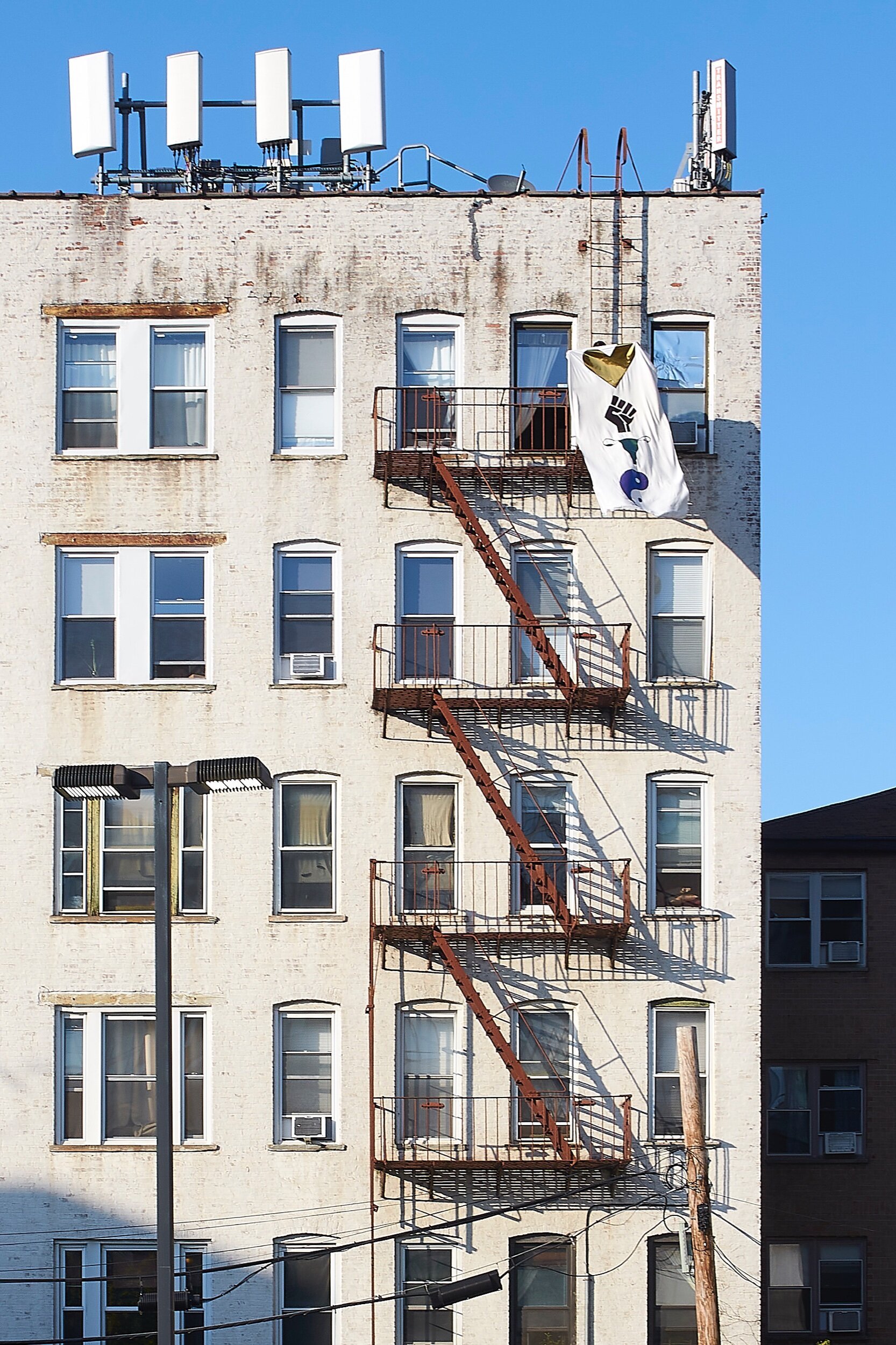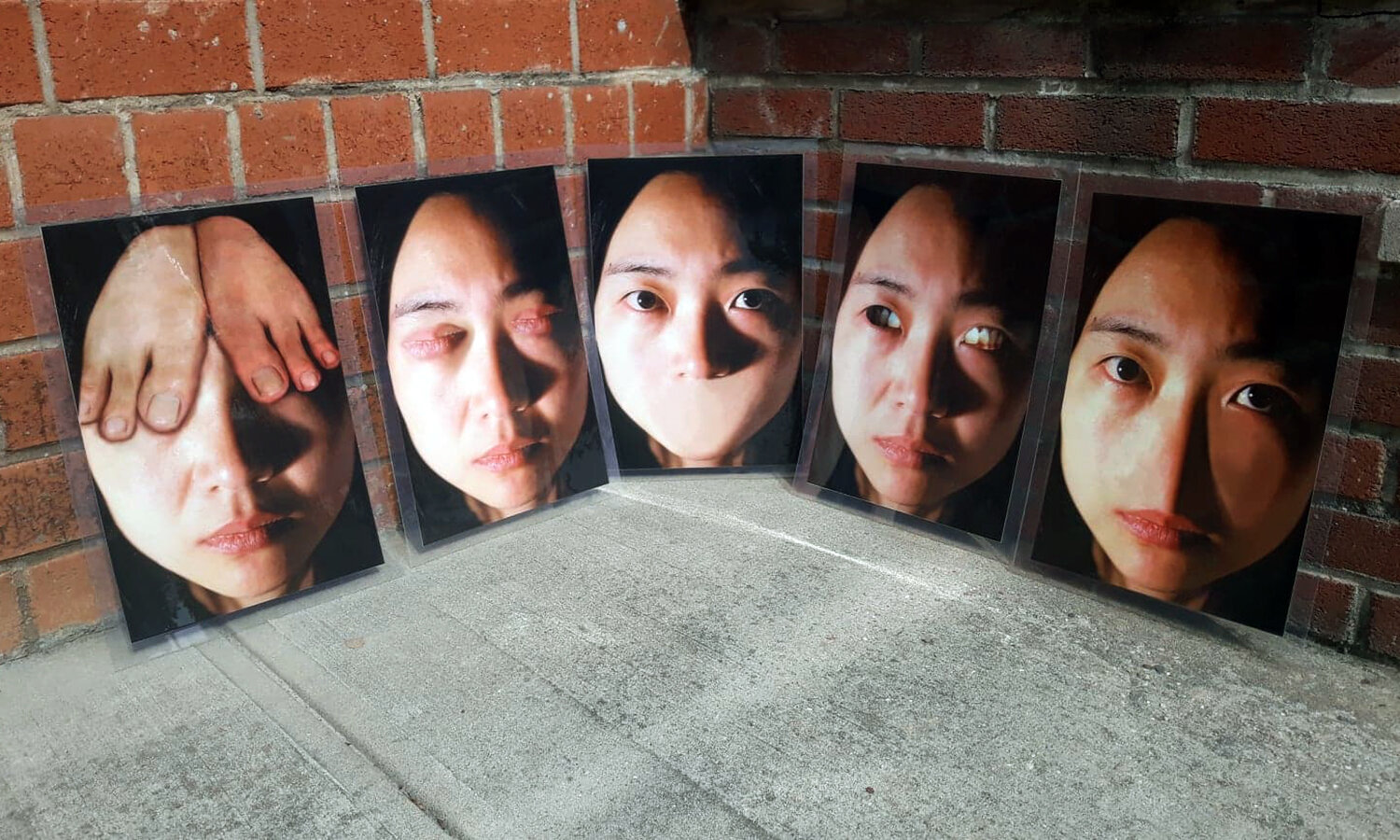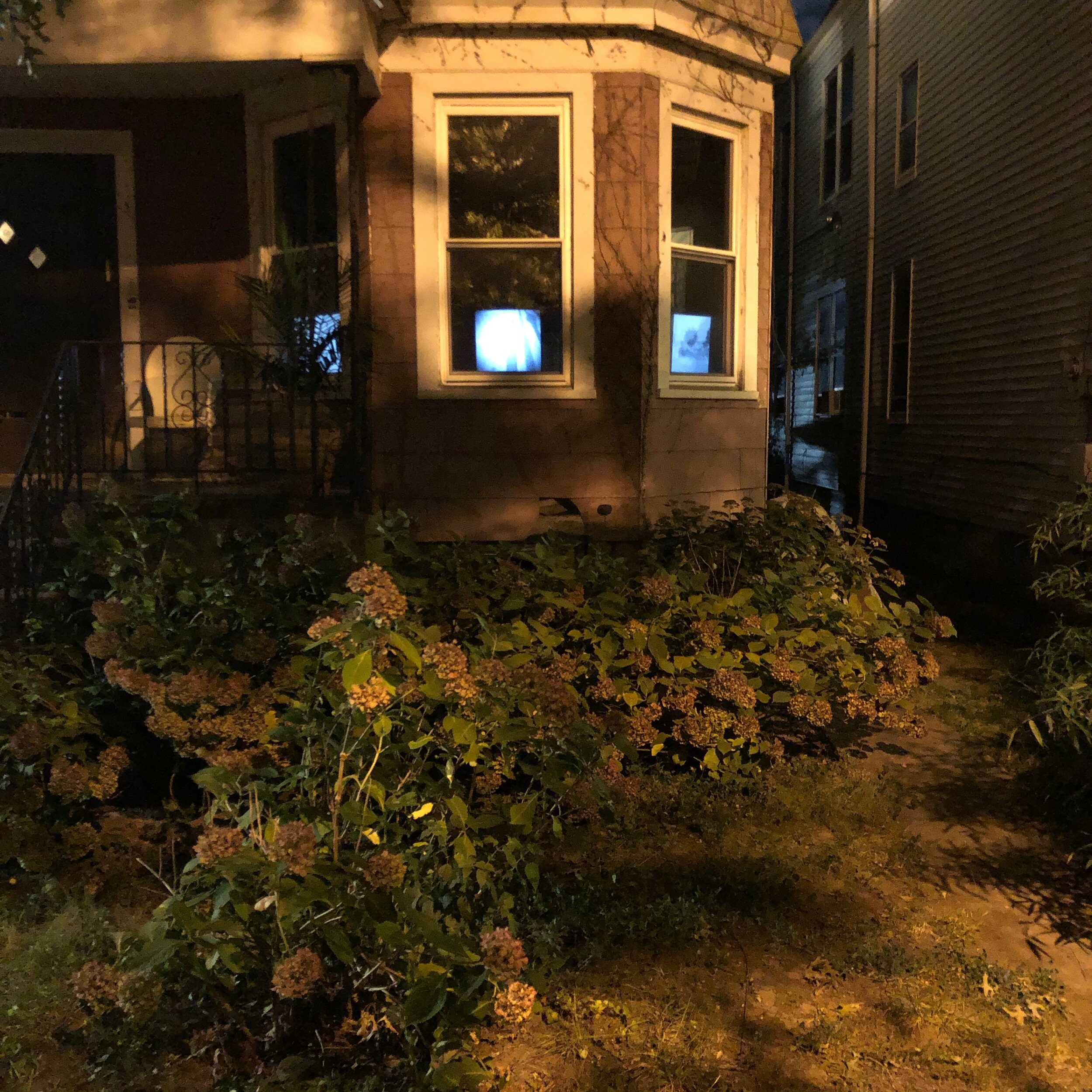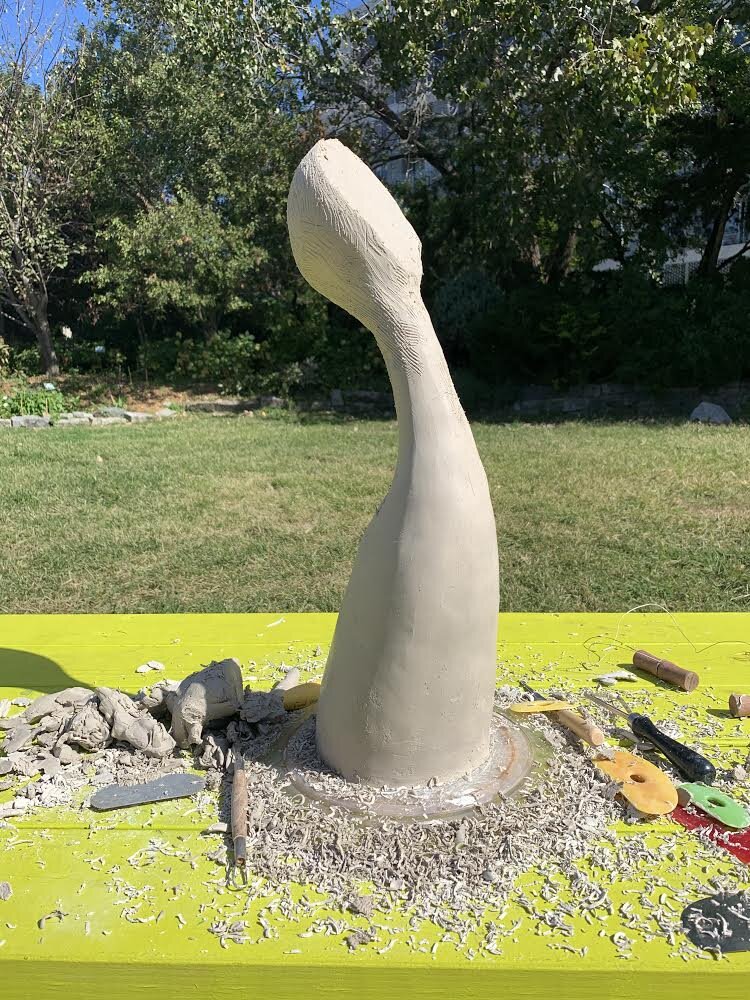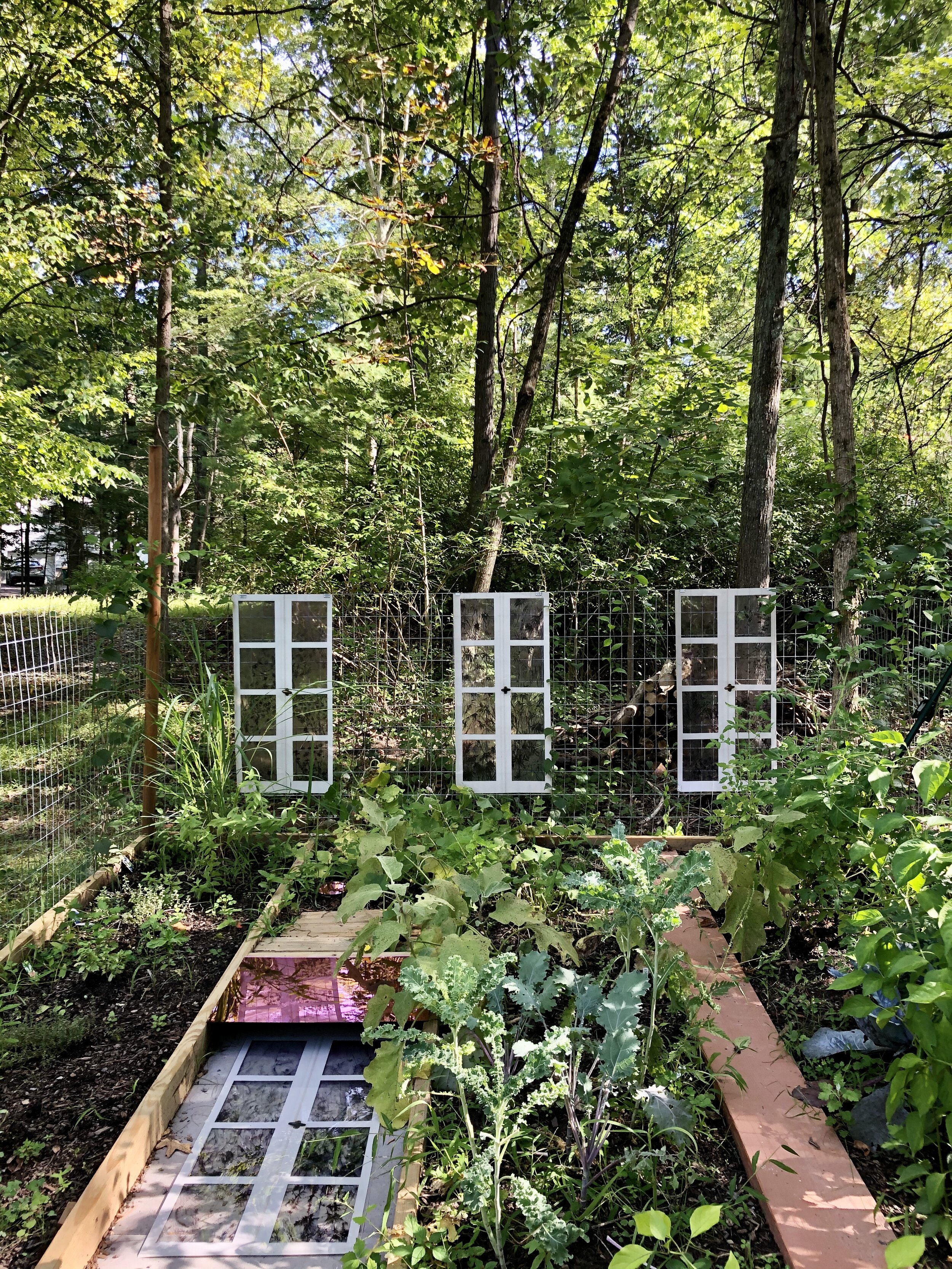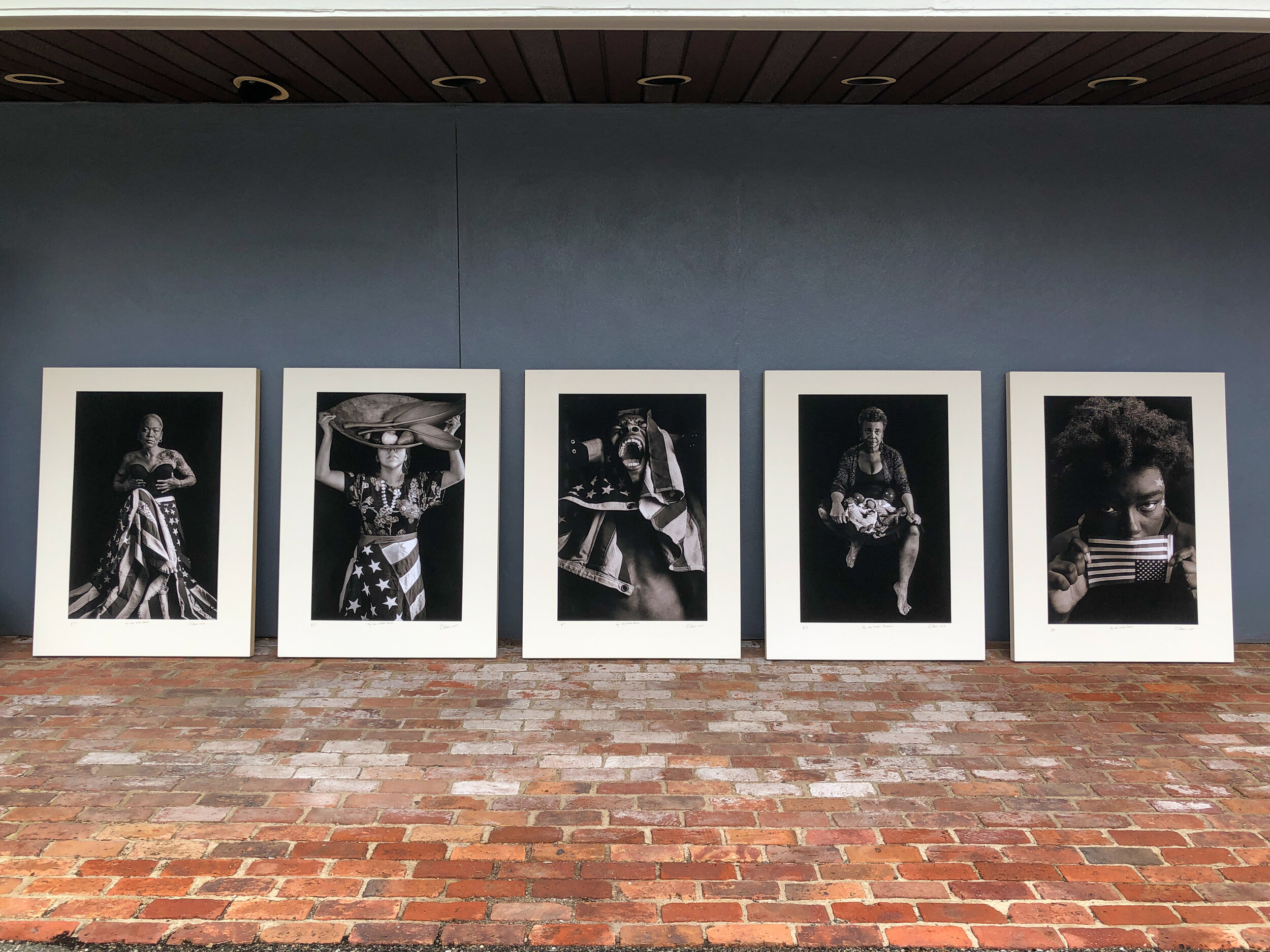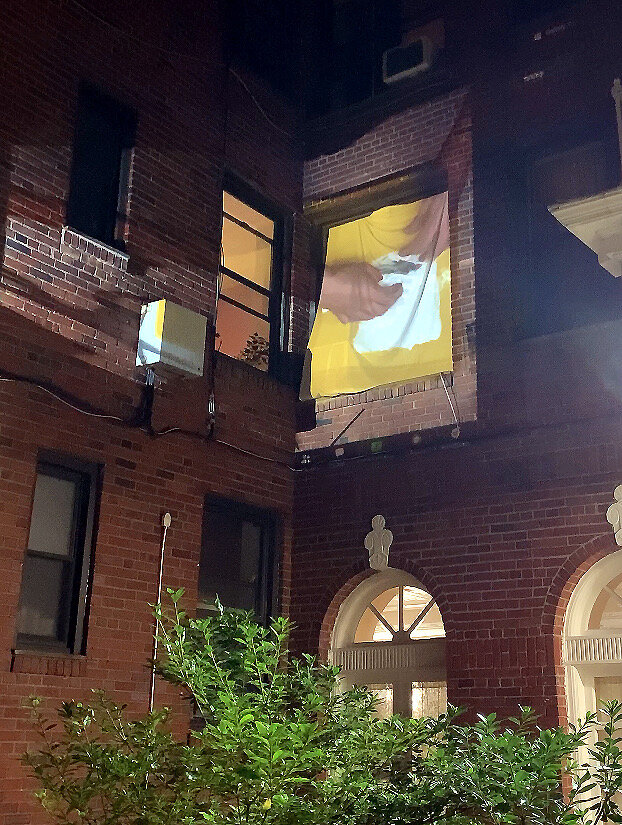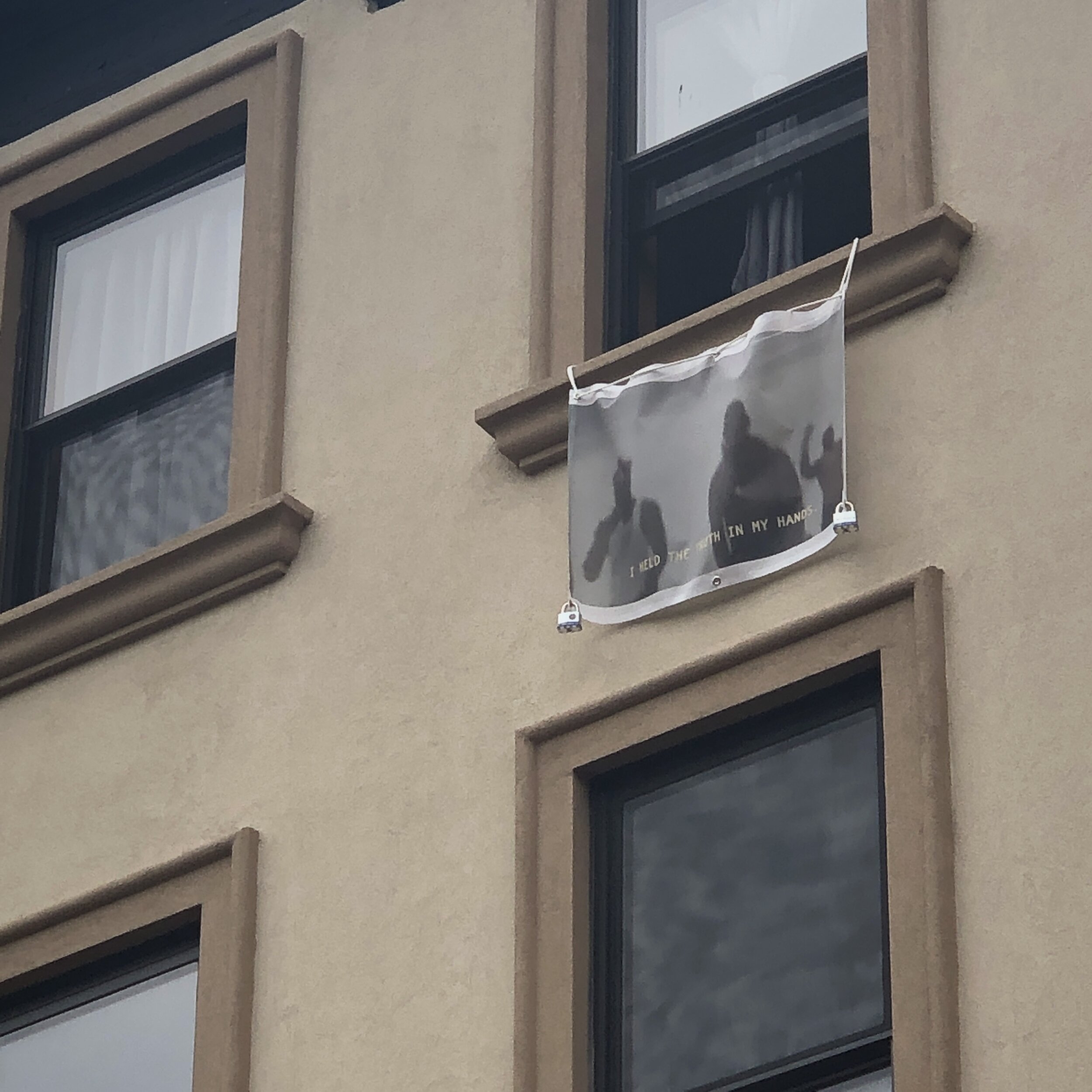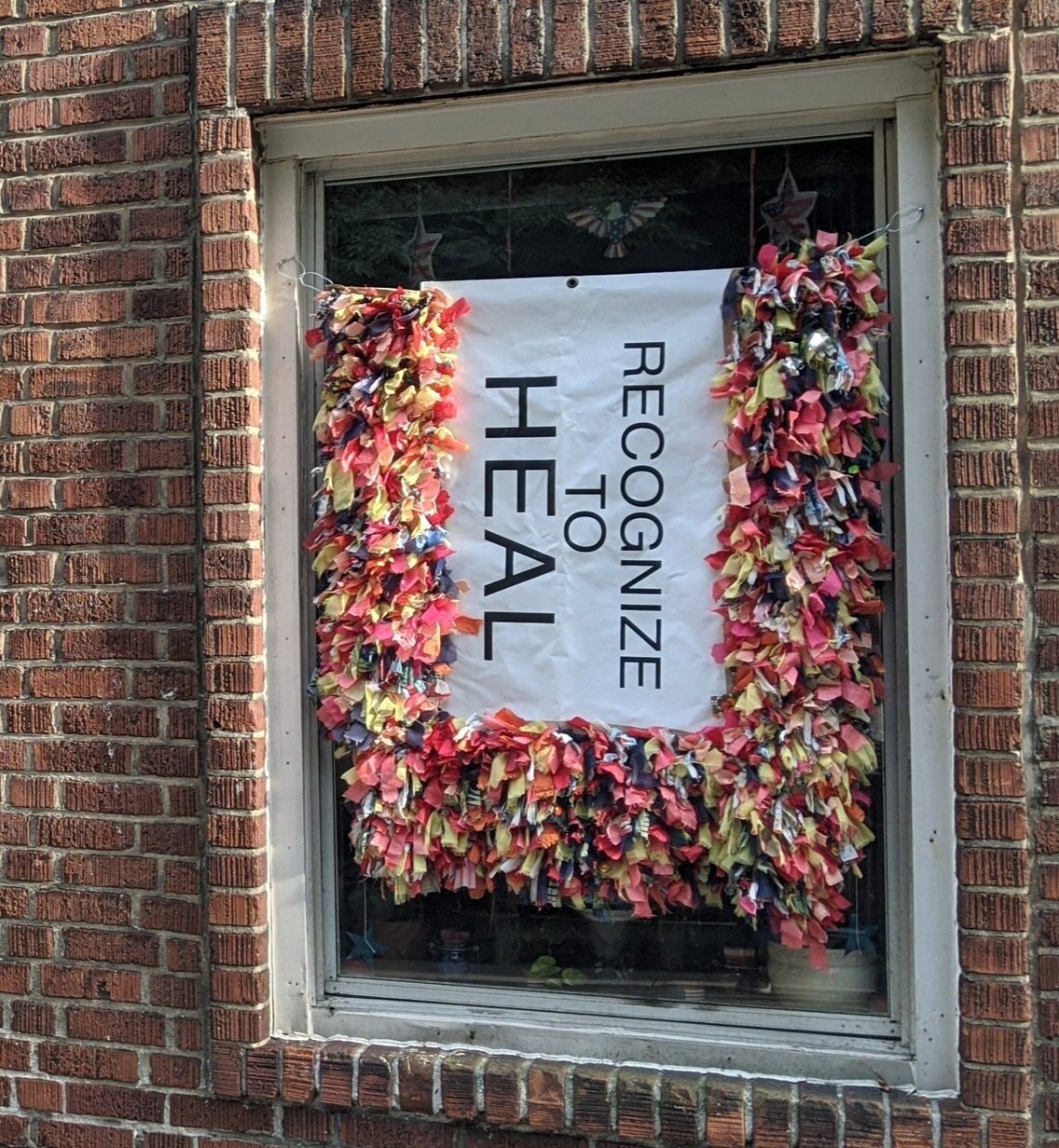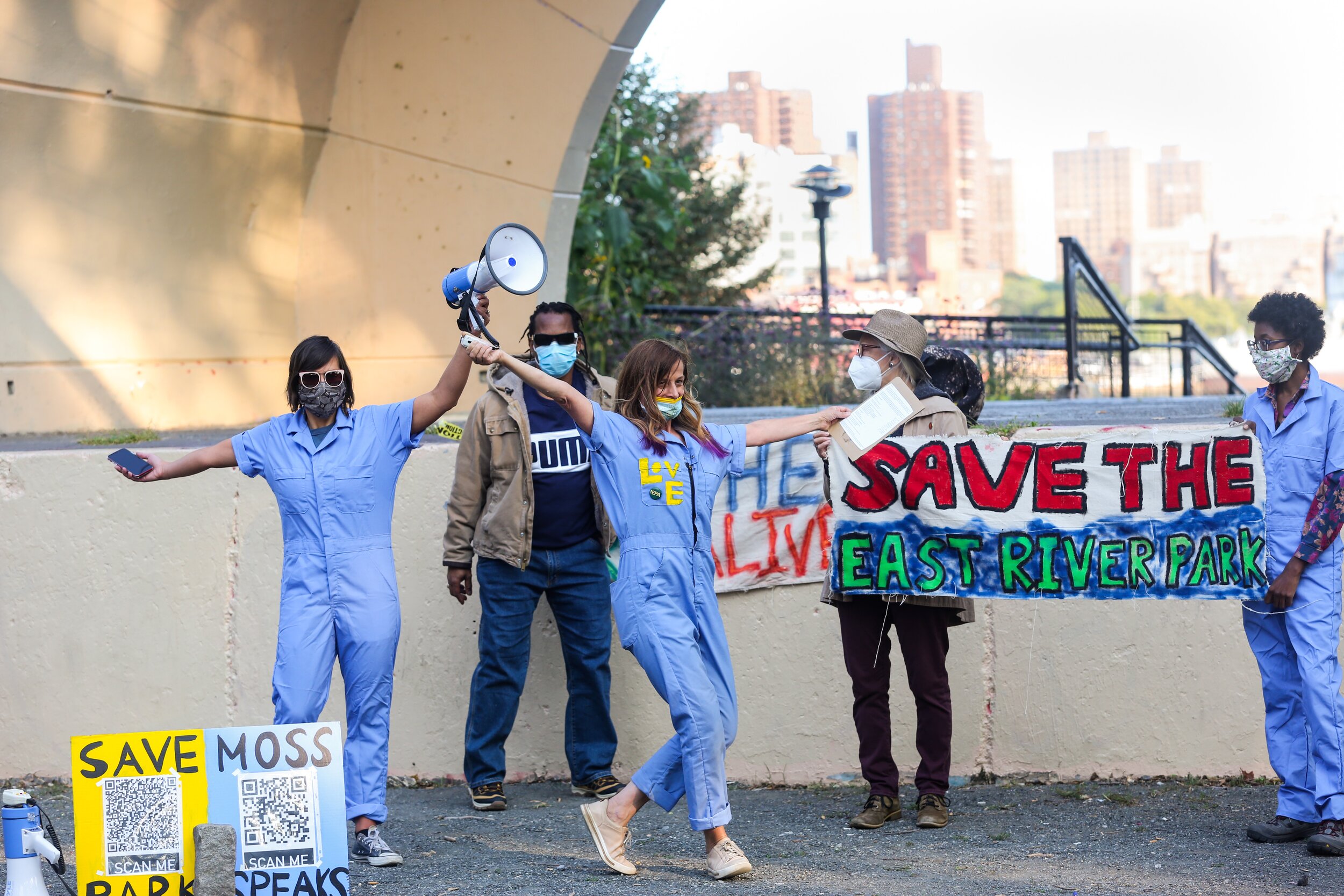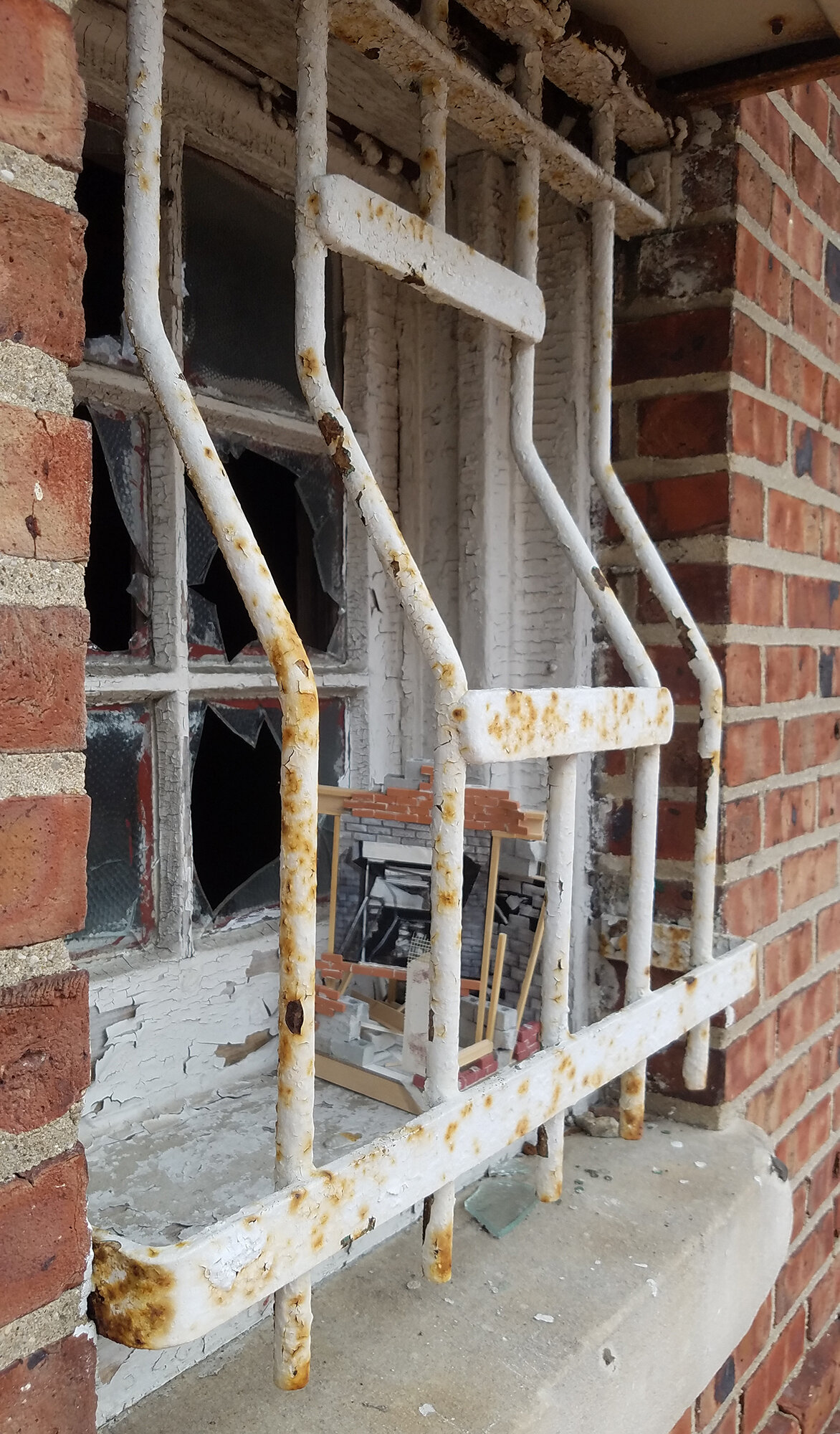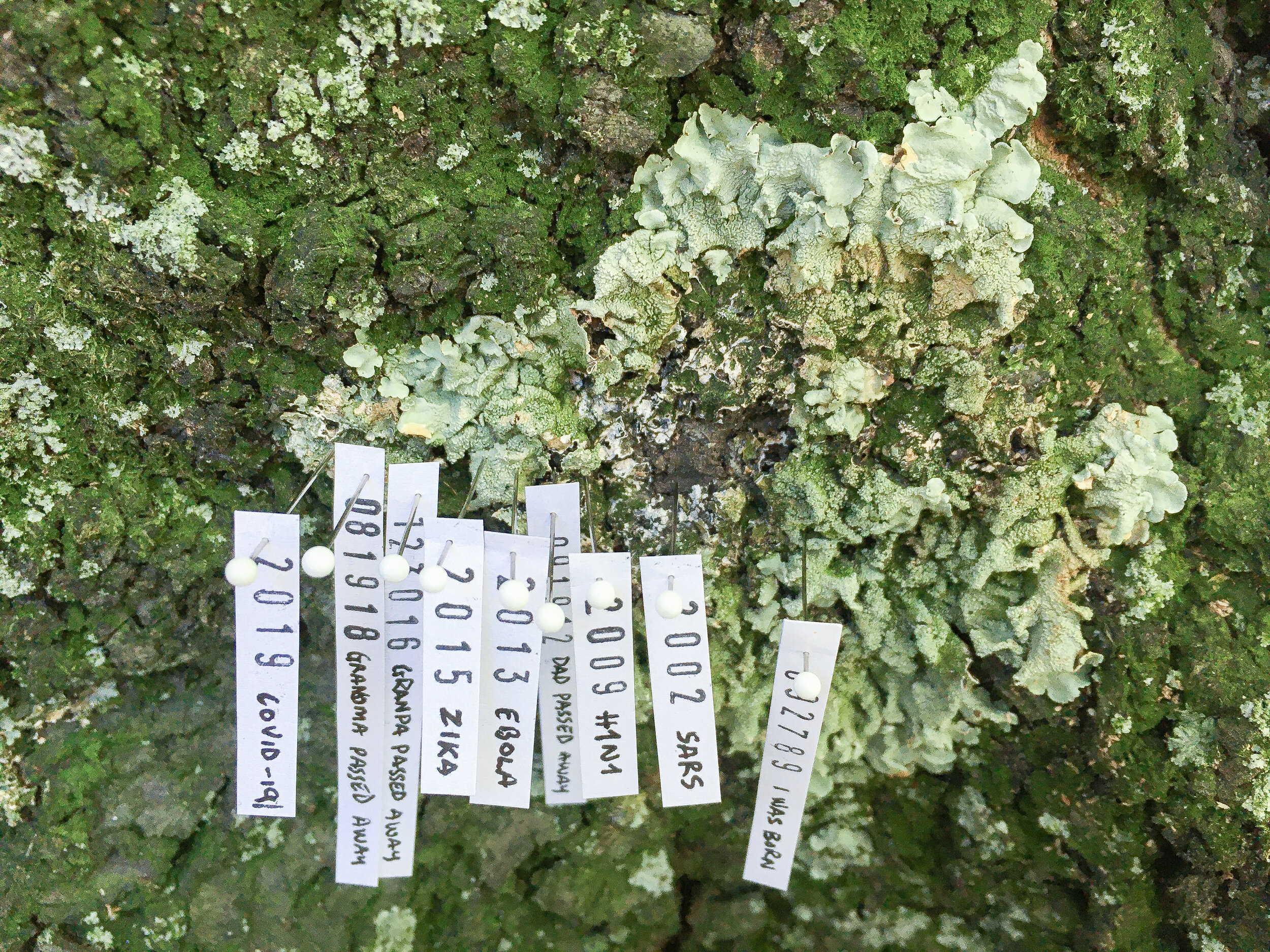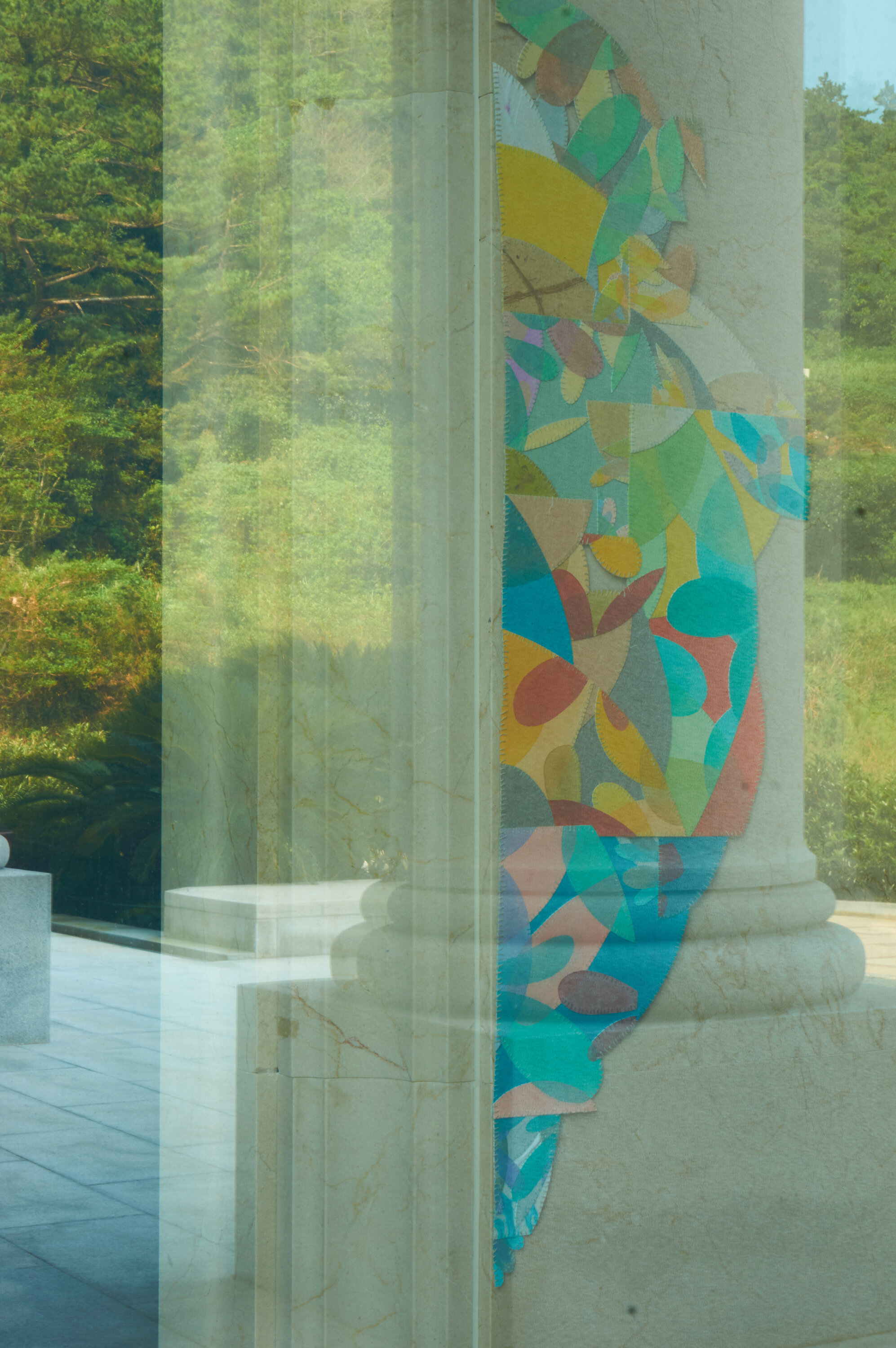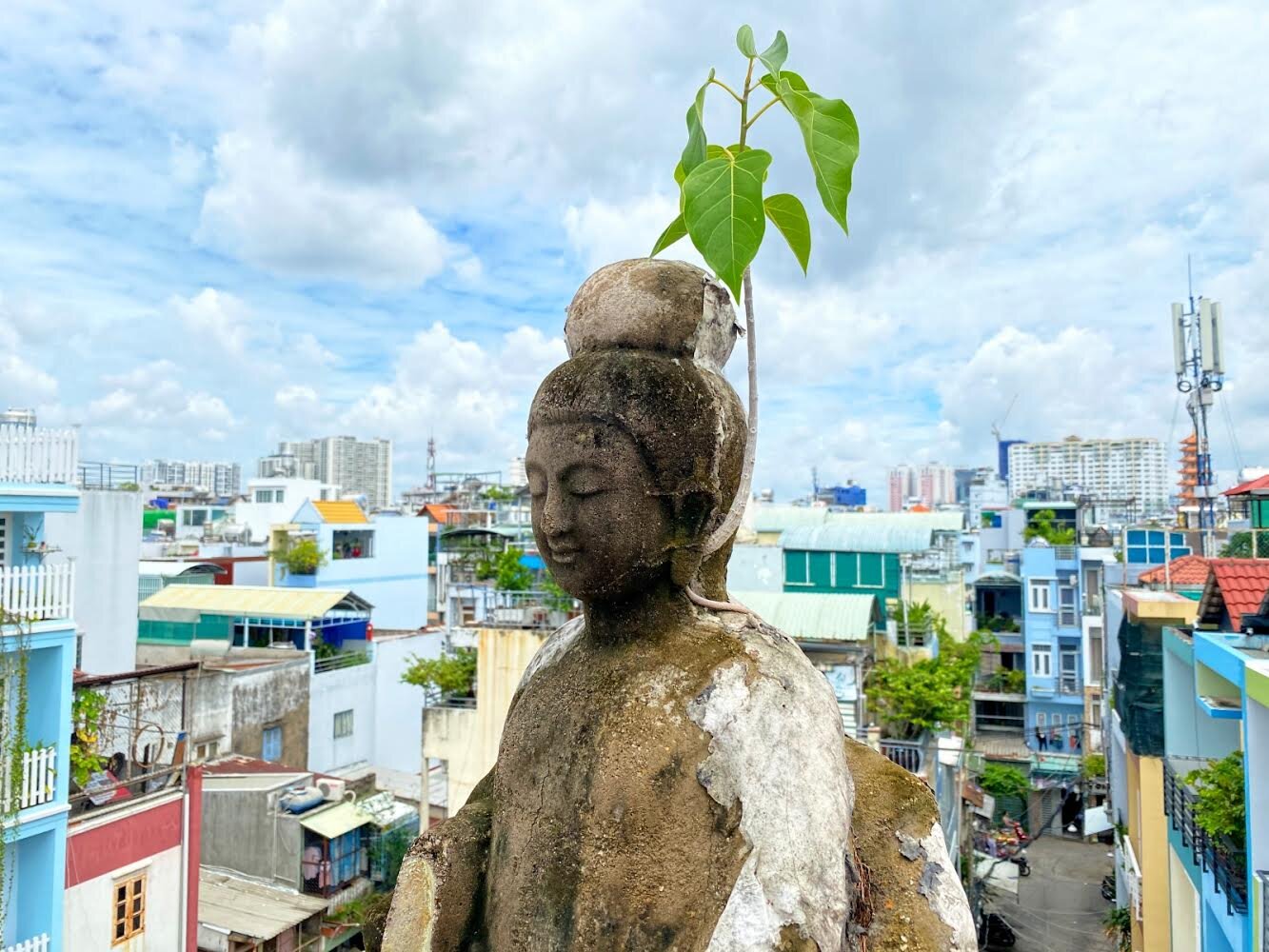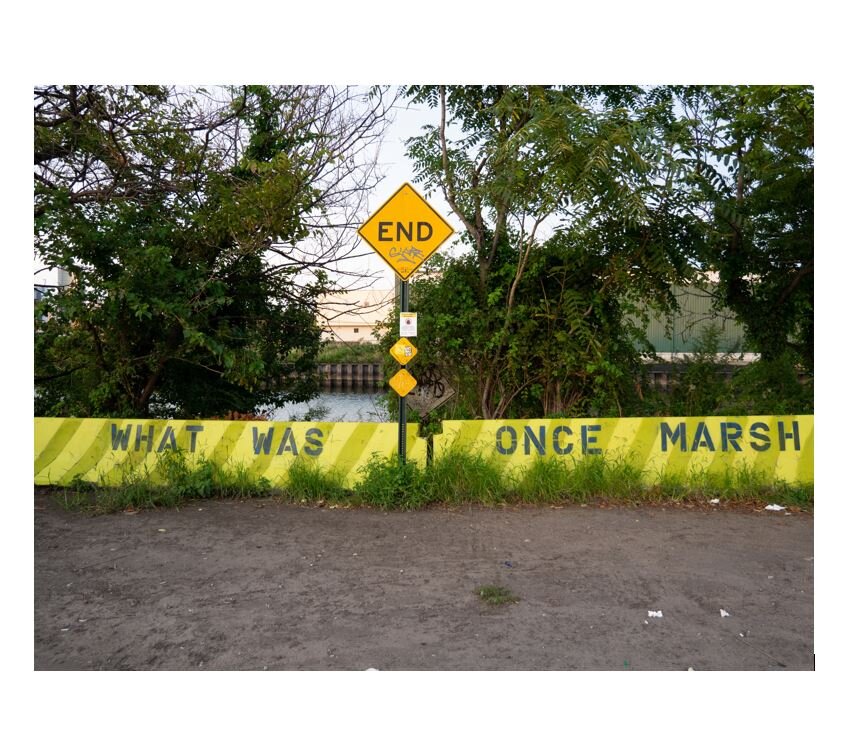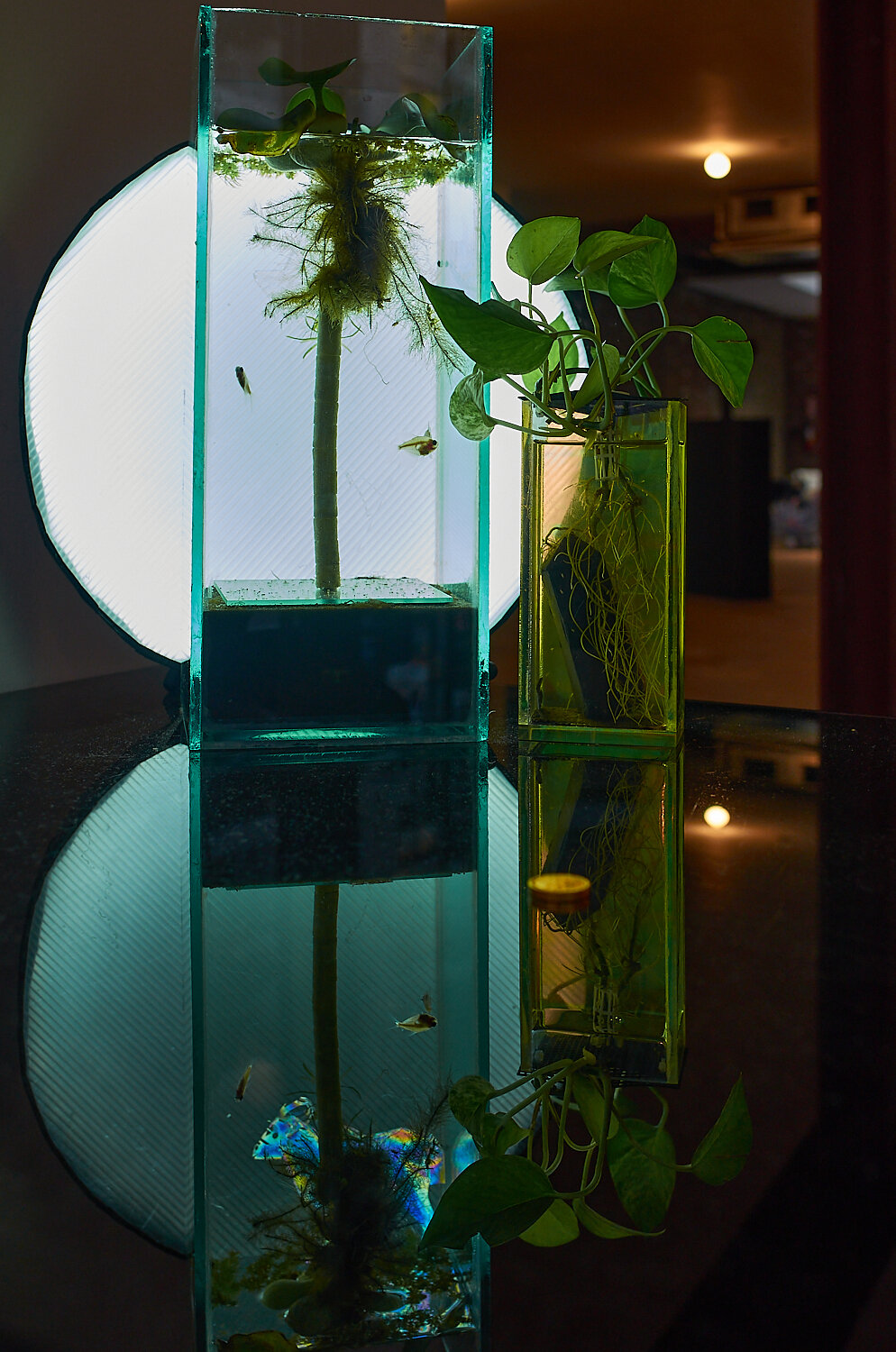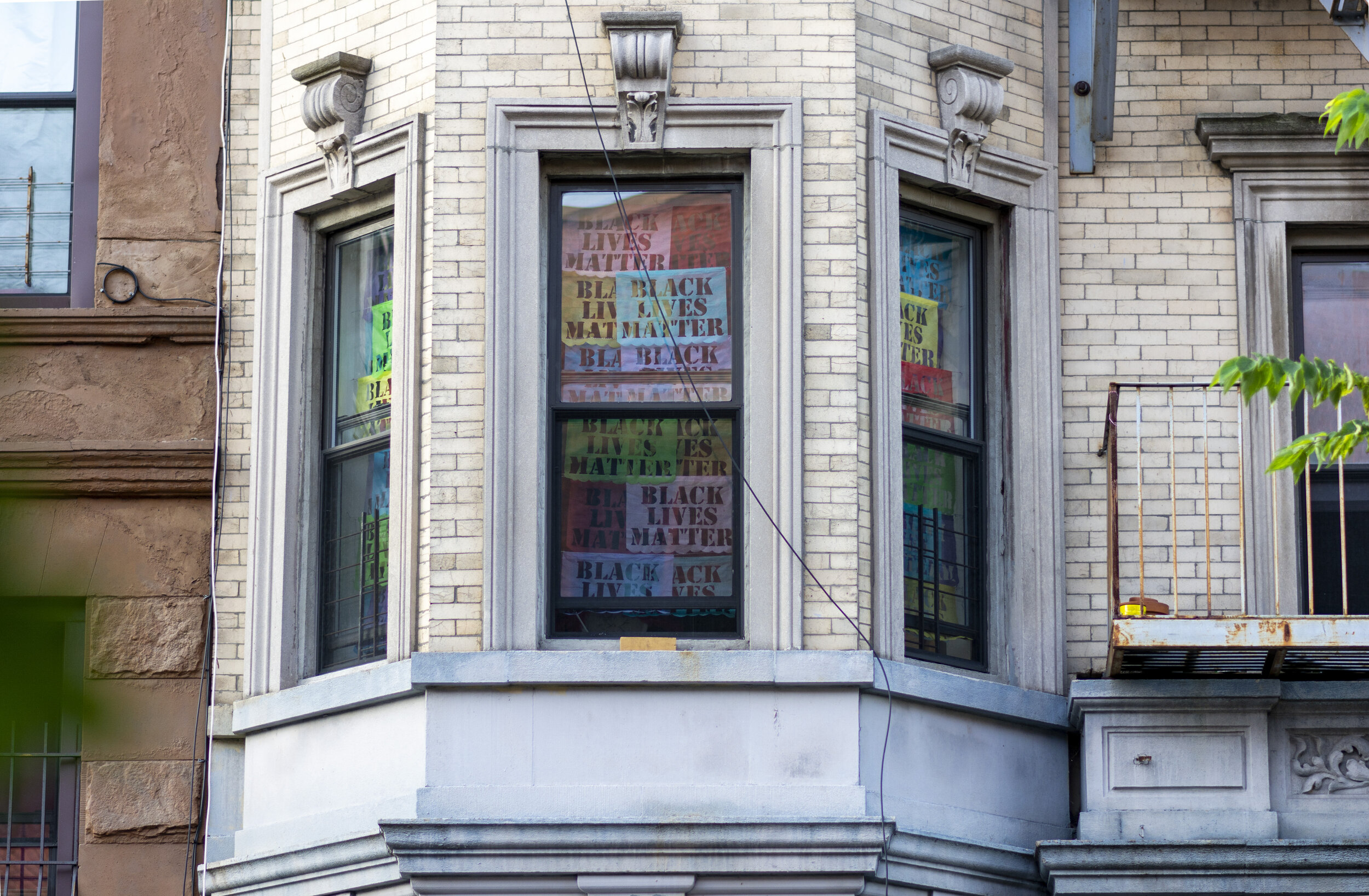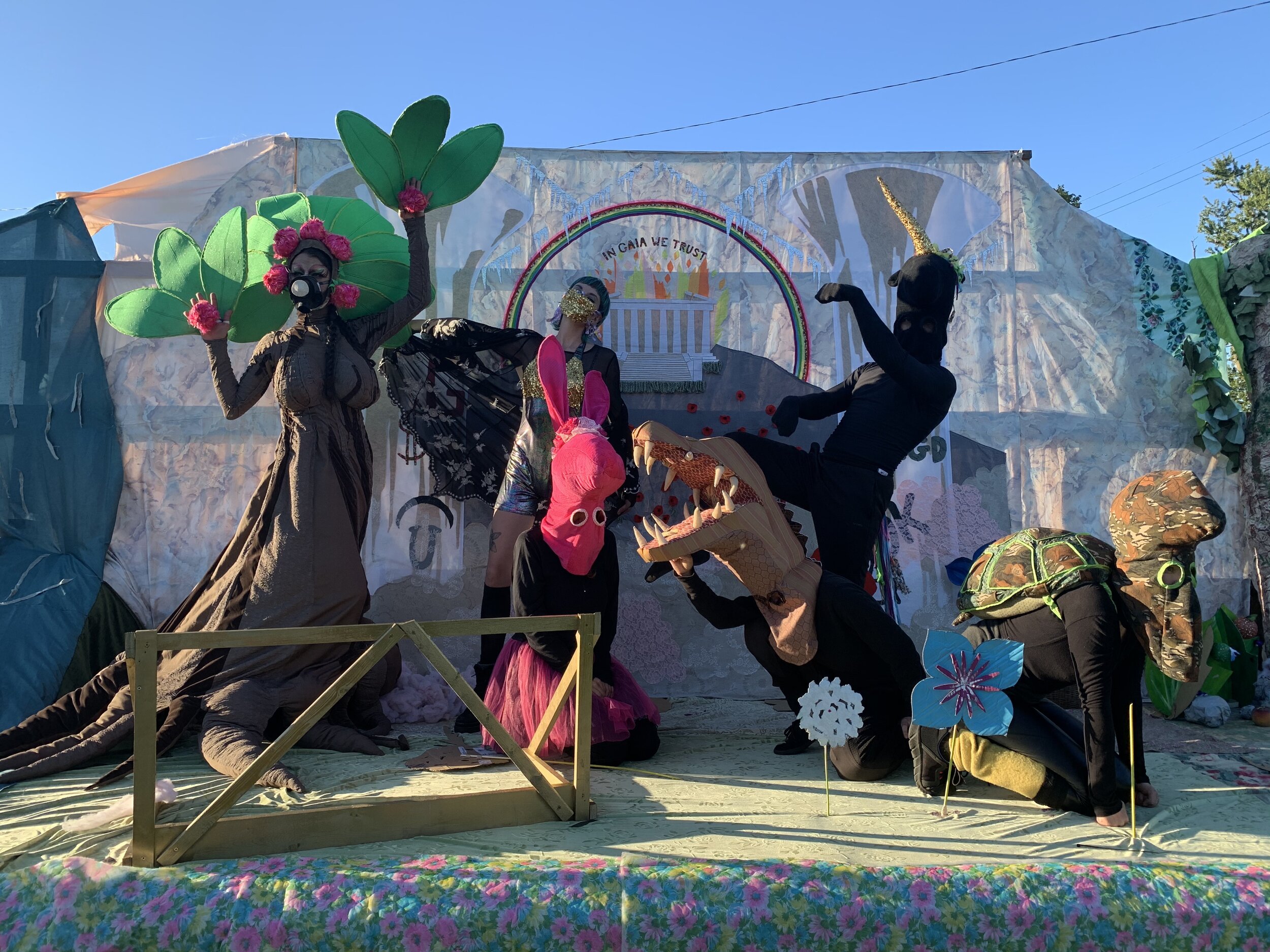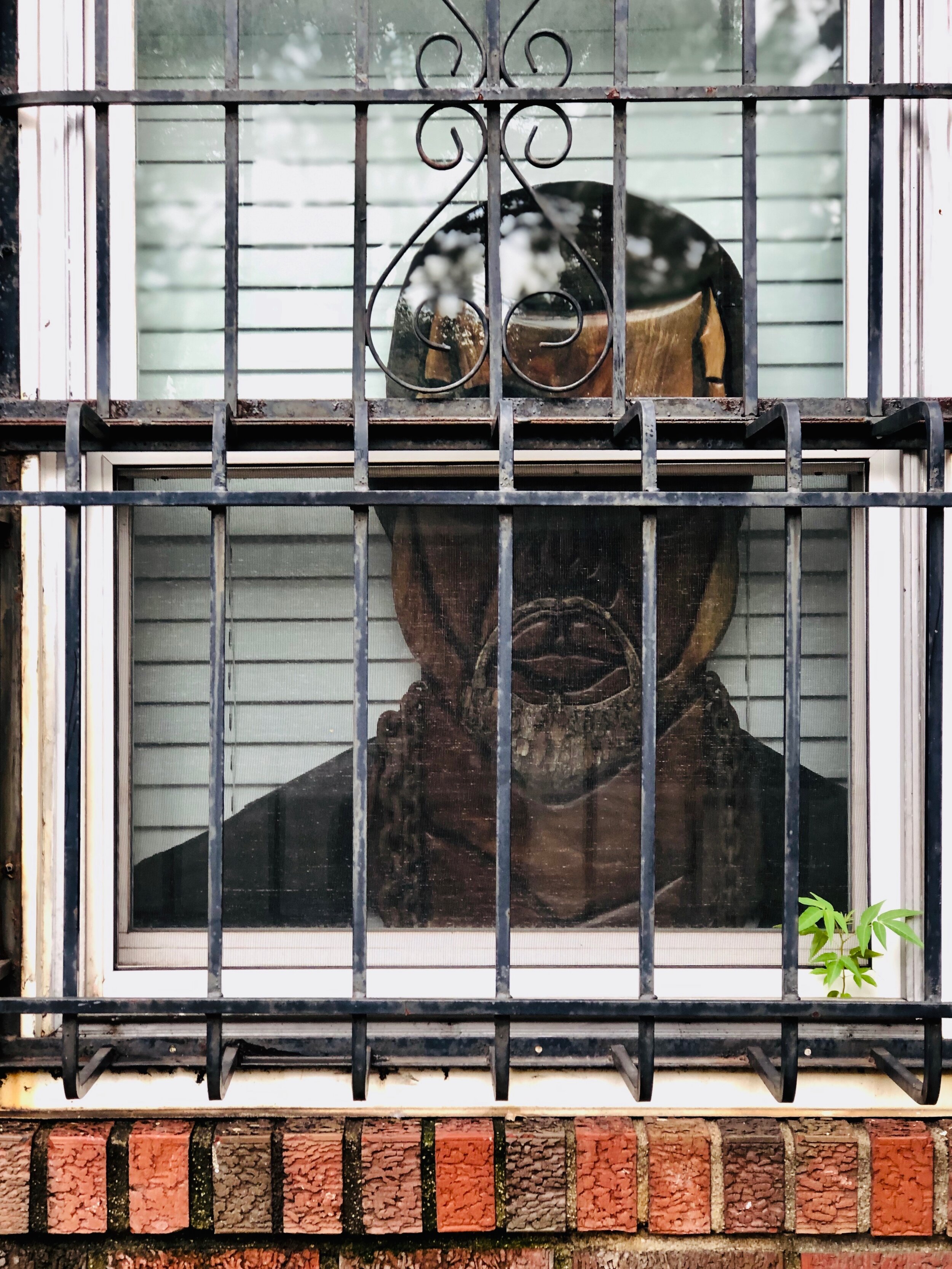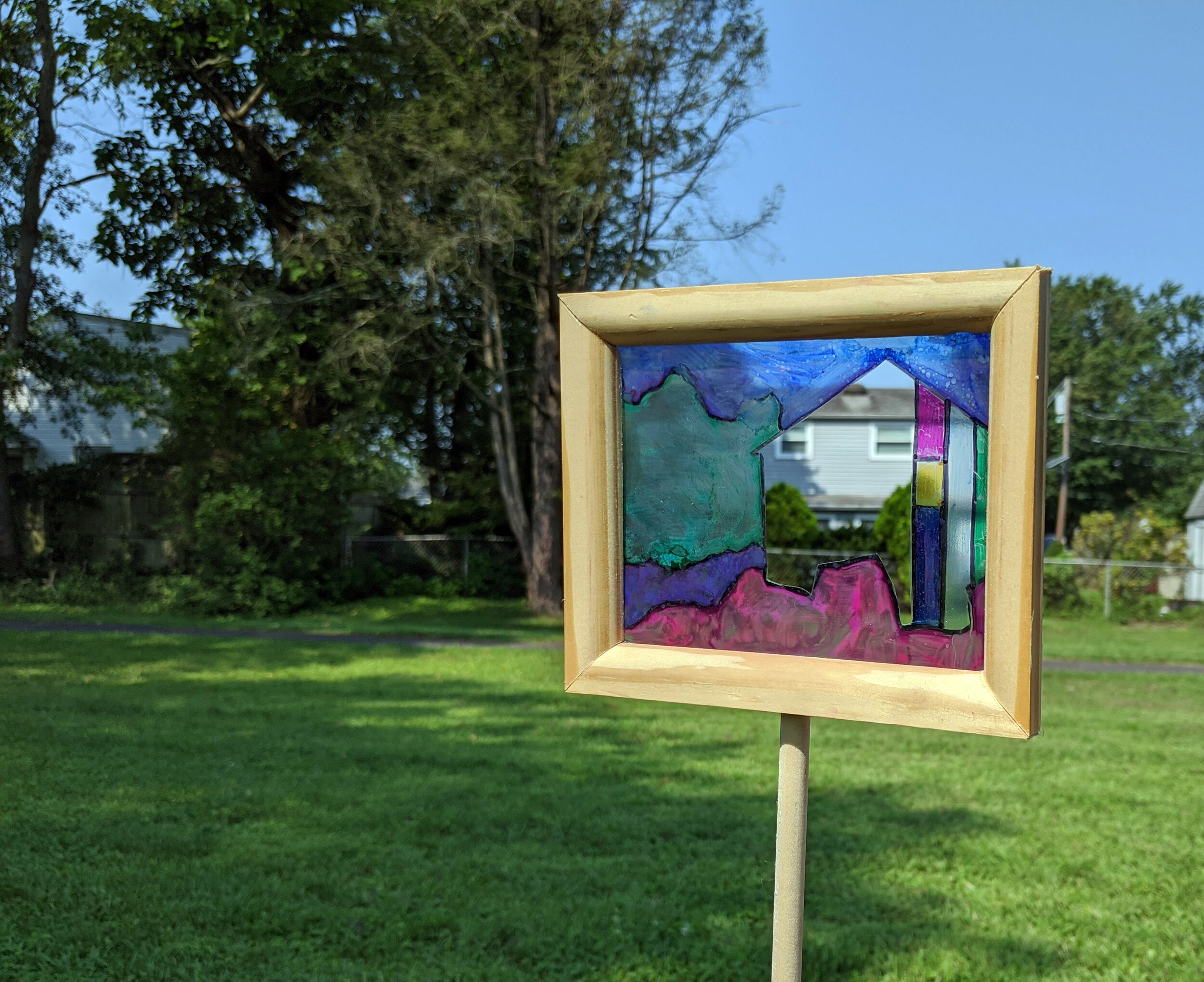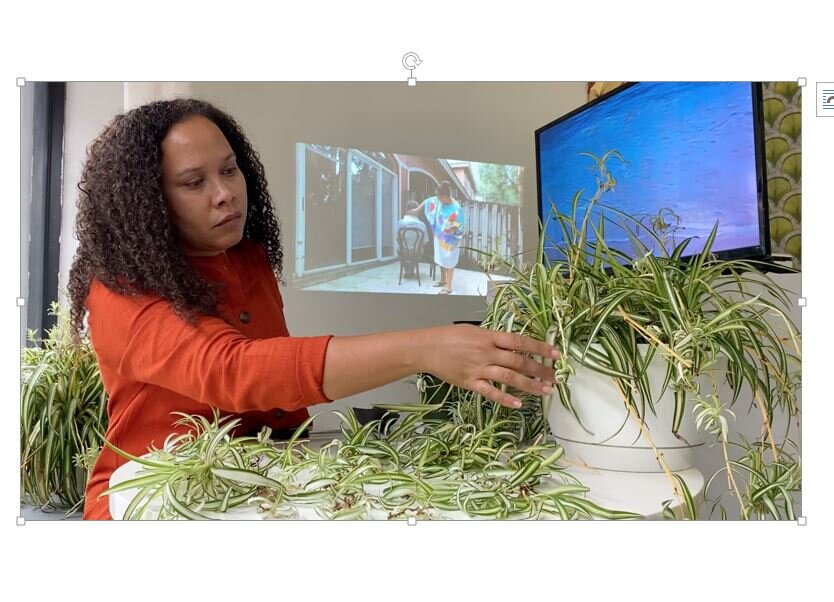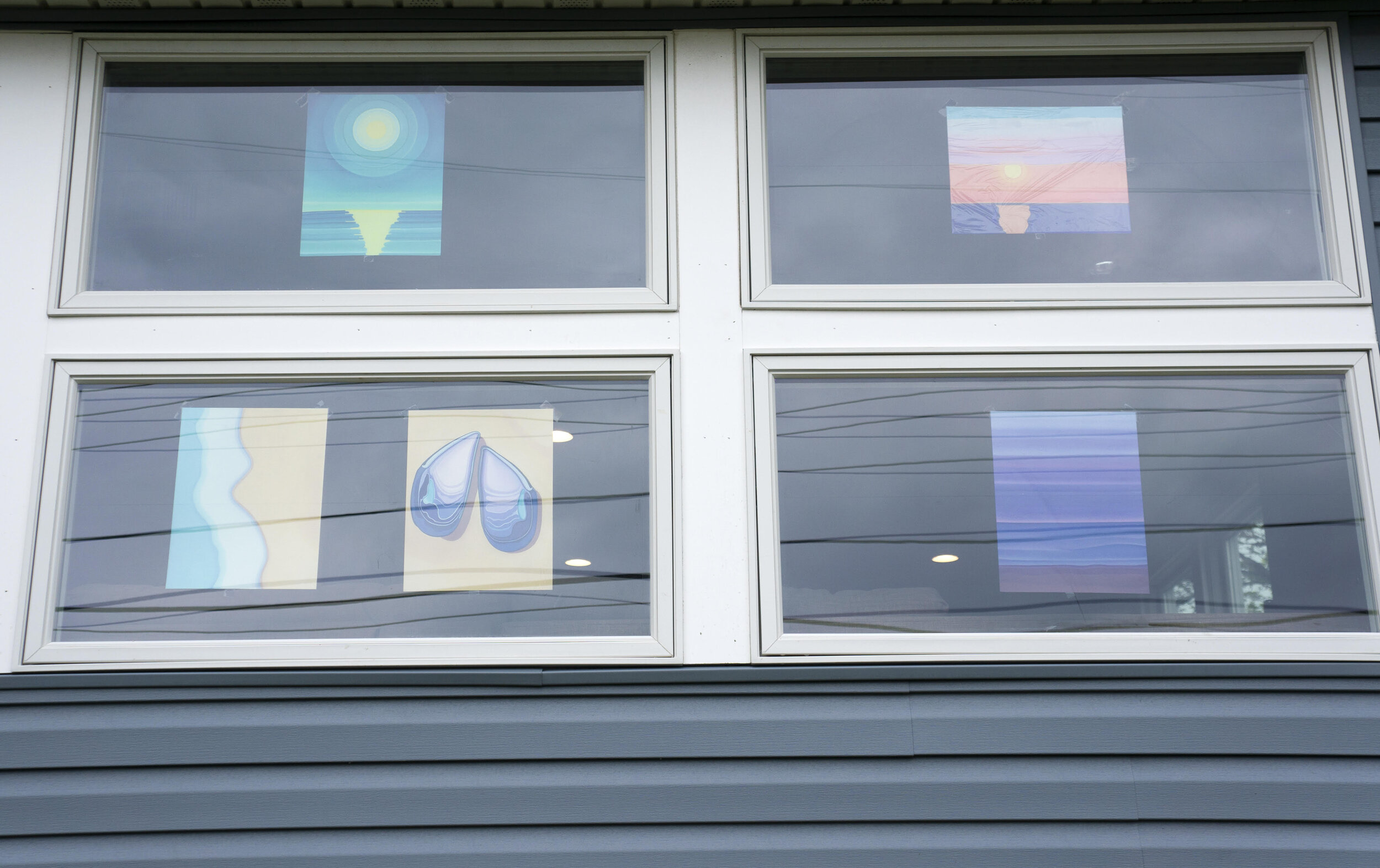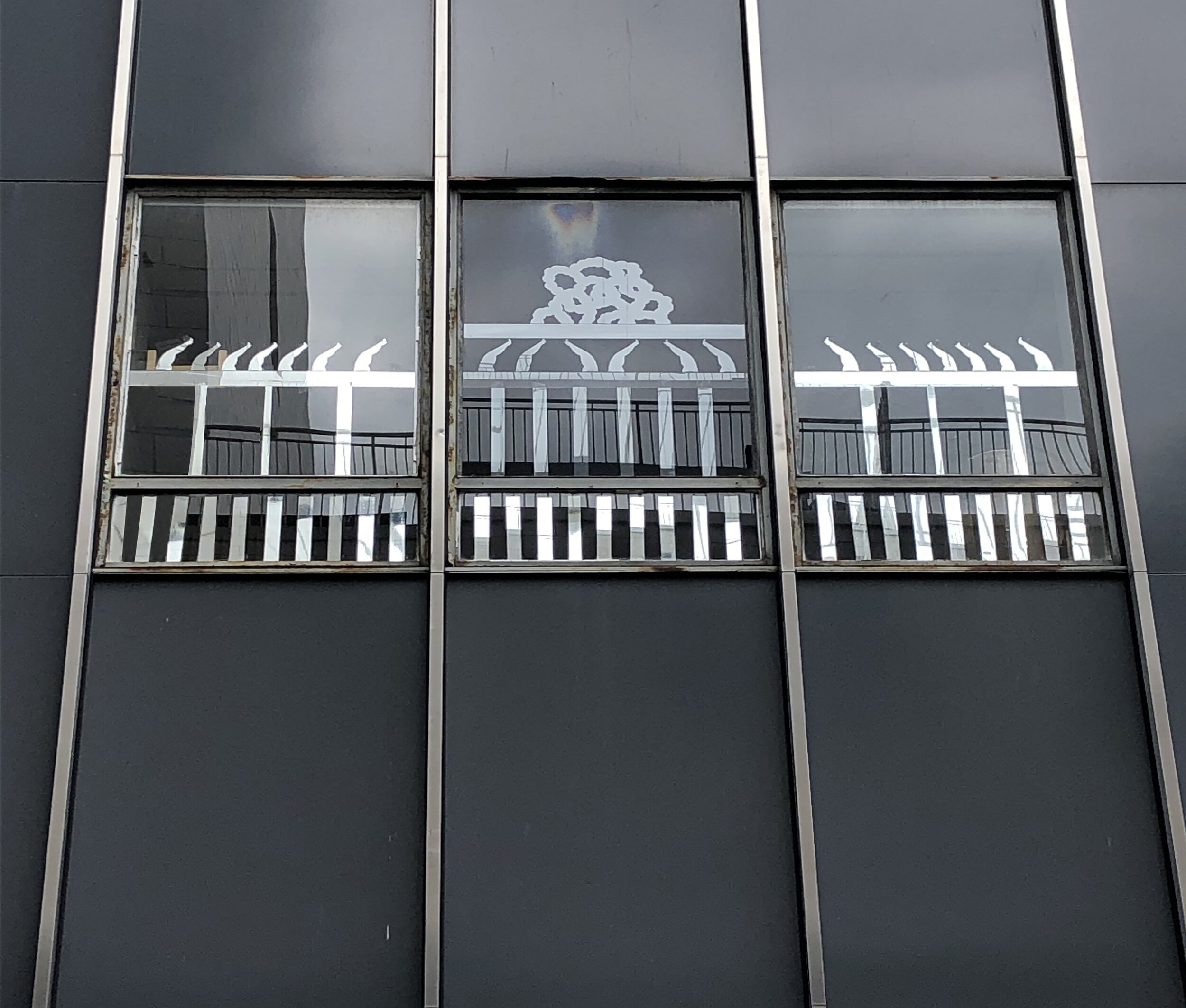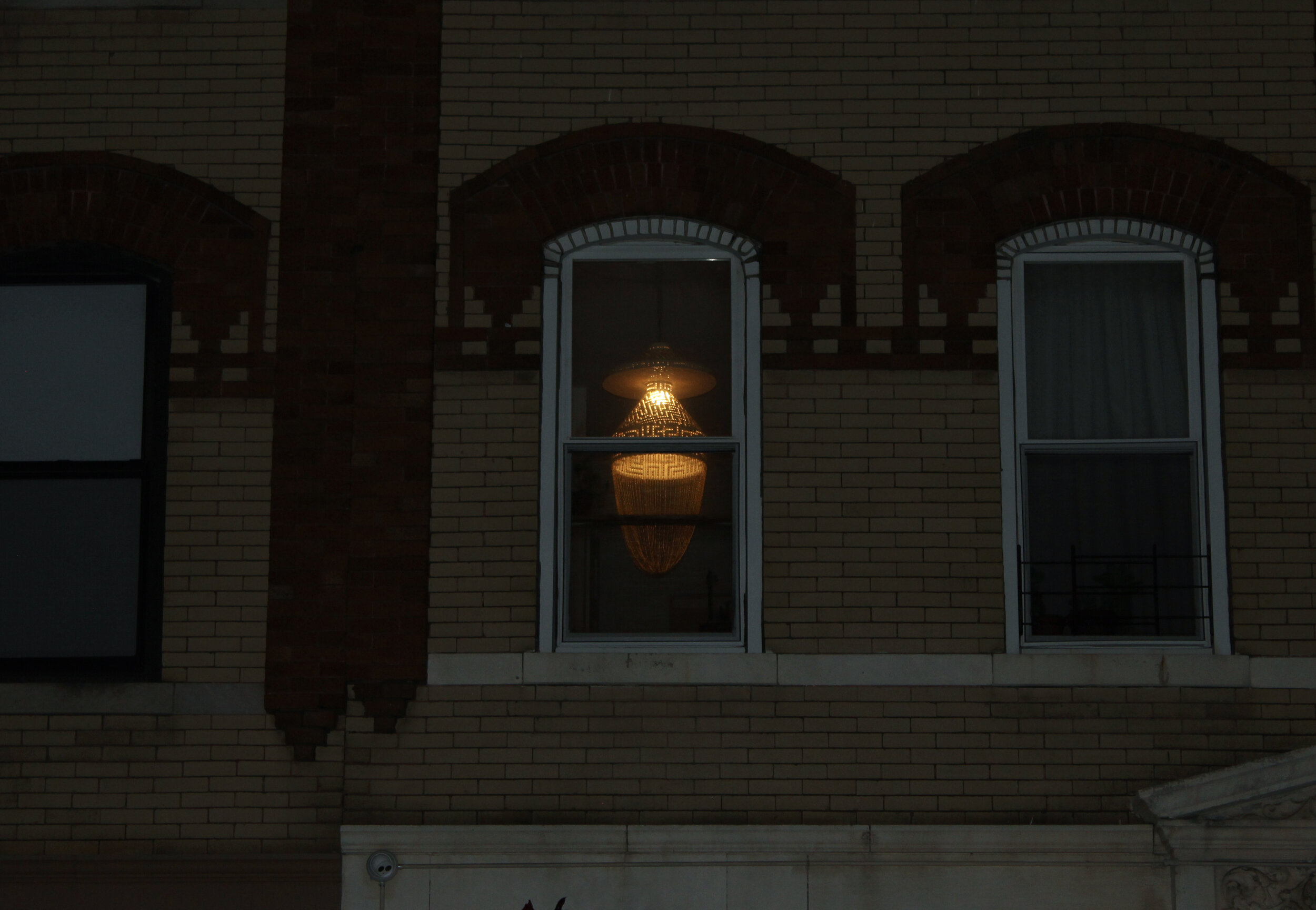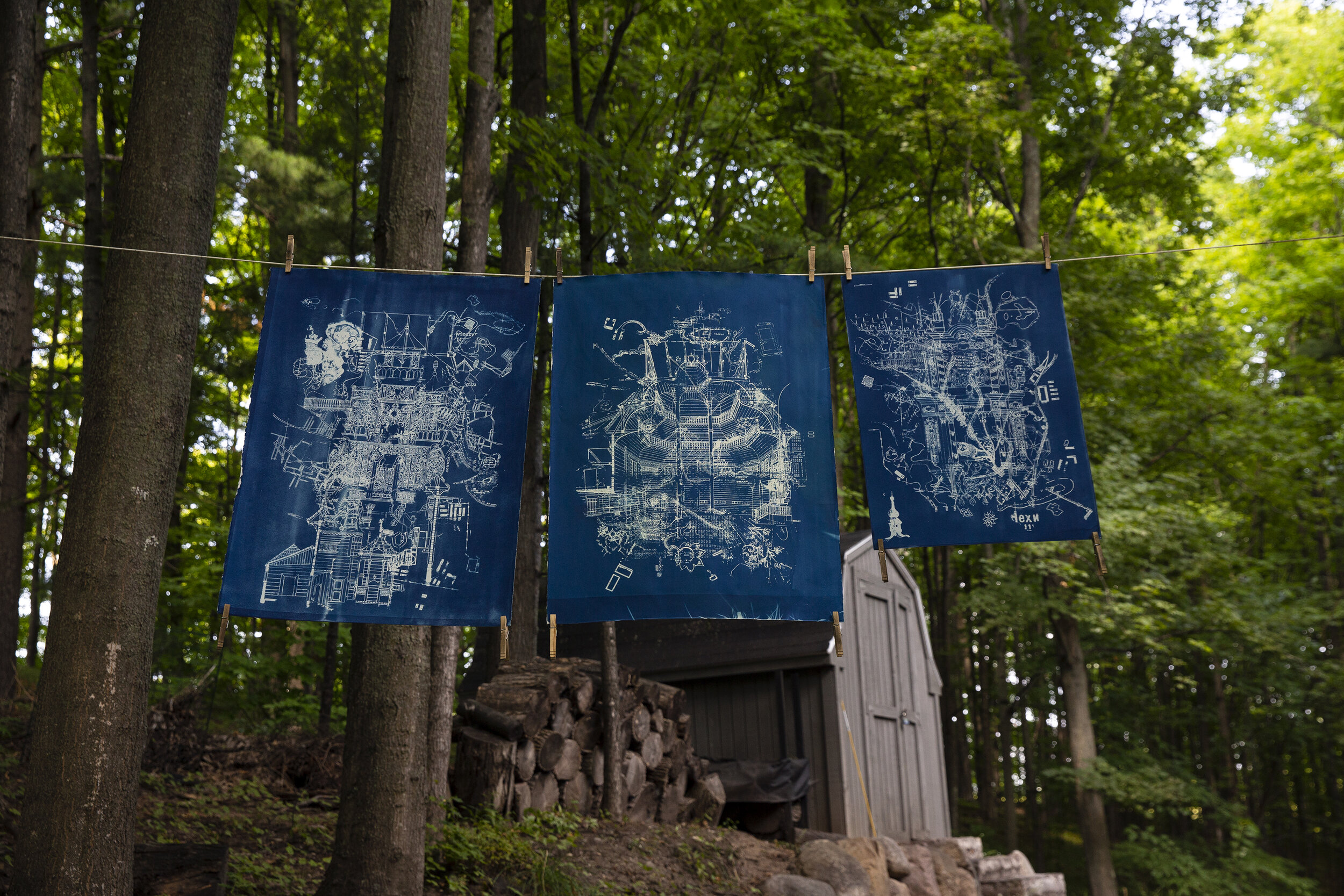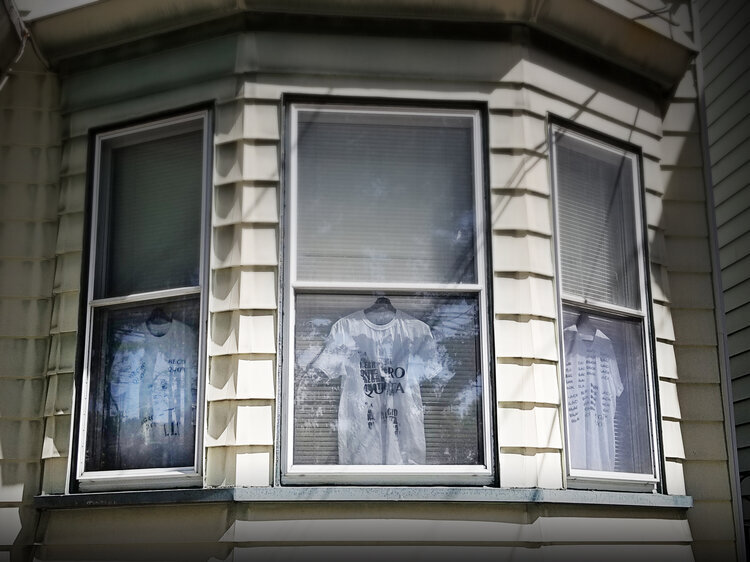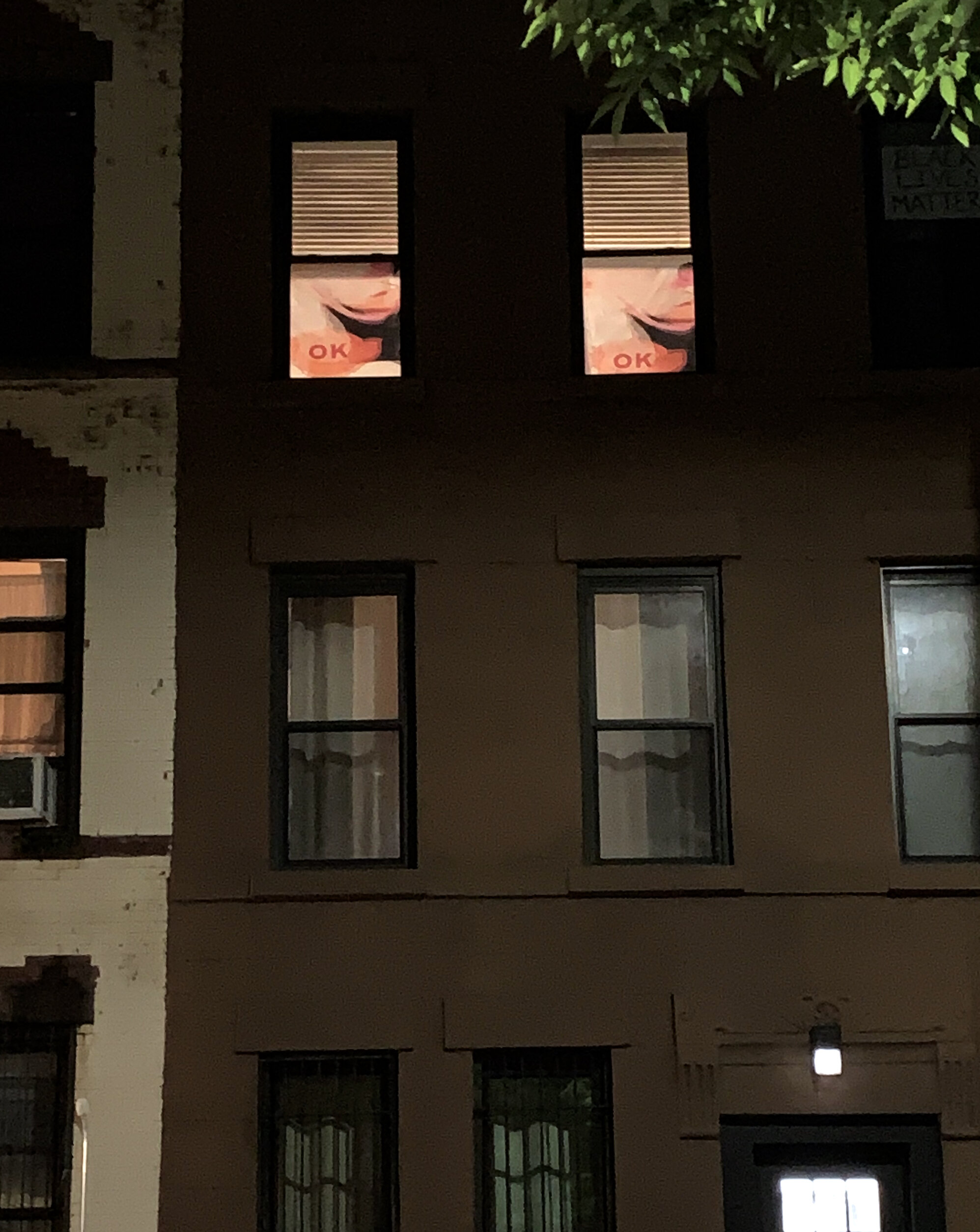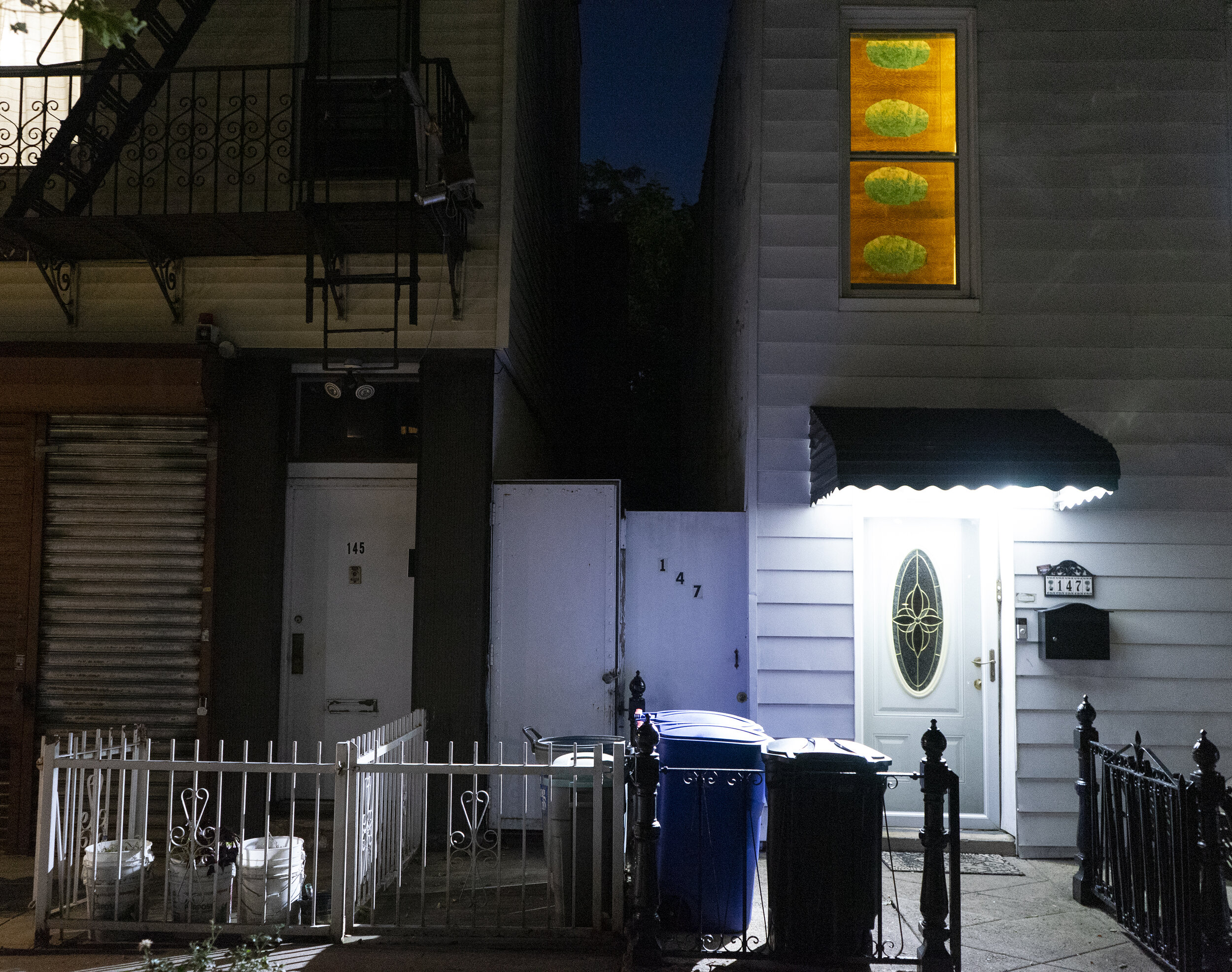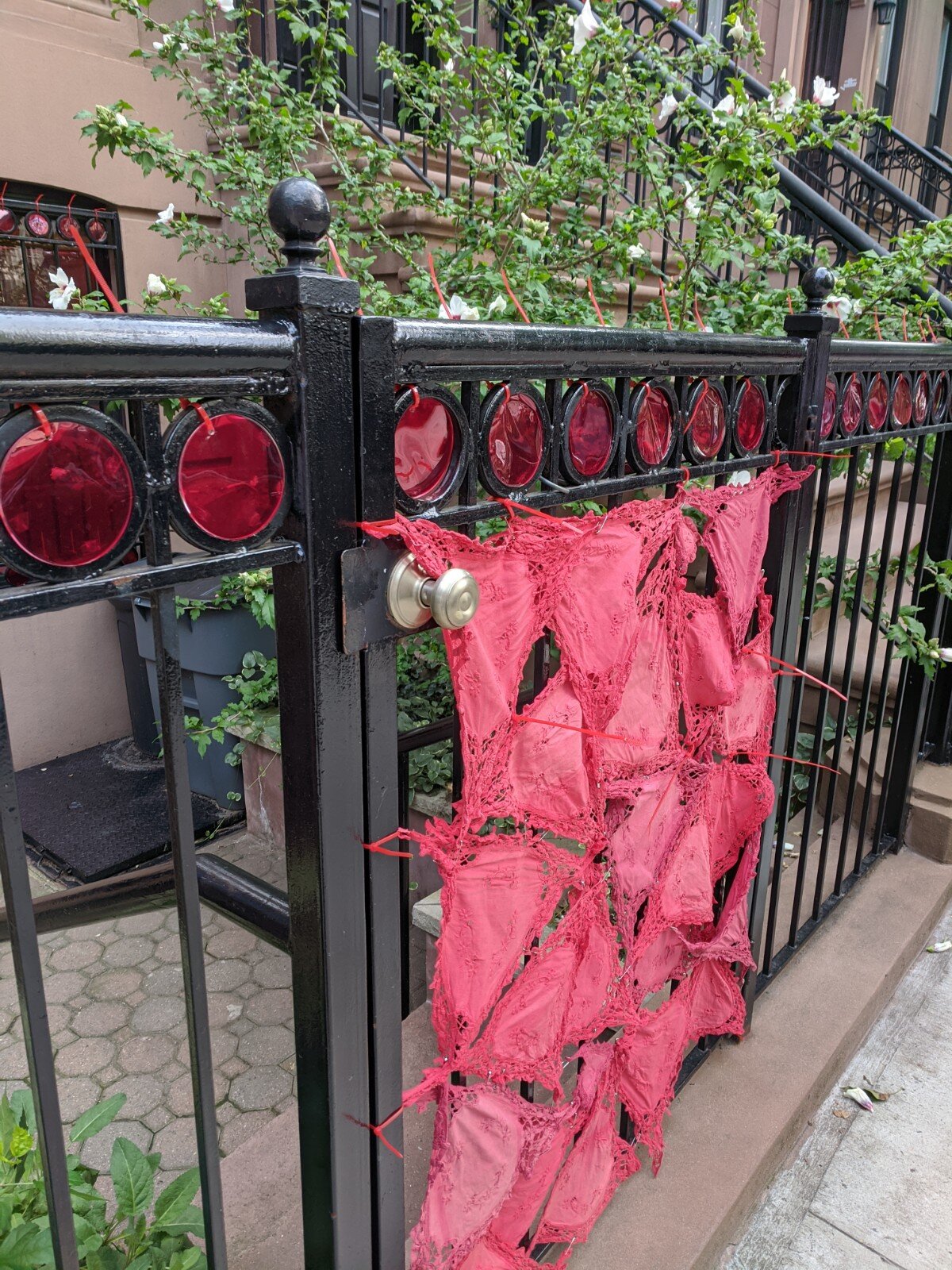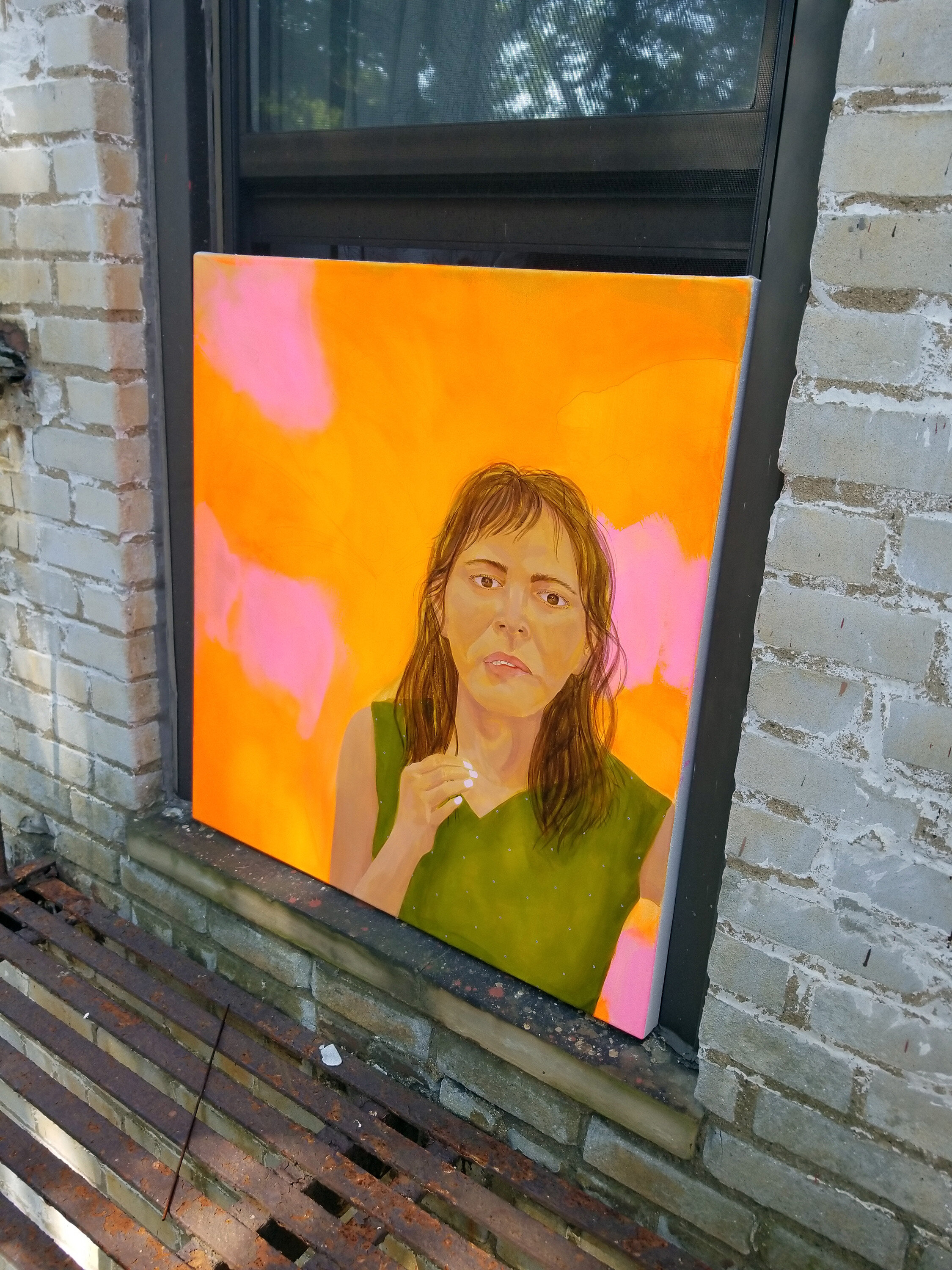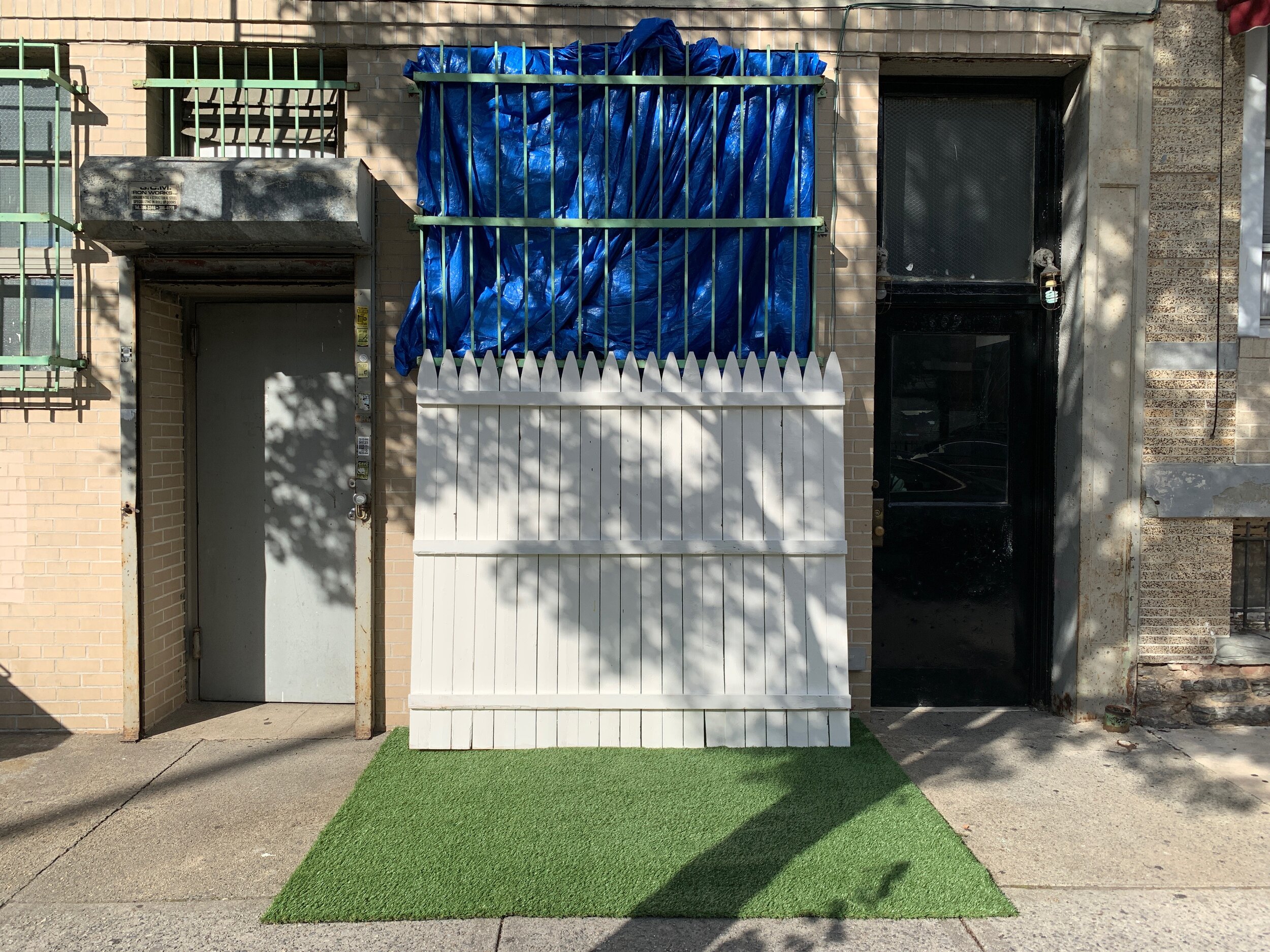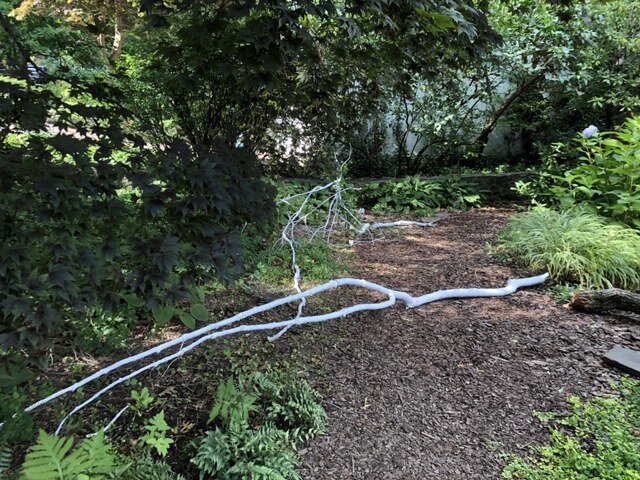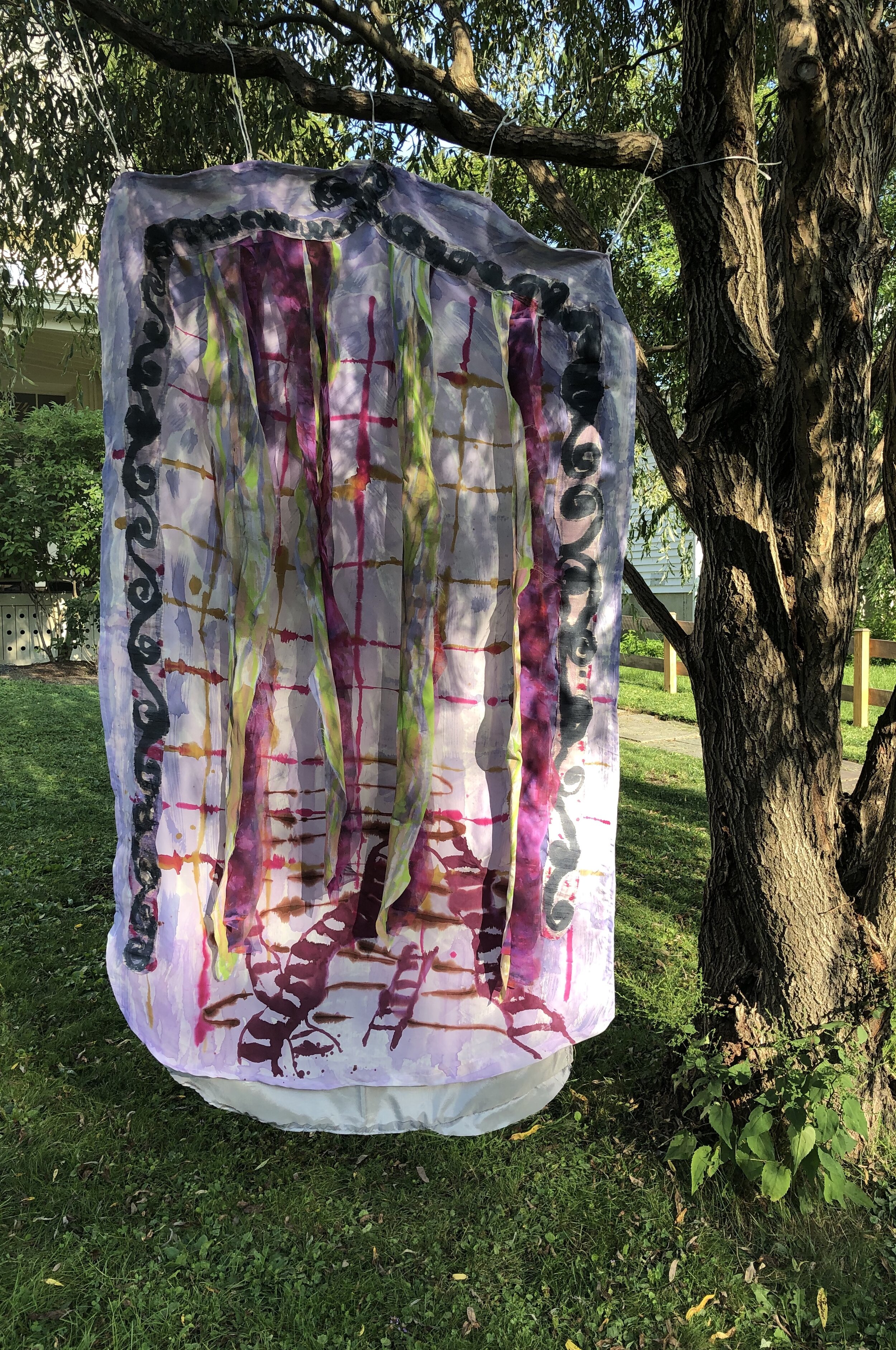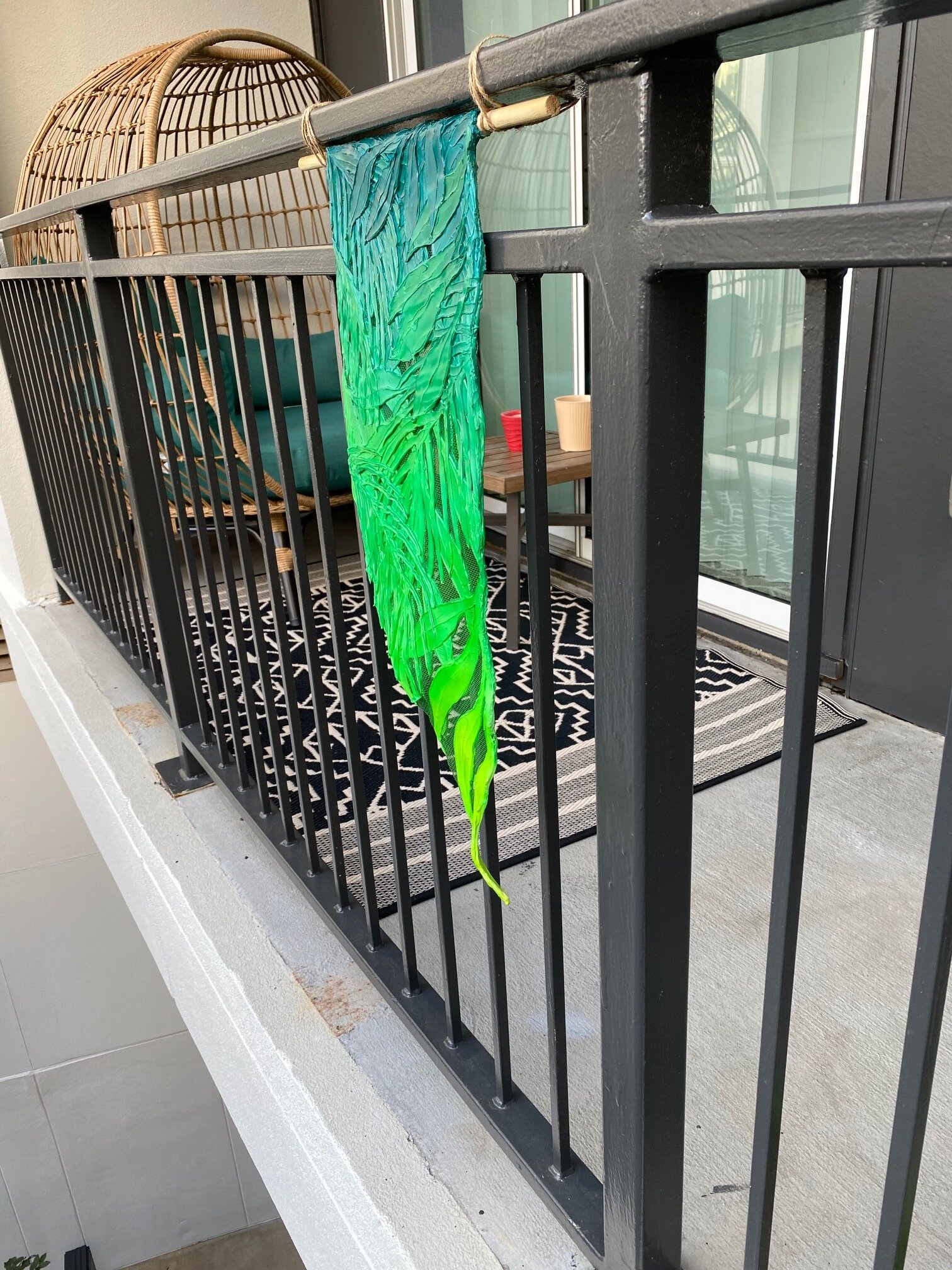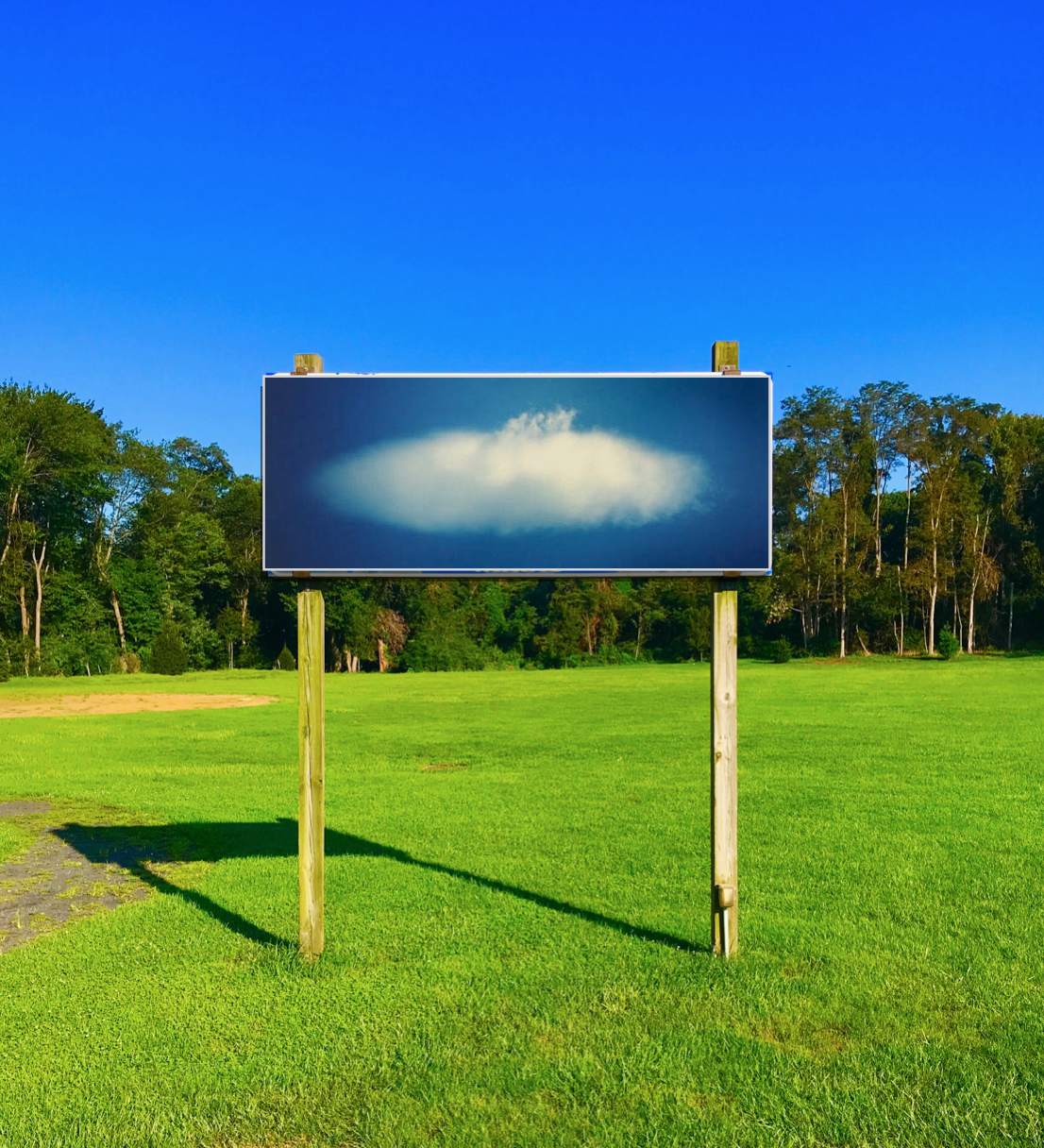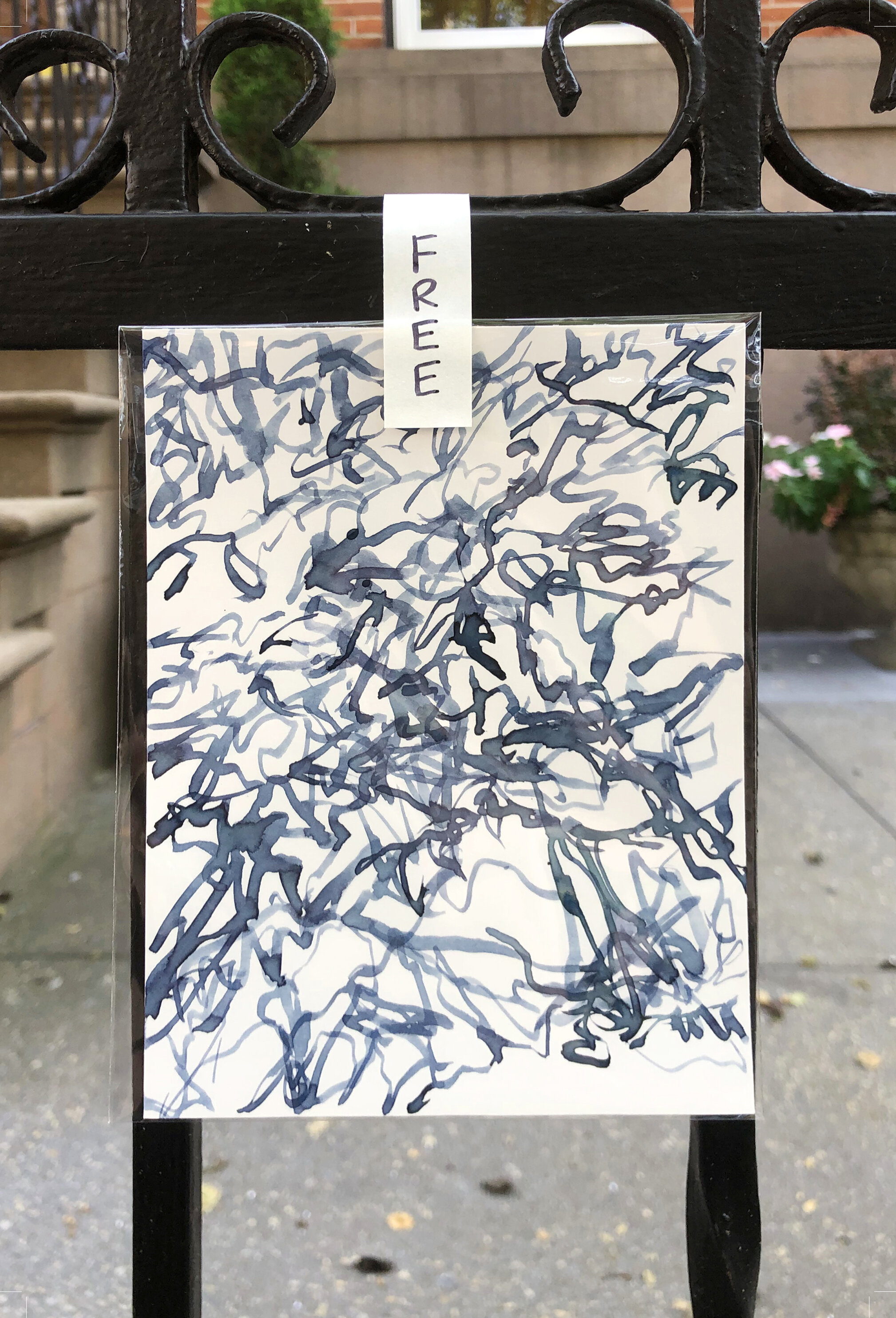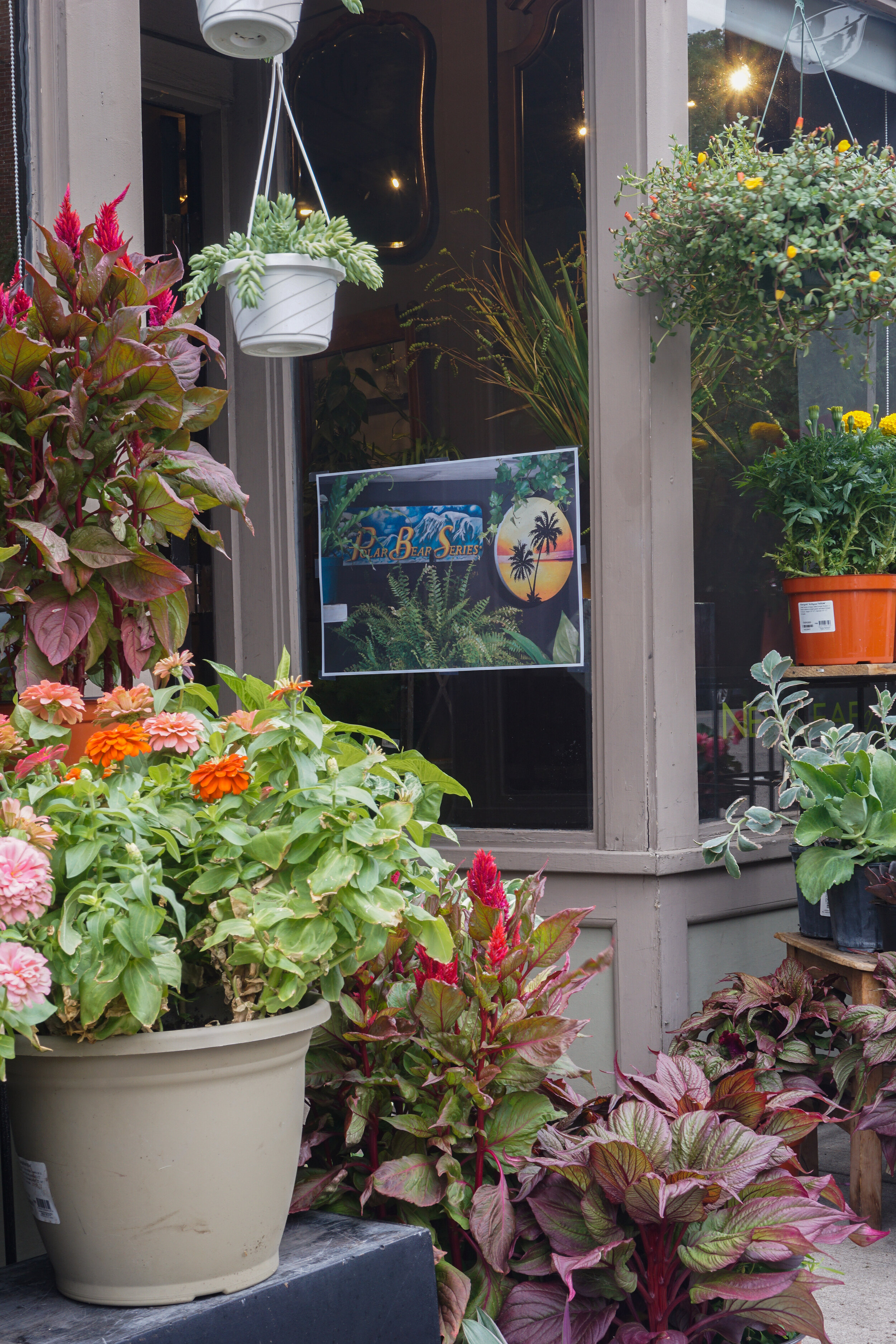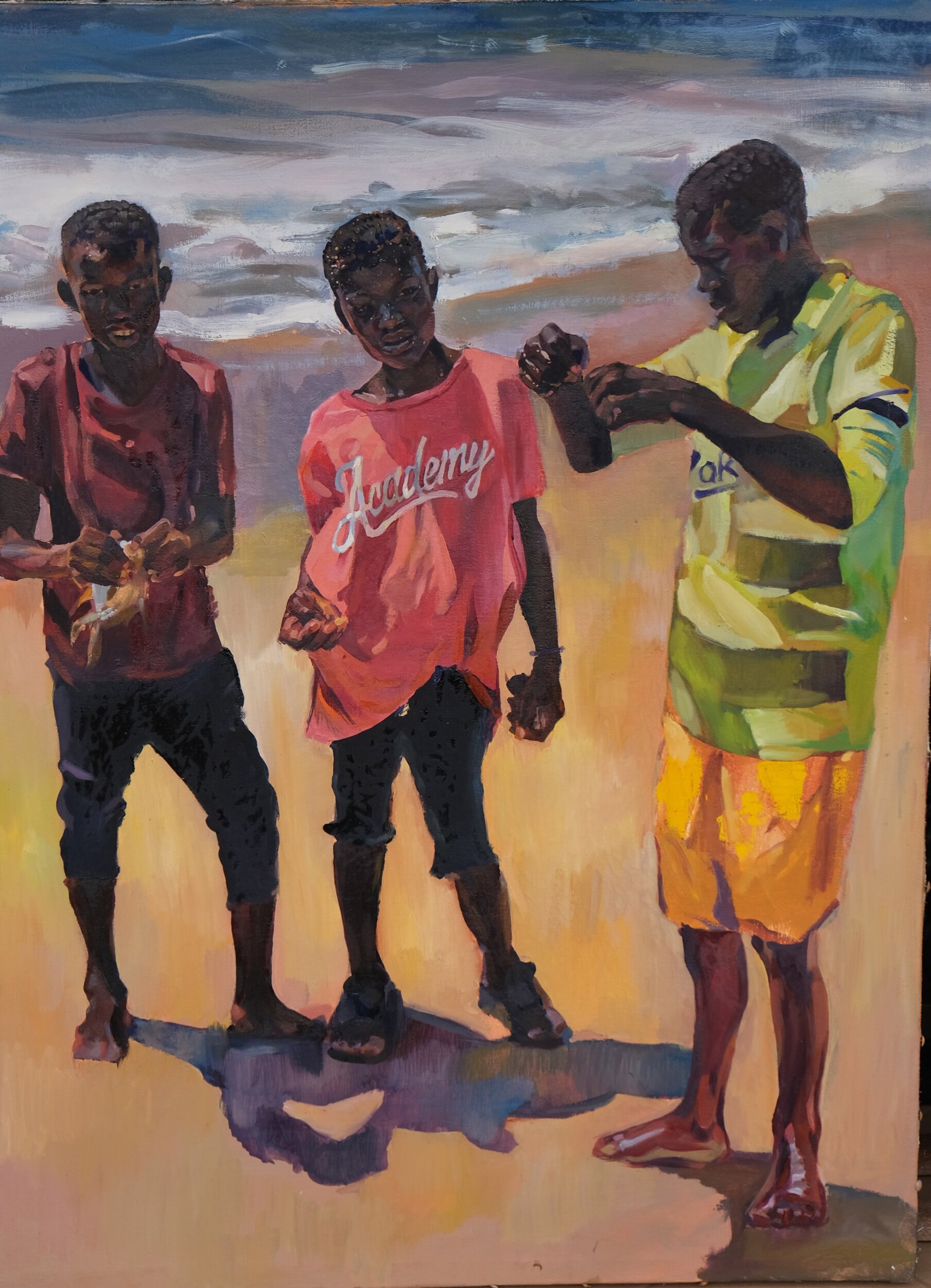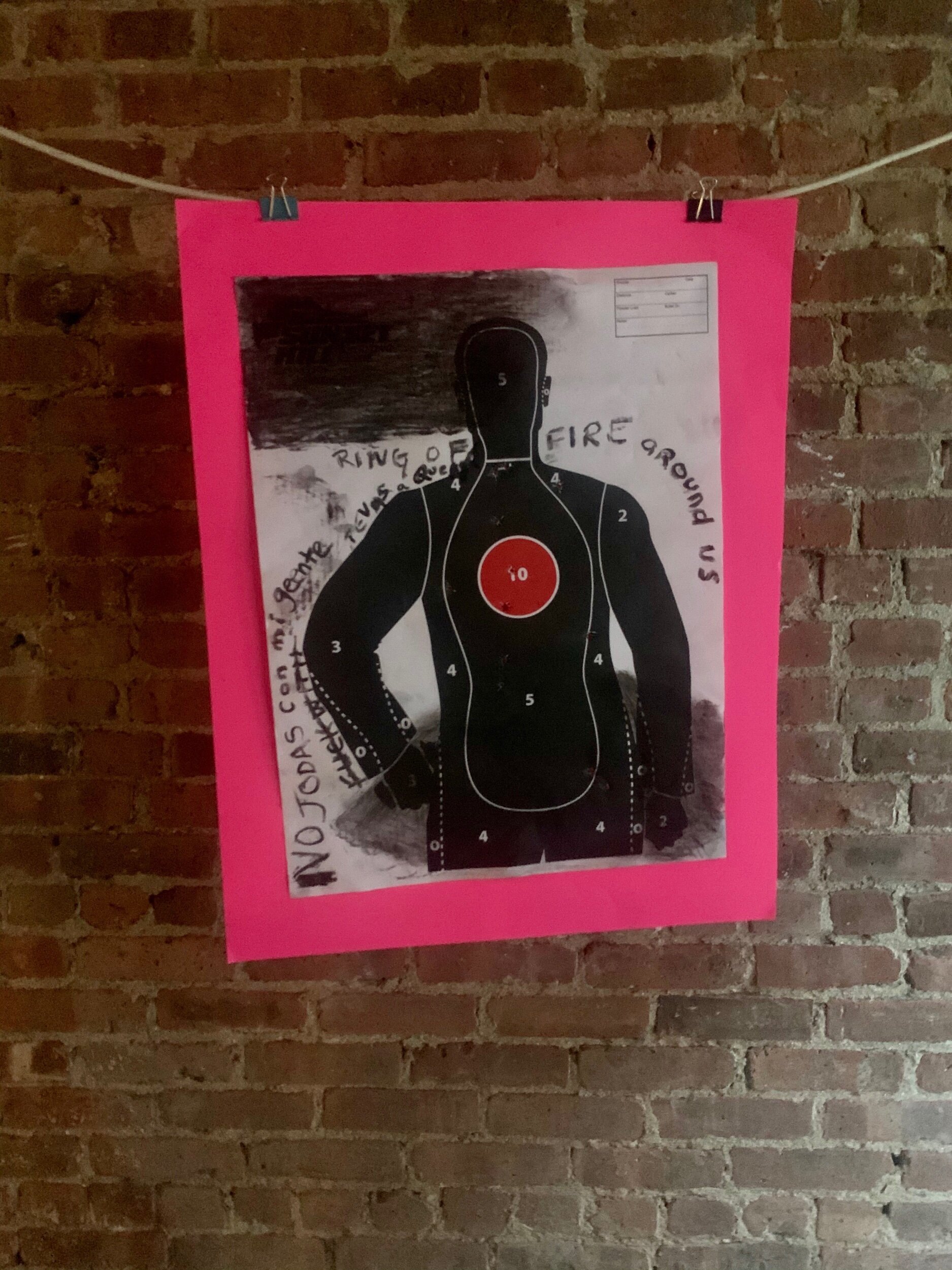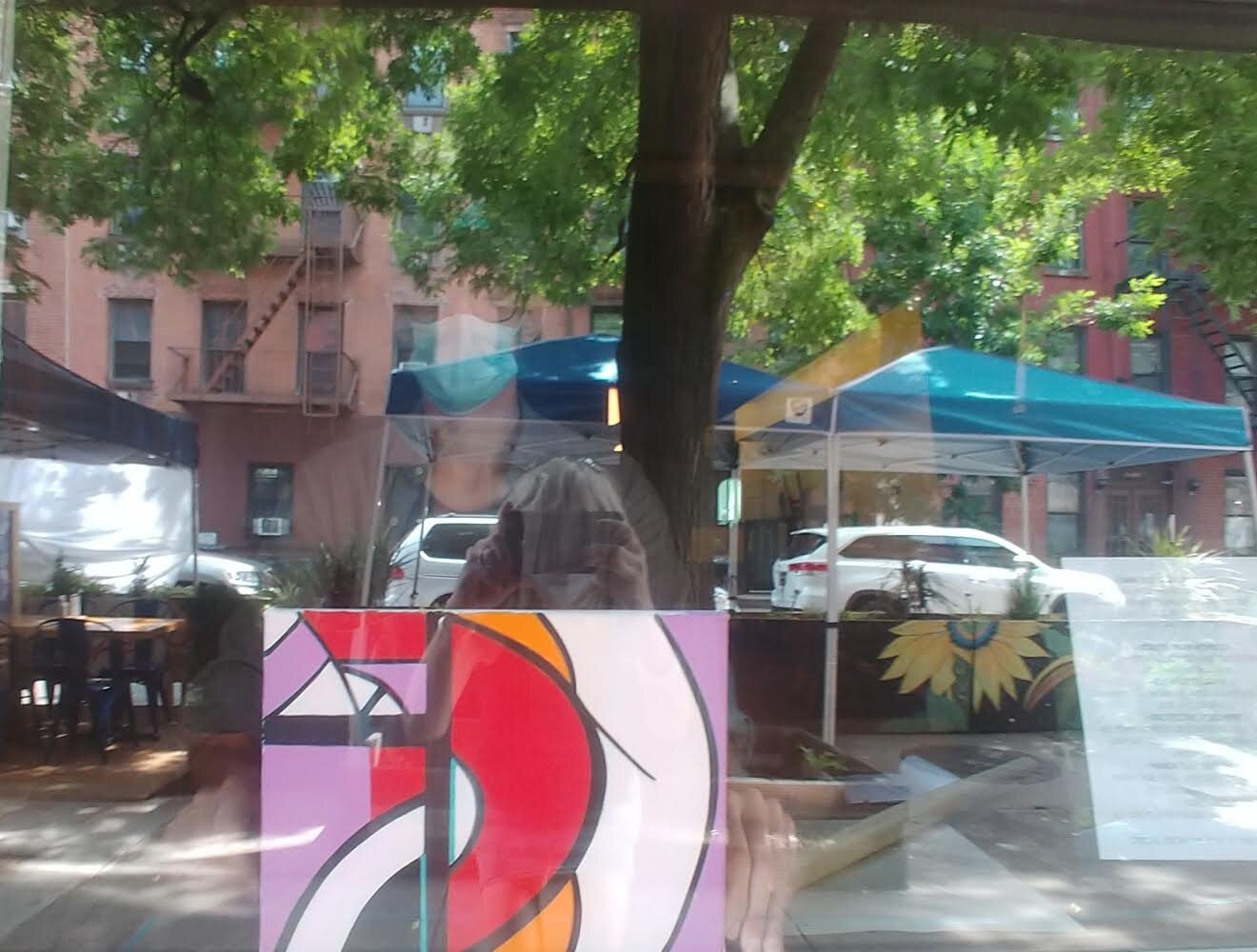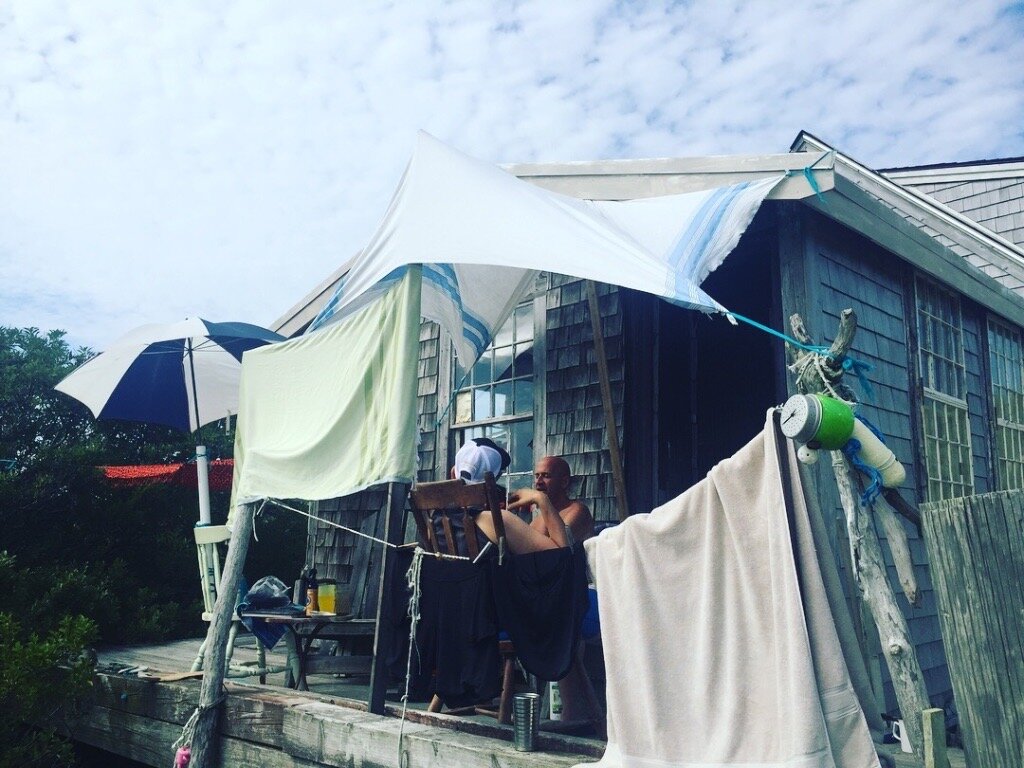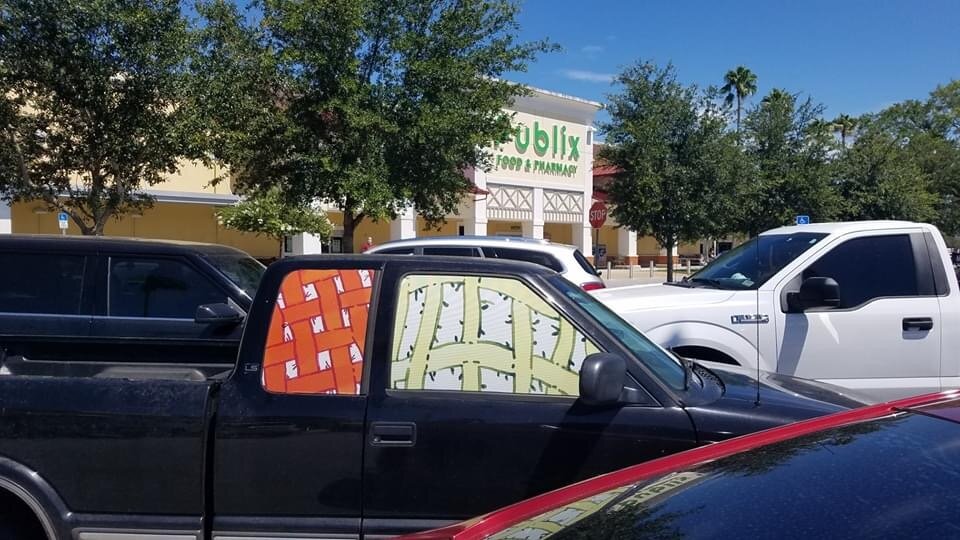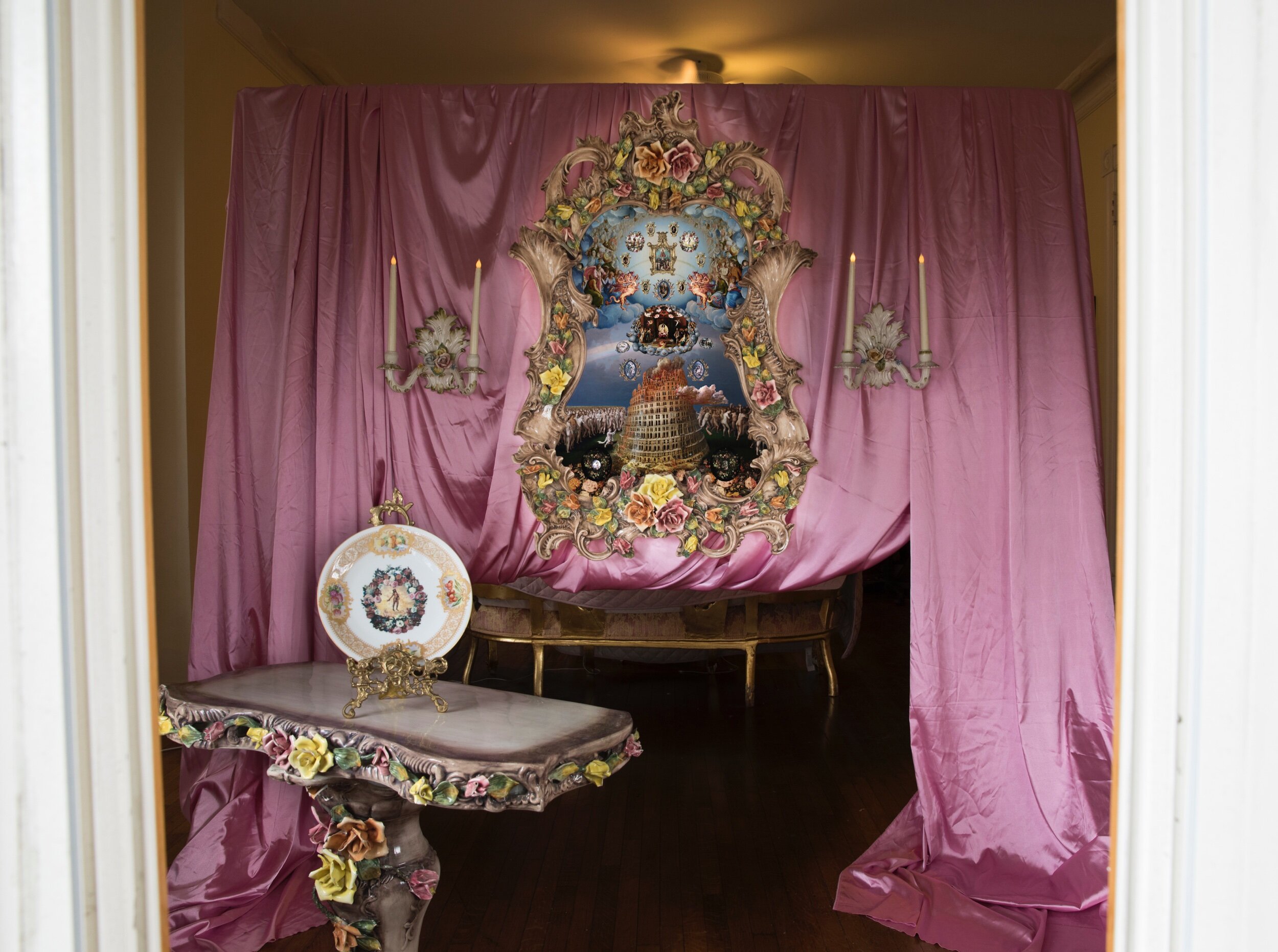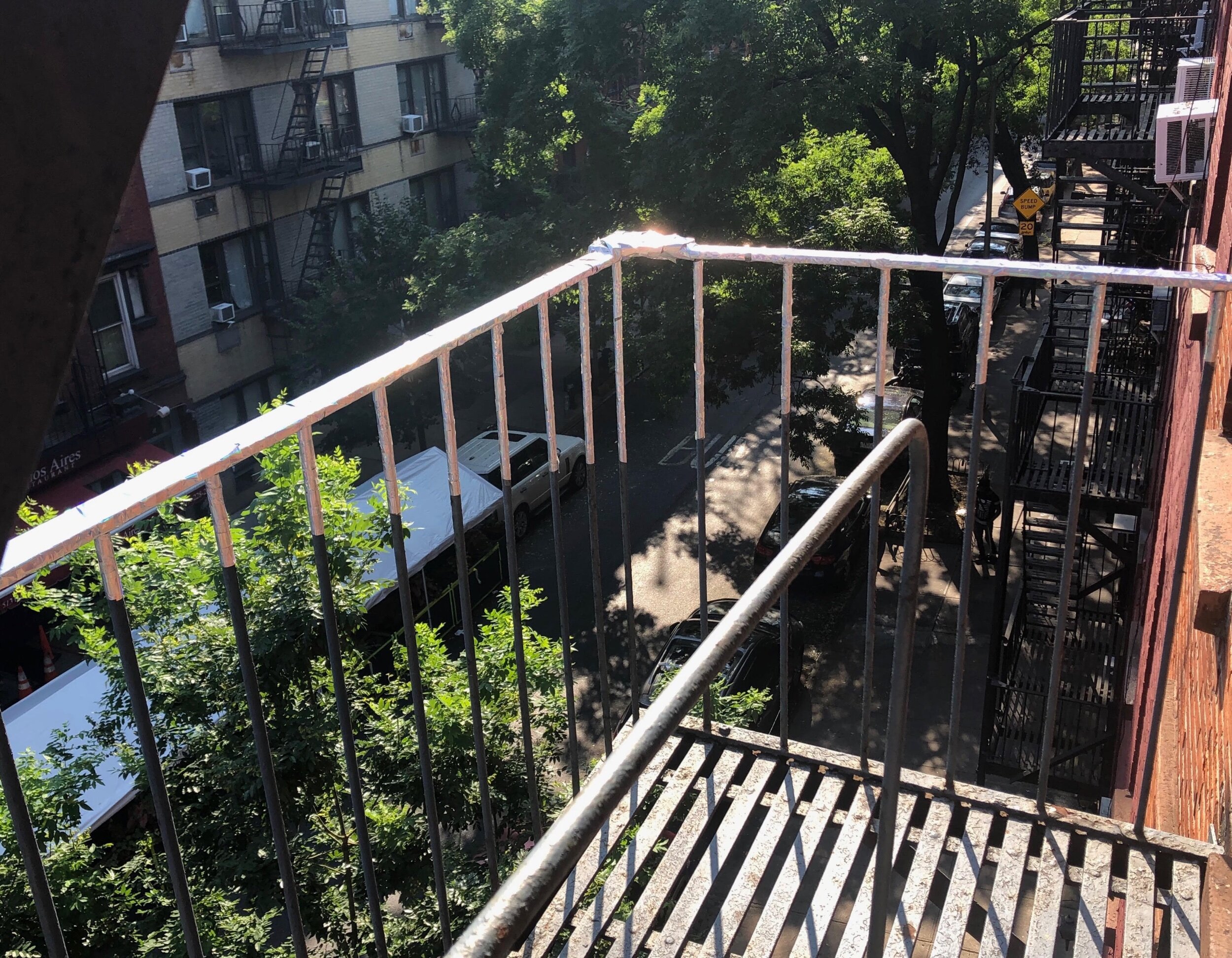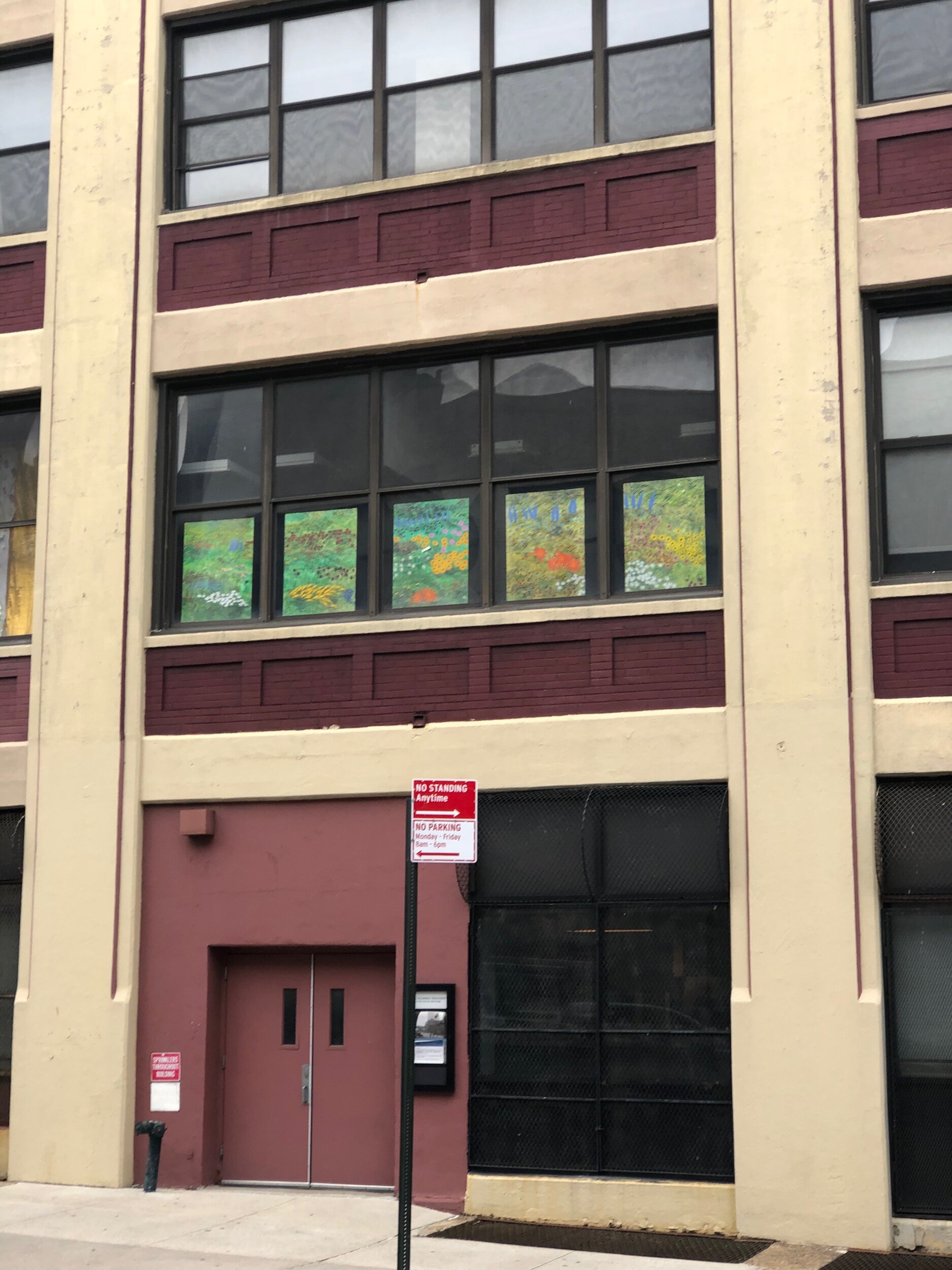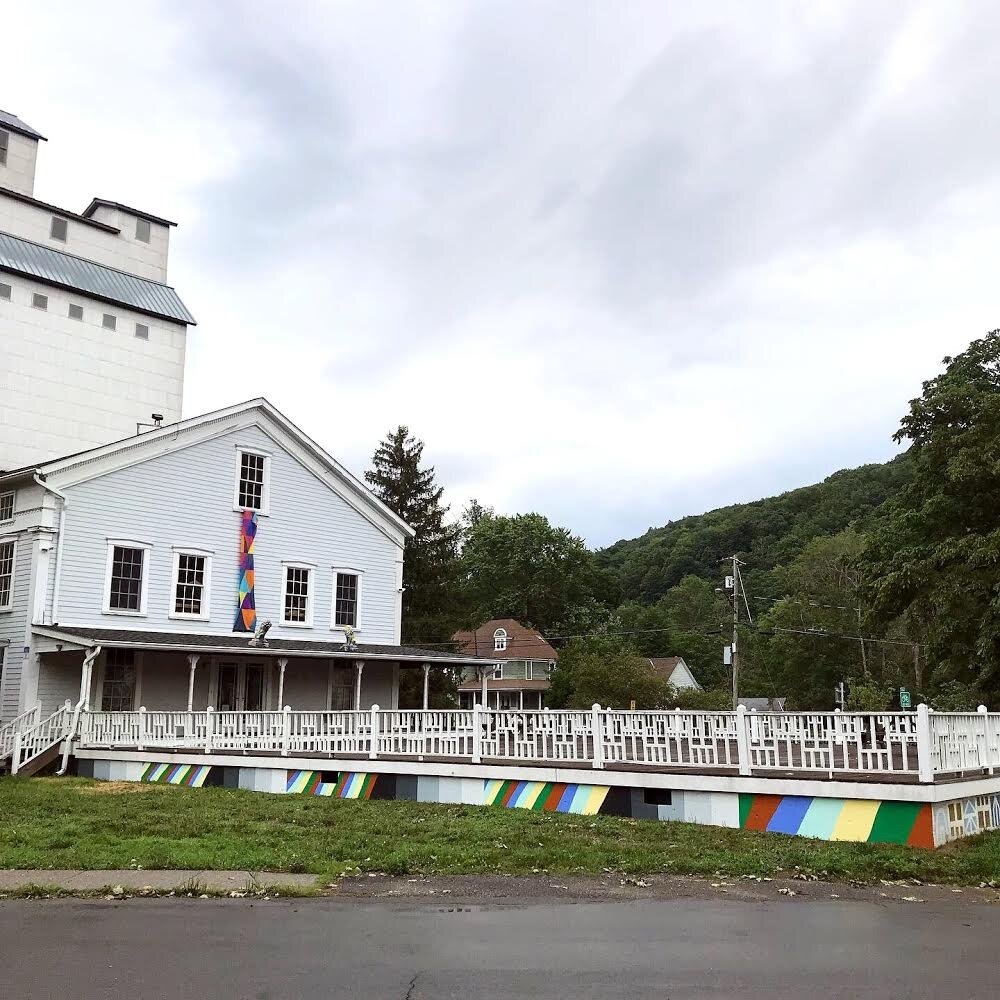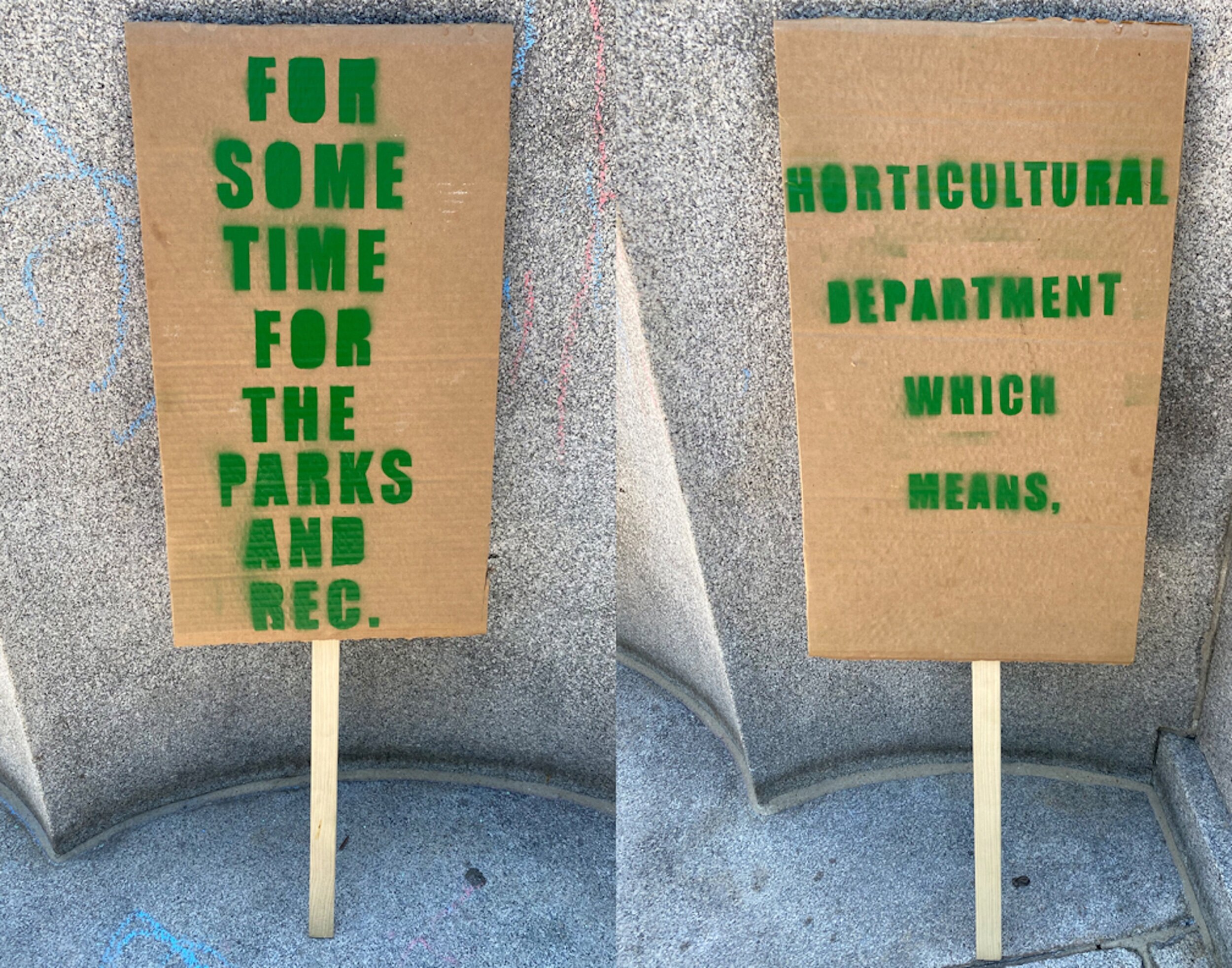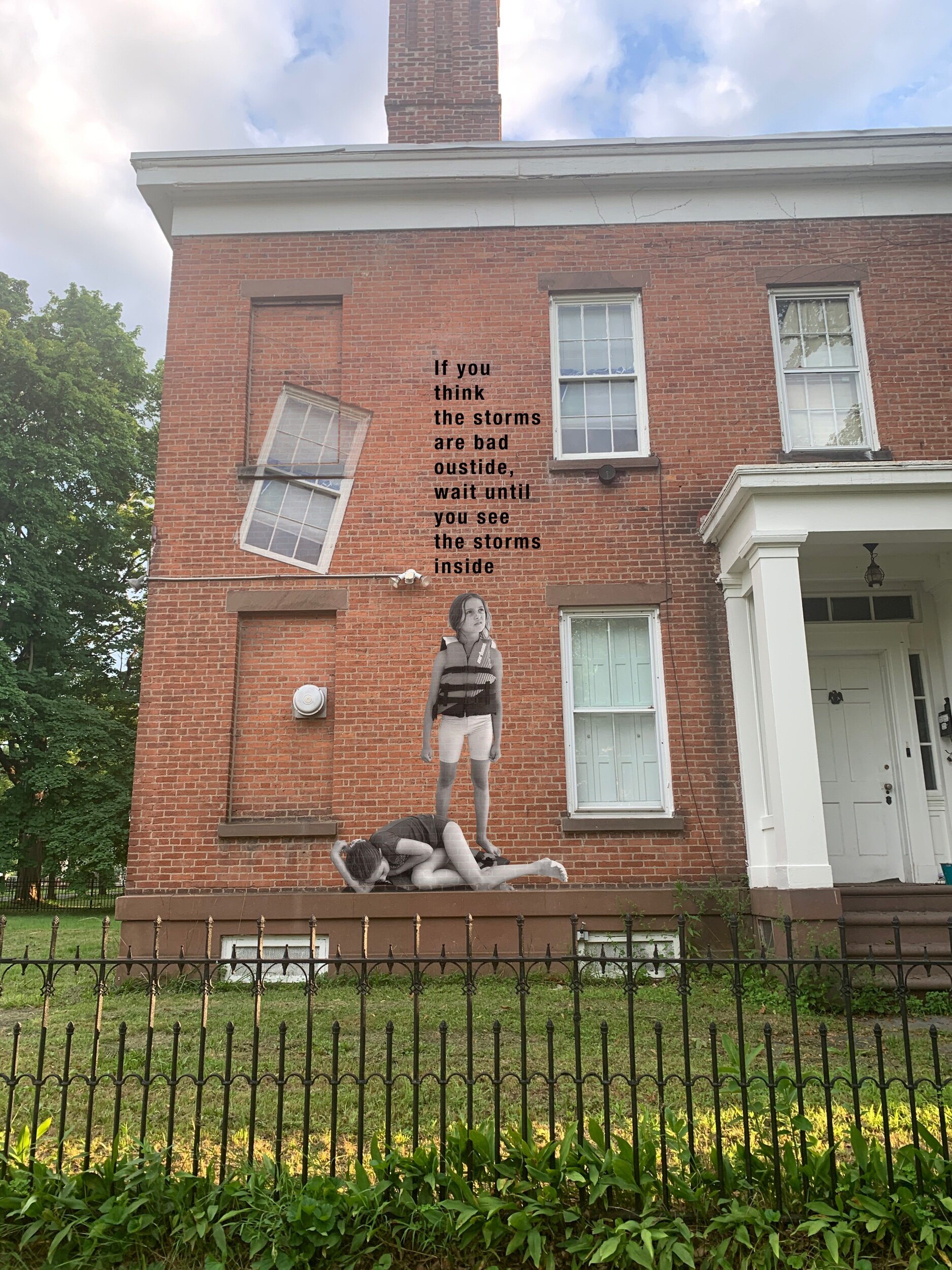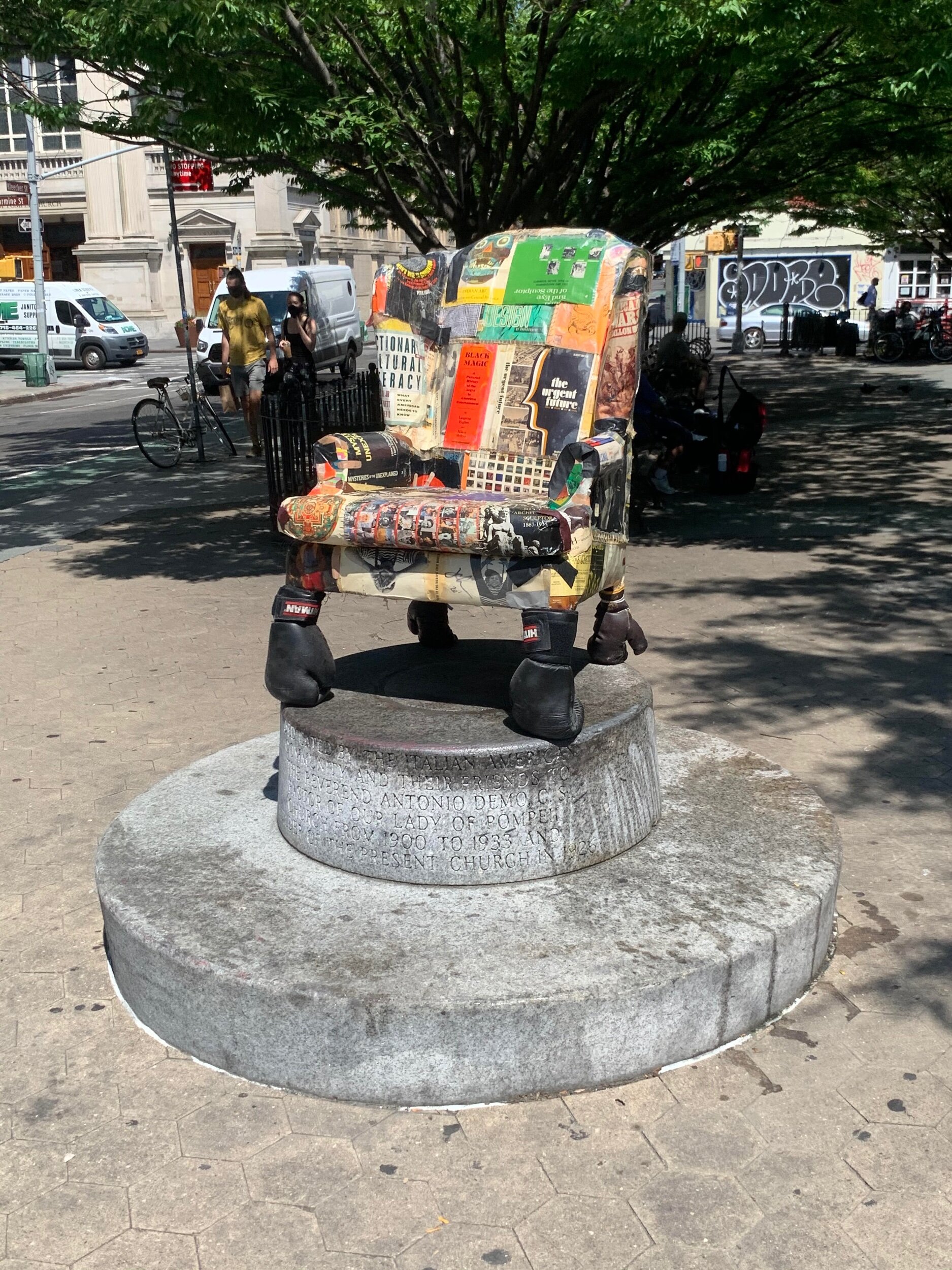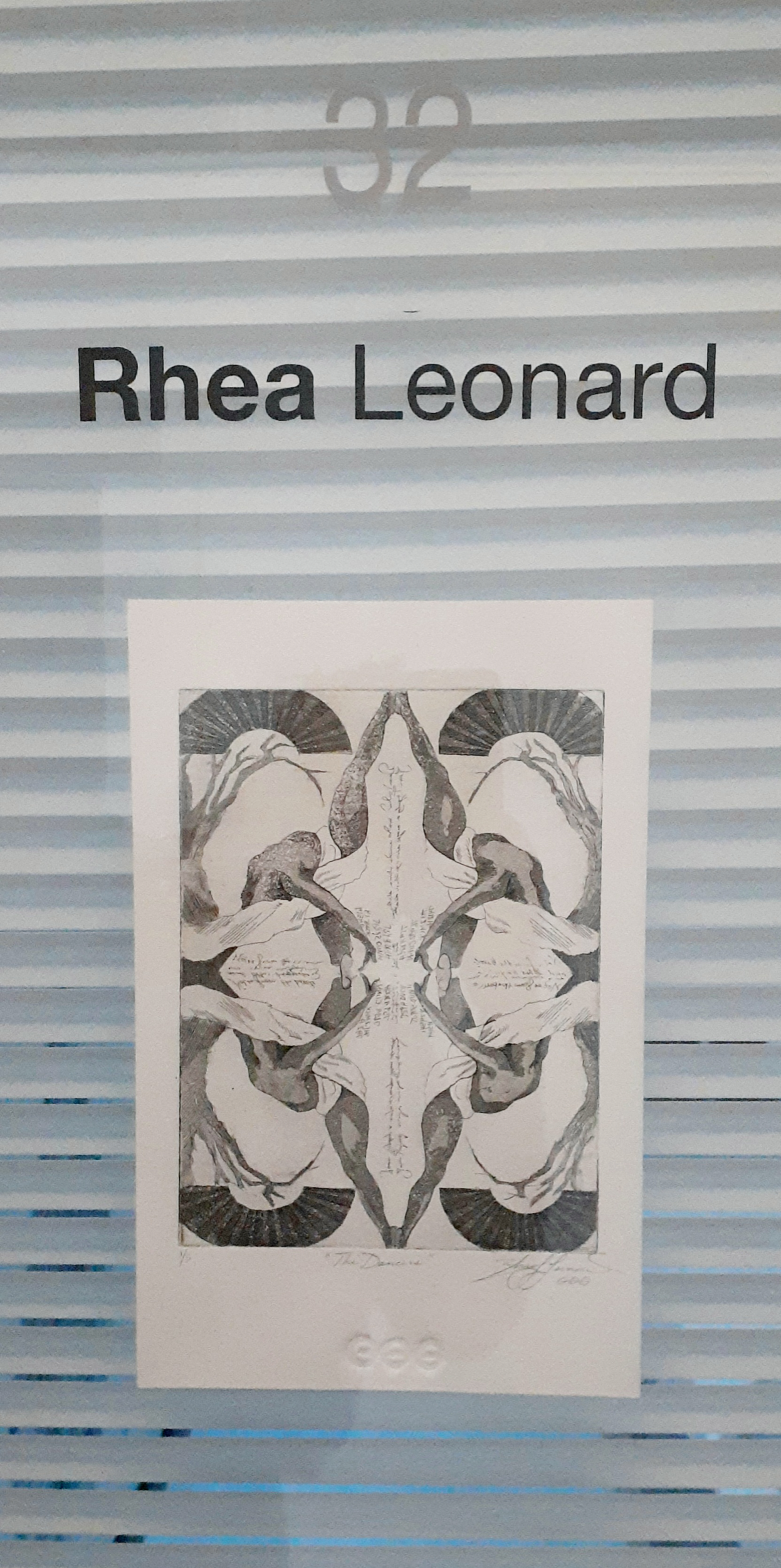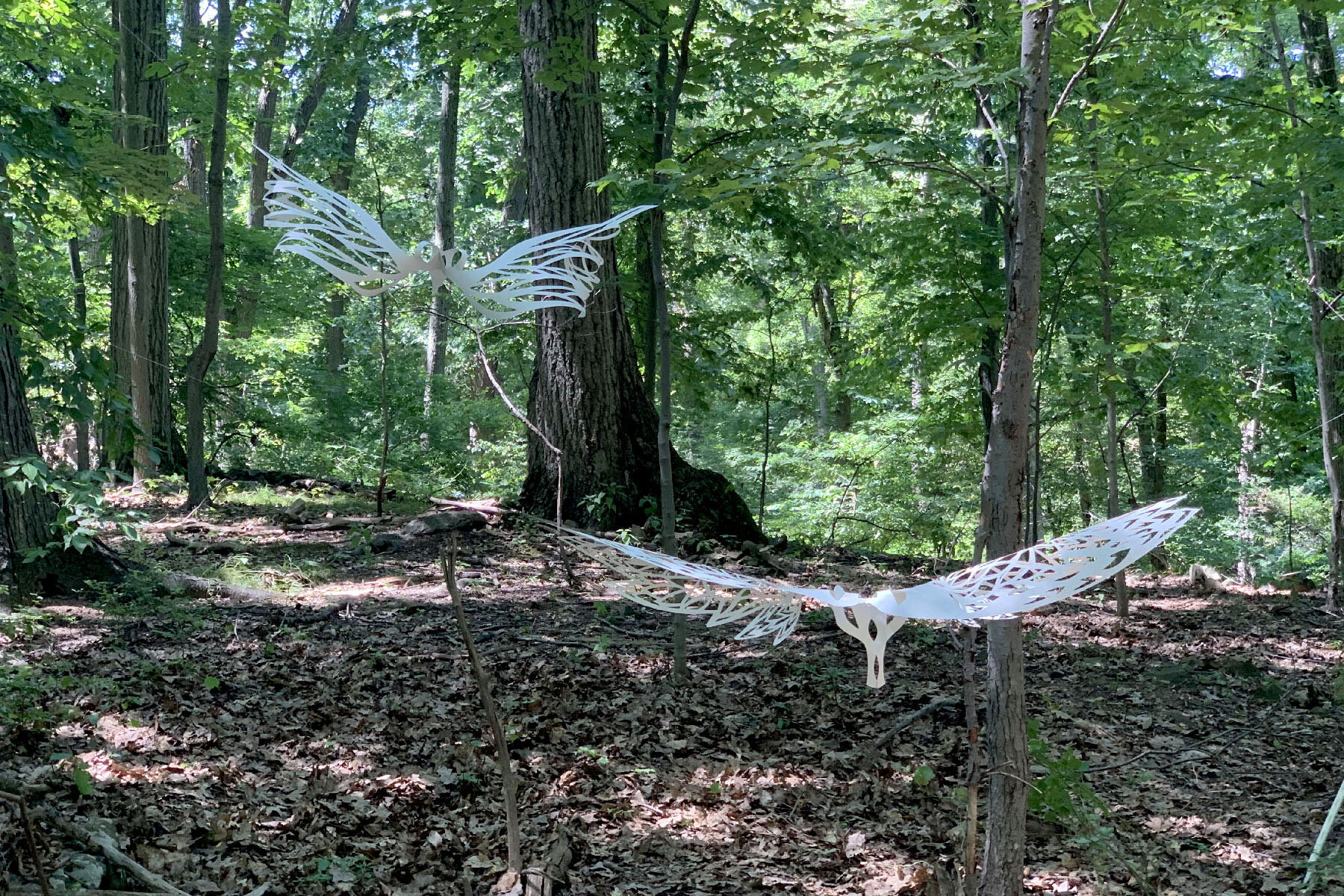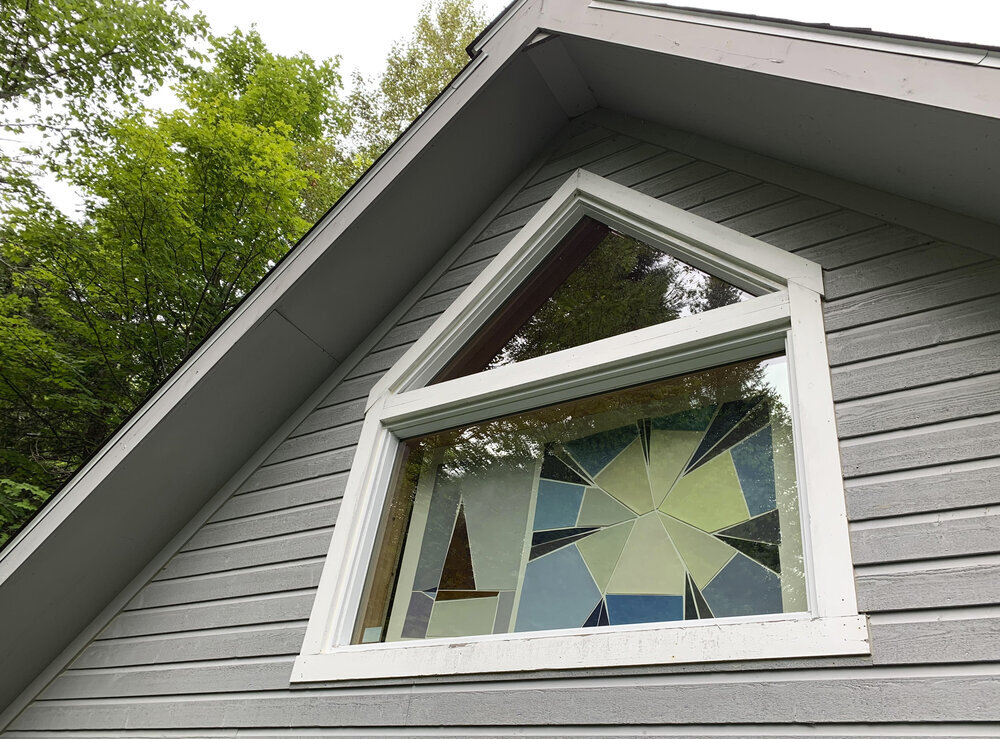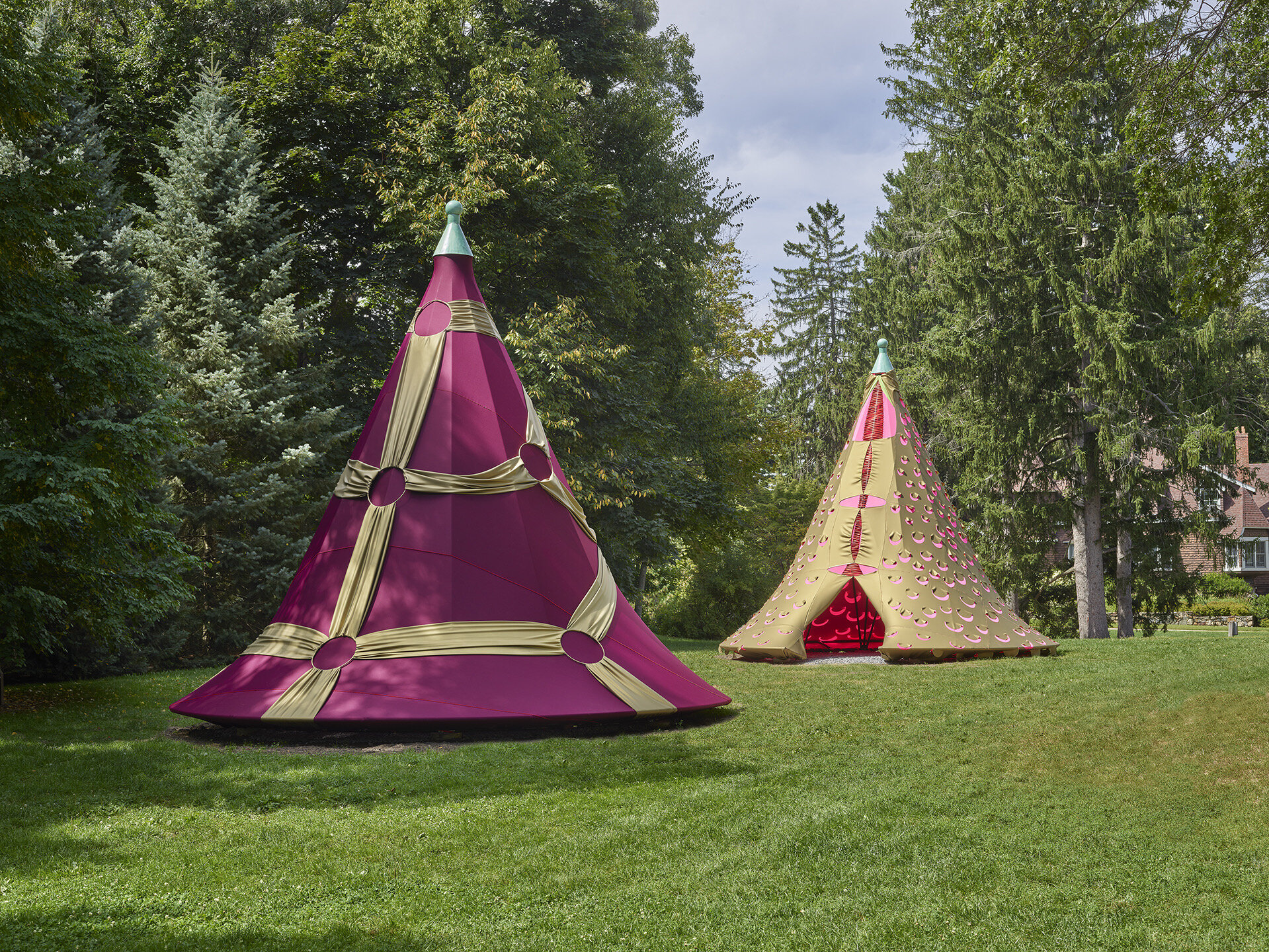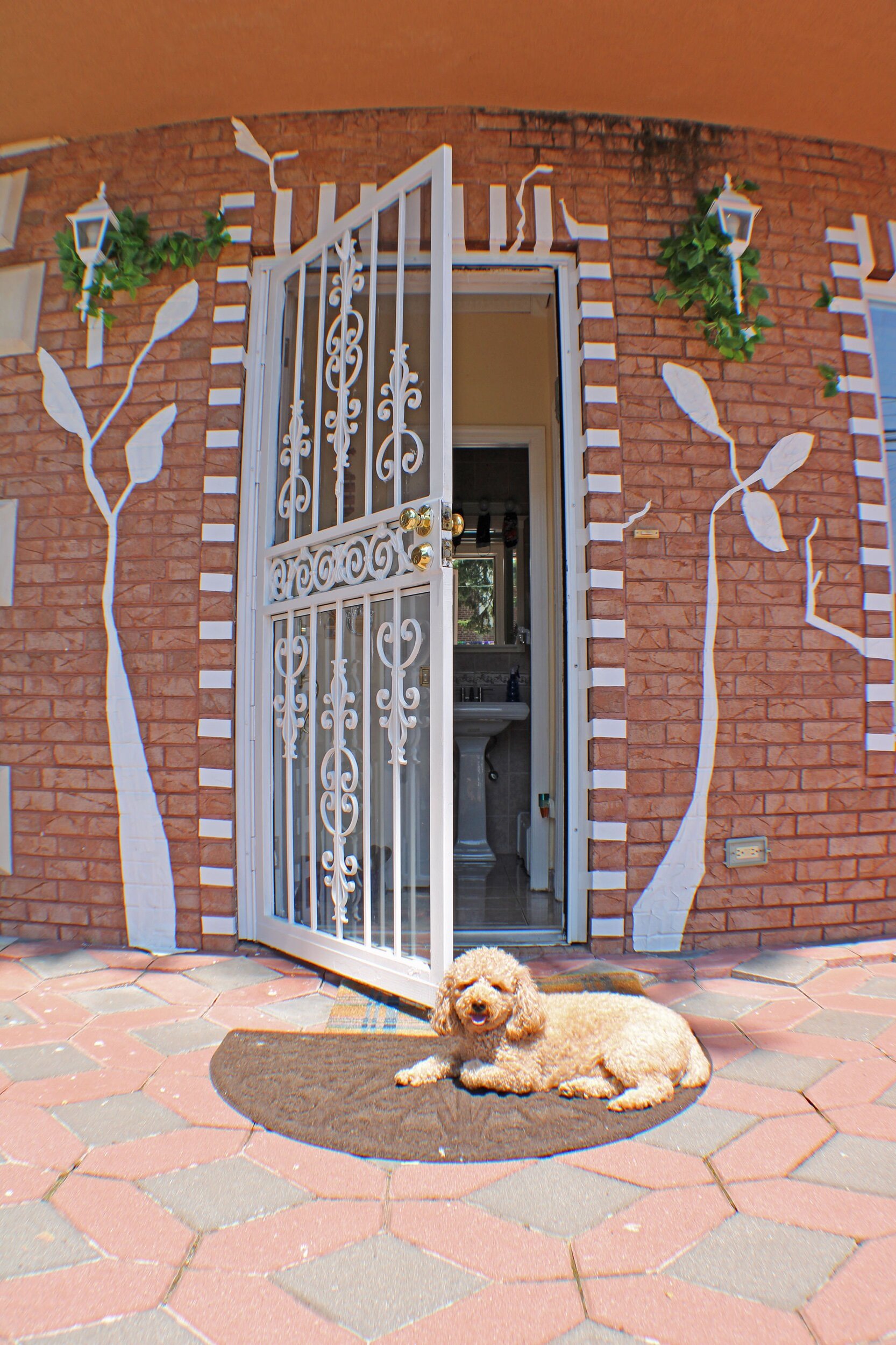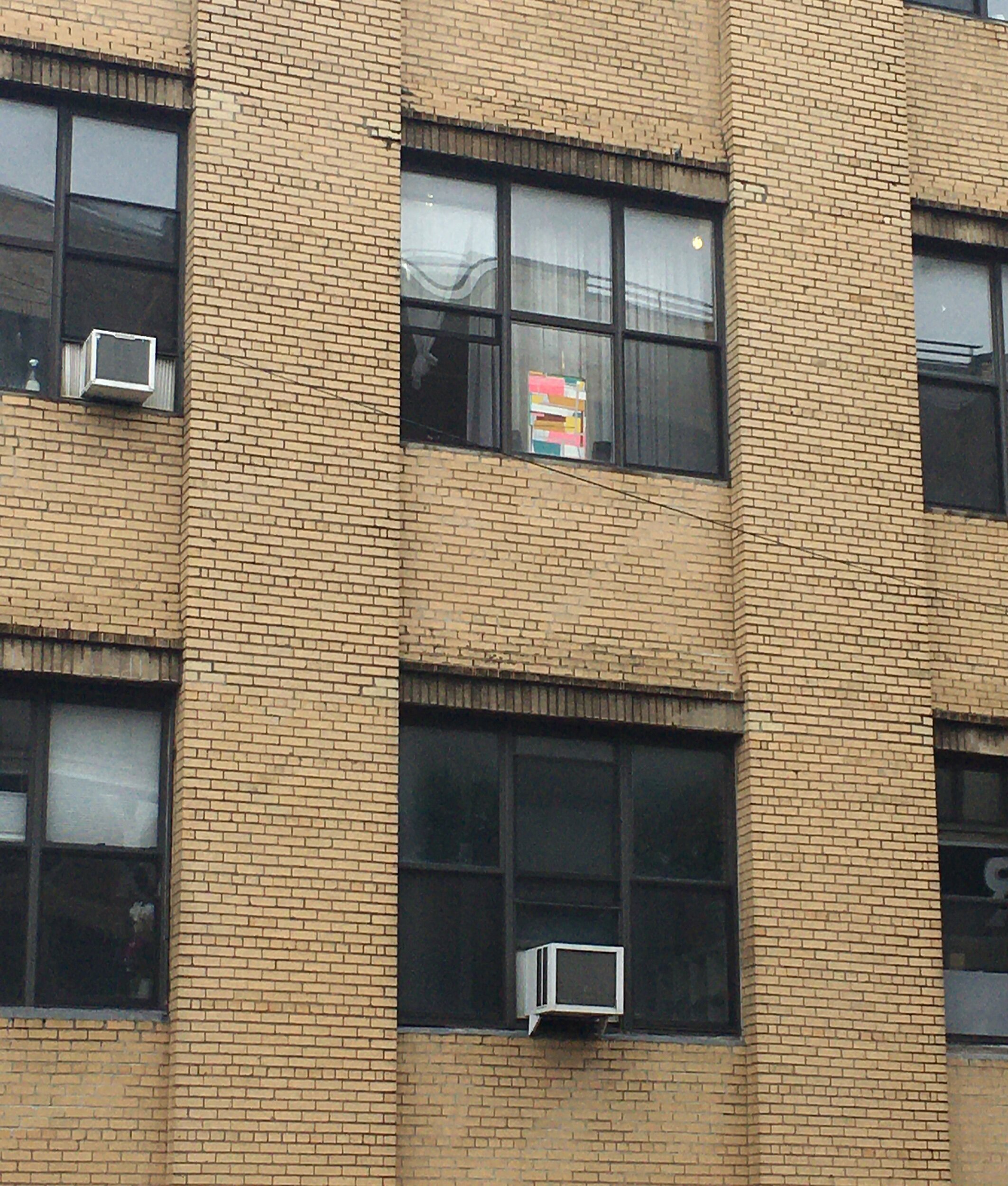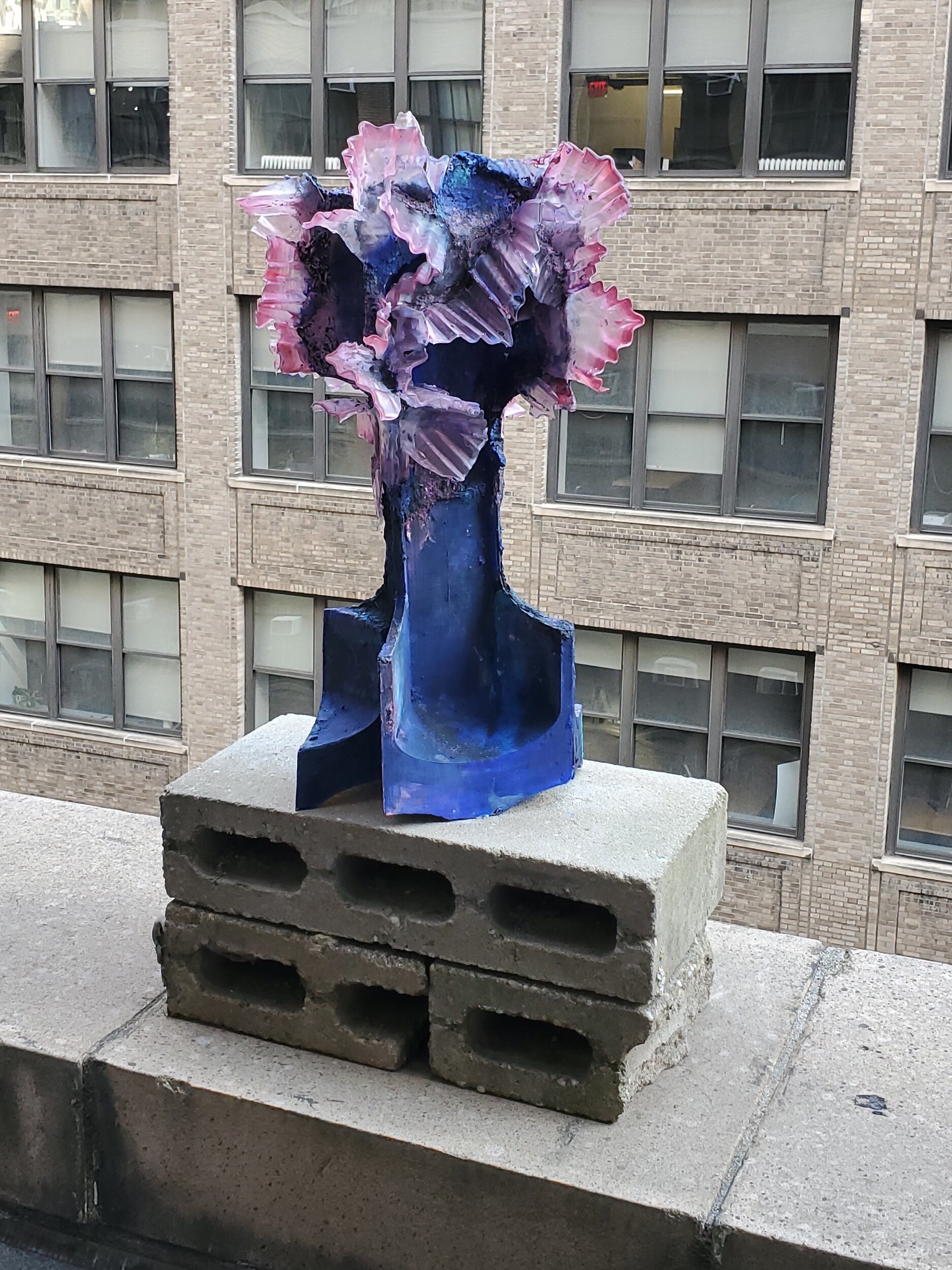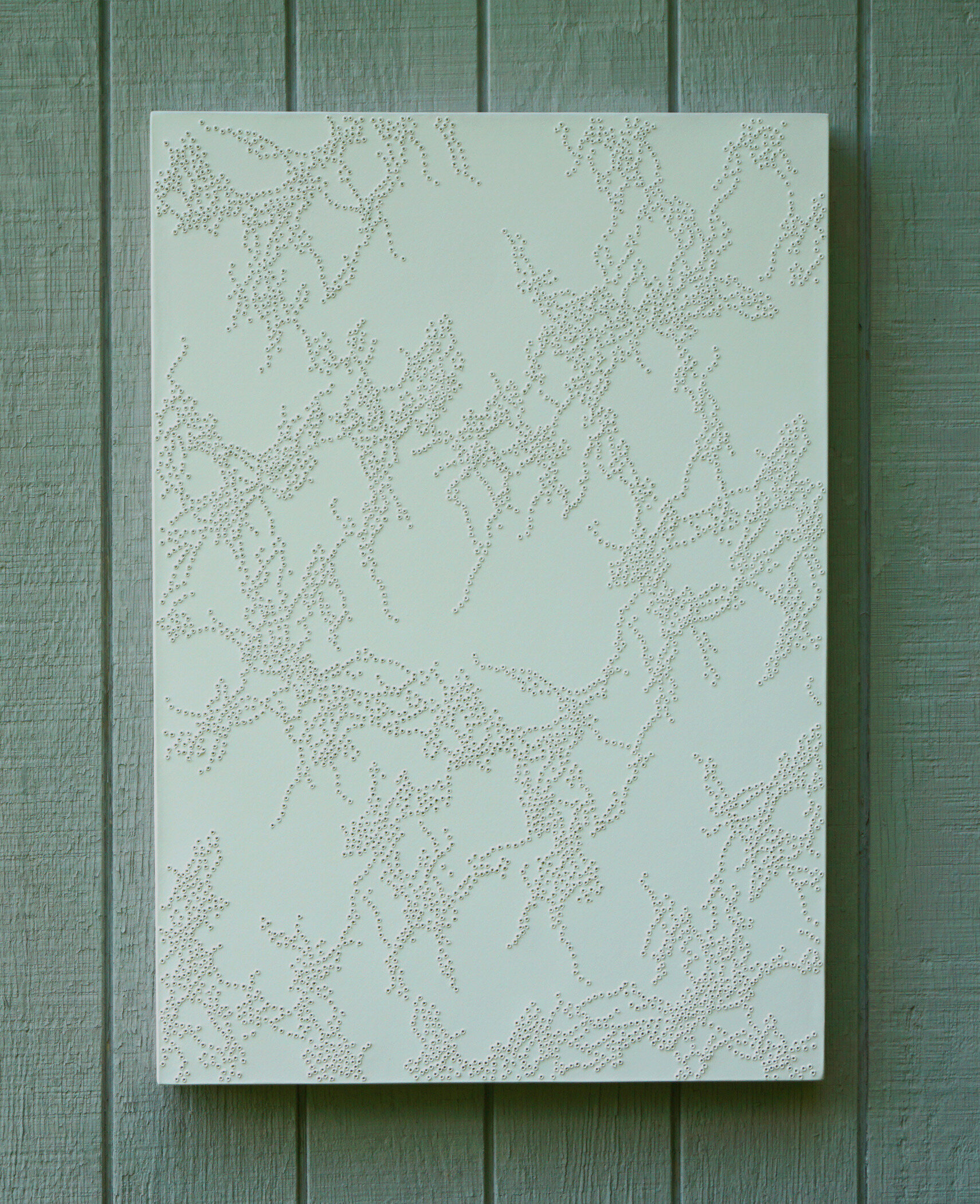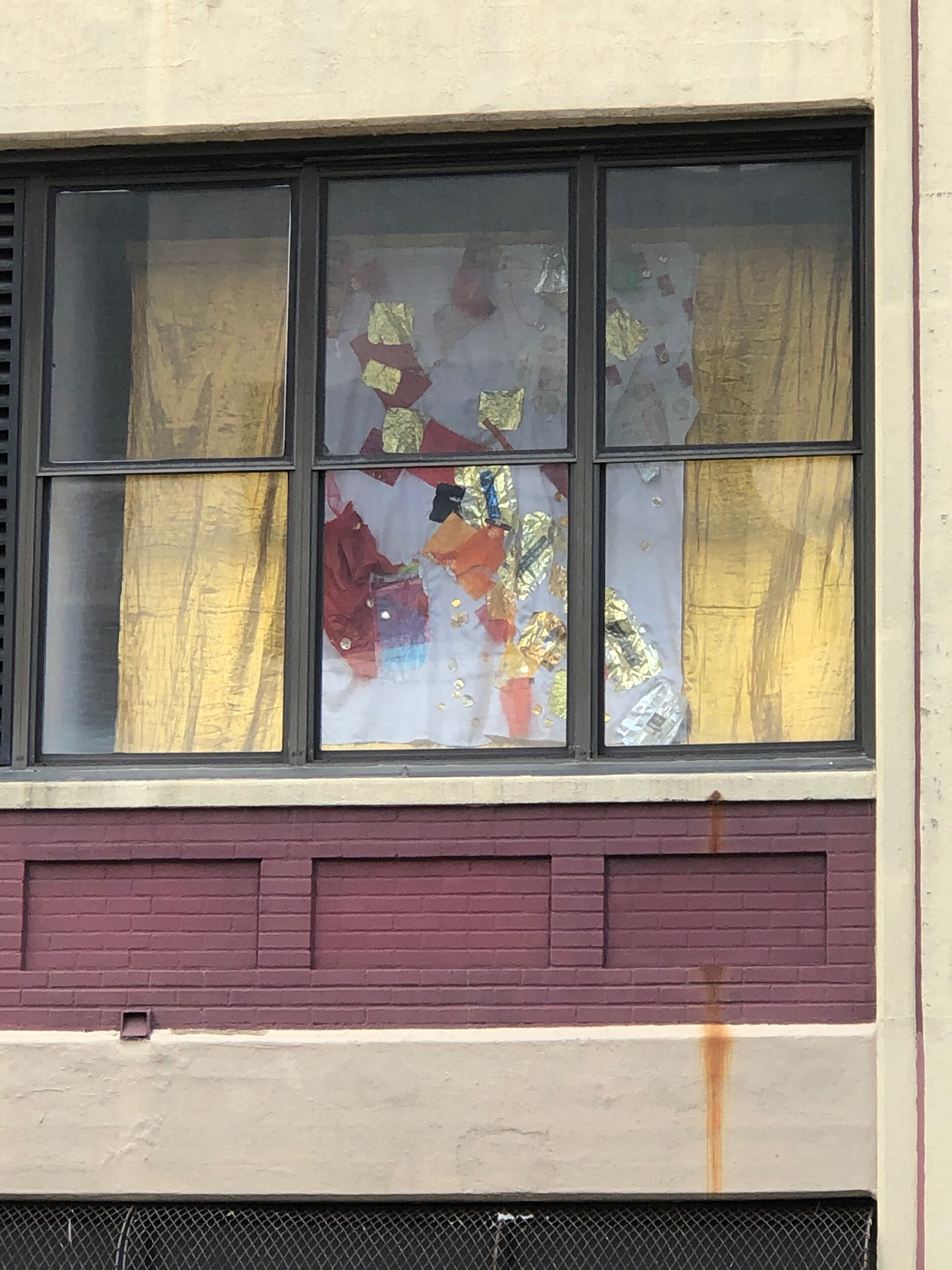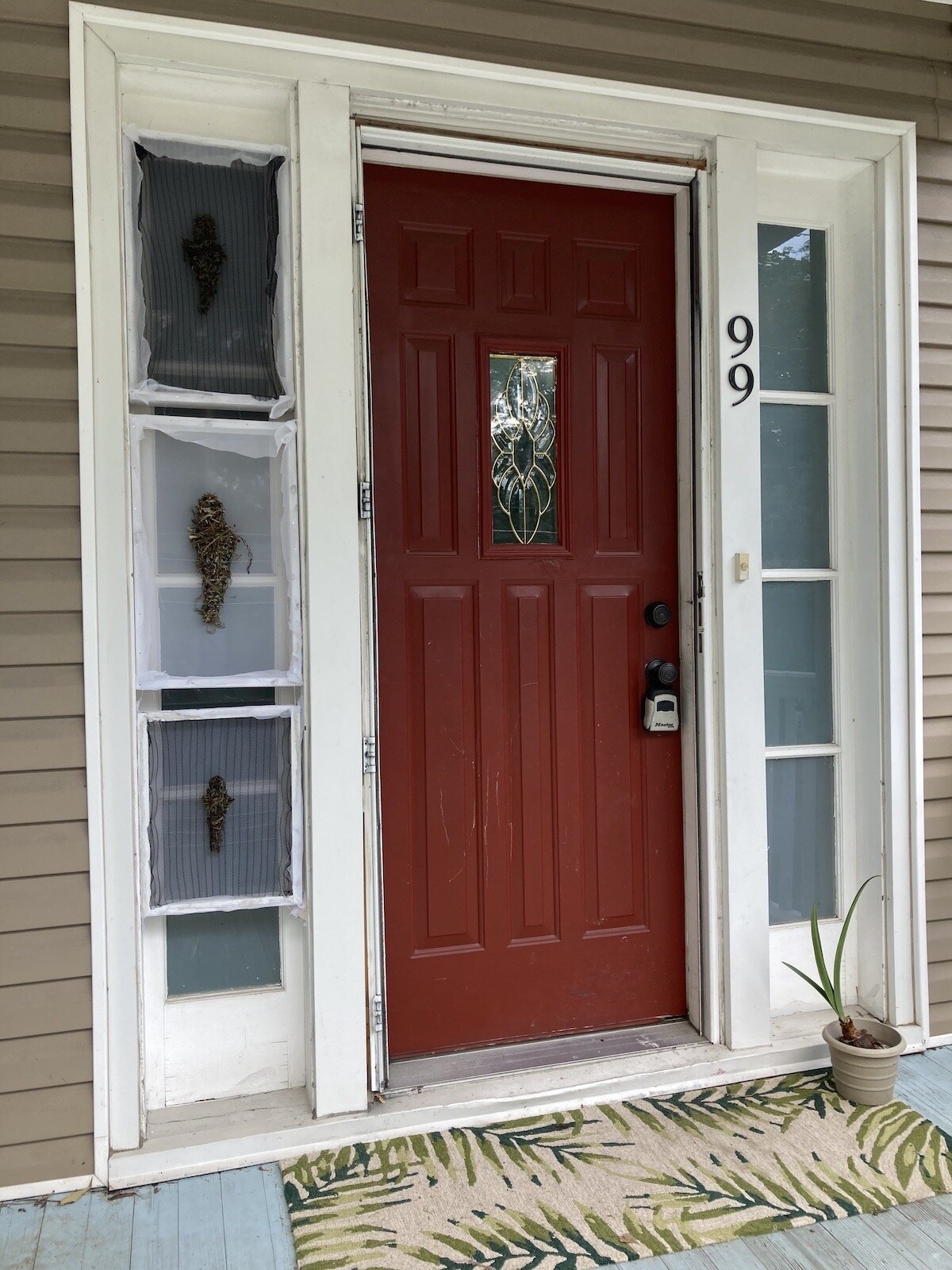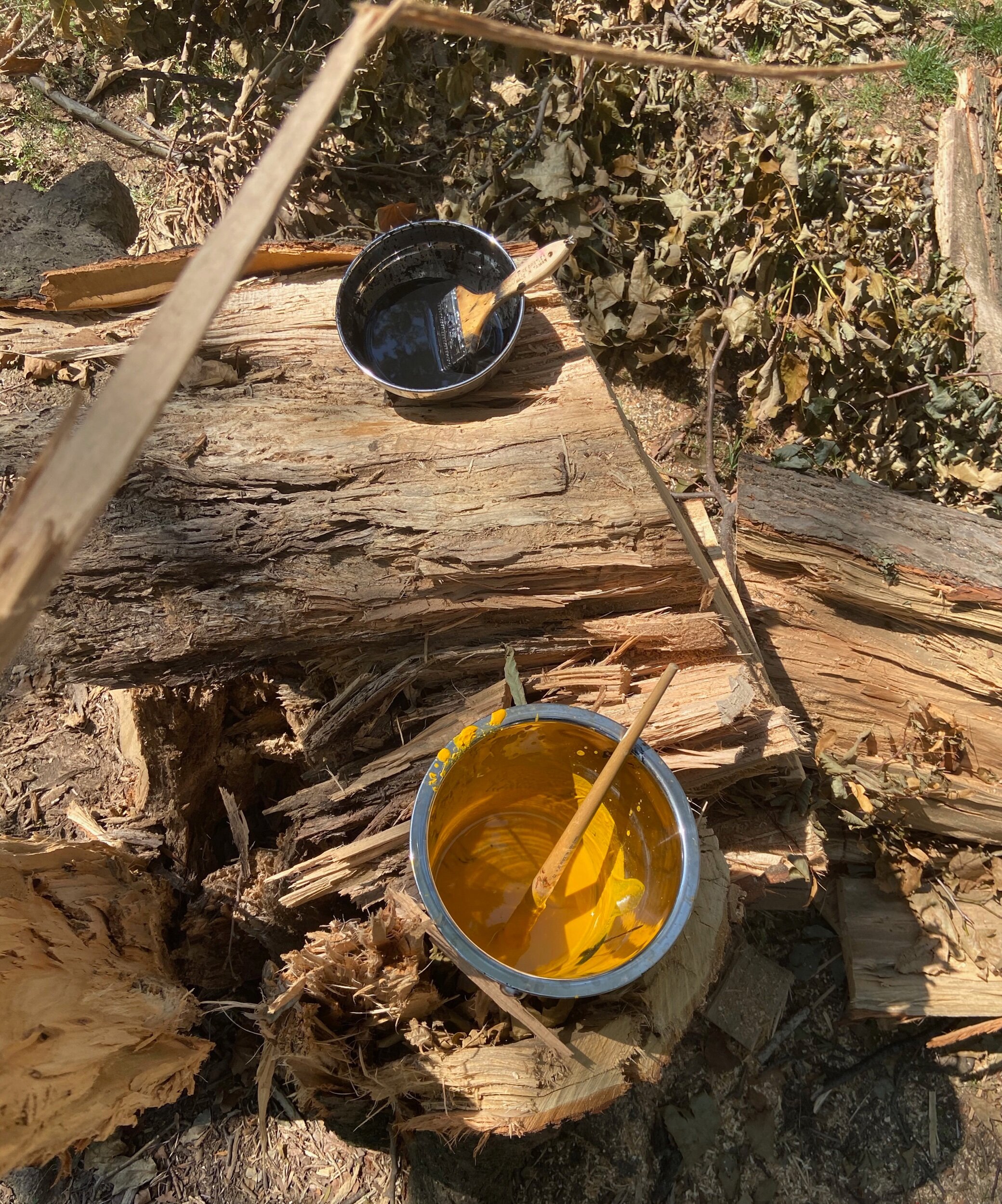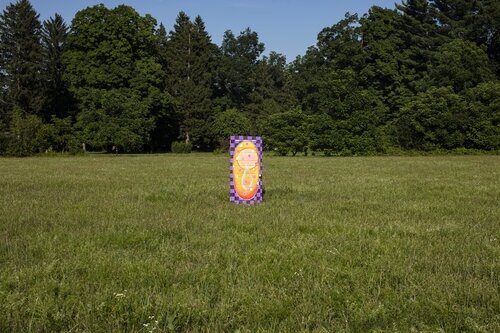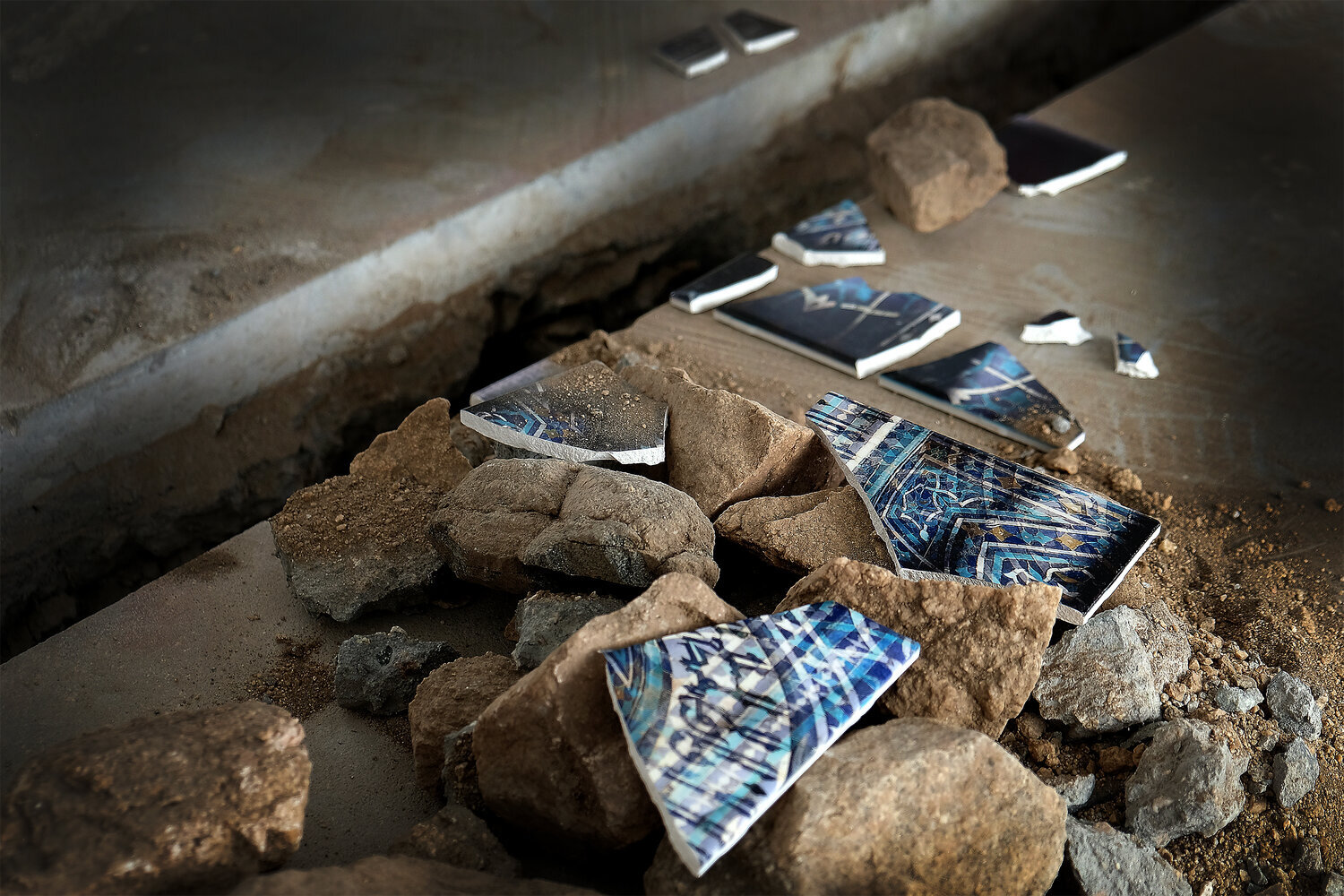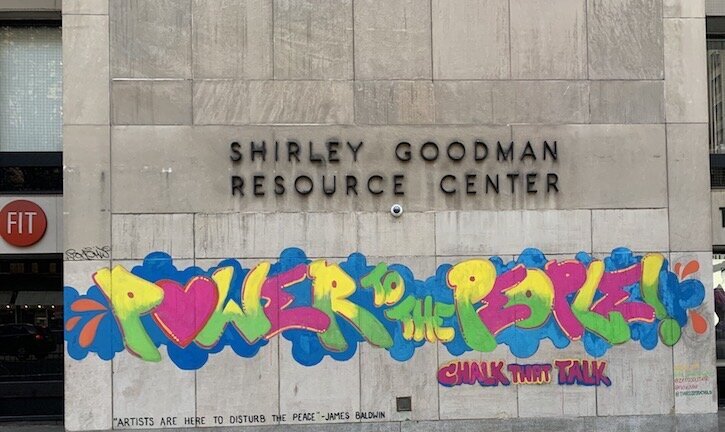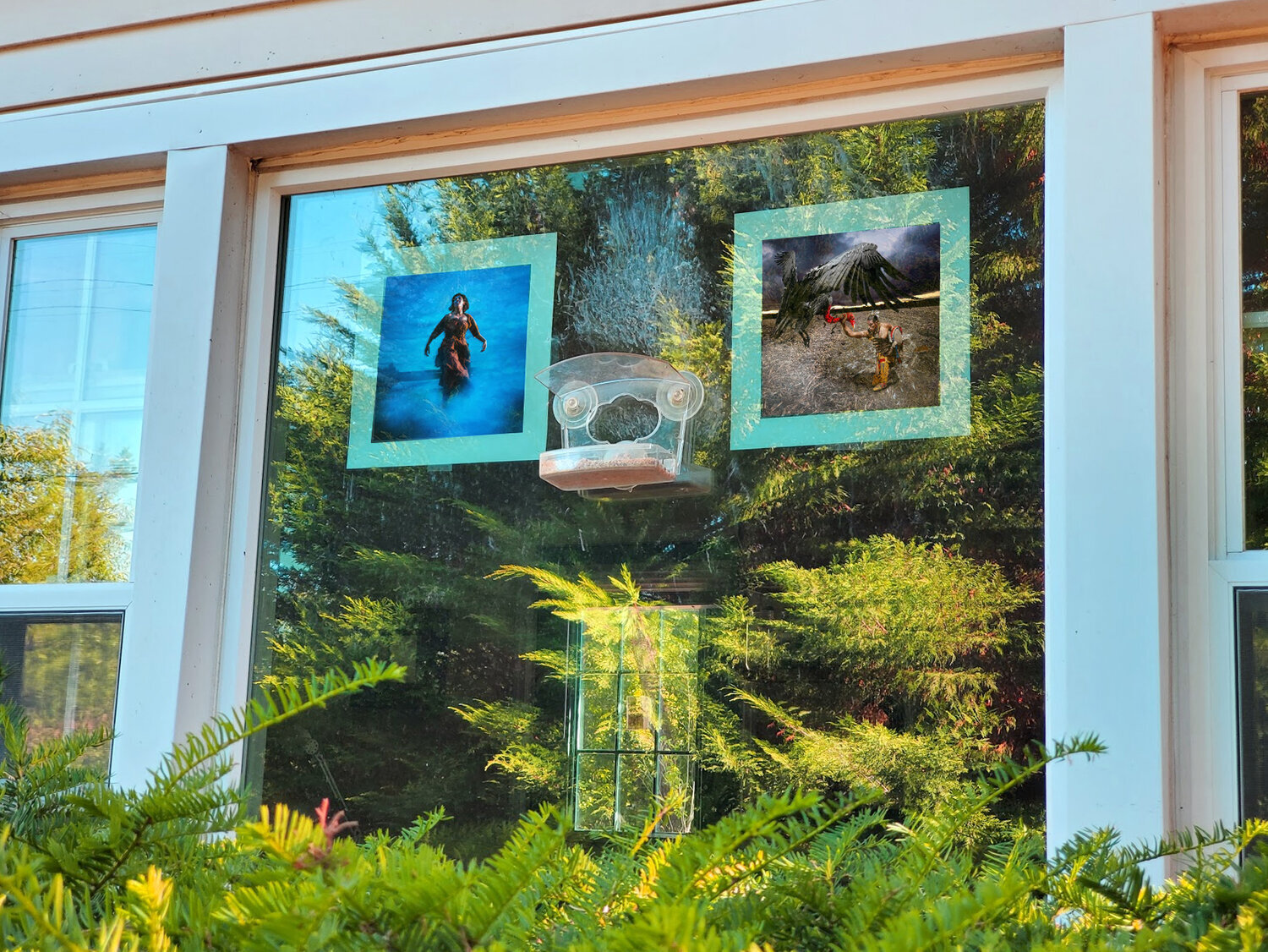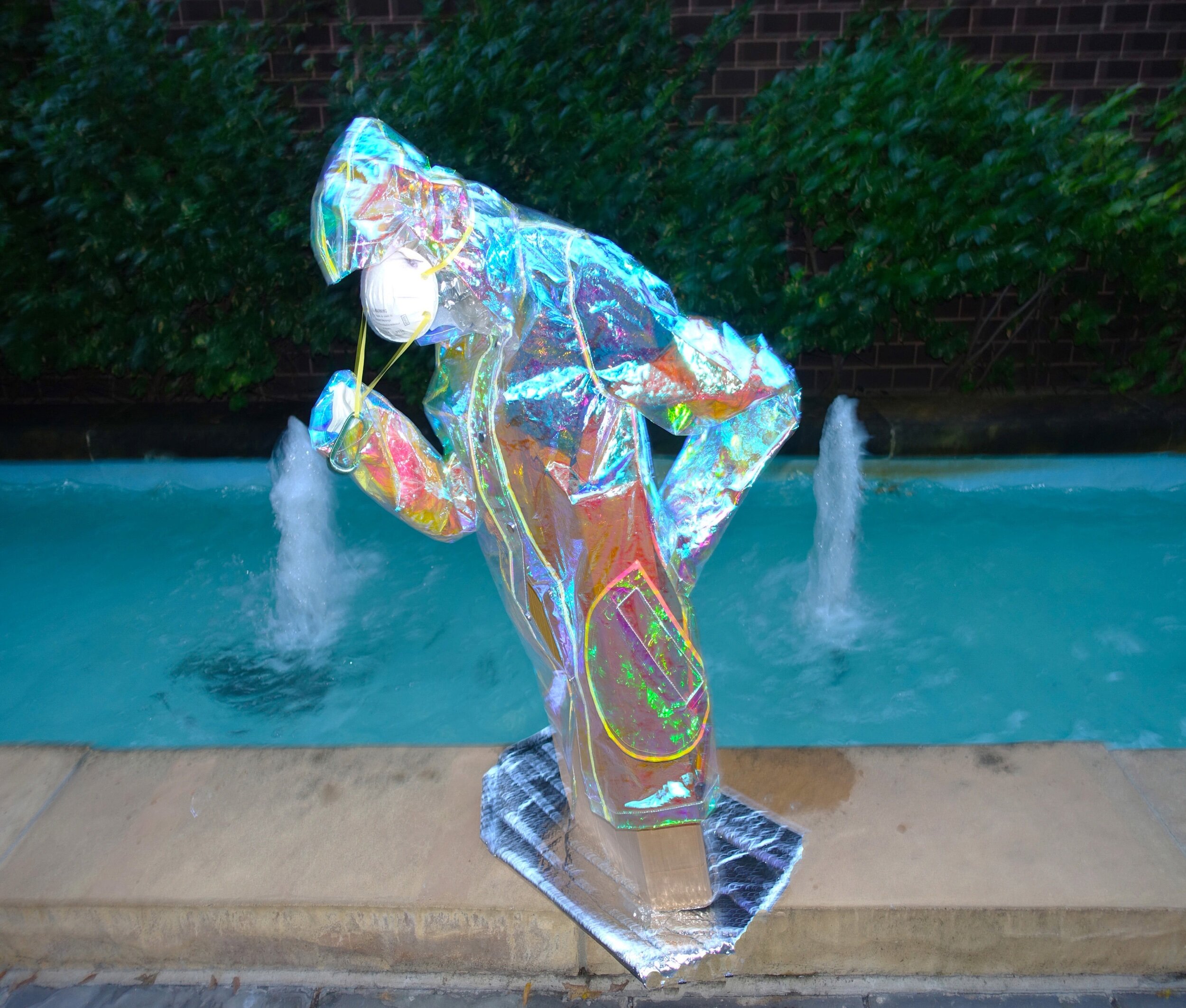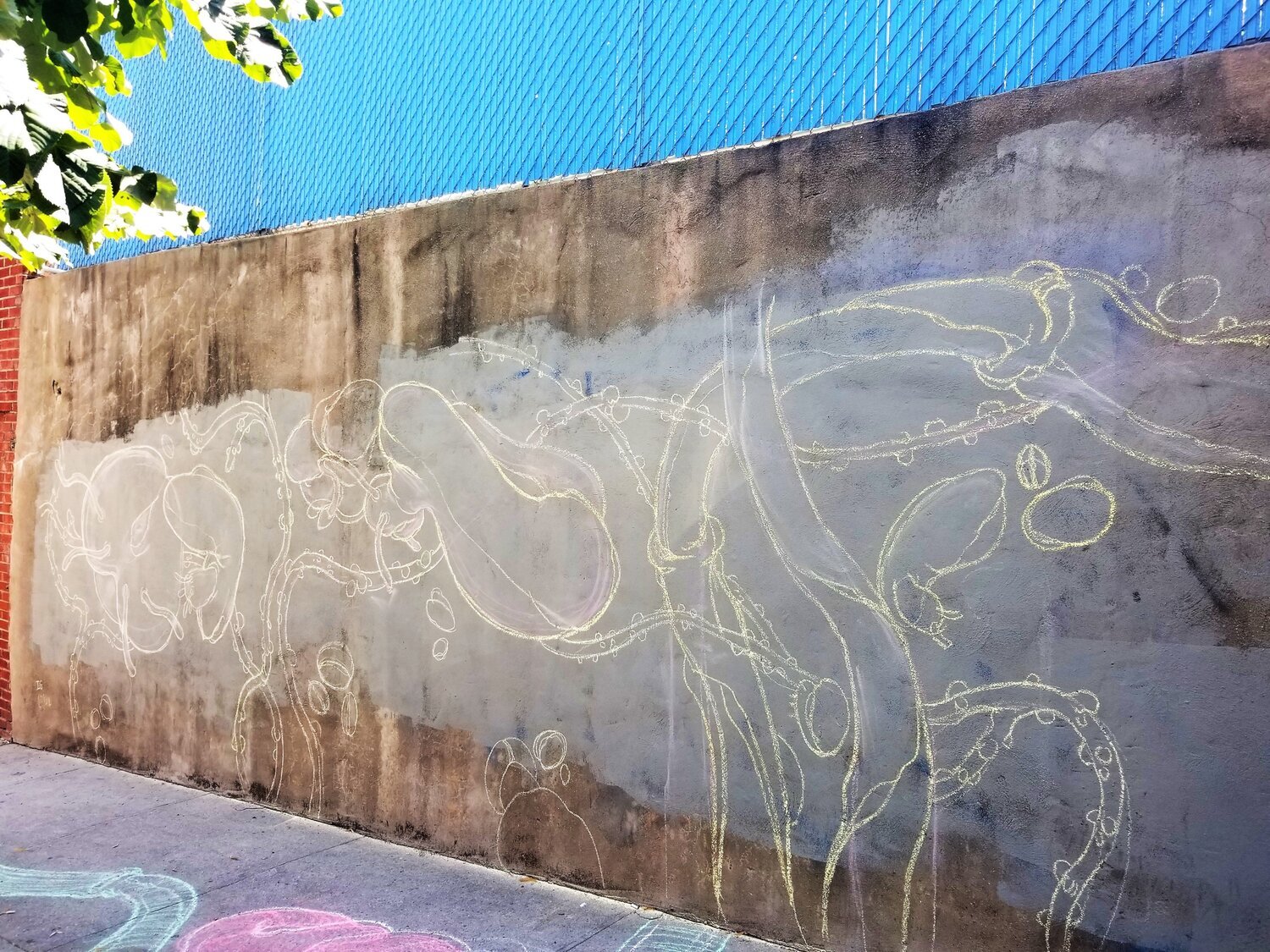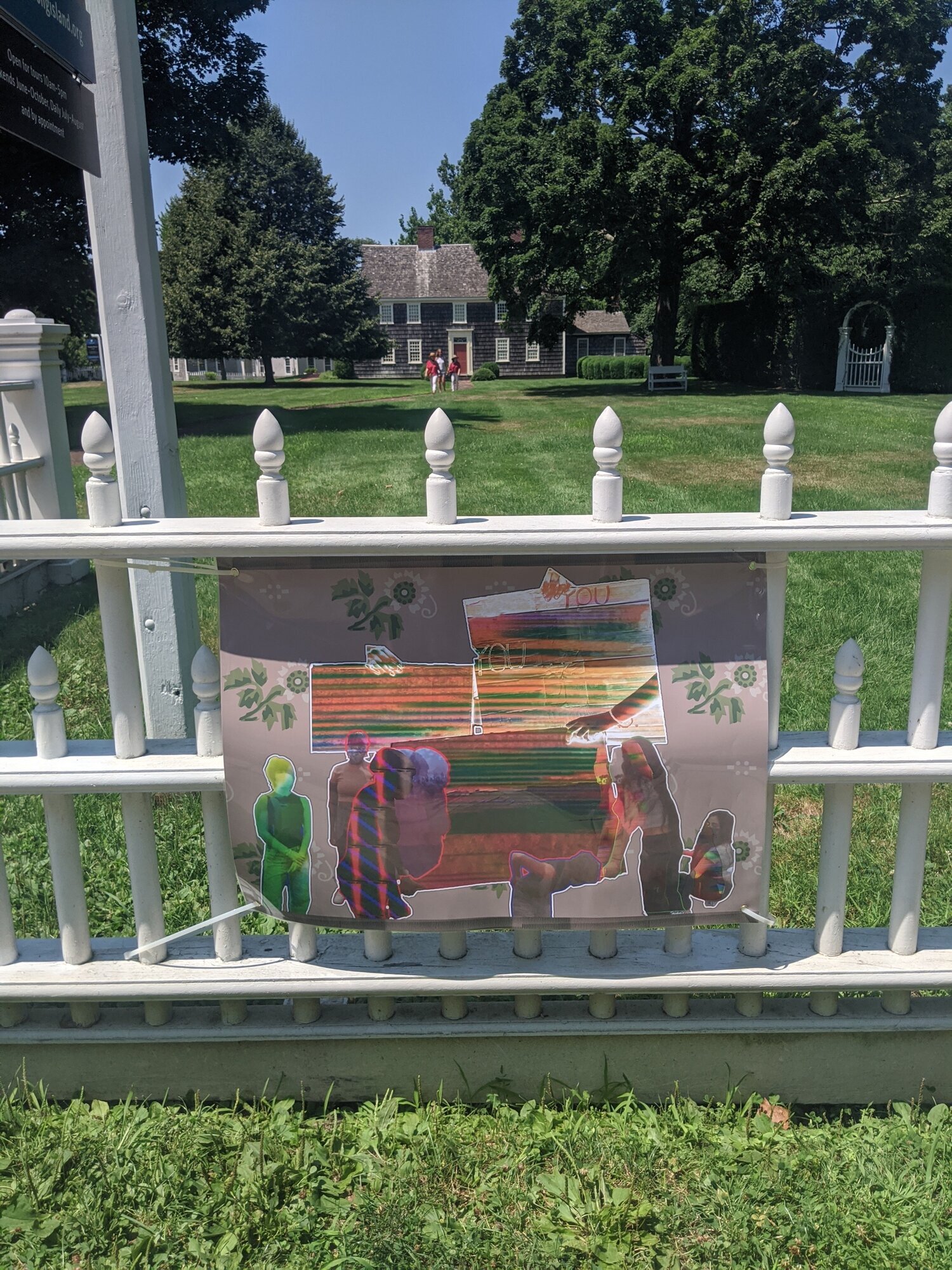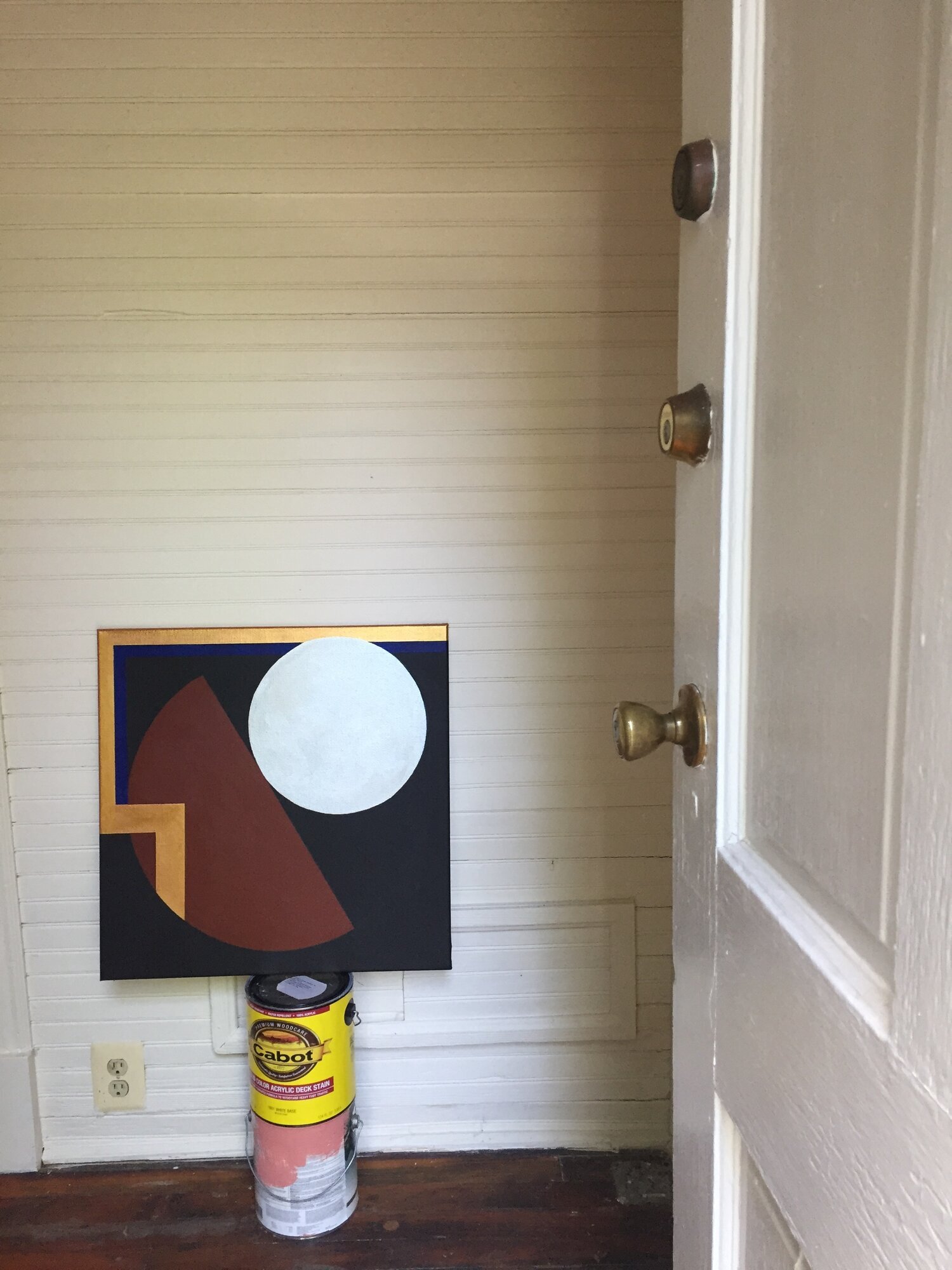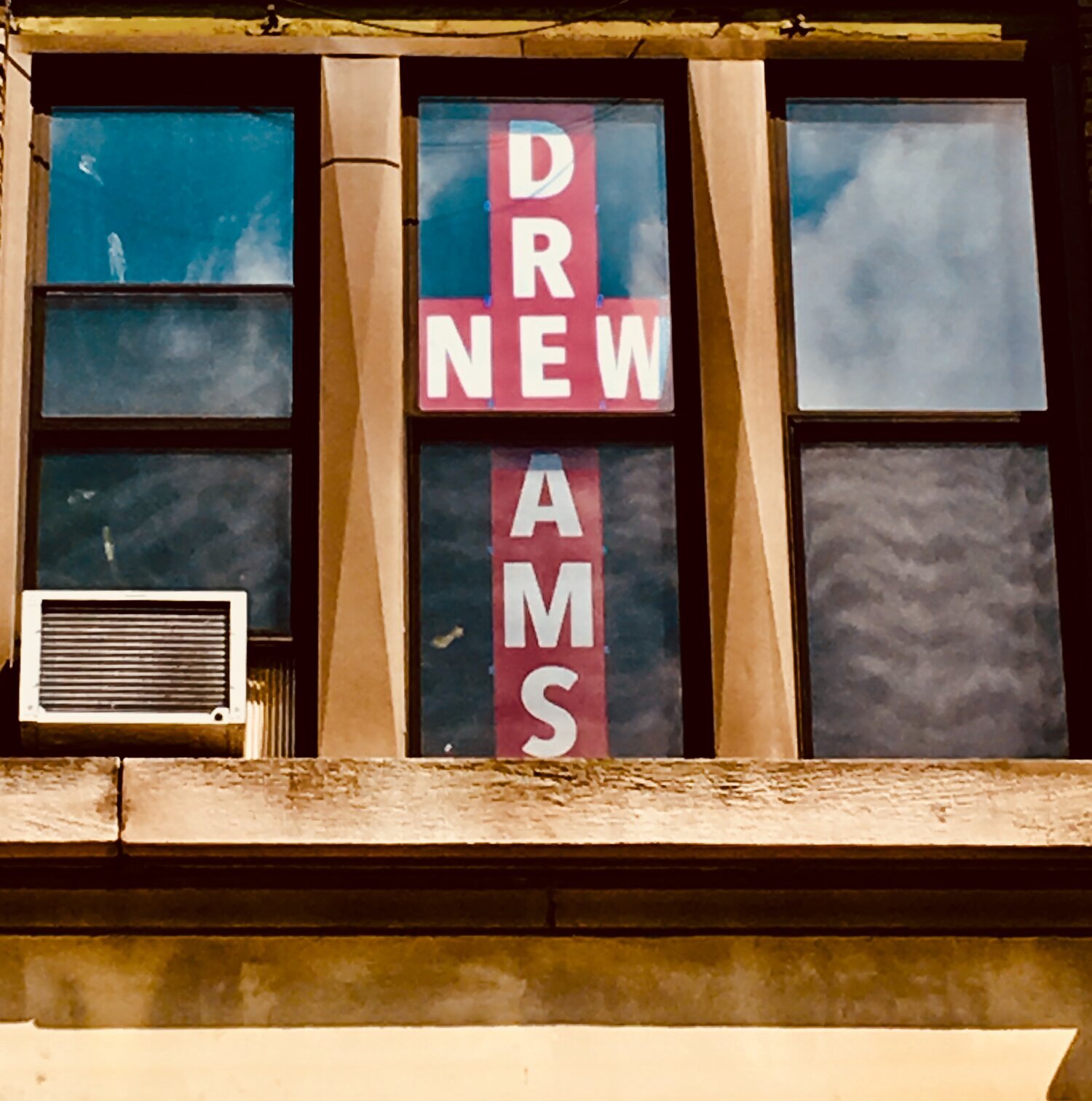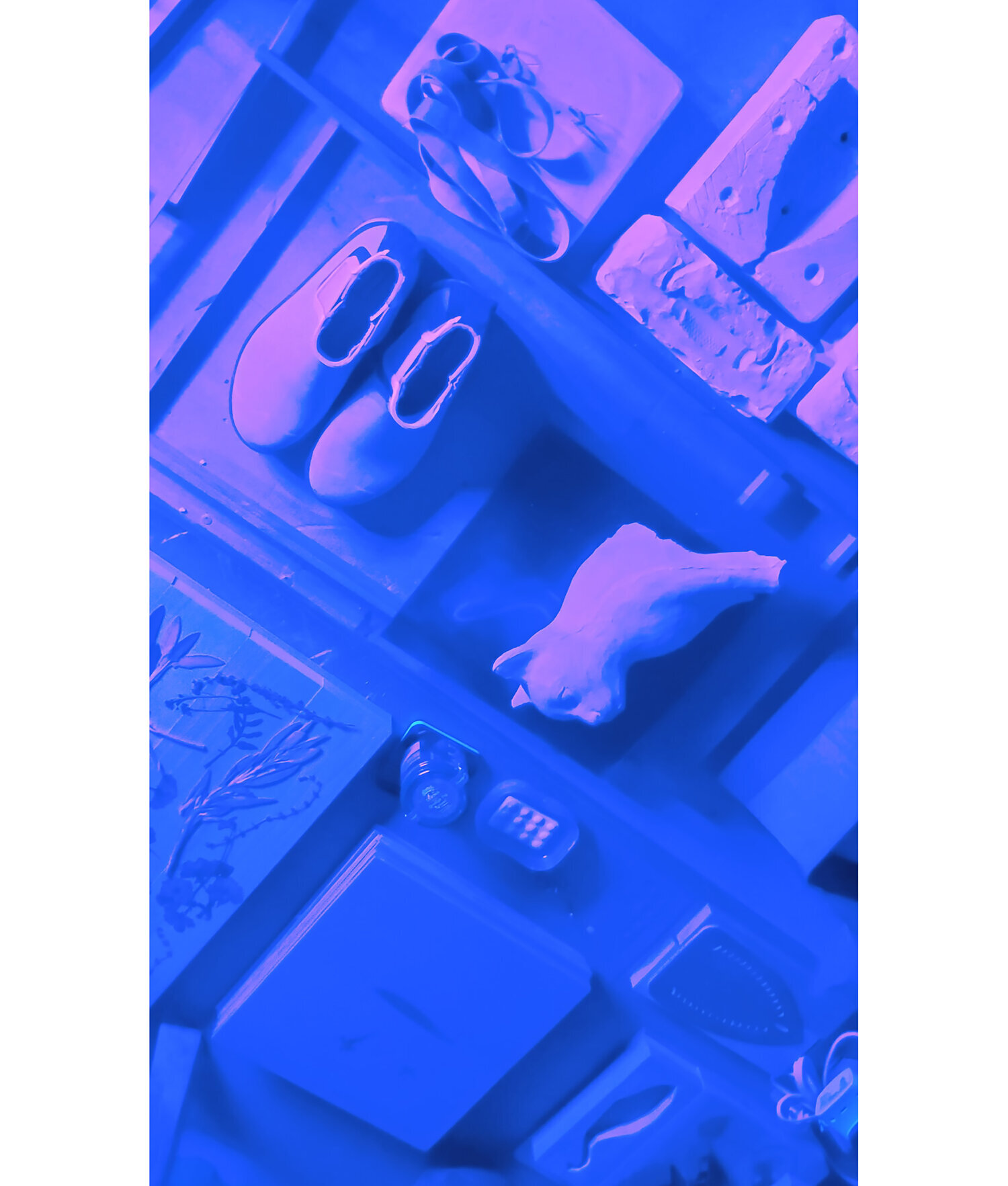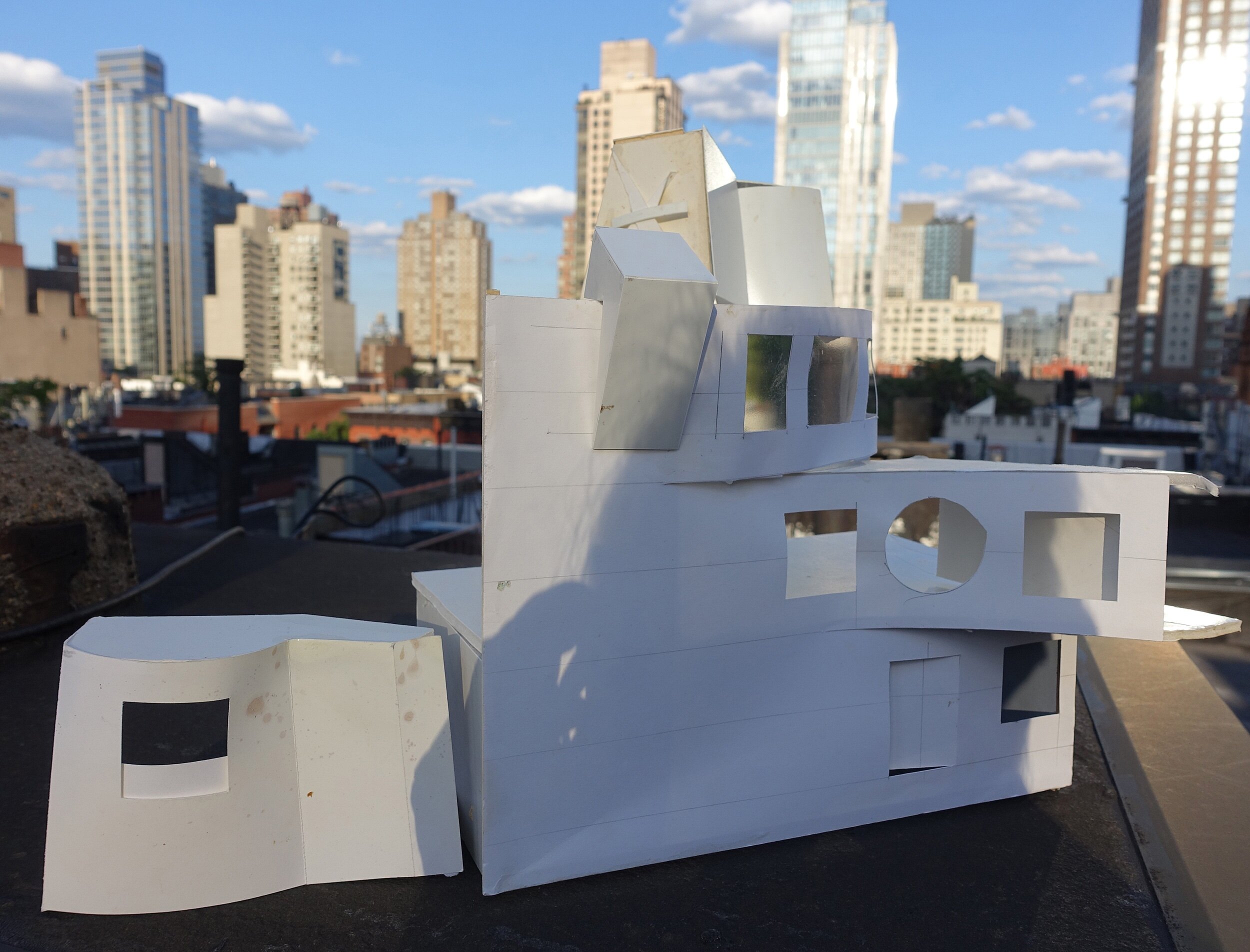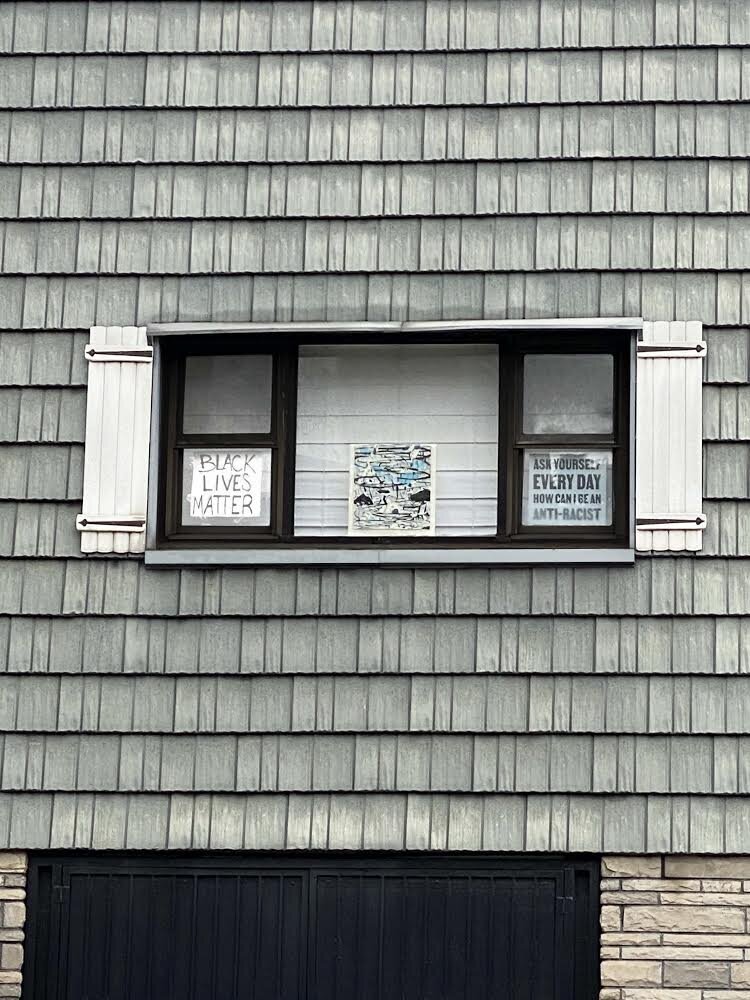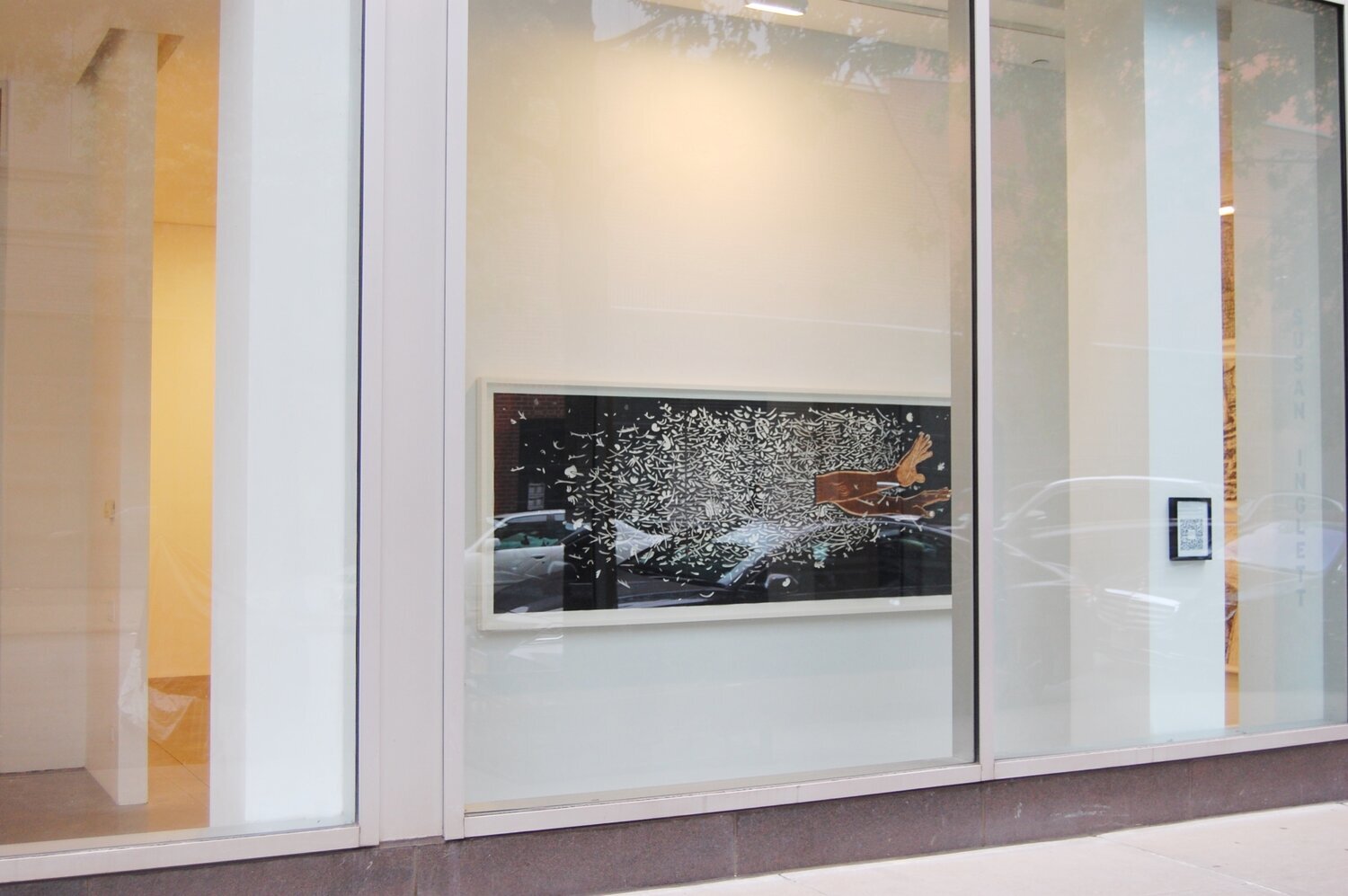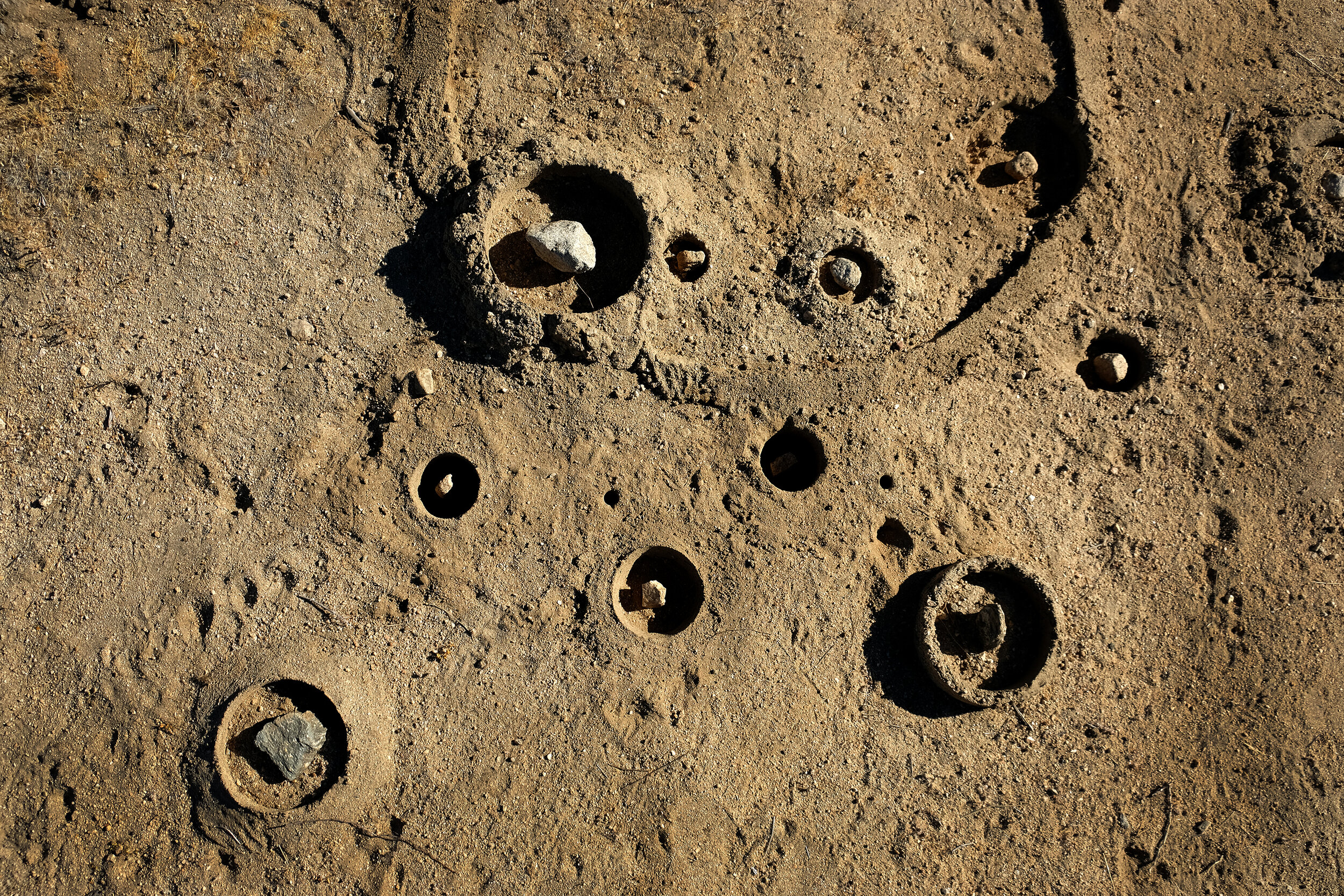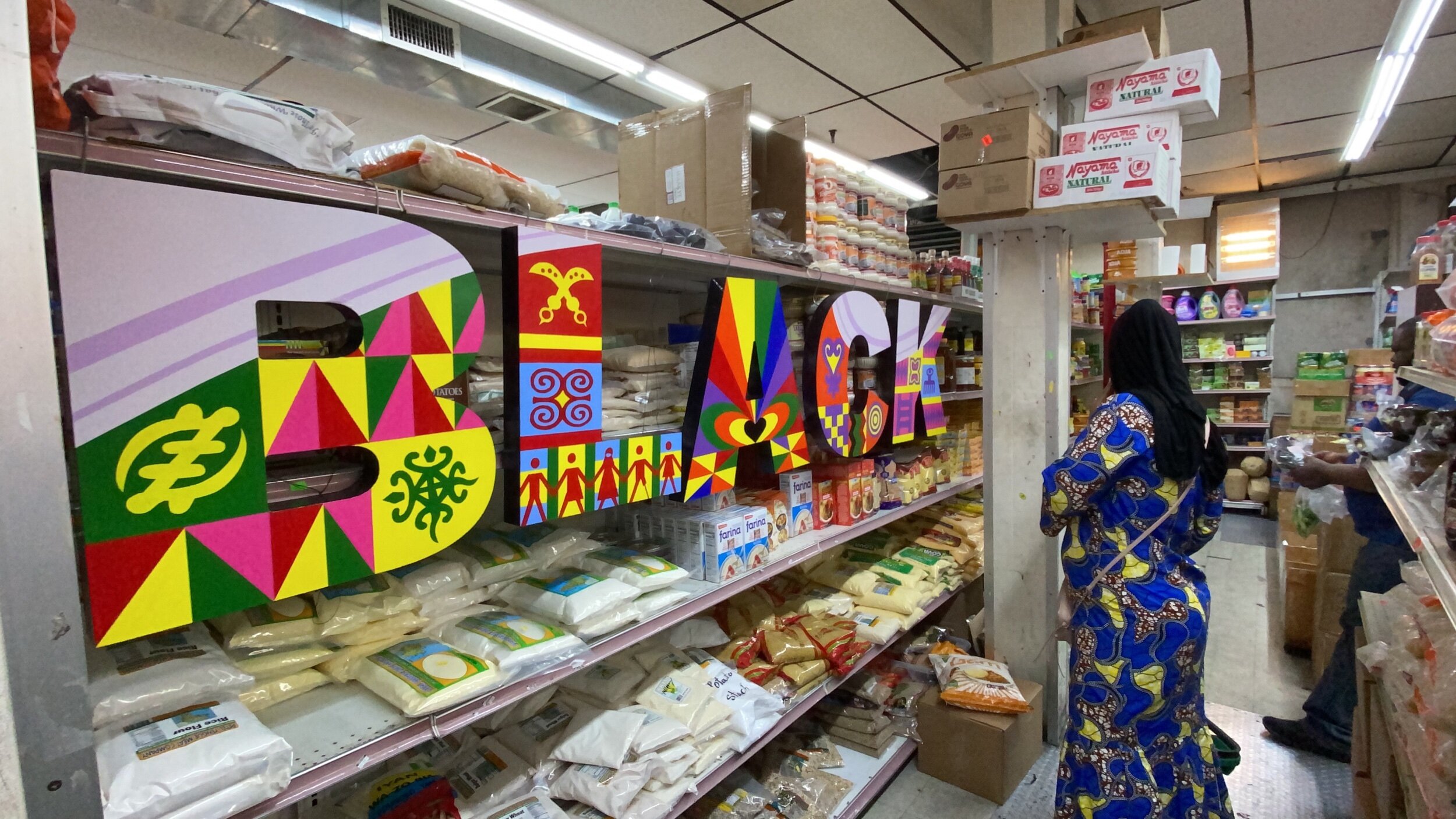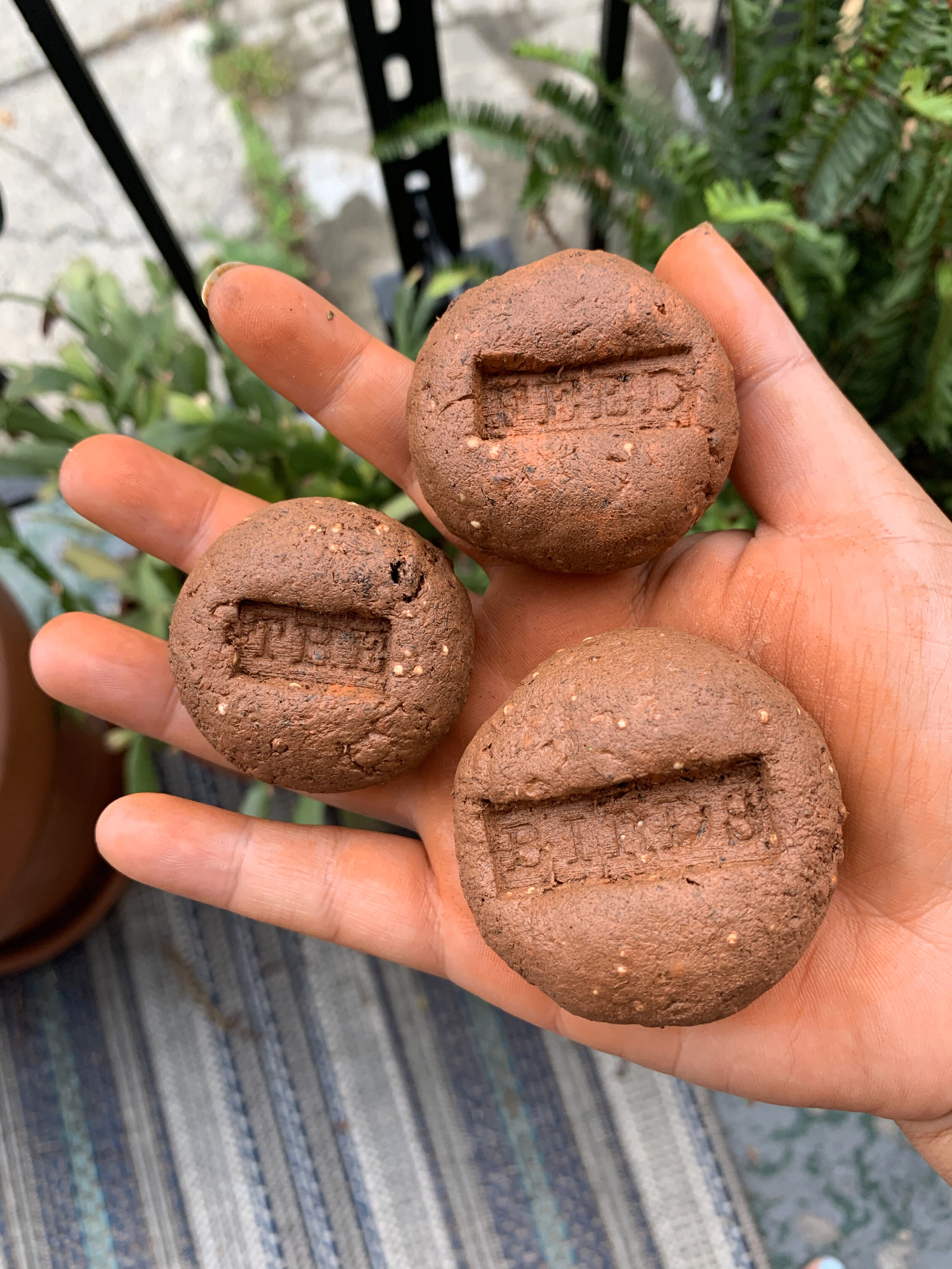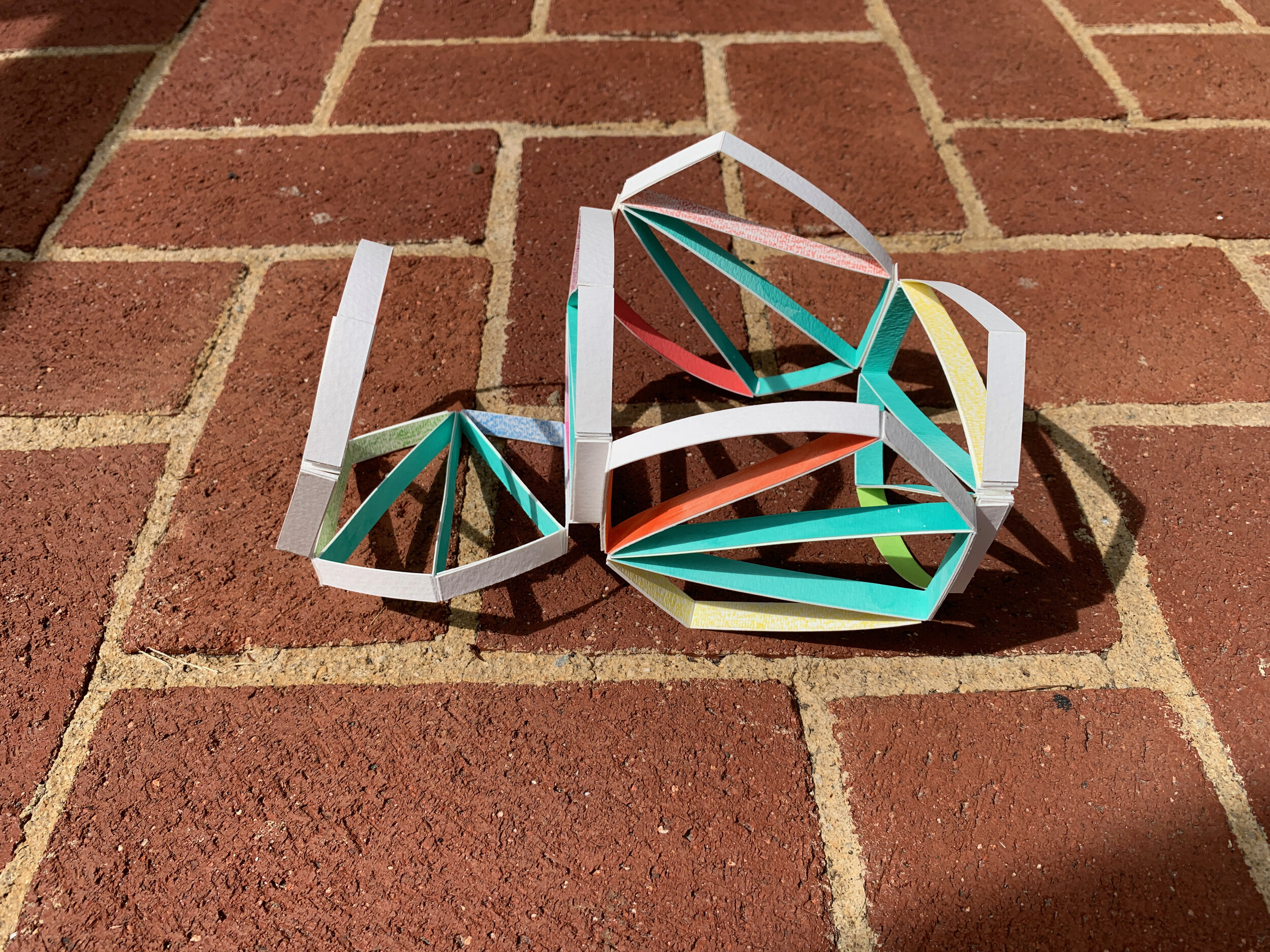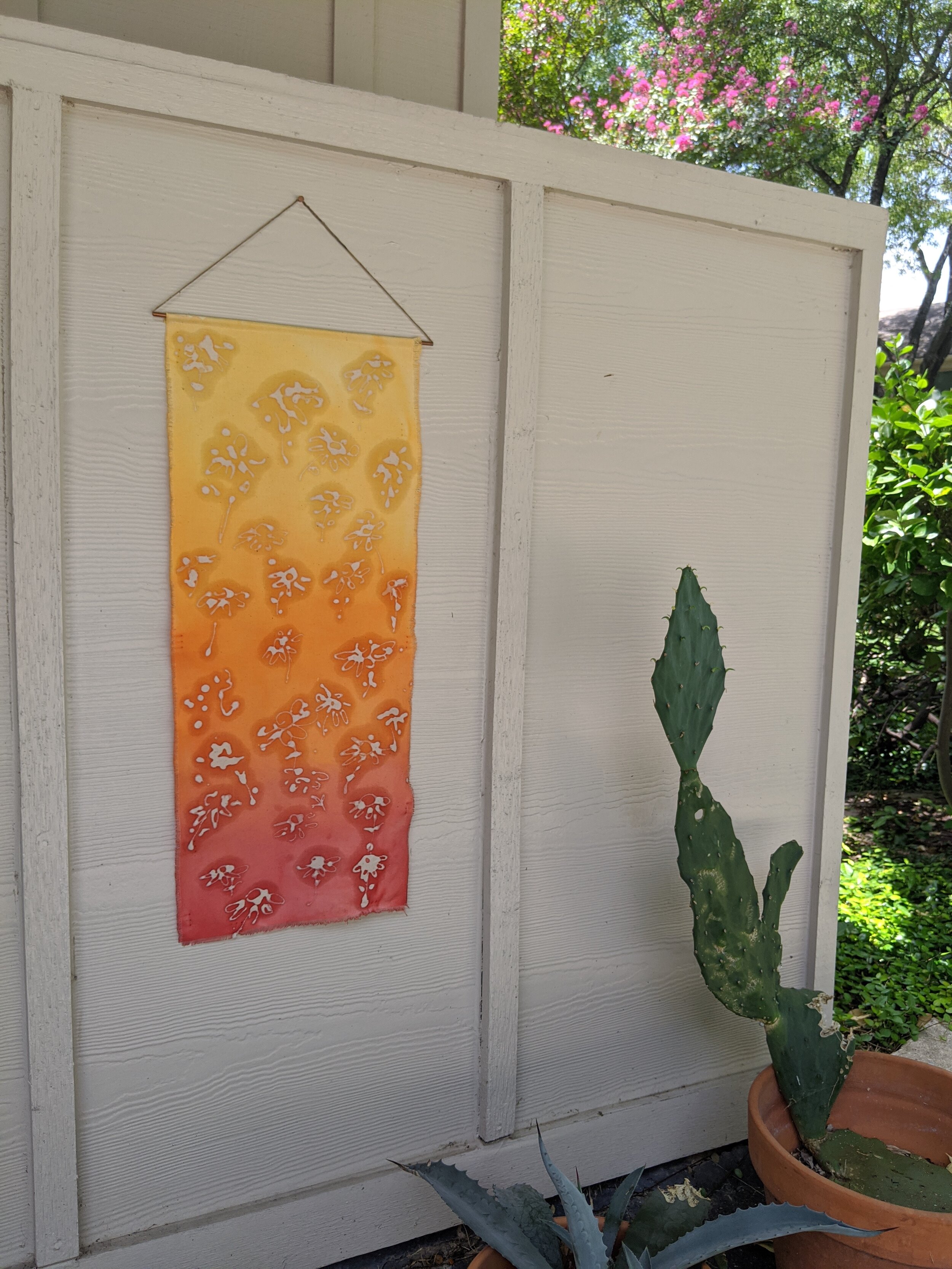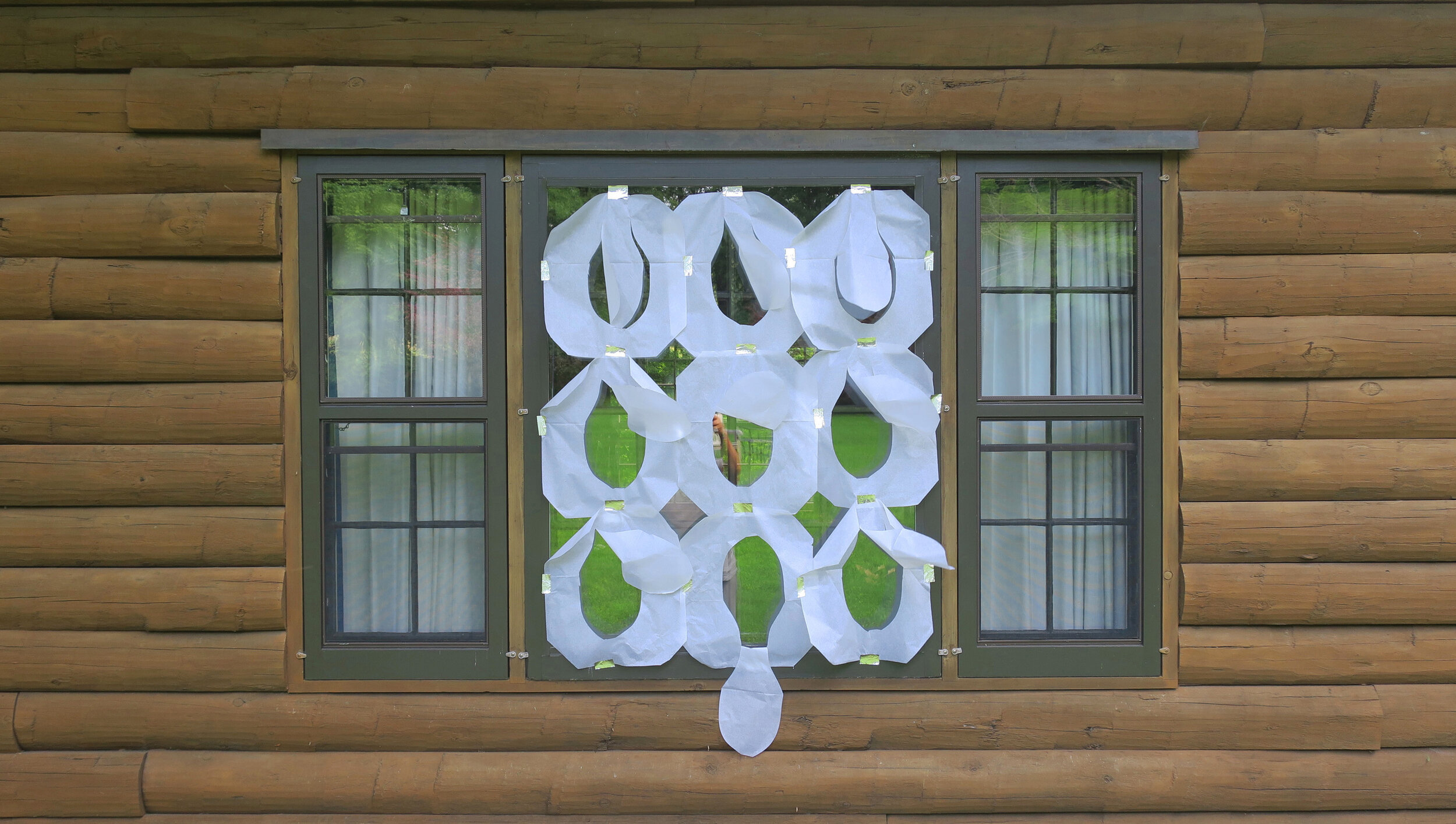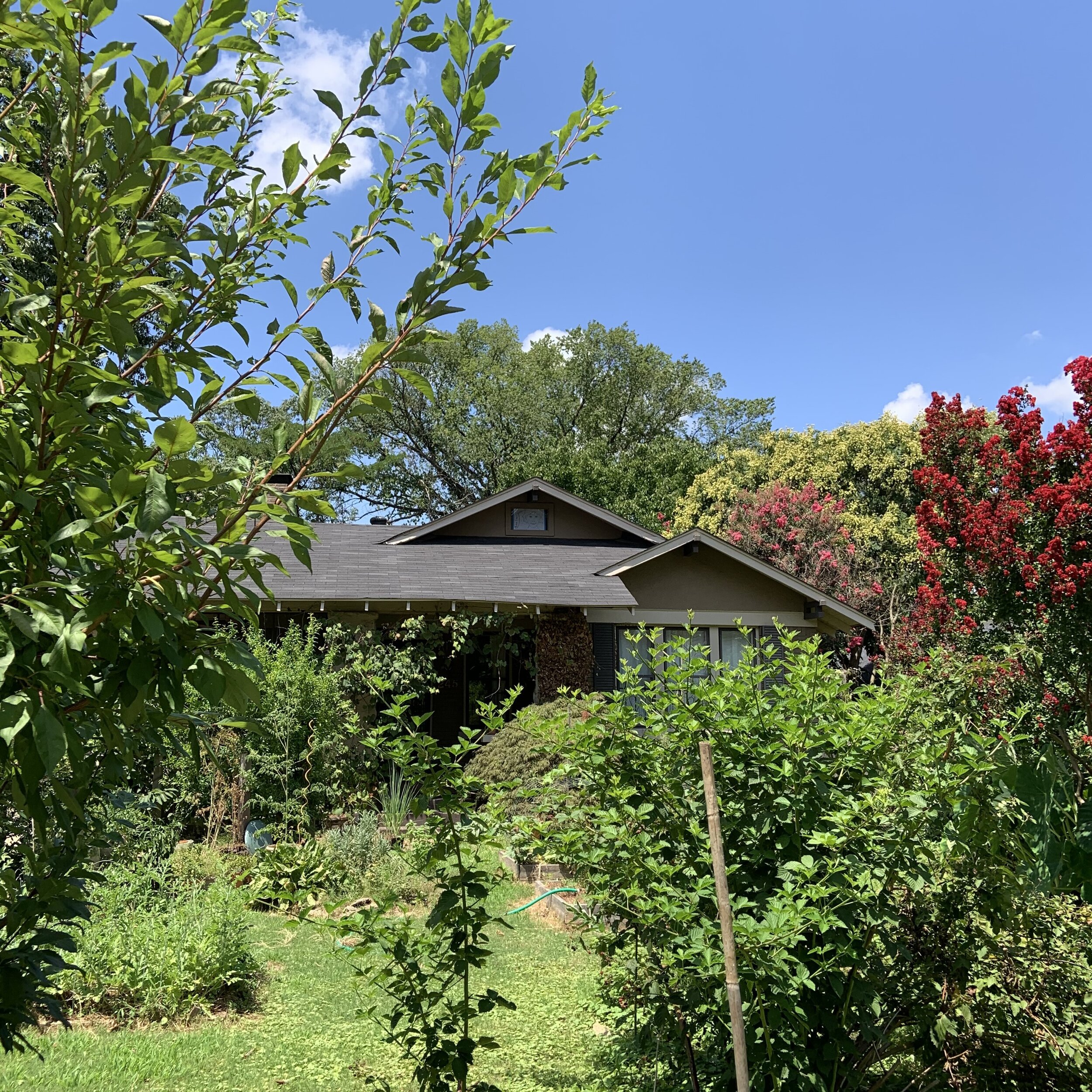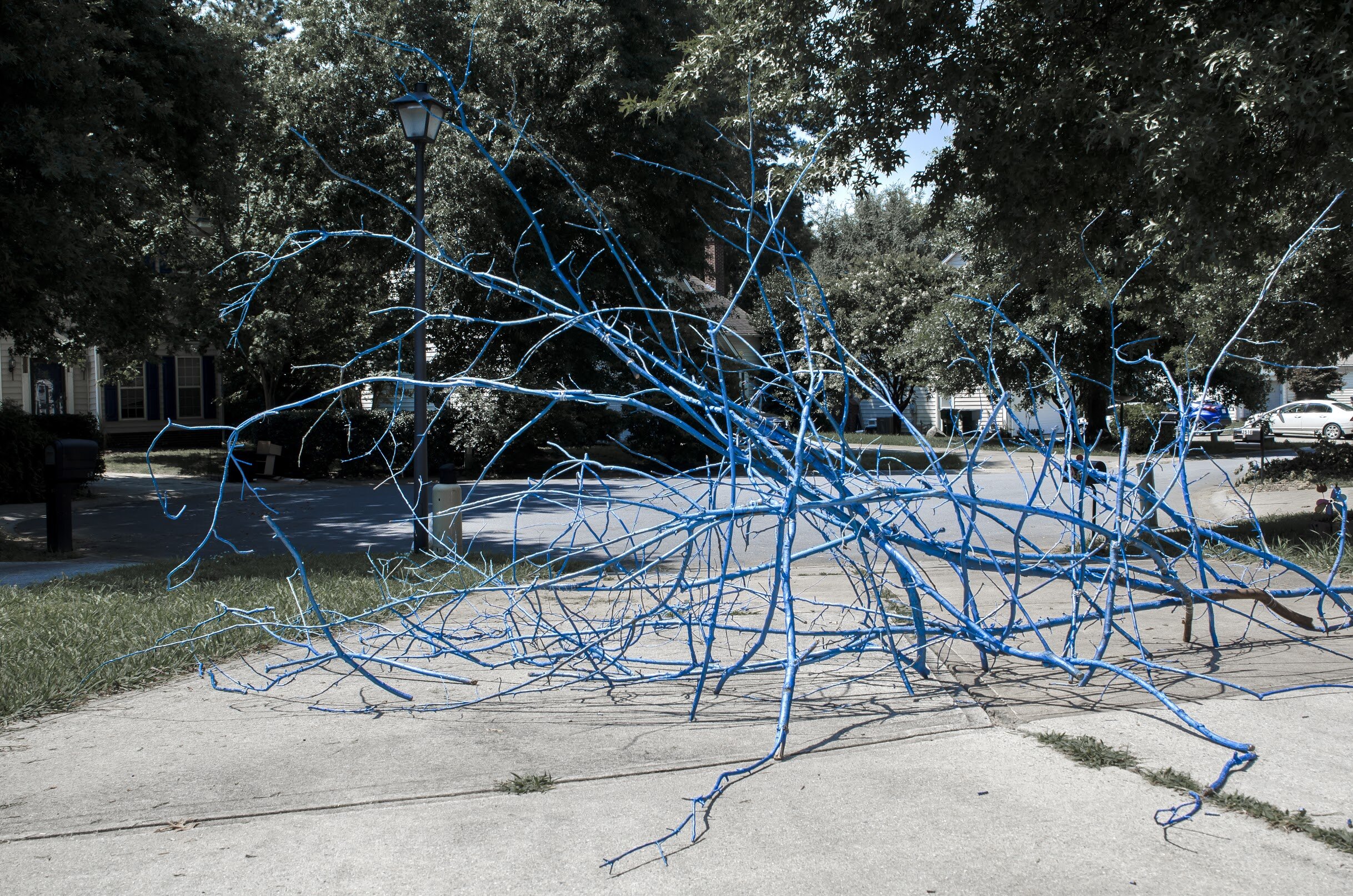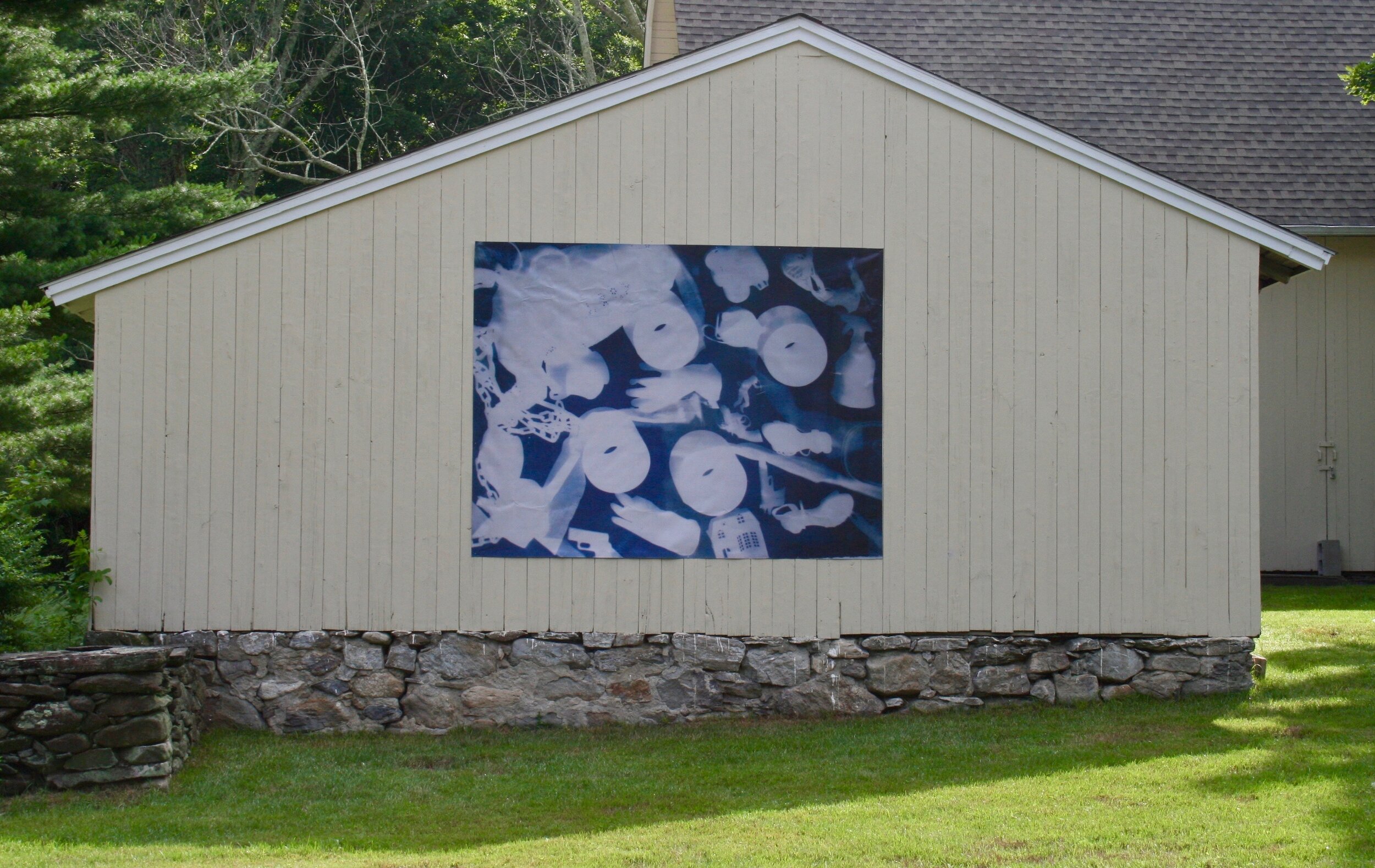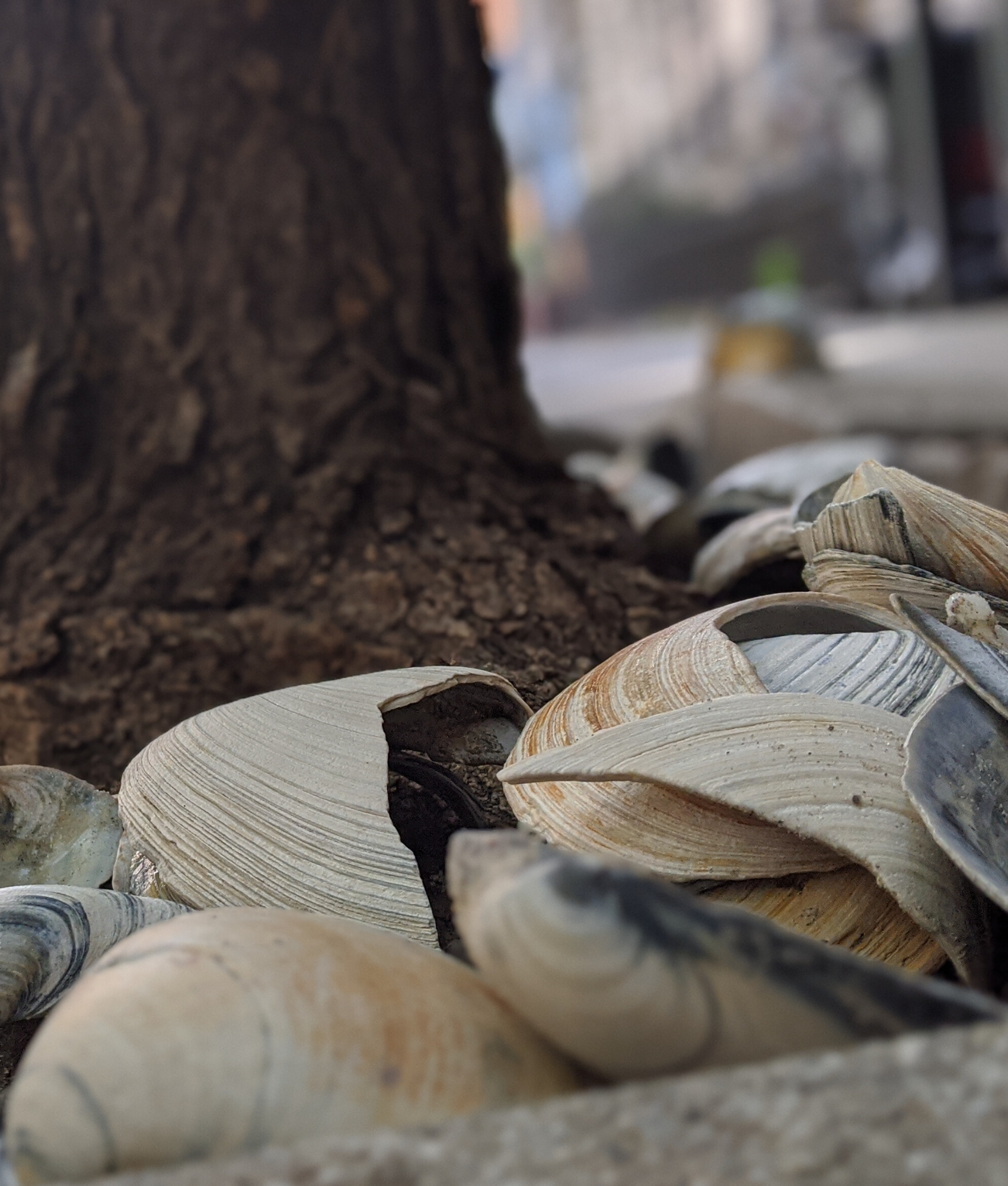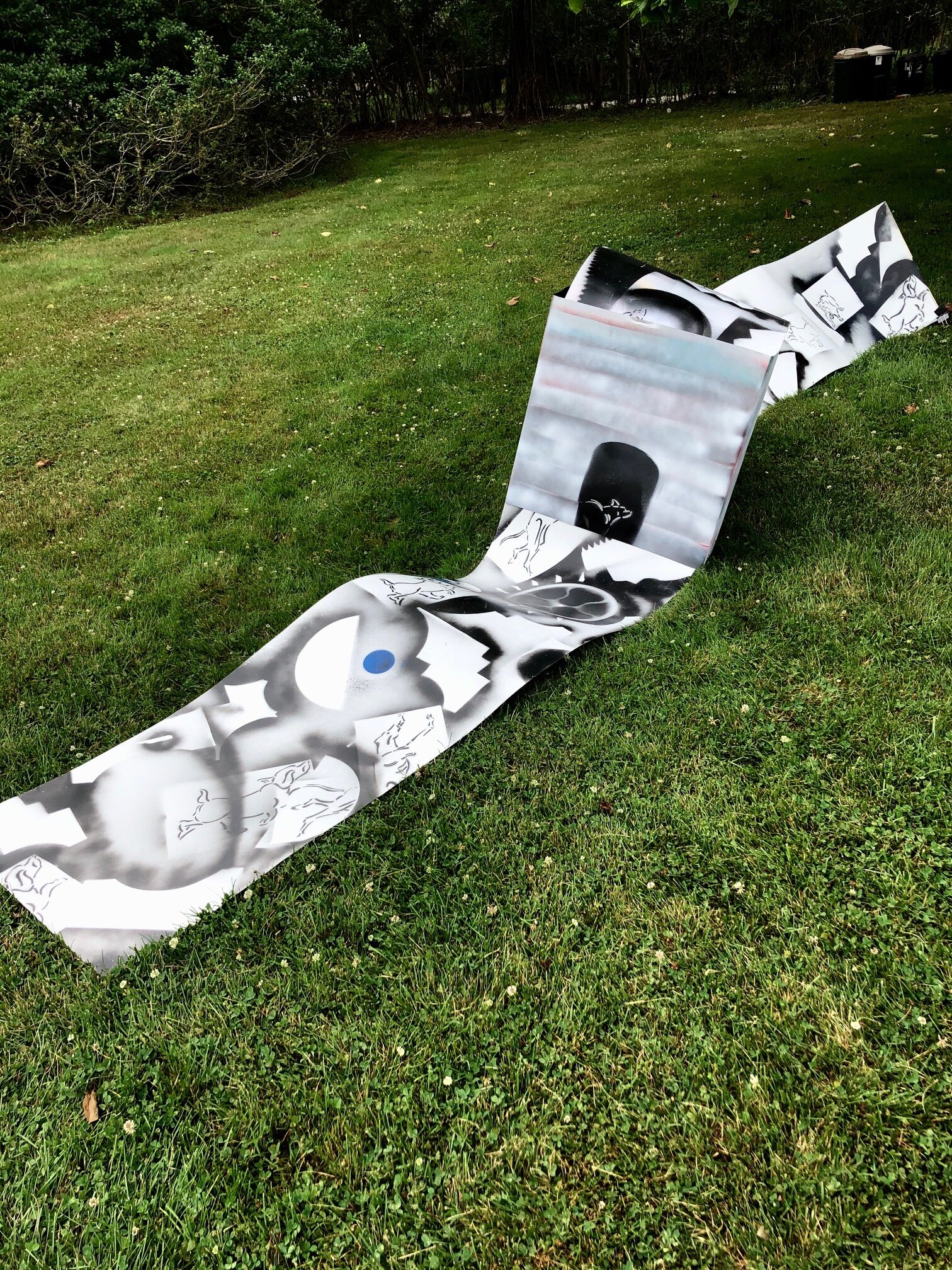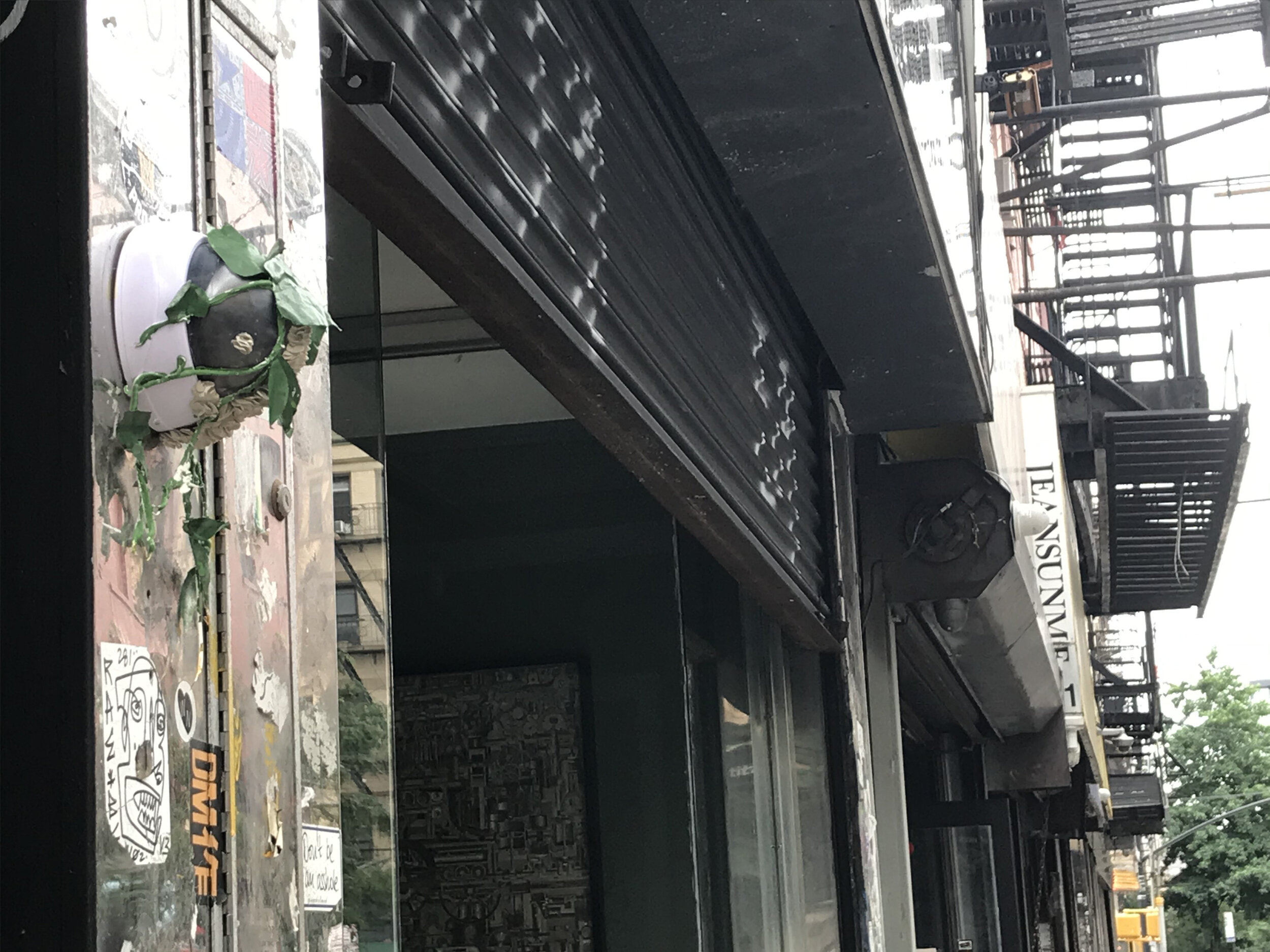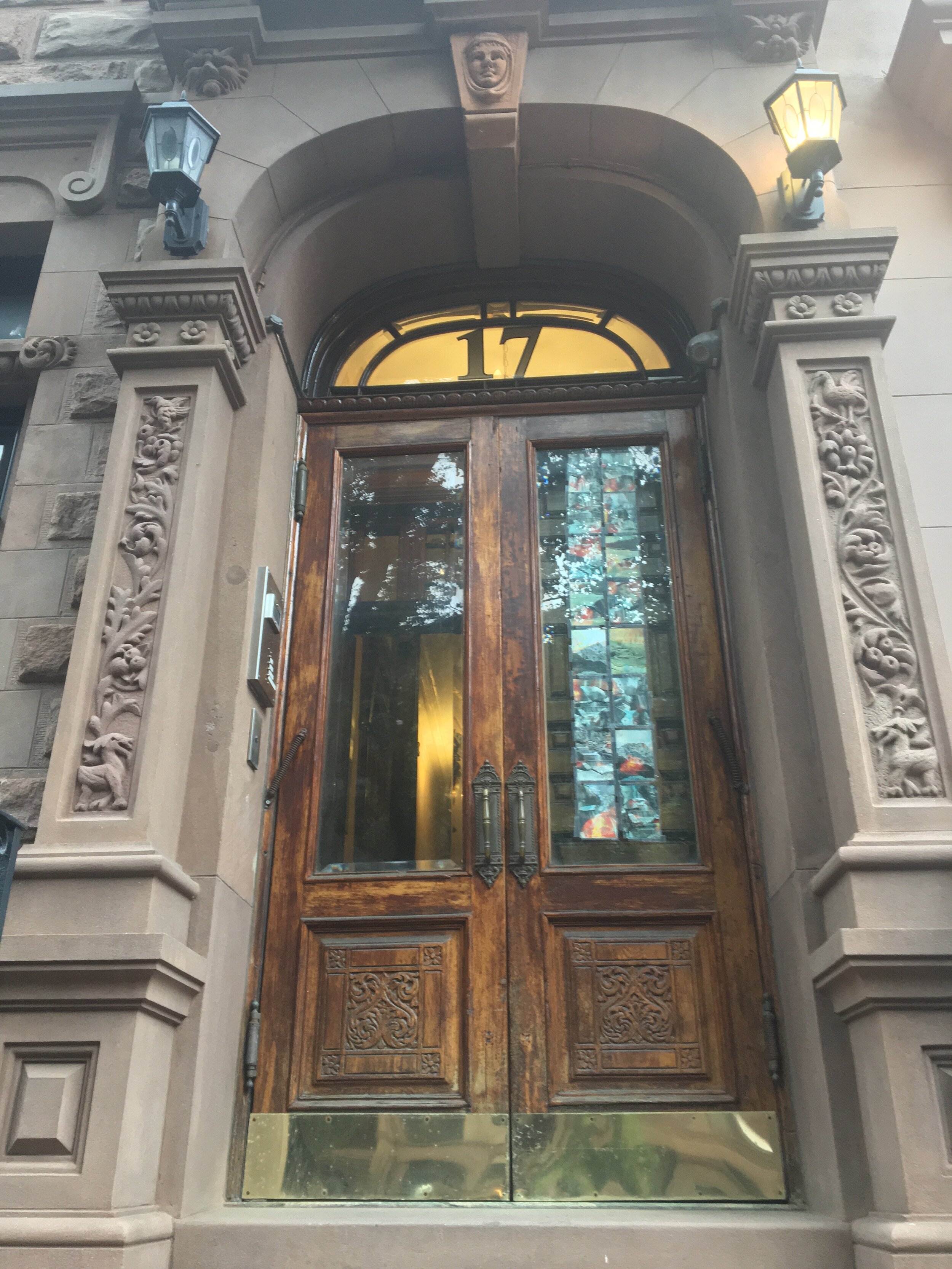Art Off-Screen Exhibition
Elissa Levy and Virginia Inés Vergara, Selva & Shadow. Location: 465 Grand Street, New York, NY 10002. Photo: Camilo José Vergara.
Vanessa Albury, Porthole Waves (Svalbard) from Stream to Sea. Location: 465 Grand Street, New York, NY 10002. This is the artist’s first eco-mural!
Art Off-Screen
July 2020 - present
In various states across the US, as well as in multiple countries, art brought local communities together and fostered dialogues on a global scale. Organized by Eileen Jeng Lynch, founder of Neumeraki, Art Off-Screen is an international exhibition of artwork and performances in outward-facing locations around the world, including the United States, Canada, Democratic Republic of Congo, Croatia, and Vietnam. Over 100 artists have participated.
Art Off-Screen provides an immersive experience that engages the community on the street level, as well as through an interactive lens on this page. View documentation and locations of the projects worldwide through the use of Google Maps (see below). Artists select their locations.
In response to pause orders during the COVID-19 global pandemic, Art Off-Screen provides access to art beyond a computer screen, and forges connections with the community — encouraging conversations, amplifying voices, inspiring creativity, and sending messages of hope and healing. Employing a variety of mediums and sites, artists created new work and/or explored new directions as well as ways of how their art is seen or experienced. Artists addressed issues surrounding the pandemic, racial violence, social injustice, climate change as well as reflections on their artistic practices, among other topics.
This project began on July 18, 2020 and is ongoing with some works on view for the indefinite future. Additional artists have been participating since July 18. With each new unveiling, occurring on July 18, August 1, August 15, August 29, September 12, September 26, October, November 2020 and beyond, Zoom conversations were conducted with each group of artists, during which they discuss their works.
Inquiries are directed to the artists, who handle their own sales. At least 20% of proceeds go to the Artist Relief Fund, The Bail Project, Equal Justice Initiative, NAACP Legal Defense and Education Fund, The Loveland Foundation, or another cause of the artist’s choice.
QR codes are placed near the works.
On view in NY
Events and Press in NY, 2021 - 2022
Opening Celebration of Levy & Vergara’s Selva & Shadow, pop-up installations by Blanka Amezkua and Vladimir Cybil Charlier, preview of Vanessa Albury’s mural, and Sewing Social!
Sunday, June 5, 2022 2-5 pm
465 Grand Street, New York, NY 10022
Getting Here Celebration: Reception & Fundraiser
October 9, 2021, 2 - 6 pm at Grand and Suffolk Streets, NYC
Press:
Bowery Boogie, April 25, 2022
Morgan Everhart’s mural Getting Here, Grand and Suffolk, New York, NY 1002:
A Women’s Thing, August 25, 2021
On View in NY and Egypt, 2020 - 2022 (indicated by green icons on the map)
Thursday, December 3, 6-7 pm
Zoom Conversation with Artists
Alpine Rooster (Pablo Helguera and Dannielle Tegeder - NY), Black Student Union of FIT (Traci Johnson - NY), Yasmine ElMeleegy (Egypt), Elana Herzog (NY), Ginny Huo (NY), Will Hutnick (NY), Jaye Rhee (NY), Jean Shin (NY), Christine Wong Yap (CA)
On view October 24 through 25, 2020
Opened September 26 through October 10, 2020
Wednesday, October 14, 5:30 pm - 7 pm
Zoom Conversation with Artists from September 26 Opening:
Vladimir Cybil Charlier, Nandini Chirimar, Esperanza Cortés, Linda Lauro-Lazin, Nkembo Moswala, Lina Puerta, Sharmistha Ray, Annesofie Sandal, Sara C. Sun, Adrienne Wheeler, Katie Yang
Opened September 12, 2020
Wednesday, September 30, 5:30 pm
Zoom Conversation with Artists from September 12 Opening:
Keren Anavy, Donna Bassin, Gina Goico, Andrea Haenggi, Amir Hariri, Duy Hoàng, Le’Andra LeSeur, Greg Lindquist, Geoffrey Owen Miller, Loren Nosan and Christiana Laine, Philip A. Robinson Jr., Anna Shukeylo, Tiffany Smith, Jennifer Watson, Shoshanna Weinberger
Opened August 29, 2020
Thursday, September 10, 5:30-6:45 pm
Zoom Conversation with Artists from August 29 Opening:
Liene Bosquê, Maya Ciarrocchi, Katya Grokhovsky, Jac Lahav, Rebecca Levitan, London Calling Collective, Laura Mosquera, Joe Nanashe, Amy Pryor, Katie Westmoreland, Gus Wheeler
Opened August 15, 2020
Thursday, August 27, 5:30-7 pm
Zoom Conversation with Artists from August 15 Opening:
Stephanie Alvarado, Luisa Caldwell, Elisabeth Condon, Anna Cone, Paul Hunter, Yashua Klos, Daniela Kostova, Wendy Letven, Amanda Marchand, Leeza Meksin, Helina Metaferia, Daniela Gomez Paz, Yelaine Rodriguez, Christina Stahr, Elizabeth Velazquez, Bea Wolert
Opened August 1, 2020
Thursday, August 13, 5:30-7 pm
Zoom Conversation with Artists from August 1 Opening:
Natessa Amin, Jeremy Dennis, Nina Kuo, Juanita Lanzo, LoVid, Stephen Maine, Mario Matokovic, Beatrice Modisett, Robert C Morgan, Alexandre Kyungu Mwilambwe, Gelah Penn, Michael Pribich, Lorin Roser, Rachel Sydlowski, Mary Temple, and Lilia Ziamou
Opened July 18, 2020
Thursday, July 30, 5:30 - 7 pm
Zoom Conversation with Artists from July 18 Opening:
Cecile Chong, Sara Jimenez & Jason Schwartz, Tijay Mohammed, Natalia Nakazawa, Alex Paik, Liz Porter, Yohanna M Roa, Margaret Roleke, Carol Saft, Melissa Staiger, Christine Lee Tyler, and Virginia Inés Vergara
Participating Artists with locations of the works
(list in formation)
North America
Ashton Agbomenou (NY)
Fariba Salma Alam (CA)
Vanessa Albury (NY)
Stephanie Alvarado (NY)
Natessa Amin (PA)
Keren Anavy (NY)
Allen Thomas Ball (CA)
Austin Ballard (NY)
Donna Bassin (NJ)
Bahar Behbahani (NY)
Black Student Union of FIT (NY)
Noémie Jennifer Bonnet (NY)
Liene Bosquê (FL)
Luisa Caldwell (NY)
Anna Campbell and Jill H. Casid (WI)
Vladimir Cybil Charlier (NY)
Nandini Chirimar (NY)
Cecile Chong (NY)
Amanda Church (NY)
Maya Ciarrocchi (NY)
Liz Collins (NY)
Elisabeth Condon (FL)
Anna Cone (NY)
Esperanza Cortés (NY)
Jeremy Dennis (NY)
Anaïs Duplan (NY)
Dominique Duroseau (NJ)
Morgan Everhart (NY)
Gina Goico (NY)
Katya Grokhovsky (NY)
andrea haenggi with EPA (NY)
Amir Hariri (NY)
Elana Herzog (NY)
Duy Hoàng (NY)
Ginny Huo (NY)
Paul Hunter (NY)
Will Hutnick (NY)
Sara Jimenez in collaboration with Jason Schwartz (NY)
Yashua Klos (NY)
Daniela Kostova (NY)
Nina Kuo (NY)
Jac Lahav (CT)
Juanita Lanzo (NY)
Linda Lauro-Lazin (NY)
jc lenochan (NY)
Rhea Leonard (FL)
Le'Andra LeSeur (NJ)
Wendy Letven (NJ)
Elissa Levy & Virginia Inés Vergara (NY)
Greg Lindquist (NY)
London Calling Collective (NY)
LoVid (NY)
Rebecca Levitan (NY)
Stephen Maine (CT)
Amanda Marchand (Canada)
Leeza Meksin (MA)
Helina Metaferia (NY)
Geoffrey Owen Miller (NY)
Beatrice Modisett (NY)
Tijay Mohammed (NY)
Robert C. Morgan (NY)
Laura Mosquera (NY)
Nkembo Moswala (Québec, Canada)
Salvador Muñoz (NY)
Natalia Nakazawa (NY)
Joe Nanashe (NY)
Loren Nosan and Christiana Lane (MI)
Alex Paik (PA)
Daniela Gomez Paz (NY)
Gelah Penn (CT)
Gary Petersen (NY)
Liz Porter (TX)
Michael Pribich (NY)
Amy Pryor (NY)
Lina Puerta (NY)
Armita Raafat (NY)
Padma Rajendran (NY)
Erika Ranee (MA)
Sharmistha Ray (NY)
Douglas Repetto (TN)
Yohanna M. Roa (NC)
Philip A. Robinson Jr. (NJ)
Jaye Rhee (NY)
Yelaine Rodriguez (NY)
Margaret Roleke (CT)
Taney Roniger (NY)
Lorin Roser (NY)
Kat Ryals (NY)
Carol Saft (NY)
Annasofie Sandal (NY)
Yesuk Seo (NY)
Sydney Shavers (NY)
Anna Shukeylo (NY)
Jean Shin (NY)
Tiffany Smith (NY)
Christina Stahr (NY)
Melissa Staiger (NY)
Sara C. Sun (NY)
Rachel Sydlowski (NY)
Adrienne Elise Tarver (GA)
Mary Temple (NY)
Christine Lee Tyler (NY)
Elizabeth Velazquez (NY)
Virginia Inés Vergara (NY)
Tamas Veszi (NY)
William Villalongo (NY)
Jennifer Watson (NY)
Shoshanna Weinberger (NJ)
Adrienne Wheeler (NJ)
Gus Wheeler (MA)
Katie Westmoreland (NY)
Bea Wolert (NY)
Katie Yang (NY)
Christine Wong Yap (CA)
Lilia Ziamou (NY)
Africa
Serge Diakota (Democratic Republic of Congo)
Yasmine ElMeleegy and Sara Hamdy (Egypt)
Alexandre Kyungu Mwilambwe (Democratic Republic of Congo)
Asia
Ae Yun Kim (South Korea)
Le Hien Minh (Vietnam)
Thank you to all of the artists, Bakehouse Art Complex (Miami, FL), deCordova Sculpture Park and Museum (Lincoln, MA), Emerson Dorsch (Miami, FL), Fashion Institute of Technology (New York, NY), Main Window Dumbo (Brooklyn, NY), Susan Inglett Gallery (New York, NY), Paradice Palase (Brooklyn, NY); Preservation Long Island (Cold Spring Harbor, NY), and Austin Thomas (New York, NY).
Neumeraki also thanks CNL Projects and Terrain Exhibitions in Chicago for their project Art-in-Place, after which this is modeled, and their support.
Join the conversation
#artoffscreen #neumeraki @eileenj8
Inquiries: eileen@neumeraki.com




